augmented reality
description: interactive experience of a real-world environment enhanced by computer-generated perceptual information
248 results
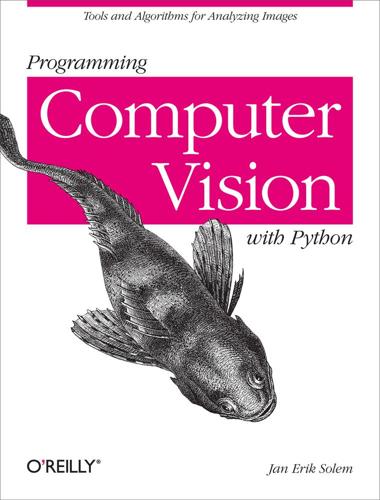
Programming Computer Vision with Python
by
Jan Erik Solem
Published 26 Jun 2012
Symbols 3D plotting, A Sample Data Set 3D reconstruction, 3D Reconstruction Example 4-neighborhood, 9.1 Graph Cuts A affine transformation, 3.1 Homographies affine warping, Affine Transformations affinity matrix, Clustering Images agglomerative clustering, 6.2 Hierarchical Clustering alpha map, Image in Image AR, 4.3 Pose Estimation from Planes and Markers array, Interactive Annotation array slicing, Array Image Representation aspect ratio, 4.1 The Pin-Hole Camera Model association, 9.2 Segmentation Using Clustering augmented reality, 4.3 Pose Estimation from Planes and Markers B bag-of-visual-words, Inspiration from Text Mining—The Vector Space Model bag-of-word representation, Searching Images baseline, Bundle adjustment Bayes classifier, Classifying Images—Hand Gesture Recognition binary image, Morphology—Counting Objects blurring, Using the Pickle Module bundle adustment, Bundle adjustment C calibration matrix, 4.1 The Pin-Hole Camera Model camera calibration, Computing the Camera Center camera center, Camera Models and Augmented Reality camera matrix, Camera Models and Augmented Reality camera model, Camera Models and Augmented Reality camera pose estimation, 4.3 Pose Estimation from Planes and Markers camera resectioning, Triangulation CBIR, Searching Images Chan-Vese segmentation, 9.3 Variational Methods characteristic functions, 9.3 Variational Methods CherryPy, 7.6 Building Demos and Web Applications, Image Search Demo class centroids, Clustering Images classifying images, Classifying Image Content clustering images, Clustering Images, Clustering Images complete linking, 6.2 Hierarchical Clustering confusion matrix, Classifying Images—Hand Gesture Recognition content-based image retrieval, Searching Images convex combination, Image in Image corner detection, Local Image Descriptors correlation, 2.1 Harris Corner Detector corresponding points, 2.1 Harris Corner Detector cpickle, PCA of Images cross-correlation, Finding Corresponding Points Between Images cumulative distribution function, Graylevel Transforms cv, OpenCV, 10.4 Tracking cv2, OpenCV D de-noising, Reading and writing .mat files Delaunay triangulation, Piecewise Affine Warping dendrogram, Clustering Images dense depth reconstruction, Bundle adjustment dense image features, A Simple 2D Example dense SIFT, A Simple 2D Example descriptor, 2.1 Harris Corner Detector difference-of-Gaussian, Finding Corresponding Points Between Images digit classification, Hand Gesture Recognition Again direct linear transformation, 3.1 Homographies directed graph, Image Segmentation distance matrix, Clustering Images E Edmonds-Karp algorithm, 9.1 Graph Cuts eight point algorithm, Plotting 3D Data with Matplotlib epipolar constraint, 5.1 Epipolar Geometry epipolar geometry, Multiple View Geometry epipolar line, 5.1 Epipolar Geometry epipole, 5.1 Epipolar Geometry essential matrix, The calibrated case—metric reconstruction F factorization, Factoring the Camera Matrix feature matches, Finding Corresponding Points Between Images feature matching, Matching Descriptors flood fill, Displaying Images and Results focal length, 4.1 The Pin-Hole Camera Model fundamental matrix, 5.1 Epipolar Geometry fundamental matrix estimation, 5.3 Multiple View Reconstruction G Gaussian blurring, Using the Pickle Module Gaussian derivative filters, Image Derivatives Gaussian distributions, 8.2 Bayes Classifier gesture recognition, Dense SIFT as Image Feature GL_MODELVIEW, PyGame and PyOpenGL GL_PROJECTION, PyGame and PyOpenGL Grab Cut dataset, Segmentation with User Input gradient angle, Blurring Images gradient magnitude, Blurring Images graph, Image Segmentation graph cut, Image Segmentation GraphViz, Matching Using Local Descriptors graylevel transforms, Array Image Representation H Harris corner detection, Local Image Descriptors Harris matrix, Local Image Descriptors hierarchical clustering, 6.2 Hierarchical Clustering hierarchical k-means, 6.3 Spectral Clustering histogram equalization, Graylevel Transforms Histogram of Oriented Gradients, A Simple 2D Example HOG, A Simple 2D Example homogeneous coordinates, Image to Image Mappings homography, Image to Image Mappings homography estimation, 3.1 Homographies Hough transform, Inpainting I Image, Basic Image Handling and Processing image contours, Plotting Images, Points, and Lines image gradient, Blurring Images image graph, 9.1 Graph Cuts image histograms, Plotting Images, Points, and Lines image patch, 2.1 Harris Corner Detector image plane, Camera Models and Augmented Reality image registration, Piecewise Affine Warping image retrieval, Searching Images image search demo, 7.6 Building Demos and Web Applications image segmentation, Visualizing the Images on Principal Components, Image Segmentation image thumbnails, Convert Images to Another Format ImageDraw, Clustering Images inliers, 3.3 Creating Panoramas inpainting, Using generators integral image, Color Spaces interest point descriptor, 2.1 Harris Corner Detector interest points, Local Image Descriptors inverse depth, 4.1 The Pin-Hole Camera Model inverse document frequency, Inspiration from Text Mining—The Vector Space Model io, Useful SciPy Modules iso-contours, Plotting Images, Points, and Lines J JSON, Downloading Geotagged Images from Panoramio K k-means, Clustering Images k-nearest neighbor classifier, Classifying Image Content kernel functions, 8.3 Support Vector Machines kNN, Classifying Image Content L Laplacian matrix, 6.3 Spectral Clustering least squares triangulation, Triangulation LibSVM, 8.3 Support Vector Machines local descriptors, Local Image Descriptors Lucas-Kanade tracking algorithm, Optical Flow M marking points, Interactive Annotation mathematical morphology, Morphology—Counting Objects Matplotlib, Create Thumbnails maximum flow (max flow), 9.1 Graph Cuts measurements, Morphology—Counting Objects, Extracting Cells and Recognizing Characters metric reconstruction, 5.1 Epipolar Geometry, Computing the Camera Matrix from a Fundamental Matrix minidom, Registering Images minimum cut (min cut), 9.1 Graph Cuts misc, Useful SciPy Modules morphology, Morphology—Counting Objects, Morphology—Counting Objects, Exercises mplot3d, A Sample Data Set, 3D Reconstruction Example multi-class SVM, Selecting Features multi-dimensional arrays, Interactive Annotation multi-dimensional histograms, Clustering Images multiple view geometry, Multiple View Geometry N naive Bayes classifier, Classifying Images—Hand Gesture Recognition ndimage, Affine Transformations ndimage.filters, Computing Disparity Maps normalized cross-correlation, Finding Corresponding Points Between Images normalized cut, 9.2 Segmentation Using Clustering NumPy, Interactive Annotation O objloader, Tying It All Together OCR, Hand Gesture Recognition Again OpenCV, Chapter Overview, OpenCV OpenGL, PyGame and PyOpenGL OpenGL projection matrix, From Camera Matrix to OpenGL Format optic flow, 10.4 Tracking optical axis, Camera Models and Augmented Reality optical center, The Camera Matrix optical character recognition, Hand Gesture Recognition Again optical flow, 10.4 Tracking optical flow equation, 10.4 Tracking outliers, 3.3 Creating Panoramas overfitting, Exercises P panograph, Exercises panorama, 3.3 Creating Panoramas PCA, PCA of Images pickle, PCA of Images, The SciPy Clustering Package, Creating a Vocabulary pickling, PCA of Images piecewise affine warping, Image in Image piecewise constant image model, 9.3 Variational Methods PIL, Basic Image Handling and Processing pin-hole camera, Camera Models and Augmented Reality plane sweeping, 5.4 Stereo Images plot formatting, Plotting Images, Points, and Lines plotting, Create Thumbnails point correspondence, 2.1 Harris Corner Detector pose estimation, 4.3 Pose Estimation from Planes and Markers Prewitt filters, Blurring Images Principal Component Analysis, PCA of Images, 8.2 Bayes Classifier principal point, The Camera Matrix projection, Camera Models and Augmented Reality projection matrix, Camera Models and Augmented Reality projective camera, Camera Models and Augmented Reality projective transformation, Image to Image Mappings pydot, Matching Using Local Descriptors pygame, PyGame and PyOpenGL pygame.image, PyGame and PyOpenGL pygame.locals, PyGame and PyOpenGL Pylab, Create Thumbnails PyOpenGL, PyGame and PyOpenGL pyplot, Exercises pysqlite, Setting Up the Database pysqlite2, Setting Up the Database Python Imaging Library, Basic Image Handling and Processing python-graph, 9.1 Graph Cuts Q quad, From Camera Matrix to OpenGL Format query with image, Querying with an Image quotient image, Exercises R radial basis functions, 8.3 Support Vector Machines ranking using homographies, 7.5 Ranking Results Using Geometry RANSAC, 3.3 Creating Panoramas, 5.3 Multiple View Reconstruction rectified image pair, Bundle adjustment rectifying images, Extracting Cells and Recognizing Characters registration, Piecewise Affine Warping rigid transformation, 3.1 Homographies robust homography estimation, RANSAC ROF, Reading and writing .mat files, 9.3 Variational Methods RQ-factorization, Factoring the Camera Matrix Rudin-Osher-Fatemi de-noising model, Reading and writing .mat files S Scale-Invariant Feature Transform, Finding Corresponding Points Between Images scikit.learn, Exercises Scipy, Using the Pickle Module scipy.cluster.vq, The SciPy Clustering Package, Clustering Images scipy.io, Useful SciPy Modules, Reading and writing .mat files scipy.misc, Reading and writing .mat files scipy.ndimage, Blurring Images, Morphology—Counting Objects, Extracting Cells and Recognizing Characters, Rectifying Images, Exercises scipy.ndimage.filters, Blurring Images, Blurring Images, 2.1 Harris Corner Detector scipy.sparse, Exercises searching images, Searching Images, Adding Images segmentation, Image Segmentation self-calibration, Bundle adjustment separating hyperplane, Using PCA to Reduce Dimensions SfM, The calibrated case—metric reconstruction SIFT, Finding Corresponding Points Between Images similarity matrix, Clustering Images similarity transformation, 3.1 Homographies similarity tree, 6.2 Hierarchical Clustering simplejson, Downloading Geotagged Images from Panoramio, Downloading Geotagged Images from Panoramio single linking, 6.2 Hierarchical Clustering slicing, Array Image Representation Sobel filters, Blurring Images spectral clustering, Clustering Images, 9.2 Segmentation Using Clustering SQLite, Setting Up the Database SSD, Finding Corresponding Points Between Images stereo imaging, Bundle adjustment stereo reconstruction, Bundle adjustment stereo rig, Bundle adjustment stereo vision, Bundle adjustment stitching images, Robust Homography Estimation stop words, Inspiration from Text Mining—The Vector Space Model structure from motion, The calibrated case—metric reconstruction structuring element, Morphology—Counting Objects Sudoku reader, Hand Gesture Recognition Again sum of squared differences, Finding Corresponding Points Between Images Support Vector Machines, Using PCA to Reduce Dimensions support vectors, 8.3 Support Vector Machines SVM, Using PCA to Reduce Dimensions T term frequency, Inspiration from Text Mining—The Vector Space Model term frequency–inverse document frequency, Inspiration from Text Mining—The Vector Space Model text mining, Searching Images tf-idf weighting, Inspiration from Text Mining—The Vector Space Model total variation, Reading and writing .mat files total within-class variance, Clustering Images tracking, 10.4 Tracking triangulation, 5.2 Computing with Cameras and 3D Structure U unpickling, PCA of Images unsharp masking, 1.5 Advanced Example: Image De-Noising urllib, Downloading Geotagged Images from Panoramio V variational methods, 9.3 Variational Methods variational problems, 9.3 Variational Methods vector quantization, The SciPy Clustering Package vector space model, Searching Images vertical field of view, From Camera Matrix to OpenGL Format video, Displaying Images and Results visual codebook, Inspiration from Text Mining—The Vector Space Model visual vocabulary, Inspiration from Text Mining—The Vector Space Model visual words, Inspiration from Text Mining—The Vector Space Model visualizing image distribution, Visualizing the Images on Principal Components VLFeat, Interest Points W warping, Affine Transformations watershed, Inpainting web applications, 7.6 Building Demos and Web Applications webcam, Optical Flow word index, Setting Up the Database X XML, Registering Images xml.dom, Registering Images About the Author Jan Erik Solem is a Python enthusiast and a computer vision researcher and entrepreneur.
…
To be able to reuse these computations for future examples, we can save the camera matrices using Pickle: import pickle with open('ar_camera.pkl','w') as f: pickle.dump(K,f) pickle.dump(dot(linalg.inv(K),cam2.P),f) Now we have seen how to compute the camera matrix given a planar scene object. We combined feature matching with homographies and camera calibration to produce a simple example of placing a cube in an image. With camera pose estimation, we now have the building blocks in place for creating simple augmented reality applications. 4.4 Augmented Reality Augmented reality (AR) is a collective term for placing objects and information on top of image data. The classic example is placing a 3D computer graphics model so that it looks like it belongs in the scene, and moves naturally with the camera motion in the case of video. Given an image with a marker plane as in the section above, we can compute the camera’s position and pose and use that to place computer graphics models so that they are rendered correctly.
…
See http://jk-keller.com/daily-photo/ for more details. Chapter 4. Camera Models and Augmented Reality In this chapter, we will look at modeling cameras and how to effectively use such models. In the previous chapter, we covered image to image mappings and transforms. To handle mappings between 3D and images, the projection properties of the camera generating the image needs to be part of the mapping. Here we show how to determine camera properties and how to use image projections for applications like augmented reality. In the next chapter, we will use the camera model to look at applications with multiple views and mappings between them. 4.1 The Pin-Hole Camera Model The pin-hole camera model (or sometimes projective camera model) is a widely used camera model in computer vision.
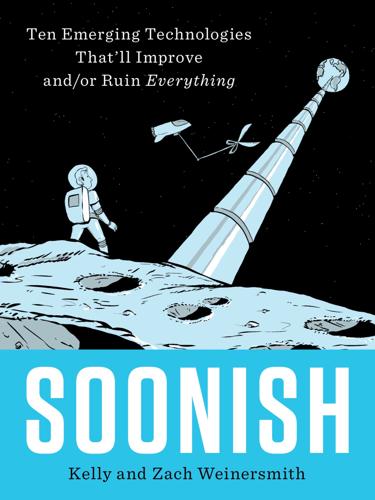
Soonish: Ten Emerging Technologies That'll Improve And/or Ruin Everything
by
Kelly Weinersmith
and
Zach Weinersmith
Published 16 Oct 2017
Fisher also throws the best children’s birthday parties in history, which include Harry Potter–style AR sorting hats, fairies soaring over stones in the backyard, and fairy dust that would settle into the children’s hands. She notes that the children’s imagination probably didn’t require augmentation though: “I don’t actually think small kids need augmented reality as much as we need augmented reality to think more like small kids again. I think that there are these amazing, joyful practices we could have. On that small level I think individually it could make our lives awesome.” A few people have tried using augmented reality for therapeutic reasons. Our favorite experimental therapy was by Dr. Cristina Botella, who had the idea that you could cure phobias using AR. See, one of the best ways to get over an irrational fear is repeated exposure to it.
…
For simplicity, let’s imagine you are wearing an augmented reality headset that projects images into your eye. The headset’s cameras see the QR code and determine two things: (1) that its pattern codes for “put a vase here,” and (2) that you’re looking at the QR code from a particular angle. As you move, the headset detects the changing orientation of the QR code and adjusts the vase accordingly. If it works right, you perceive a vase sitting on your table, even if you walk around or jump up and down. In other words, the fiducial marker serves as a simple bridge between augmented reality and actual reality. Current AR research has moved beyond traditional fiducial markers.
…
So scientists are working on other approaches to simplify the process. Dr. Caitlin Fisher of the Augmented Reality Lab at York University suggested that there might be an easier way to go, at least for some applications. “Artists,” she says, “use mixed reality that sidesteps the registration problem. You can have images that might just float or be in the sky or tiny images on the ground. The registration problem is an urgent one, but it’s not necessary to overcome it for all good augmented reality experiences. . . . I think one of the reasons you find a lot of the early projects involve ghosts or spirits is because you don’t have to have them perfectly registered in the real world but you can still have this very cool experience.
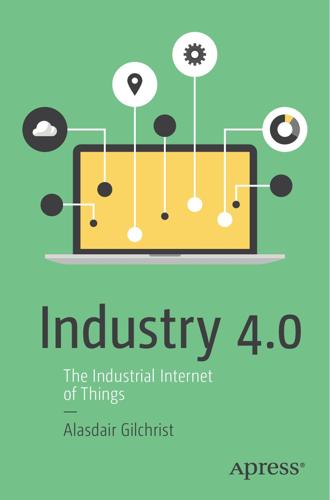
Industry 4.0: The Industrial Internet of Things
by
Alasdair Gilchrist
Published 27 Jun 2016
These are workers employed to collect individual stock items from a list. It is not very efficient and they have the same problems as the forklift drivers, finding their way around the warehouse and locating the stock. However, help is at hand through augmented reality. The most commonly known augmented reality device is Google Glass; however, other manufacturers produce products with AR capabilities. Where augmented reality or, for the sake of explanation, Google Glass, comes into logistics is that it is extremely beneficial for human stock pickers. Google Glass can show on the heads up and hand free display the pick list, but can also show additional information such as location of the item and give directions on how to get there.
…
Some absolutely revel in high technology as can be seen though the success of stores deploying augmented reality. In these stores, retailers have gone a step beyond inventory control and NFC card payment retailers and have provided a virtual magic mirror. Augmented reality is a new trend in retail as it provides a way for customers to evaluate products interactively and compare them to other similar products or consider their suitability to the environment they would be situated. Examples of augmented reality are the latest IKEA catalogue, a mobile app that enables customers to virtually simulate having the items of furniture in their real living room.
…
Where items are practically identical to the eye, for example a computer chip, or integrated circuit, hands-free, automatic barcode scan ensures correct item identification. Furthermore, augmented reality accelerates training, and since the stock pickers are often seasonal temporary workers, this is very important. The technology also allows for hands-free use, which leads to greater productivity, as workers can find the items far more quickly, which greatly increases efficiency while eliminating pick errors. Augmented reality glasses are similarly suited to freight loading whereby forklift drivers can do away with the fright load sheet, which tells them the order each pallet has to be loaded onto the truck.

The Future Is Faster Than You Think: How Converging Technologies Are Transforming Business, Industries, and Our Lives
by
Peter H. Diamandis
and
Steven Kotler
Published 28 Jan 2020
eMarketer study: Victoria Petrook, “Virtual and Augmented Reality Users 2019,” eMarketer, March 27, 2019. See: https://www.emarketer.com/content/virtual-and-augmented-reality-users-2019. See also: “Forecast for the Number of Active Virtual Reality Users Worldwide from 2014 to 2018 (in Millions),” Statista, https://www.statista.com/statistics/426469/active-virtual-reality-users-worldwide/. VR market around $35 billion or so: “Profiles in Innovation: Virtual and Augmented Reality,” January 13, 2016.GoldmanSachs.com, See: https://www.goldmansachs.com/insights/pages/technology-driving-innovation-folder/virtual-and-augmented-reality/report.pdf.
…
coming out with an AR developers suite that lets anyone design apps for their platform: You can find details about Apple’s AR development suite here: https://developer.apple.com/augmented-reality/. purchasing Akonia Holographics: Lucas Matney, “Apple Buys Denver Startup Building Waveguide Lenses for AR Glasses,” TechCrunch, August 29, 2018. eighteen hundred different AR startups: You can run your own search with this URL: https://angel.co/companies?markets[]=Augmented+Reality. a market in excess of $133 billion: “Global Augmented Reality (Ar) Market Will Reach USD 133.78 Billion by 2021,” Zion Market Research, November 24, 2016. $100 will get you an entry-level Leap Motion headset: Jeremy Horwitz, “Leap Motion Shows Crazy-Looking $100 North Star AR Headset with Hand Tracking,” Venture Beat, April 9, 2018
…
In BOLD, we tell the story of a different impossible: how entrepreneurs have been harnessing these same technologies to build world-changing businesses in near record time, and providing a how-to playbook for anyone interested in doing the same. In this, our third installment, we expand on these ideas, examining what happens when independent lines of accelerating technology (artificial intelligence, for example) converge with other independent lines of accelerating technology (augmented reality, for example). Sure, AI is powerful. Augmented reality is too. But it’s their convergence that is reinventing retail, advertising, entertainment, and education—just to name a few of the major transformations still ahead. As we’ll see in the pages to come, these convergences are happening at an ever-increasing rate. This has turbo-boosted both the rate of change in the world and the scale of that change.

Designing Search: UX Strategies for Ecommerce Success
by
Greg Nudelman
and
Pabini Gabriel-Petit
Published 8 May 2011
Attentive readers of Chapter 14 can readily recognize an application of augmented reality. On the larger tablet screen, augmented reality can come into its own, offering both professionals and amateurs a great segue into context-rich search and exploration. Note—Note that until recently, one important feature that’s missing from the current Apple iPad was the on-board camera. However, with the release of the iPad 2 with its dual cameras, powerful augmented reality apps that enable users to touch and interact directly with augmented-reality objects—in the same way Paul puts a loveseat directly into an augmented projection of the room—will be only a matter of time.
…
Companies like Arrayent, Inc. have already developed practical, low-cost solutions that connect everyday things like thermostats to mobile phones and tablets. Augmented Reality and Mobile Near-Field Computing Mobile devices with the on-board camera introduce another interesting possibility for navigating real space in real time: augmented reality. Figure 14-10 shows Yelp Monocle’s view of the San Francisco’s financial district. Figure 14-10: Augmented Reality using Yelp iPhone Application Monocle feature The Monocle projects the real-time image captured by the iPhone’s camera overlaid with the tiles showing nearby restaurants and points of interest that correspond to the particular GPS location and orientation as determined by the iPhone’s compass direction.
…
According to a recent Design4Mobile 2010 report from mobile form guru Luke Wroblewski, users of the Yelp Monocle feature tend to use Yelp 40% more than people not using Monocle. Although Monocle is still somewhat limited because of the tiny iPhone screen, you can’t help but get excited by the enormous potential of near-field computing. With the augmented reality industry working on adding facial recognition and RFID tagging, you will soon be able to obtain near-instant information about people, landmarks, objects, and just about anything else of interest. However, to fully exploit augmented reality, you might need a screen that is slightly larger than that of a typical smart phone. Note—It is hard to see all the richness of the real world additionally augmented with enormous amounts of information already available, all on a tiny screen that severely limits your filtering options.

A New History of the Future in 100 Objects: A Fiction
by
Adrian Hon
Published 5 Oct 2020
There were technical limitations to avatars that didn’t directly map onto human skeletons and movements, and besides, it was generally seen as being impolite to take up too much space by becoming a centaur or dragon, even in augmented reality. Yet there were still plenty of ways to attract attention with blink avatars, providing you picked up the latest fashions quickly enough. But this kurta is not an avatar. It’s not even a piece of clothing for an avatar. It is, in fact, a physical object. And that takes us to the next phase of this fashion’s development. In the ’20s, augmented reality was delivered through heads-up display glasses, and the visual technology meant that the avatars displayed on top of their human wearers looked better or better and worse when combined with certain types of real clothing.
…
It’s a deceptively simple choice about the design of Glass Networks’s information ecosystem, but understanding it requires learning more about Glass Networks and its influential augmented reality protocol. In the late ’20s, as heads-up displays transformed from creepy and fragile gadgets into cheap and essential tools, it became common for people, organizations, and businesses to interact with each other via virtual or augmented reality interfaces. At first, these interfaces usually had some grounding in physical reality, such as a shop overlaying prices on its walls and windows simply because that was more familiar to users.
…
A closer examination, however, reveals that they contain holographic waveguide displays embedded into the frames, providing the wearer with a virtual 3-D image. The arms of the glasses hold a modest amount of computing power along with a short-range radio antenna to connect to a nearby smartphone. On their own, the glasses aren’t good for that much. The model I have here can’t even tell where I’m looking, preventing any decent augmented reality applications. What’s more, the image resolution is far too low for any real work to be done. They were cheap toys. I also have a necklace here, although it’s so short that some might call it a choker. It’s very light, made of a silvery metal, and has an unusually wide clasp around the back.

The Filter Bubble: What the Internet Is Hiding From You
by
Eli Pariser
Published 11 May 2011
One trial, according to the Economist, gave users of an AugCog device a 100 percent improvement in recall and a 500 percent increase in working memory. And if it sounds far-fetched, just remember: The folks at DARPA also helped invent the Internet. Augmented reality is a booming field, and Gary Hayes, a personalization and augmented-reality expert in Australia, sees at least sixteen different ways it could be used to provide services and make money. In his vision, guide companies could offer augmented reality tours, in which information about buildings, museum artifacts, and streets is superimposed on the environs. Shoppers could use phone apps to immediately get readouts on products they’re interested in—including what the objects cost elsewhere.
…
Shoppers could use phone apps to immediately get readouts on products they’re interested in—including what the objects cost elsewhere. (Amazon.com already provides a rudimentary version of this service.) Augmented reality games could layer clues into real-world environments. Augmented-reality tech provides value, but it also provides an opportunity to reach people with new attention-getting forms of advertising. For a price, digital sportscasts are already capable of layering corporate logos onto football fields. But this new technology offers the opportunity to do that in a personalized way in the real world: You turn on the app to, say, help find a friend in a crowd, and projected onto a nearby building is a giant Coke ad featuring your face and your name.
…
_r=1. 208 AugCog, which uses cognitive neuroscience: Augmented Cognition International Society Web site, accessed Dec. 17, 2010, www.augmentedcognition.org. 209 500 percent increase in working memory: “Computers That Read Your Mind,” Economist, Sept. 21, 2006, accessed Dec. 17, 2010, www.economist.com/node/7904258?story_id=7904258. 209 at least sixteen different ways: Gary Hayes, “16 Top Augmented Reality Business Models,” Personalize Media (Gary Hayes’s blog), Sept. 14, 2009, accessed Dec. 17, 2010, www.personalizemedia.com/16-top-augmented-reality-business-models. 210 solve problems for people: Chris Coyne, interview with author, New York, NY, Oct. 6, 2010. 211 “reality” is “one of the few words”: Vladimir Nabokov, Lolita (New York: Random House, 1997), 312. 213 powering the marketing campaigns: David Wright et al., Safeguards in a World of Ambient Intelligence (London: Springer, 2008), 66, accessed through Google eBooks, Feb. 8, 2011. 214 “machines make more of their decisions”: Bill Joy, “Why the Future Doesn’t Need Us,” Wired (Apr. 2000) accessed Dec. 17, 2010, www.wired.com/wired/archive/8.04/joy.html.

Augmented: Life in the Smart Lane
by
Brett King
Published 5 May 2016
Walter Robb, CEO of Whole Foods The 2.4 million tickets sold for the 2015 Rugby World Cup featured augmented reality content to bring the experience alive for fans, both in the run-up to the competition and on the day of the games. Using an augmented reality app and a mobile phone or tablet, tickets could be scanned to reveal exclusive behind-the-scenes material hosted and delivered by Rugby World Cup 2003 winners Jonny Wilkinson, Lawrence Dallaglio and Will Greenwood. Managing Director of England Rugby 2015 Stephen Brown hailed it as a sporting first: “using augmented reality technology as part of the ticket design enables fans to engage with the tournament through interactive content, which is a really exciting piece of activation.”12 Of course, printed tickets are not long for this world as we’re already seeing with airline boarding passes, bus tickets and so forth.
…
We can have an app on our phone, but the display and notifications associated with that app can now be instantiated on our smartwatch or smart glasses. It won’t be long before our office desk, our living room wall, our car dashboard and other environments all have embedded screens that enable interactions. We will overlay the real world with data, insights and context using augmented reality (AR) smart glasses and contact lenses too. In the apps era, most businesses such as banks and airlines went for the bundling of increasing functionality, but as more and more capability is added, the propensity for “engagement rot”, as author Jared Spool calls it, becomes very high. The problem is that you cannot retain low friction19 user experiences when you have an abundance of features; essentially you get to a point where the features create complexity and confusion.
…
Whether from Continuum, Iron Man, Batman, Deus Ex or the modern-day F22 Raptor fighter jet, the concept of an augmented, head-up display (HUD)12 vision has been a staple of science fiction and military aircraft for more than 50 years. When Google Glass launched in 2013, it launched to great media fanfare.13 Glass was considered the next big leap in both wearable technologies and augmented reality (AR), but as with all such leaps in technology it was met with either unyielding passion or mild derision. In media context, however, Google’s first head-up display wearable fit neither the traditional definition of HUD nor immersive AR. It is clearly just a first step in the evolution of enhanced vision overlay.

Radical Technologies: The Design of Everyday Life
by
Adam Greenfield
Published 29 May 2017
In its first days, Pokémon Go lured players to a wide array of wildly inappropriate locations like the National September 11th Memorial and Arlington National Cemetery, where playing any sort of game can only be understood as an act of disrespect.2 The promise of capturing rare monsters even drew people to places where simply wandering through would place them at terrible risk, like the Truce Village at Panmunjom, in the heavily fortified Demilitarized Zone between North and South Korea.3 And I doubt that even the most cynical observer ever imagined that a developer would be so irresponsible as to enable game-play superimposed onto the barracks and crematoria of the Auschwitz death camp, but this is just what Pokémon Go did during its first week live.4 (All of these sites were swiftly deleted from the game by developer Niantic.) Theorists had discussed the implications of augmented reality for years, and in its first breakout hit just about all of them immediately came to pass: the reality shear, the dissonance of the mundane draped in a virtual shroud of whimsical otherness, the things that happen when different groups of people are presented with varying versions of what had always been a shared baseline environment. If AR is to be a mode through which we broadly experience the everyday, these are the issues it will compel us to contend with. Augmented reality, and its close cousin virtual reality (VR), are a little different from the other technologies considered in this book.
…
“The Future of Firefighting - A HMD-AR UI Concept for First Responders,” August 18, 2011, YouTube.com. 7.Thomas Grüter, Martina Grüter and Claus-Christian Carbon, “Neural and Genetic Foundations of Face Recognition and Prosopagnosia,” Journal of Neuropsychology, Volume 2, Issue 1, March 2008: 79–97. 8.For early work toward this end, see Thad Starner et al., “Augmented Reality Through Wearable Computing,” MIT Media Lab, 1997, cc.gatech.edu/~thad/p/journal/augmented-reality-through-wearable-computing.pdf. The overlay of a blinking outline or contour used as an identification cue has long been a staple of science-fictional information displays, showing up in pop culture as far back as the late 1960s. The earliest appearance I can locate is 2001: A Space Odyssey (1968), in which the navigational displays of both the Orion III spaceplane and the exploration vessel Discovery relied heavily on the trope—this, presumably, because in the fictional universe of the film they were produced by the same contractor, IBM.
…
Classification: LCC QA76.5915 .G745 2017 | DDC 004—dc23 LC record available at https://lccn.loc.gov/2017011127 Typeset in Sabon by MJ & N Gavan, Truro, Cornwall Printed in the UK by CPI Mackays, UK For N., the light on your door to show that you’re home. One has to become a cybernetician to remain a humanist. Peter Sloterdijk Contents Introduction: Paris year zero 1.Smartphone: The networking of the self 2.The internet of things: A planetary mesh of perception and response 3.Augmented reality: An interactive overlay on the world 4.Digital fabrication: Towards a political economy of matter 5.Cryptocurrency: The computational guarantee of value 6.Blockchain beyond Bitcoin: A trellis for posthuman institutions 7.Automation: The annihilation of work 8.Machine learning: The algorithmic production of knowledge 9.Artificial intelligence: The eclipse of human discretion 10.Radical technologies: The design of everyday life Conclusion: Of tetrapods and tactics—radical technologies and everyday life Acknowledgements Notes Index Introduction Paris year zero It’s a few moments before six in Paris, on a damp evening in early spring.

The Long History of the Future: Why Tomorrow's Technology Still Isn't Here
by
Nicole Kobie
Published 3 Jul 2024
After acquiring Oculus, Meta, the company formerly known as Facebook, has been churning out devices ranging from a cheaper VR version to smart glasses, with a high-end augmented-reality headset, the Quest Pro, selling for $1,499. Meta, according to The Verge, plans to release more fully featured smart AR glasses in 2027, after a decade in development. * * * There’s one easy way to judge if a technology is ready for the market: does Apple make one? Apple has been working on an augmented reality headset since 2015 or so, indicated by a series of acquisitions and hires, including German AR firm Metaio in 2015 and Canadian headset maker Vrvana in 2017, as well as former NASA employee Jeff Norris in 2017.
…
WIRED, September 6, 2019. https://biturl.top/nueuQ3 Index 1X Technologies - EVE and NEO here 510 Systems here A* algorithm here Abovitz, Rony here Ackland, Nigel here activism here, here ADALINE and MADALINE neural networks here Advanced Micro Devices (AMD) here Advanced Research Projects Agency Network (ARPANET) here, here Al Jaber, Sultan here Aldebaran Robotics here Alderson, Samuel W. here Alef Aeronautics here Allende, Salvador here Alphabet here, here, here Sidewalk Labs here, here see also Google Alphago algorithm, DeepMind here Altman, Sam here Amazon here, here, here American Institute Fair (1867) here American Research and Development Corporation (ARDC) here American Society of Automotive Engineers (SAE) here Anderson, Sterling here Anthony’s Robots here Antonov, Michael here Apple here, here, here, here, here, here, here, here, here augmented reality headsets here, here APT-E (Advanced Passenger Train) project, British Rail here Arcadio (aka Stelarc), Stelios here Argo AI here ARPA see DARPA (Defense Advanced Research Projects Agency) ARPANET (Advanced Research Projects Agency Network) here, here artificial intelligence (AI) here, here, here, here, here, here, here Alan Turing here Alphabet/Google here, here, here, here, here, here, here, here ‘Blocks World’ here chess challenges here, here, here, here computer vision here concerns and misuse here, here, here, here, here, here, here, here data resources and ImageNet here deep and machine learning here, here, here, here, here ‘expert systems’ and rules based models here, here, here ‘general’ intelligence here, here, here, here, here graphics processing units (GPUs) here John McCarthy here, here, here, here, here, here, here large language models (LLM) here Lighthill report (1973) and opposition here, here narrow AI here, here, here natural language processing (NLP) here, here neural networks here, here, here, here convolutional here OpenAI and ChatGPT here, here, here, here, here, here, here Perceptron model here pre-1970s here, here SRI Shakey robot here, here strong vs weak here, here symbolic here, here Timnit Gebru et al AI paper controversy here, here Asimo robot, Honda here ASKA here Asseily, Alex here Atari here, here augmented reality (AR) and virtual reality (VR) here, here Apple here, here, here Atari here, here computer graphics quality here, here development costs here Eric Howlett and the LEEP system here, here Facebook and Meta here, here, here, here Google Glass smart spectacles here, here, here Ivan Sutherland VR headsets here, here Jaron Lanier here, here, here Jonathan Waldern here metaverse the here Microsoft HoloLens here motion sickness here, here, here, here, here, here, here NASA here, here, here, here Nintendo and Virtual Boy here Palmer Luckey and Oculus Rift headsets here, here, here, here PTSD treatment here Rony Abovitz and Magic Leap here Samsung Gear VR here, here Sebastian Thrun here Sega VR here, here Snap and Vergence Labs here Sony PlayStation VR here Virtual Visual Environment Display (VIVED) here VPL DataGlove and EyePhone here, here, here, here Aurora here, here Aviauto roadable aircraft here Babbage, Charles here Bagnell, Drew here Baidu here Bakken, Earl here, here Balsillie, Jim here Banavar, Guru here banking industry here, here Barcelona, Spain here Bard LLM, Google here, here BASIC (Beginners’ All-purpose Symbolic Instruction Code) here battery technology here, here, here Beach, Alfred here, here Becker, Allen here Behringer, Reinhold here, here, here, here, here, here, here Bel Geddes, Norman here, here, here, here Bell Helicopter here Labs here, here Nexus here, here Bender, Emily here Bengio, Yoshua here Benz, Carl here Berlichingen, Götz von here Berners-Lee, Tim here Bertin, Jean here Bezos, Jeff here bionic technology here Blackrock Neurotech here ‘Blocks World’ AI development here Blomfield, Tom here ‘Blue Cruise’ automation system, Ford here Boeing here, here, here Bombe and Colossus decrypting machines here, here Boring Company here, here Boston Dynamics here, here, here, here, here, here, here, here Atlas robot here, here, here BigDog robot here, here RHex here Sandflea here Spot here, here, here, here Stretch here, here Bostrom, Nick here BrainGate/Utah Array implants here, here Branson, Richard here Bria, Francesca here Brin, Sergey here British army 2222 British Medical Journal here British Rail here, here Brooks, Harry here Brooks, Rodney here Brunel, Isambard Kingdom here Bryan, Leland here Buchanan, Bruce here Buolamwini, Joy here, here, here Burdett, Ricky here Canella, Judge John here carbon emissions here, here, here, here Cardboard, Google here Carmack, John here Carnegie Mellon University (CMU) here, here, here, here, here, here Carson, Johnny here Catalyst Research Corporation here Catanzaro, Bryan here CAVForth project, Forth Bridge here Cavoukian, Ann here CeBIT (2010) trade show here Central Intelligence Agency (CIA) here Cereproc here Chambless, Edgar here Chan Wolf, Helen here, here ChatGPT here, here, here, here Cisco here, here Claydon, Tony here Clegg, Samuel here, here climate crisis here, here Clinton Foundation here Clynes, Manfred here cochlear implants here Commodore here Convair (Consolidated Vultee Aircraft) here, here convolutional neural networks here Cook, Tim here Cornelius, Nancy here COVID-19 global pandemic here, here, here, here Cray 1 supercomputer here Crevier, Daniel here, here, here Crow, Steven here Croydon Times here Cruise, GM here, here, here, here, here Cubitt, Sir William here Cummings, Bob here Curtiss, Glenn here Cyberjaya, Malaysia here cybernetics here cyborgs and brain computer interfaces (BCIs) here BCIs here Blackrock Neurotech here Elon Musk and Neuralink here, here, here, here, here g.tec intendiX interface here, here Kevin Warwick here Mark Zuckerberg and Facebook here, here, here, here medical applications here, here, here, here, here, here, here, here Neil Harbisson and colourblindness here origins of the term ‘cyborg’ here pacemakers here Peter Scott-Morgan and ALS treatment here prosthetics and bionic technology here RFID chips here, here, here Utah Array/BrainGate implant here, here William House and cochlear implants here Cyc AGI here da Vinci, Leonardo here, here Daimler-Benz/Mercedes-Benz here, here Dally, Bill here DARPA (Defense Advanced Research Projects Agency) here, here, here, here, here, here, here, here, here, here, here, here, here Grand Challenge here, here DataGloves, VPL Research here, here Davis, Ruth here Dean, Jeffrey here DEC here Deep Blue AI here, here DeepMind, Google here, here, here DeGray, Dennis here Dendral algorithm here Desforges, Abbé here Devol, George here Dickmanns, Ernst here, here, here, here, here Dietrich, Carl here Difference Engine here Digital Equipment Corporation (DEC) here Dirks, Susanne here diversity, lack of tech industry here Djourno, Dr André here DNNresearch here, here Doctoroff, Dan here, here, here Dolgov, Dmitri here Dreyfuss, Henry here driverless cars/technology here, here, here, here 4D system here Anthony Levandowski here, here, here Anthony’s Robots pizza delivery here Argo AI here artificial intelligence (AI) here, here, here autonomy spectrum here, here current motivation for innovation here DARPA and DARPA Grand Challenge here, here Ernst Dickmanns and VaMoRs here, here, here fatalities here, here, here, here General Motors and Cruise (RCA) here, here, here, here global cost of development here Google/Alphabet and Waymo here, here, here, here, here, here, here, here, here, here motorways here, here, here, here, here NavLab 5 System and RALPH here ‘no hands across America’ trip here Norman Bel Geddes here Prometheus project here public transport here, here, here, here Road Research Laboratory (RRL), UK here Tesla here, here, here, here TRL GATEway pods here Tsukuba Mechanical Engineering Lab here Uber here, here, here US Congress here VaMP and VITA-2 here World’s Fair, New York (1939) here Dugan, Regina here Electronic Age magazine here Electronic Numerical Integrator and Computer (ENIAC) here, here Eliot, George here ELIZA here Elmqvist, Rune here Em, David here EMIEW, Hitachi here Engelberger, Joe here, here Engineer magazine here Enigma cypher here Entscheidungsproblem here ERCO Ercoupe here Ermisse, Daniel here Evans, Dave here Exhibition of the Society of Model Engineers (1928) here Eyriès, Dr Charles here Facebook here, here, here, here, here see also Meta Fairchild Semiconductor here, here Federal Aviation Administration (FAA), US here, here, here, here, here Fei-Fei Li here, here Feigenbaum, Edward here Fenton, Robert here, here Ferrer, Josep-Ramon here Fifth Generation Computer Project, Japan here Firefly driverless car here, here, here Fisher, Scott here, here Flood, Joe here Flow, Sidewalk Labs here flying cars here, here, here, here air-traffic control here Alef Aeronautics Model A here battery technology here business model operation here Carl Dietrich – Terrafugia Transition here EHang 184 (AAV) here Glenn Curtiss – Autoplane (1917) here Hafner Rotabuggy here Henry Ford – Flivver here, here Henry Smolinski Cessna/Ford here Jaunt Air Mobility Journey here Juan de la Cierva – autogyro (1923) here Ken Wernicke – AirCar here landing space and vertiports here Lilium Jets here, here, here, here, here, here, here Luigi Pellarini – Aeronova here Moulton Taylor – Aerocar here, here Opener BlackFly (later Pivotal Helix) here Paul Moller inventions here post-WWII small aircraft sales here potential practical applications here regulatory authorities here, here, here, here, here René Tampier – Avion-automobile (1921) here ‘roadable aircraft’ here, here Robert Edison Fulton – Airphibian here Sebastian Thrun – Kitty Hawk here Steven Crow – Starcar 4 here Theodore Hall and the ConvAirCar here, here Trajan Vuia – aeroplane-automobile (1902) here Vladimir Tatrinov – Aeromobile (1909) here Volocity – Volocopter here VTOLs and eVTOLs here, here, here Waldo Waterman inventions here Forbes Nash Jr, John here Ford, Henry here, here, here Ford Motor Company here, here, here Forest City, Malaysia here Forrester, Jay here Fortnite here Fortran here Foster + Partners here, here, here Foster, Quintin here, here Fox Dunn, Angela here Fujitsu here Fulton, Robert Edison here ‘Futurama’ exhibition, World’s Fair (1939) here Gaffney, Christopher here gaming industry here, here, here, here, here, here see also augmented reality (AR) and virtual reality (VR) Garrett AiResearch here Gasson, Mark here Gates, Bill here Gebru, Timnit here, here, here General Motors (GM) here, here, here, here, here, here, here General Problem Solver here generative adversarial network (GAN) here Gerhardt, Marcus here Glass smart spectacles, Google here, here Goddard, Robert here Goodfellow, Ian here Google here, here, here artificial intelligence (AI) here, here, here, here, here, here, here augmented reality and Glass smart spectacles here, here, here driverless cars here, here, here, here, here, here, here, here robots/robotics here, here, here X Labs here, here Gow, David here Graphics Processing Units (GPUs) here, here, here Greatbatch, Wilson here Greenfield, Adam here Gregory, Richard here Grumman TACRV (Tracked Air Cushion Research Vehicle) here g.tec here, here the Guardian here, here Guger, Dr Christoph here Günel, Gökçe here, here Hall, Dave and Bruce here, here, here Hall, Theodore here, here Harbisson, Neil here Hart, Peter here, here, here, here, here Harvard University here, here Hashme, Shariq here Hassabis, Demis here Hebb, Donald here Heilig, Morton here Heim, Michael here Henn na Hotel, Japan here Herzberg, Elaine here, here Heseltine, Michael here Hilbert, David here Hinton, Geoffrey here, here, here, here Hitachi here Hoff, Marcian here Hommet, Christophe here, 2241 Honda here, here, here Hopps, John here House, William here Howlett, Eric here HTC Vive VR headset here Hyman, Albert here hyperloops here, here, here 20th century pneumatic trains here Beach Pneumatic Transit Company here cable systems here Dalkey Atmospheric Railway (DAR) here Elon Musk here, here, here, here Eric Laithwaite and Tracked Hovercraft here, here European Hyperloop Week (EHW) (2023) here, here George Medhurst and Victorian pneumatic transport here, here, here, here Hyperloop TT here Isambard Kingdom Brunel here Jean Bertin and Aérotrain here John Vallance’s air-propelled carriage, Brighton (1826) here maglev technology here pneumatic postal shuttles here, here Rammel and Latimer Clark here, here Rohr Industries here, here Samuda brothers and Samuel Clegg here Shinkansen here, here, here Tracked Air Cushion Vehicles (TACV) programme here TransPod here Victorian atmospheric and pneumatic transport here, here, here Virgin Hyperloop One here IBM here, here, here, here ImageNet here Industry on Parade TV programme here the Information website here Ingels, Bjarke here Intel here, here International Conference on Robotics and Automation (2023), IEEE here, here internet here Iribe, Brendan here iRobot here Ishiguro, Hiroshi here, here Jaguar i-Pace here Joby Aviation here, here Kalinske, Tom here Kasparov, Garry here Kates, Josef here Kawasaki Heavy Industries here Kay, Alan here, here Keeling, Mary here Kese, Peter here Kim, John here Kitano, Hiroaki here Kitty Hawk here Kline, Nathan here Kobrinski, Alexander here Koppen, Otto here Krizhevsky, Alex here Krueger, Myron here Kuala Lumpur, Malaysia here Kuiken, Dr Todd here La Cierva, Juan here Laithwaite, Eric here, here languages, early computer here Lanier, Jaron here, here Larsson, Arne here Latimer Clark, Josiah here, here Laurel, Brenda here Laverde, Alberto Vejarano here Le Corbusier here LeCun, Yann here Leg Lab here Legg, Shane here Lenat, Doug here Levandowski, Anthony here, here, here, here, here, here Lidwill, Mark here Life magazine here, here Lighthill, James here, here Lilium here, here, here, here, here, here, here Linden Lab here the Line, Saudi Arabia here linear cities here linear induction motor (LIM) here, here, here Linear Induction Motor Research Vehicle (LIMRV) here Link, Sidewalk Labs here lithium batteries here, here Llama, Facebook here Lobban, Joan here Lockheed Missiles here London Pneumatic Despatch Railway (LPDR) here longtermism here Los Angeles Community Analysis Bureau (CAB) here Lovelace, Ada here LS3, Boston Dynamics’ here Luckey, Palmer here, here, here, here Lyft here Lyons here M-PESA here MacWilliam, John Alexander here Macy’s here Magic Leap here maglev technology here Mahan, Steve here Maisonnier, Bruno here Malapert, Etienne here Manchester Mark here Markoff, John here Marsh, Burton here Masdar City, UAE here Maslow, Abraham here Mattel here Mattern, Shannon here, here Mauchly, John here McCarthy, John here, here, here, here, here, here, here McClelland, James L. here McCulloch, Warren here, here McGreevy, Michael here McMillan-Major, Angelina here McShane, Clay here Mechanical Turk, Amazon here Mechanics Magazine here Medhurst, George here, here Medtronic here, here Meta here, here metaverse here Michie, Donald here, here Microsoft here artificial intelligence (AI) here, here, here HoloLens here Windows here military, US here, here, here, here, here, here, here, here, here, here, here, here, here, here, here, here, here, here Minadoi, Giovanni Tommaso here Minsky, Marvin here, here, here, here, here, here MIT (Massachusetts Institute of Technology) here, here, here, here, here Mitchell, Claudia here Mitchell, Margaret here, here Mitchell, Nate here Mitsubishi here Moller, Paul here Montandon, Adam here Montemerlo, Mike here Monzo here Moore and Moore’s Law, Gordon here Morgan, Garret here Musk, Elon here, here, here, here, here, here, here, here, here, here, here, here, here, here, here Mustang Mach-E, Ford here MYCIN here, here Nagle, Matt here Naimark, Michael here, here NASA (National Aeronautics and Space Administration) here, here, here, here, here National Transport Safety Board (NTSB), US here Nature here NerveGear headset here NetJets here neural networks here, here, here, here convolutional here Neuralink here, here, here New Scientist here New York City fires, 1970s here New York Times here, here, here, here, here, here, here, here, here Newell, Allen here, here Ng, Andrew here Nilsson, Nils here Nintendo here Virtual Boy here Normann, Richard here, here Nvidia here Ocado Technologies here Oculus Rift AR smart glasses here Oculus Rift VR headsets here, here O’Hagan, John here, here O’Kane, Josh here, here Okhitovich, Mikhail here Olson, Karl here, here Open Bionics here OpenAI here, here, here, here, here, here Opener BlackFly/Pivotal Helix here Optimize3D here Optimus robot, Tesla here Osborne 1 here Otto here Ottobock here pacemakers here Paes, Eduardo here Page, Larry here, here, here, here, here, here Papert, Seymour here Paré, Ambroise here PDP-8 and PDP-10 ‘microcomputers’ here Pellarini, Luigi here Penoyre, Slade here perceptrons, AI here Permobil F5 Corpus here Petman, Boston Dynamics’ here Pichai, Sundar here, here Pinkus, Henry here Pitcairn, Harold here Pittau, Rev.
…
by Margee Kerr & Linda Rodriguez McRobbie Models of the Mind by Grace Lindsay The Brilliant Abyss by Helen Scales Overloaded by Ginny Smith Handmade by Anna Ploszajski Beasts Before Us by Elsa Panciroli Our Biggest Experiment by Alice Bell Worlds in Shadow by Patrick Nunn Aesop’s Animals by Jo Wimpenny Fire and Ice by Natalie Starkey Sticky by Laurie Winkless Wilder by Millie Kerr The Tomb of the Milli Monga by Samuel Turvey Superspy Science by Kathryn Harkup Warming Up by Madeleine Orr Into the Groove by Jonathan Scott To Michael, for everything, and to Eliza, because it’s her future Contents Introduction Chapter 1: Driverless Cars Chapter 2: Artificial Intelligence Chapter 3: Robots Chapter 4: Augmented Reality Chapter 5: Cyborgs and Brain–Computer Interfaces Chapter 6: Flying Cars Chapter 7: Hyperloop Chapter 8: Smart Cities Chapter 9: Who Builds the Future? Acknowledgements Bibliography Index INTRODUCTION It’s been said that the best way to predict the future is to create it.1 That may be true, but have you ever tried building anything?

Smart Mobs: The Next Social Revolution
by
Howard Rheingold
Published 24 Dec 2011
Steve Mann, “Smart Clothing: The Wearable Computer and WearCam,” Personal Technologies 1, 1 (March 1997), <http://wearcam.org/personaltechnolo-gies/ > (18 March 2002). 11. Steven K. Feiner, “The Importance of Being Mobile: Some Social Consequences of Wearable Augmented Reality Systems,” Proceedings of IWAR 99 (International Workshop on Augmented Reality), San Francisco, California, 2021 October, 1999, 145148, <http://www.cs.columbia.edu/graphics/publications/FEINERiwar99.pdf > (18 March 2002). 12. Ibid. 13. Graeme Wearden, “Can 3G Phones Capture Criminals?” ZDNet News, 22 March 2002, < http://zdnet.com.com/21001105867005.html > (27 March 2002). 14.
…
In 1991, the artificial world I explored was a three-dimensional computer graphic simulation I could navigate (carefully, because I was blind to the external world) and manipulate by way of a computerized glove. In contrast, Fisher’s 2001 foray into “wearable environmental media” was an example of “augmented reality”—one of many current efforts to mingle virtual and physical worlds. Other investigators I visited at IBM’s Almaden laboratory in California, MIT Media Lab in Cambridge, Sony’s Tokyo Computer Science Laboratory, and Ericsson’s wireless lab outside Stockholm used mobile phones, digital jewelry, physical icons, and other technologies for combining bits and atoms, digital personae and physical places.
…
One evening in 1991, when I was visiting the University of North Carolina VR lab in Chapel Hill, Robinett asked, “What if you could use VR to see things that are normally beyond human perception?” At that time I was editor of the Whole Earth Review, so I commissioned Robinett to write an article. While I was researching smart mobs, I was surprised to find Robinett’s article cited as one of the first descriptions of what is now known as “augmented reality.”15 Robinett proposed connecting the head-mounted display to a microscope, telescope, or a video camera equipped with gear that could make infrared, ultraviolet, or radio frequencies visible. Today’s research on “smart rooms” and “digital cities” uses computation and communication to extend the idea of “responsive environments,” as Krueger forecast.
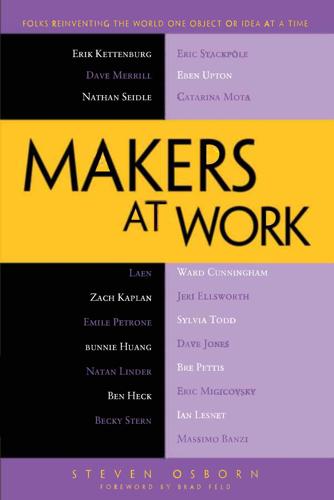
Makers at Work: Folks Reinventing the World One Object or Idea at a Time
by
Steven Osborn
Published 17 Sep 2013
Linder: My other passion was in the field of projected augmented reality. In that space, there were very old classic works by people like John Underkoffer, who built I/O Bulb, and folks like Pierre Wellner, who did the original first projected displays. I was thinking very deeply on projected augmented reality at the time. This relates to my current research project called LuminAR. I spent my master’s thesis on it and I am still developing it. Basically, it suggests there’s another form factor for a computer where the main interaction modality is augmented reality. That project became the center of my master’s.
…
Initially, they tasked us with researching input and output devices for gaming, anything that could enhance a gaming experience. We looked at everything: virtual reality, augmented reality, motion controllers. At first, I wasn’t too keen on the idea of augmented reality, but as we started researching it, I started to see very interesting applications and game play experiences you could do with it, and I got very excited. Then there was a bit of a split off in the development. Some people were doing virtual reality, and some of us went off and did augmented reality. My focus over the last year was AR. Then I rocked the boat and I got fired. On my way out the door, I went to Gabe Newell, the founder of the company, and said, “I can’t believe you’re doing this.
…
I am trying to finish this PhD, but you never know. Sometimes you plan and then something else comes up. As Lennon said: “Life is what happens while you are busy making other plans.” Osborn: Tell me how you got from working on the augmented reality to Formlabs. Can you go into what Formlabs does and what the Form 1 is? Linder: Sure. This might be surprising to you, but what I’m trying to do with augmented reality and creating new form factors is not that different in principle from what the Form 1 is doing. The Form 1 is a new form factor 3D printer. It’s trying to offer a new design, both in the product design sense and in the usability and the technology, making high-resolution 3D printing affordable and accessible for designers, engineers, and makers right on their desks.

The Stack: On Software and Sovereignty
by
Benjamin H. Bratton
Published 19 Feb 2016
This ‘true glimpse’ of history won't sell well, compared to Disneyfied ‘untrue glimpses.’ Wherever there is ‘Intelligent Tourism,’ brutal, vulgar and stupid tourism follows fast on its heels! Soon we'll have some theme park Creationist Augmented Reality, where you can visit the Grand Canyon and see pre-Noachian people pan-frying trilobites and riding dinosaurs.” See Sterling's post, “Augmented Reality and Atemporality,” Wired, August 15, 2009, http://www.wired.com/2009/08/augmented-reality-and-atemporality/. 60. The App has received considerable mainstream press. See Amy O’Leary, “In the Beginning Was the Word; Now the Word Is on an App,” New York Times, http://www.nytimes.com/2013/07/27/technology/the-faithful-embrace-youversion-a-bible-app.html?
…
His target is Google Glass, a piece of hardware that takes on black magic powers in his estimation. In the Interfaces chapter, I will discuss the dangers of augmented reality-based interfacial totalities to engender forms of cognitive totalitarianism, but this is not because they train attention on artificial images, negating our natural faculties of reason and experience (see also the Phaedrus, and Socrates’ admonitions against the written word, 370 B.C., or the whole history of experimental cinema). Rather it is that augmented reality could mediate so well the sort of mythopoetic political Messianism that is the lifeblood of any lunatic fundamentalism: a stunted flame that he (and Tiqqun for that matter) tend with duly incoherent melancholia. 41.
…
See also No-Stop City Arcology (Soleri), 178–179 Arendt, Hannah, 379n12 Aristophanes, 109 artificial currencies, 127 artificial intelligence (AI), 78, 225–226, 262, 268, 277–279 artificial personalities, 277–278 artificial reality. See augmented reality Assange, Julian, 135, 285, 288 assemblage line, 231, 234–235, 249, 368 Atlas Shrugged (Rand), 253 atmospheric carbon, stabilizing, 259, 303 atmospheric megastructures, 195 atomized human, 251–252, 287–288 atoms, 77 Atta, Mohamed, 321 audience-centric Cloud services, 129 augmented reality (AR), 236, 245–246, 382n40, 429n61, 438n60 Apps, 240–243 games, 242, 245, 429n59 authority. See also jurisdiction; sovereignty decentering of, 344 platforms as modes of, 57 state, 6, 295, 318 transparency of, 360 of the User, 347 autobiographical geopolitics of the User, 257–258 automation of repentance, 243 workforce, 254, 285, 307–308, 344 automatism, 426n46 automobiles.
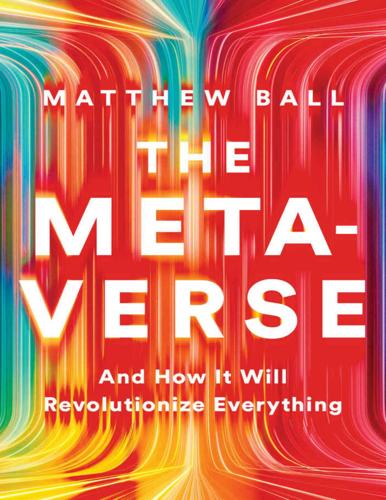
The Metaverse: And How It Will Revolutionize Everything
by
Matthew Ball
Published 18 Jul 2022
And obviously, all of the work that we’re doing across the apps that people use today contribute directly to this vision.”1 Shortly thereafter, Zuckerberg publicly announced a division focused on the Metaverse and elevated the head of Facebook Reality Labs—a division that works on miscellaneous futuristic projects including Oculus VR (virtual reality), AR (augmented reality) glasses, and brain-to-machine interfaces—to chief technology officer. In October 2021, Zuckerberg proclaimed that Facebook would be changing its name to Meta Platforms* to reflect its shift to this “Metaverse.” To the surprise of many Facebook shareholders, Zuckerberg also said that his investments in the Metaverse would reduce operating income by over $10 billion in 2021, while warning that these investments would grow for several more years.
…
For example, Microsoft’s CEO Satya Nadella has described the Metaverse as a platform that turns the “entire world into an app canvas”1 which could be augmented by cloud software and machine learning. No surprise, Microsoft already had a “technology stack”2 which was a “natural fit” for the not-quite-here Metaverse and spanned the company’s operating system Windows, cloud computing offering Azure, communications platform Microsoft Teams, augmented reality headset HoloLens, gaming platform Xbox, professional network LinkedIn, and Microsoft’s own “Metaverses” including Minecraft, Microsoft Flight Simulator, and even the space-faring first-person shooter Halo.3 Mark Zuckerberg’s articulation focused on immersive virtual reality#x2021;‡ as well as social experiences that connect individuals who live far apart.
…
And then the second person says, “Before you listen to Haffner, have you listened to Beethoven’s ninth?” Let me tell you, these people don’t exist. Okay? DF:—Understood. JC:—THAT’S the Metaverse. While Cramer was obviously confused, much of the tech community continues to dispute key elements of the Metaverse. Some observers debate whether augmented reality is part of the Metaverse, or separate from it, and whether the Metaverse can only be experienced through immersive VR headsets or is just best experienced using such devices. To many in the crypto and blockchain community, the Metaverse is a decentralized version of today’s internet—one in which users, not platforms, control its underlying systems, as well as their own data and virtual goods.
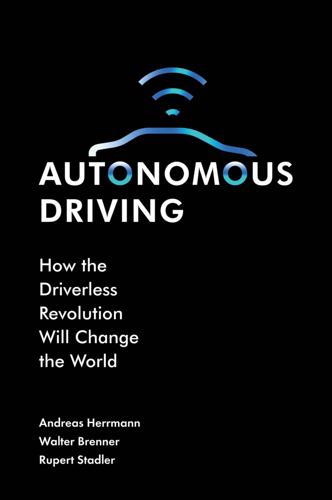
Autonomous Driving: How the Driverless Revolution Will Change the World
by
Andreas Herrmann
,
Walter Brenner
and
Rupert Stadler
Published 25 Mar 2018
Human Machine Interaction 279 head-up displays. Augmented reality is a system which takes camera images from the real world and overlays them with virtual information from a computer (see Box 28.2 and Figure 28.1). These displays use a projector and combiner to transmit visual information about the car and its environment into the driver’s field of vision. People can then orient themselves towards Box 28.2. Vision and Example of an Augmented Reality Application Augmented Reality Augmented reality gives drivers an entirely different driving experience by supplementing reality with computer-based information. Augmented reality is the computer-aided expansion of reality.
…
Unlike virtual reality, where the user sees a completely virtual world, augmented reality emphasises the link between reality and virtual reality. This interaction takes place in real time, and real and virtual objects are depicted together three-dimensionally. Augmented reality addresses all of the human senses, which is why the user is equipped with a camera, headset and tracking devices. The full scope of sensory perception is also feasible, because sensors and cameras can meanwhile capture details of the environment which humans themselves cannot perceive. Many of the experiences augmented reality makes possible have already been implemented at The Void, an entertainment centre located in a suburban area of Salt Lake City, Utah.
…
Information has to be presented so it can be absorbed quickly. At all times, there must be a focus on which data are relevant when, and which responses are expected from the human and the machine. Nowadays, suppliers and manufacturers in the automotive industry are working with digital light-processing technology to develop augmented-reality 277 Autonomous Driving 278 Box 28.1. Causes and Consequences of Driver Distraction Driver Distraction Numerous studies confirm that driver distraction is the main cause of traffic accidents. According to the findings of the US National Highway Traffic Safety Administration, driver distraction is one of the foremost causes of traffic accidents.

Physics of the Future: How Science Will Shape Human Destiny and Our Daily Lives by the Year 2100
by
Michio Kaku
Published 15 Mar 2011
Tourists will use them to resurrect ancient monuments. Artists and architects will use them to manipulate and reshape their virtual creations. The possibilities are endless for augmented reality. (photo credit 1.2) AUGMENTED REALITY: A REVOLUTION IN TOURISM, ART, SHOPPING, AND WARFARE As you can see, the implications for commerce and the workplace are potentially enormous. Virtually every job can be enriched by augmented reality. In addition, our lives, our entertainment, and our society will be greatly enhanced by this technology. For example, a tourist walking in a museum can go from exhibit to exhibit as your contact lens gives you a description of each object; a virtual guide will give you a cybertour as you pass.
…
Because computers will be able to locate many of the genes that control the aging process, we might be forever young like Peter Pan. We will be able to slow down and perhaps reverse the aging process, like the boys from Neverland who didn’t want to grow up. Augmented reality will give us the illusion that, like Cinderella, we can ride to fantasy balls in a royal coach and dance gracefully with a handsome prince. (But at midnight, our augmented reality glasses turn off and we return to the real world.) Because computers are revealing the genes that control our bodies, we will be able to reengineer our bodies, replacing organs and changing our appearance, even at the genetic level, like the beast in “Beauty and the Beast.”
…
This is not true invisibility, since it works only if you wear special goggles that merge two images. However, it is part of Professor Tachi’s grand program, which is sometimes called “augmented reality.” By midcentury, we will live in a fully functioning cyberworld that merges the real world with images from a computer. This could radically change the workplace, commerce, entertainment, and our way of life. Augmented reality would have immediate consequences for the marketplace. The first commercial application would be to make objects become invisible, or to make the invisible become visible. For example, if you are a pilot or a driver, you will be able to see 360 degrees around yourself, and even beneath your feet, because your goggles or lens allow you to see through the plane’s or car’s walls.
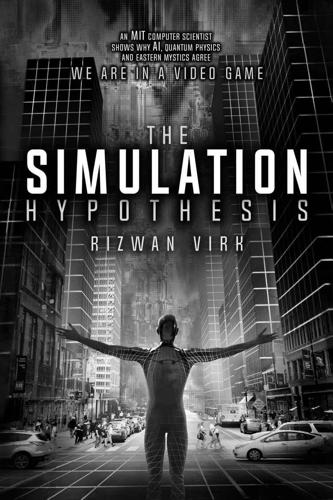
The Simulation Hypothesis
by
Rizwan Virk
Published 31 Mar 2019
His remarks have ignited serious debate. There are good reasons for Musk to put forth this argument at this point in time. A few years ago, I started the Play Labs accelerator at MIT for startups using the latest video game technology. There, I saw firsthand the high fidelity that today’s virtual and augmented reality can achieve. If this pace of improvement of video games continues into the future, what kinds of sophisticated video games will we be able to produce? Will we eventually be able to produce a game with such high resolution that it will be indistinguishable from reality? And if so, could we already be inside such a video game?
…
I call this video game the “Great Simulation” because this virtual reality appears to be indistinguishable from physical reality. If we are living in such a simulation, then it would be far more sophisticated than any video game we have built or even imagined to date. It would combine elements of MMORPGs with elements of virtual and augmented reality built on foundations of technology and aspects of consciousness—real or simulated—that we don’t fully understand yet. Throughout this book, I will delve more deeply into the concepts introduced in this chapter, including advances in video games and computer science, some of the unexplainable mysteries unearthed by physicists about our physical world, and certain tenets of Eastern mystical traditions and even Western religions.
…
In computer science, you give the computer the rules, and it creates the world.2 —Alan Kay, Apple, Atari and MIT Chapter 1 Stages 0 to 3: From Pong to MMORPGs Forty years ago, we had Pong—two rectangles and a dot. That’s where we were. Now 40 years later, we have photorealistic, 3D simulations with millions of people playing simultaneously and it’s getting better every year. And soon we’ll have virtual reality, we’ll have augmented reality. If you assume any rate of improvement at all, then the games will become indistinguishable from reality. —Elon Musk, Code Conference, 20163 One of the main reasons so many scientists, philosophers, and technologists have started to take the simulation hypothesis more seriously now, in the early 21st century, rather than in earlier eras of computing, is because of the sophistication and rapid advancement of video games and graphics technology.

Future Politics: Living Together in a World Transformed by Tech
by
Jamie Susskind
Published 3 Sep 2018
Aaron Frank, ‘You Can Ban a Person, But What About Their Hologram?’ Singularity Hub, 17 March 2017 <https://singularityhub. com/2017/03/17/you-can-ban-a-person-but-what-about-theirhologram/> (accessed 30 November 2017). 131. Dean Takahashi, ‘Magic Leap Sheds Light on its Retina-based Augmented Reality 3D Displays’, VentureBeat, 20 February 2015 <http://venturebeat.com/2015/02/20/magic-leap-shedslight-on-its-retina-based-augmented-reality-3d-displays/> (accessed 30 November 2017). 132. Tom Simonite, ‘Oculus Finally Delivers the Missing Piece for VR’, MIT Technology Review, 6 October 2016 <https://www. technologyreview.com/s/602570/oculus-finally-delivers-the-missing-piece-for-vr/?
…
Robert Booth, ‘Facebook Reveals News Feed Experiment to Control Emotions’, The Guardian, 30 June 2004 <https://www.theguardian. com/technology/2014/jun/29/facebook-users-emotions-newsfeeds> (accessed 11 December 2017). Halting Problem,‘Tech Bro Creates Augmented Reality App to Filter Out Homeless People’, Medium, 23 February 2016 <https://medium. com/halting-problem/tech-bro-creates-augmented-reality-app-tofilter-out-homeless-people-3bf8d827b0df> (accessed 7 December 2017). Frank Pasquale, The Black Box Society:The Secret Algorithms that Control Money and Information (Cambridge, Mass: Harvard University Press, 2015), 63; Benkler, ‘Degrees of Freedom’, 18.
…
Cambridge: Polity Press in association with Oxford: Basil Blackwell, 2010. Hajer, Maarten A. and Hendrik Wagenaar, eds. Deliberative Policy Analysis: Understanding Governance in the Network Society. New York: Cambridge University Press, 2003. Halting Problem. ‘Tech Bro Creates Augmented Reality App to Filter Out Homeless People’. Medium, 23 Feb. 2016 <https://medium.com/ halting-problem/tech-bro-creates-augmented-reality-app-to-filterout-homeless-people-3bf8d827b0df> (accessed 7 Dec. 2017). Hamilton, Alexander, James Madison, and John Jay. The Federalist Papers. New York: Penguin, 2012. Hanson, Robin, The Age of EM: Work, Love, and Life When Robots Rule the Earth.
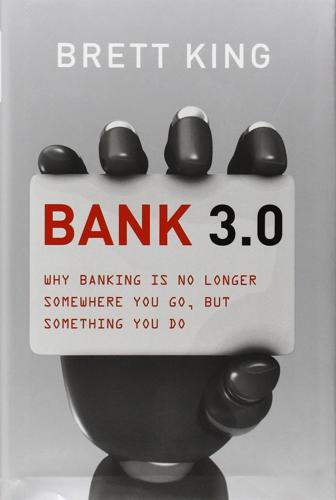
Bank 3.0: Why Banking Is No Longer Somewhere You Go but Something You Do
by
Brett King
Published 26 Dec 2012
It is currently in beta with some reasonable search support for books, DVDs, landmarks, logos, contact info, artwork, businesses, products, barcodes, and text. Augmented reality (AR) is the term for real-time, digitally enhanced interactions with the physical real-world environment, where real-world elements are merged with (or augmented by) virtual computer-generated imagery, touch or positive feedback, sounds and even possibly smells. The resultant mixed reality is what we call “augmented”. The term “augmented reality” is believed to have been coined by Thomas Caudell, an employee of Boeing, in the early 1990s. Augmented reality is changing the way we view the world—or at least the way tech users see the world.
…
You can’t control the crowd Advocacy and influence—the real ROI Crowdsourcing—use the power of the crowd Conclusions: What it all means Part 03: The Road Ahead—Beyond Channel Chapter 9: Living with Continuous Technology Improvement Faster, smaller, smarter Enterprise-wide implications Chapter 10: A Land in the Data Cloud Big Data Augmented reality Chapter 11: Engagement Banking: Building Digital Relationships The era of customer engagement Engaging in the dialogue Risk mitigation versus ROI Engaging the overwhelmed prosumer Chapter 12: Mobile Payments, Digital Cash and Value Stores Are mobile payments mainstream? The emergence of the mobile wallet Who will win the wallet battle?
…
It won’t be long before this capability is built into the self-service platform to provide a more personalised experience. Using commercially available facial recognition software, a team of researchers at Carnegie Mellon University was able to identify around 30 per cent of the college students who had volunteered to be photographed for a research study on use of augmented reality and facial recognition.10 They simply compared photos of the participating, anonymous students to images publicly available on Facebook. By using other public information from their social media profiles, the researchers also could identify the interests and predict partial Social Security numbers of some students.
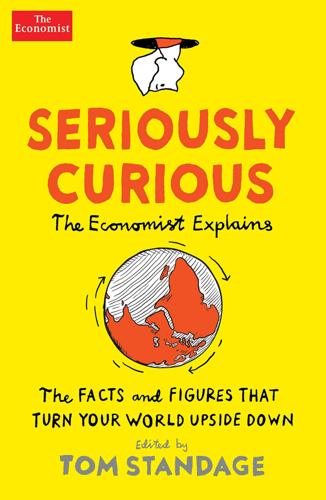
Seriously Curious: The Facts and Figures That Turn Our World Upside Down
by
Tom Standage
Published 27 Nov 2018
Worth hailing Alcohol-related crashes in New York City Difference* in the number of crashes in boroughs when compared with similar counties Source: “New York City Drunk Driving After Uber” by J. L. Peck, 2017 *Three-month moving average What is augmented reality? Most people, by now, have heard of virtual reality (VR). Giant technology companies, from Google to Samsung to Sony, are hoping that it will be the next big hit in consumer electronics, though it has failed to break out of a specialist niche. Its close cousin, augmented reality (AR), is less well known. Yet many people think that AR, when it comes, could have a much bigger impact than VR ever will. What exactly is it? The first thing to realise is that “reality” means two almost entirely different things depending on which technology you are talking about.
…
The link between video games and unemployment What do robots do all day? Why 5G might be both faster and slower than previous wireless technologies Mobile phones are more common than electricity in much of sub-Saharan Africa Why self-driving cars will mostly be shared, not owned How ride-hailing apps reduce drink-driving What is augmented reality? Why we’re still waiting for the space elevator How astronomers spotted the first interstellar asteroid Why drones could pose a greater risk to aircraft than birds What is the point of spam e-mail? Why the police should wear body cameras Why tech giants are laying their own undersea cables Game theory: sport and leisure Why tennis players grunt Why board games are so popular in Nigeria How drones can keep beaches safe from sharks How football transfers work How St Louis became America’s chess capital What does “digitally remastering” a film really mean?
…
That means 5G networks will be able to transfer a high-definition movie in two seconds and respond to requests in less than a hundredth of the time it takes to blink an eye. But 5G is not just about faster and broader wireless connections. The technology could also enable all sorts of new services. One example would be real-time virtual- or augmented-reality streaming. At the Olympics, for example, many contestants were followed by 360-degree video cameras. At special venues sports fans could don virtual-reality goggles to put themselves right into the action. 5G is also supposed to become the connective tissue for the internet of things, interconnecting everything from smartphones and wireless sensors to industrial robots and self-driving cars.

Human + Machine: Reimagining Work in the Age of AI
by
Paul R. Daugherty
and
H. James Wilson
Published 15 Jan 2018
Illumeo is leveraging AI in its UI so that the relationship between worker and machine is adaptable and improves over time.3 FIGURE 6-2 Jobs with amplification So far, we’ve focused on amplification in office jobs, but workers in the field are also benefiting from amplification, thanks to AI-enhanced user interfaces. In particular, AI tools like smart glasses that provide an experience of augmented reality are overhauling maintenance work and in-field training: the glasses overlay digital information or instructions on a worker’s field of view. At a global industrial services company, the typical process for wiring a wind turbine’s control box requires a technician to move between the control box and the hard copy of an instruction manual. But with an augmented-reality-enabled (AR), hands-free, heads-up display, the instructions can be visually projected on top of a technician’s workspace.
…
Welcome to the right-hand side of the missing middle (see figure 6-1), where machines augment humans. Artificial intelligence tools are empowering workers in a range of fields, from design to medicine to engineering to factory-floor operations. This augmentation comes in a variety of forms—from augmented reality and virtual reality to analytics engines to robot arms and chatbots. But what are the workforce implications of being empowered or augmented by AI? How is introducing AI to a workplace different from the device and technology management that companies already do, things like handing out laptops, software, and log-in information during new-hire orientation?
…
The store is an example of human-in-the-loop automated processes, with the goal of improving a system to perform more accurately and autonomously before deploying to a broad customer base. Controlled Chaos Walmart’s Store No. 8 is an “incubator,” a place to house engineers and innovators who test new technologies—such as robotics, virtual and augmented reality, machine learning, and kinds of artificial intelligence—relevant to Walmart’s business. Announced in March 2017, Store No. 8 will operate in many ways like any other startup incubator, experimenting with ideas and helping businesses “pivot” as concepts are tried and fail. According to Marc Lore, founder of Jet.com, a company Walmart bought in 2016 for $3 billion, the businesses and innovations forged in Store No. 8 “will be ring-fenced by the rest of the organization and backed by the largest retailer in the world.”a In other words, it will have the financial resources of a giant corporation, and the freedom, isolated from the bureaucracy of a large corporate culture, of a startup.

Machines of Loving Grace: The Quest for Common Ground Between Humans and Robots
by
John Markoff
Published 24 Aug 2015
Today, these displays cause motion sickness in users and they do not offer “true” depth-of-field perception. By January of 2015 it had become clear that augmented reality was no longer a fringe idea. With great fanfare Microsoft demonstrated a similar system called HoloLens based on a competing technology. Is it possible to imagine a world where the ubiquitous LCDs of today’s modern world—televisions, computer monitors, smartphone screens—simply disappear? In Hollywood, Florida, Magic Leap’s demonstration suggests that workable augmented reality is much closer than we might assume. If they are correct, such an advance would also change the way we think about and experience augmentation and automation.
…
Until now, the limits of consumer computing technology have been defined by what is known as the “WIMP” graphical interface—the windows, icons, menus, and pointer of the Macintosh and Windows. The Magic Leap glasses, however, will introduce augmented reality as a way of revitalizing personal computing and, by extension, presenting new ways to augment the human mind. In an augmented reality world, the “Web” will become the space that surrounds you. Cameras embedded in the glasses will recognize the objects in people’s environments, making it possible to annotate and possibly transform them. For example, reading a book might become a three-dimensional experience: images could float over the text, hyperlinks might be animated, readers could turn pages with the movement of their eyes, and there would be no need for limits to the size of a page.
…
For example, reading a book might become a three-dimensional experience: images could float over the text, hyperlinks might be animated, readers could turn pages with the movement of their eyes, and there would be no need for limits to the size of a page. Augmented reality is also a profoundly human-centered version of computing, in line with Xerox PARC computer scientist Mark Weiser’s original vision of “calm” ubiquitous computing. It will be a world in which computers “disappear” and everyday objects acquire “magical” powers. This presents a host of new and interesting ways for humans to interact with robots. The iPod and the iPhone were the first examples of this transition as a reimagining of the phonograph and the telephone. Augmented reality would also make the idea of telepresence far more compelling.
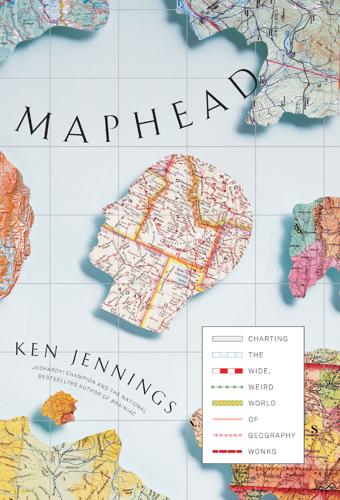
Maphead: Charting the Wide, Weird World of Geography Wonks
by
Ken Jennings
Published 19 Sep 2011
Most of these new technologies are just reinventing how maps are made or the things they can be used for, but one particular innovation is changing the very definition of what a map is. “Augmented reality” is the practice of combining a real-world environment with computer-generated imagery, like those yellow “first down” lines that appear and disappear during televised football games. Until recently, augmented reality was a mostly theoretical idea, confined to laboratories where, no doubt, people used those big, clunky Lawnmower Man helmets to try it out. But augmented reality isn’t virtual reality. The world it shows us isn’t a new one: it’s ours, only improved. And in the age of GPS- and camera-enabled phones, you don’t need the helmet anymore.
…
I’m so accustomed to the endless disappointments of futurism (in a year that begins with a 2, why am I not living in a domed undersea city by now?) that it comes as a shock when I read that augmented-reality phone apps already exist—not in labs and at trade shows but for reals: free in Apple’s app store, even. I upgrade to a new iPhone just to try out some of these tools but wind up disappointed. One called Wikitude promises to embed my environment with information about nearby POIs, like a Web browser for the real world, but when I try it out in front of my house, all I see are logos for every Starbucks and Best Buy within five miles. Yelp’s augmented-reality Monocle, the first AR app available for the iPhone, is a little better, bringing up an accurate text box about my favorite Thai place when I hold the phone up vertically and point it northwest, but neither program provides a very compelling experience.
…
You end up squinting and thinking for a minute and then saying, “Yeah, I guess that’s kind of cool,” sort of like when you were looking at those Magic Eye posters of dolphins back in the 1990s. But these are temporary glitches; before long, no doubt, the imagery will be smoother and we’ll all be wearing Terminator contact lenses with built-in heads-up displays for all the AR data. Not all the applications of augmented reality are map-related, of course. You could use it to interact with elaborate 3-D models that aren’t really there, which would be a boon to architects visualizing buildings and surgeons trying to practice a tricky triple bypass without killing anyone. If you were so inclined, you could even use AR to turn the world into your own surreal wonderland, changing the color of the sky every thirty seconds or putting a werewolf mask or Groucho glasses on the face of every passerby, like a Merry Pranksters app for an audience of one.
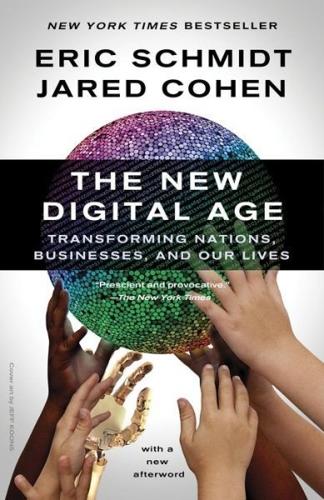
The New Digital Age: Transforming Nations, Businesses, and Our Lives
by
Eric Schmidt
and
Jared Cohen
Published 22 Apr 2013
many people treat their phones like stereo systems: Michael Byrne, “Inside the Cell Phone File Sharing Networks of Western Africa (Q+A),” Motherboard, January 3, 2012, http://motherboard.vice.com/2012/1/3/inside-the-cell-phone-file-sharing-networks-of-western-africa-q-a. promise even richer wearable experiences: Dena Cassella, “What Is Augmented Reality (AR): Augmented Reality Defined, iPhone Augmented Reality Apps and Games and More,” Digital Trends, November 3, 2009, http://www.digitaltrends.com/mobile/what-is-augmented-reality-iphone-apps-games-flash-yelp-android-ar-software-and-more/. Project Glass: Babak Parviz, Steve Lee, Sebastian Thrun, “Project Glass,” Google+, April 4, 2012, https://plus.google.com/+projectglass/posts; Nick Bilton, “Google Begins Testing Its Augmented-Reality Glasses,” Bits (blog), New York Times, April 4, 2012, http://bits.blogs.nytimes.com/2012/04/04/google-begins-testing-its-augmented-reality-glasses/.
…
Imagine having the holodeck from the world of Star Trek, which was a fully immersive virtual-reality environment for those aboard a ship, but this one is able to both project a beach landscape and re-create a famous Elvis Presley performance in front of your eyes. Indeed, the next moments in our technological evolution promise to turn a host of popular science-fiction concepts into science facts: driverless cars, thought-controlled robotic motion, artificial intelligence (AI) and fully integrated augmented reality, which promises a visual overlay of digital information onto our physical environment. Such developments will join with and enhance elements of our natural world. This is our future, and these remarkable things are already beginning to take shape. That is what makes working in the technology industry so exciting today.
…
Citizens in repressive societies already use common P2P communication platforms and encrypted messaging systems like Research in Motion (RIM)’s BlackBerry Messenger (BBM) to interact with less fear of government intrusion, and in the future, new forms of technologies that utilize P2P models will also become available to them. Today, the discussions around wearable technologies are focused on a luxury market: wristwatches we’ll wear that vibrate or apply a pulse when our alarm clock goes off (of which some versions already exist), earrings that monitor our blood pressure and so on.8 New applications of augmented reality (AR) technology (the superimposing of touch, sound or images from the virtual world over a physical, real-world environment) promise even richer wearable experiences. In April 2012 Google unveiled its own AR prototype called Project Glass—eyeglasses with a built-in display over one eye that can convey information, handle messages through voice command and shoot and record video through its camera—and similar devices from other companies are on the way.

The Age of Surveillance Capitalism
by
Shoshana Zuboff
Published 15 Jan 2019
Needleman, “‘Pokémon Go’ Wants to Take Monster Battles to the Street,” Wall Street Journal, September 10, 2015, https://blogs.wsj.com/digits/2015/09/10/pokemon-go-wants-to-take-monster-battles-to-the-street; Patience Haggin, “Alphabet Spinout Scores Funding for Augmented Reality Pokémon Game,” Wall Street Journal, February 26, 2016, https://blogs.wsj.com/venture capital/2016/02/26/alphabet-spinout-scores-funding-for-augmented-reality-pokemon-game. 38. Joseph Schwartz, “5 Charts That Show Pokémon GO’s Growth in the US,” Similarweb Blog, July 10, 2016, https://www.similarweb.com/blog/pokemon-go. 39. Nick Wingfield and Mike Isaac, “Pokémon Go Brings Augmented Reality to a Mass Audience,” New York Times, July 11, 2016, https://www.nytimes.com/2016/07/12/technology/pokemon-go-brings-augmented-reality-to-a-mass-audience.html. 40.
…
The most-predictive raw-material supplies come from intervening in our experience to shape our behavior in ways that favor surveillance capitalists’ commercial outcomes. New automated protocols are designed to influence and modify human behavior at scale as the means of production is subordinated to a new and more complex means of behavior modification. We see these new protocols at work in Facebook’s contagion experiments and the Google-incubated augmented reality “game” Pokémon Go. The evidence of our psychic numbing is that only a few decades ago US society denounced mass behavior-modification techniques as unacceptable threats to individual autonomy and the democratic order. Today the same practices meet little resistance or even discussion as they are routinely and pervasively deployed in the march toward surveillance revenues.
…
The company then issued nonvoting class “C” shares in 2016, solidifying Zuckerberg’s personal control over every decision.14 While financial scholars and investors debated the consequences of these share structures, absolute corporate control enabled the Google and Facebook founders to aggressively pursue acquisitions, establishing an arms race in two critical arenas.15 State-of-the-art manufacturing depended on machine intelligence, compelling Google and later Facebook to acquire companies and talent representing its disciplines: facial recognition, “deep learning,” augmented reality, and more.16 But machines are only as smart as the volume of their diet allows. Thus, Google and Facebook vied to become the ubiquitous net positioned to capture the swarming schools of behavioral surplus flowing from every computer-mediated direction. To this end the founders paid outsized premiums for the chance to corner behavioral surplus through acquisitions of an ever-expanding roster of key supply routes.

WTF?: What's the Future and Why It's Up to Us
by
Tim O'Reilly
Published 9 Oct 2017
As Google chief economist Hal Varian said to me, “My grandfather wouldn’t recognize what I do as work.” What are the new jobs of the twenty-first century? Augmented reality—the overlay of computer-generated data and images on what we see—may give us a clue. It definitely meets the WTF? test. The first time a venture capitalist friend of mine saw one unreleased augmented reality platform in the lab, he said, “If LSD were a stock, I’d be shorting it.” That’s a unicorn. But what is most exciting to me about this technology is not the LSD factor, but how augmented reality can change the way we work. You can imagine how augmented reality could enable workers to be “upskilled.” I’m particularly fond of imagining how the model used by Partners in Health could be turbocharged by augmented reality and telepresence.
…
You need a rich marketplace of people who know things, and others who need to know them. The way that knowledge is delivered—book, video, face-to-face teaching—gets a lot of attention, but the bigger question is how to bootstrap a rich knowledge network. AUGMENTED REALITY AND THE FUTURE OF ON-DEMAND LEARNING If being able to search for instructions on YouTube or on a specialized platform like Safari is the heart of today’s on-demand learning, augmented reality is surely tomorrow’s. Aircraft mechanics at Boeing are engaged in a pilot project using Microsoft HoloLens to give them schematics and diagrams overlaid on the work they are doing, guiding them through complex tasks that otherwise would take years of experience to master.
…
I’m particularly fond of imagining how the model used by Partners in Health could be turbocharged by augmented reality and telepresence. The organization provides free healthcare to people in poverty using a model in which community health workers recruited from the population being served are trained and supported in providing primary care. Doctors can be brought in as needed, but the bulk of care is provided by ordinary people. Imagine a community health worker who is able to tap on Google Glass or some next-generation wearable, and say, “Doctor, you need to see this!” (Trust me. Glass will be back, when Google learns to focus on community health workers, not fashion models.)
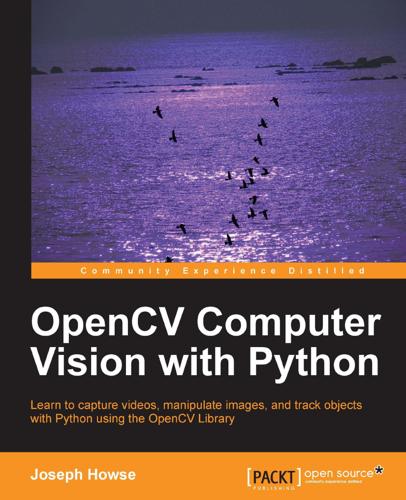
OpenCV Computer Vision With Python
by
Joseph Howse
Published 22 Apr 2013
Today, Joe still fancies that a computer program can blast a tunnel into reality. As a hobby, he likes looking at reality through the tunnel of a digital camera's lens. As a career, he develops augmented reality software, which uses cameras and other sensors to composite real and virtual scenes interactively in real time. Joe holds a Master of Computer Science degree from Dalhousie University. He does research on software architecture as applied to augmented reality. Joe works at Ad-Dispatch, an augmented reality company, where he develops applications for mobile devices, kiosks, and the Web. Joe likes cats, kittens, oceans, and seas. Felines and saline water sustain him.
…
He participated in Blender source code, an open source and 3D-software project, and worked in his first commercial movie Plumiferos—Aventuras voladoras as a Computer Graphics Software Developer. David now has more than 10 years of experience in IT, with more than seven years experience in computer vision, computer graphics, and pattern recognition working on different projects and startups, applying his knowledge of computer vision, optical character recognition, and augmented reality. He is the author of the DamilesBlog (http://blog.damiles.com), where he publishes research articles and tutorials about OpenCV, computer vision in general, and Optical Character Recognition algorithms. He is the co-author of Mastering OpenCV with Practical Computer Vision Projects , Daniel Lélis Baggio, Shervin Emami, David Millán Escrivá, Khvedchenia Ievgen, Naureen Mahmood, Jasonl Saragih, and Roy Shilkrot, Packt Publishing.
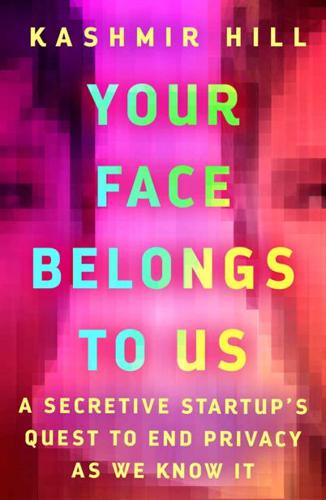
Your Face Belongs to Us: A Secretive Startup's Quest to End Privacy as We Know It
by
Kashmir Hill
Published 19 Sep 2023
It revealed Clearview’s existence, its database of billions of faces, its use by six hundred federal and local law enforcement agencies as well as a handful of private companies, and the efforts it had made to stay hidden from public view. The article also revealed a hint of what might be in the company’s future. We got a copy of the app’s source code, and my colleague, a technologist named Aaron Krolik, made a fascinating discovery: programming language indicating that Clearview’s facial recognition software could be run on augmented reality glasses, specifically products from two companies we’d never heard of before, RealWear and Vuzix. Ton-That downplayed the discovery; he acknowledged designing such a prototype “in our labs” but said that Clearview had no plans to release it. Hoan Ton-That’s photo was featured prominently in the story.
…
* * * — UNTIL CLEARVIEW CAME along, Facebook had been the main target for activists and lawmakers concerned about facial recognition technology. Now that the landscape had changed, Facebook had a decision to make: publicly release the most recent version of the name-calling hat or not. The company was working on augmented reality (AR) glasses, which were essentially a wearable computer for the eyes, and some employees were wondering if these glasses would have the ability to identify people around you. Andrew “Boz” Bosworth, a beefy, bald-headed Harvard classmate of Mark Zuckerberg who was soon to be named Facebook’s chief technology officer, was in charge of the development of the glasses.
…
He said he thought it would be possible to opt out of being searched, but that the bigger question was about whether Facebook would be able to release a face search at all, because facial recognition like that was illegal in some places, such as Illinois. Boz described leaving facial recognition out of augmented reality glasses as a lost opportunity to augment human memory. He talked about the universal experience of going to a dinner party and seeing someone you know but failing to recall their name. “We could put a little name tag on them,” he said, with a short chuckle. “We could. We have that ability.”

The Inevitable: Understanding the 12 Technological Forces That Will Shape Our Future
by
Kevin Kelly
Published 6 Jun 2016
Mobile phones were the second platform, and they revolutionized everything in only a few decades. The next disrupting platform—now arriving—is VR. Here is how a day plugged into virtual and augmented realities may unfold in the very near future. I am in VR, but I don’t need a headset. The surprising thing that few people expected way back in 2016 is that you don’t need to wear goggles, or even a pair of glasses, in order to get a basic “good enough” augmented reality. A 3-D image projects directly into my eyes from tiny light sources that peek from the corner of my rooms, all without the need of something in front of my face.
…
accelerometers, 221 accessing and accessibility, 109–33 and clouds, 125–31 and communications, 125 and decentralization, 118–21, 125, 129–31 and dematerialization, 110–14, 125 and emergence of the “holos,” 293–94 as generative quality, 70–71 ownership vs., 70–71 and platform synergy, 122–25 and real-time on demand, 114–17 and renting, 117–18 and right of modification, 124–25 accountability, 260–64 Adobe, 113, 206 advertising, 177–89 aggregated information, 140, 147 Airbnb, 109, 113, 124, 172 algorithms and targeted advertising, 179–82 Alibaba, 109 Amazon and accessibility vs. ownership, 109 and artificial intelligence, 33 cloud of, 128, 129 and on-demand model of access, 115 as ecosystem, 124 and filtering systems, 171–72 and recommendation engines, 169 and robot technology, 50 and tracking technology, 254 and user reviews, 21, 72–73 anime, 198 annotation systems, 202 anonymity, 263–64 anthropomorphization of technology, 259 Apache software, 69, 141, 143 API (application programming interface), 23 Apple, 1–2, 123, 124, 246 Apple Pay, 65 Apple Watch, 224 Arthur, Brian, 193, 209 artificial intelligence (AI), 29–60 ability to think differently, 42–43, 48, 51–52 as accelerant of change, 30 as alien intelligence, 48 in chess, 41–42 and cloud-based services, 127 and collaboration, 273 and commodity consumer attention, 179 and complex questions, 47 concerns regarding, 44 and consciousness, 42 corporate investment in, 32 costs of, 29, 52–53 data informing, 39 and defining humanity, 48–49 and digital storage capacity, 265, 266–67 and emergence of the “holos,” 291 as enhancement of human intelligence, 41–42 and filtering systems, 175 of Google, 36–37 impact of, 29 learning ability of, 32–33, 40 and lifelogging, 251 networked, 30 and network effect, 40 potential applications for, 34–36 questions arising from, 284 specialized applications of, 42 in tagging book content, 98 technological breakthroughs influencing, 38–40 ubiquity of, 30, 33 and video games, 230 and visual intelligence, 203 See also robots arts and artists artist/audience inversion, 81 and augmented reality, 232 and authenticity, 70 and creative remixing, 209 and crowdfunding, 156–61 and low-cost reproduction, 87 and patronage, 72 public art, 232 attention, 168–69, 176, 177–89 audience, 88, 148–49, 155, 156–57 audio recording, 249. See also music and musicians augmented reality (AR), 216–17, 224, 226–27, 231–32 authenticity, 70 authority, 86, 88, 101 authors, 86, 87, 88 automation, 49–50, 55, 56, 57–58 automobiles.
…
This permits the projected “reality” to overlay the reality you see normally without goggles. You could be standing in your kitchen and see the robot R2-D2 right before you in perfect resolution. You could walk around it, get closer, even move it to inspect it, and it would retain its authenticity. This overlay is called augmented reality (AR). Because the artificial part is added to your ordinary view of the world, your eyes are focused deeper than they are on a screen near your eyes, so this technological illusion is packed with presence. You almost swear it is really there. Microsoft’s vision for light field AR is to build the office of the future.
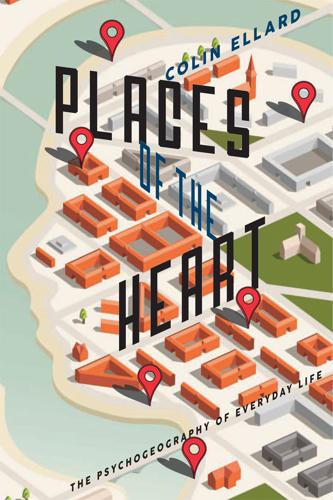
Places of the Heart: The Psychogeography of Everyday Life
by
Colin Ellard
Published 14 May 2015
In its current form, Google Glass is not much more than a kind of heads-up display that allows us to receive a steady stream of annotation about our surroundings with nothing more than an upward flick of the eyeballs. But this is really only a short step from a device that might present us with a more complete digital overlay in our field of view that keeps track of our movements and updates what we see accordingly. Such augmented realities have been used in research settings for some time; there are even some rudimentary forms of this way of seeing that are available to users of smartphones. The full penetration of such technologies would, at least for the visual sense, render many of the principles of conventional architecture obsolete.
…
I can also envision many of the ways in which the use of new technologies that merge the real and virtual worlds of design bring exciting prospects for innovations in responsive environments that will enhance the lives of the elderly, the infirm, and the dispossessed. By way of full disclosure, I should also point out what will become obvious in the pages ahead—that the kinds of developments that I’ve just described, including mobile data collection, and embedded sensor networks for biometrics and virtual and augmented reality, represent a cornucopia of rich data for scientists who do the kind of research that I do and will describe to you in this book. Put simply, these tools will allow scientists like me to develop a richer and more complete understanding of how the physical surroundings of our lives influence everything that we do.
…
They peered through the glass at the grey lump of rock as if they somehow expected more. The mere authenticity of the specimen didn’t seem to mean much to them. More recently, I’ve questioned my children about their favorite museum experiences, and they’ve described enjoying plastic reconstructions of animal skeletons and augmented reality screens meant to show how dinosaurs, whose fossilized bones stood right before them, might have looked when they were alive. Trying to avoid leading the witness, I asked them whether the authenticity of an artifact was important to them. When looking at a pile of bones, for example, did it make a difference to them to know that they were actual fossilized bones from an animal that had lived thousands of years ago?

Survival of the Richest: Escape Fantasies of the Tech Billionaires
by
Douglas Rushkoff
Published 7 Sep 2022
They sat around the table and introduced themselves: five super-wealthy guys—yes, all men—from the upper echelon of the tech investing and hedge fund world. At least two of them were billionaires. After a bit of small talk, I realized they had no interest in the talk I had prepared about the future of technology. They had come to ask questions. They started out innocuously and predictably enough. Bitcoin or Ethereum? Virtual reality or augmented reality? Who will get quantum computing first, China or Google? But they didn’t seem to be taking it in. No sooner would I begin to explain the merits of proof-of-stake versus proof-of-work blockchains than they would move to the next question. I started to feel like they were testing me—not my knowledge so much as my scruples.
…
He took that exponential leap, one order of magnitude above mere mortals and into the realm of success, autonomy, self-determination, and salvation. Amazingly, now that Facebook’s business model has come under scrutiny, Zuckerberg is at it again, going meta on the net by rebranding his own company as Meta. He is preemptively attempting to aggregate yet-to-be-invented virtual and augmented reality technologies into a single “metaverse” over which he will preside from one level up. The postmodern style of business warfare, where companies each seek to leapfrog one another’s paradigms, takes place in the financial markets capitalizing them, as well. Investors race to invent new derivatives and meta-derivatives capable of subsuming or aggregating those that came before.
…
Feedback doesn’t always take the form of an oppressed group leveraging their knowledge of technology to fight back against those in power. Sometimes, it’s the technology itself seeming to generate effects that work against its original purpose or those of the cultures that spawned it. The soul in the machine. Augmented reality, for instance, the technology that allows gamers to “see” Pokemon characters when they point their smartphone cameras at various locations, is being touted by the tech industry as the next great frontier for marketing. It’s the basis for Mark Zuckerberg’s Metaverse. By superimposing data and graphics on streets, stores, and even merchandise, marketers can inform customers, steer them in the right direction, call attention to special sales, and create “brand experiences” on top of products.

Future Crimes: Everything Is Connected, Everyone Is Vulnerable and What We Can Do About It
by
Marc Goodman
Published 24 Feb 2015
(blog), Washington Post, Jan. 9, 2013. 73 Any variation from an established: Clint Boulton, “ ‘Post-Password’ Technology Verifies Users by Behavior,” Wall Street Journal, July 11, 2014. 74 Banks believe biometric tools: Rawlson King, “Biometric Research Note,” Biometric Update, Jan. 21, 2013. 75 The Nymi wristband: Somini Sengupta, “Machines Made to Know You, by Touch, Voice, Even by Heart,” Bits (blog), New York Times, Sept. 10, 2013. 76 Scientists at the U.K.’s National Physical Laboratory: “NPL Takes Step Forward with Gait Recognition System,” Engineer, Sept. 20, 2012. 77 There is, however, an even easier way: Christopher Mims, “Smart Phones That Know Their Users by How They Walk,” MIT Technology Review, Sept. 16, 2010. 78 Proteus Digital Health: Dieter Bohn, “Motorola Shows Off Insane Electronic Tattoo and Vitamin Authentication Prototype Wearables,” Verge, May 29, 2013. 79 When we know: Anthony, “UK, the World’s Most Surveilled State, Begins Using Automated Face Recognition to Catch Criminals.” 80 AR can be used: For further information on augmented reality in contact lenses, see Babak A. Parviz, “Augmented Reality in a Contact Lens,” IEEE Spectrum, Sept. 1, 2009. 81 It is expected: Juniper Research, “Press Release: Over 2.5 Billion Mobile Augmented Reality Apps to Be Installed Per Annum by 2017,” Aug. 29, 2012. 82 Ikea even incorporated AR: Luisa Rollenhagen, “Augmented Reality Catalog Places IKEA Furniture in Your Home,” Mashable, Aug. 6, 2013. 285 A future malicious app: Franziska Roesner, Tadayoshi Kohno, and David Molnar, “Security and Privacy for Augmented Reality Systems,” Communications of the ACM 57, no. 4 (2014): 88–96, doi:10.1145/2580723.2580730. 83 The renowned game designer: Jane McGonigal, TED Conversation, http://www.ted.com/conversations/44/we_spend_3_billion_hours_a_wee.html; Jane McGonigal, Reality Is Broken: Why Games Make Us Better and How They Can Change the World (New York: Penguin Books, 2011). 84 “Strategically we want to start building”: Sarah Frier, “Facebook Makes $2 Billion Virtual-Reality Bet with Oculus,” Bloomberg, March 26, 2014. 85 Many genuinely view: “Worlds Without End,” Economist, Dec. 14, 2005. 86 But there is a downside: “A Korean Couple Let a Baby Die While They Played a Video Game,” Newsweek, July 27, 2014; “Korean Couple Let Baby Starve to Death While Caring for Virtual Child,” Telegraph, March 5, 2010. 87 Virtual worlds have their own currencies: “The Economy of Online Gaming Fraud Revealed: 3.4 Million Malware Attacks Every Day,” Kaspersky Lab, Sept. 28, 2010. 88 As strange as it may sound: Carolyn Davis, “Virtual Justice: Online Game World Meets Real-World Cops and Courts,” Philly.com, Dec. 8, 2010. 89 Even “sexual assaults”: Benjamin Duranske, “ ‘Virtual Rape’ Claim Brings Belgian Police to Second Life,” Virtually Blind, April 24, 2007. 287 These incidents might be: Anna Jane Grossman, “Single, White with Dildo,” Salon, Aug. 30, 2005. 90 A 2008 report: Sara Malm, “U.S.
…
It is not just our physical selves that can be subjected to such persistent observation but our virtual selves as well. Augmenting Reality As the Internet of Things advances, the very notion of a clear dividing line between reality and virtual reality becomes blurred, sometimes in creative ways. GEOFF MULGAN, U.K. NATIONAL ENDOWMENT FOR SCIENCE, TECHNOLOGY, AND THE ARTS In the movies, Tony Stark amazes us with the capabilities of his all-powerful Iron Man suit, which, among its many features, benefits greatly from a plethora of real-time augmented-reality information streaming before his eyes from the suit’s head-mounted display. The technology in the film is based solidly on reality.
…
—the Org Chart The Lean (Criminal) Start-Up A Sophisticated Matrix of Crime Honor Among Thieves: The Criminal Code of Ethics Crime U Innovation from the Underworld From Crowdsourcing to Crime Sourcing CHAPTER 11: INSIDE THE DIGITAL UNDERGROUND Passport to the Dark Web A Journey into the Abyss Dark Coins Crime as a Service Crimeazon.com The Malware-Industrial Complex Net of the Living Dead: When Botnet Zombies Attack Committing Crime Automagically CHAPTER 12: WHEN ALL THINGS ARE HACKABLE Where the Wireless Things Are Imagining the Internet of Things Connecting Everything—Insecurely Obliterating Privacy Hacking Hardware More Connections, More Vulnerabilities CHAPTER 13: HOME HACKED HOME Candid Camera From Carjacking to Car Hacking Home Hacked Home What the Outlet Knows Business Attacks and Building Hacks The Smart City Operating System CHAPTER 14: HACKING YOU “We Are All Cyborgs Now” More Than Meets the Eye: The World of Wearable Computing You’re Breaking My Heart: The Dangers of Implantable Computers When Steve Austin and Jaime Sommers Get a Virus Identity Crisis: Hacking Biometrics Fingers Crossed (and Hacked) Your Password? It’s Written All Over Your Face On Your Best Behavior Augmenting Reality The Rise of Homo virtualis CHAPTER 15: RISE OF THE MACHINES: WHEN CYBER CRIME GOES 3-D We, Robot The Military-Industrial (Robotic) Complex A Robot in Every Home and Office Humans Need Not Apply Robot Rights, Law, Ethics, and Privacy Danger, Will Robinson Hacking Robots Game of Drones Robots Behaving Badly Attack of the Drones The Future of Robotics and Autonomous Machines Printing Crime: When Gutenberg Meets Gotti CHAPTER 16: NEXT-GENERATION SECURITY THREATS: WHY CYBER WAS ONLY THE BEGINNING Nearly Intelligent Talk to My Agent Black-Box Algorithms and the Fallacy of Math Neutrality Al-gorithm Capone and His AI Crime Bots When Watson Turns to a Life of Crime Man’s Last Invention: Artificial General Intelligence The AI-pocalypse How to Build a Brain Tapping Into Genius: Brain-Computer Interface Mind Reading, Brain Warrants, and Neuro-hackers Biology Is Information Technology Bio-computers and DNA Hard Drives Jurassic Park for Reals Invasion of the Bio-snatchers: Genetic Privacy, Bioethics, and DNA Stalkers Bio-cartels and New Opiates for the Masses Hacking the Software of Life: Bio-crime and Bioterrorism The Final Frontier: Space, Nano, and Quantum PART THREE SURVIVING PROGRESS CHAPTER 17: SURVIVING PROGRESS Killer Apps: Bad Software and Its Consequences Software Damages Reducing Data Pollution and Reclaiming Privacy Kill the Password Encryption by Default Taking a Byte out of Cyber Crime: Education Is Essential The Human Factor: The Forgotten Weak Link Bringing Human-Centered Design to Security Mother (Nature) Knows Best: Building an Immune System for the Internet Policing the Twenty-First Century Practicing Safe Techs: The Need for Good Cyber Hygiene The Cyber CDC: The World Health Organization for a Connected Planet CHAPTER 18: THE WAY FORWARD Ghosts in the Machine Building Resilience: Automating Defenses and Scaling for Good Reinventing Government: Jump-Starting Innovation Meaningful Public-Private Partnership We the People Gaming the System Eye on the Prize: Incentive Competitions for Global Security Getting Serious: A Manhattan Project for Cyber Final Thoughts Appendix: Everything’s Connected, Everyone’s Vulnerable: Here’s What You Can Do About It Acknowledgments Notes PROLOGUE The Irrational Optimist: How I Got This Way My entrée into the world of high-tech crime began innocuously in 1995 while working as a twenty-eight-year-old investigator and sergeant at the LAPD’s famed Parker Center police headquarters.

Data Action: Using Data for Public Good
by
Sarah Williams
Published 14 Sep 2020
The applications for this new virtual environment are almost endless. 5.1a and 5.1b Google's AR navigation application adds a digital fox (left) to your navigation space and suggests places to eat (right). Source: James Kanter, “Google Showcases Augmented-Reality Navigation on Google Maps,” Business Insider, May 9, 2018, https://www.businessinsider.com/google-showcases-augmented-reality-navigation-on-google-maps-2018-5. 5.2 3D Soundscape created by Microsoft allows blind people to navigate the city. Source: Adam Peters, “This Device Creates A 3-D Soundscape To Help Blind People Navigate Through Cities,” Fast Company, November 20, 2014, https://www.fastcompany.com/3038691/this-device-creates-a-3d-soundscape-to-help-blind-people-navigate-through-cities.
…
Christian Science Monitor, June 15, 2010. https://www.csmonitor.com/USA/Politics/2010/0615/Gulf-oil-spill-Al-Gore-slams-BP-for-lack-of-media-access. Joyce, Patrick. The Rule of Freedom: Liberalism and the Modern City. London: Verso, 2003. Kanter, James. “Google Showcases Augmented-Reality Navigation on Google Maps—Business Insider.” Business Insider, May 9, 2018. https://www.businessinsider.com/google-showcases-augmented-reality-navigation-on-google-maps-2018-5. Kass-Hout, Taha A., and Hend Alhinnawi. “Social Media in Public Health.” British Medical Bulletin 108, no. 1 (2013): 5–24. Keefe, John. “Stop & Frisk | Guns.” WNYC, 2013. https://project.wnyc.org/stop-frisk-guns/.
…
Much in the same way networked computers created the World Wide Web, this environment will power many innovations created by those who have the capabilities to tap into it. Right now, that ability lies solely with the companies who generate the data, companies such as Waymo, Tesla, Ford, and others experimenting with autonomous vehicles. Companies are already using their virtual worlds to create diverse products beyond the car. Google has developed an augmented reality navigation tool for your smartphone, fueled by this digital environment (figure 5.1a and 5.1b). Microsoft has started to use some of this data to create a product it calls 3D Soundscapes (figure 5.2), which taps into the virtual environment to help a person with vision impairment or loss to navigate through the city.
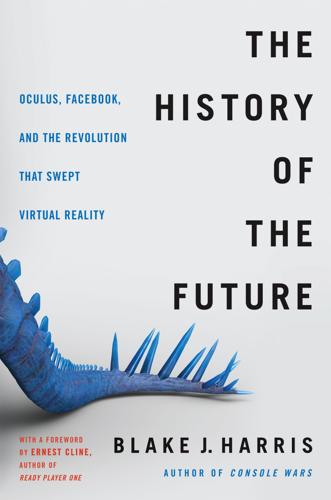
The History of the Future: Oculus, Facebook, and the Revolution That Swept Virtual Reality
by
Blake J. Harris
Published 19 Feb 2019
The reason Luckey asked was because of what Abrash was now working on at Valve: wearable computing. And specifically—as was now publicly known via his recent posts on a blog called Ramblings in Valve Time—Michael Abrash was researching augmented reality.1 “Wait,” Castle said. “What’s that? Augmented reality?” “The easiest way to explain it,” Luckey said, “is basically: Virtual reality makes you feel like you’re some place totally different and the entire environment is synthetic. Augmented reality places some digital elements into your view of the real world. So that’s really cool, but it’s like ten years away from being viable in any legitimate way.” “Do you anticipate that Valve will produce a headset of their own?”
…
But after investigating what steps would need to be taken, and weighing the costs of such an endeavor, it didn’t make any sense for Valve to take that kind of risk on hardware. Shortly after coming to this conclusion, Abrash heard about a company called Innovega that had an AR system in development. It was still very much in the prototype phase, but what they were making—augmented reality contact lenses—piqued Abrash’s interest. Then at some point shortly thereafter, Abrash asked Atman Binstock—now smiling there beside him—to meet for coffee. “By the end of that conversation,” Binstock said, recounting that meeting for Luckey and Antonov, “I just started thinking through how it would actually work.
…
There was a certain irony to this—the way that he and his team nostalgically talked about the “early days”—when, in reality, those days were only about six months old. That was when Atman Binstock, along with Fabian Giesen—a young, supersmart German engineer whom Binstock knew and trusted from his time at Rad—decided to take the leap and join Valve to work with Michael Abrash on augmented reality. Internally, this team became known as the “Vortex Group,” and it consisted of only five people: Abrash, Binstock, Giesen, and a pair of seasoned Valve engineers (Aaron Nicholls and Gordon Stoll). The group’s original plan was to focus on two soon-to-be-released pieces of wearable hardware.
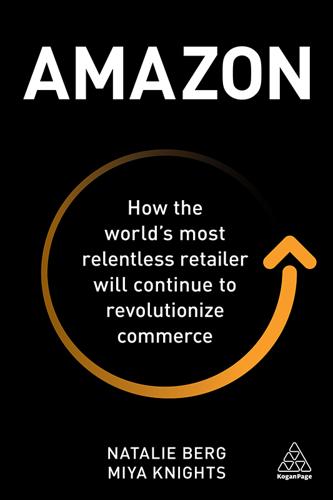
Amazon: How the World’s Most Relentless Retailer Will Continue to Revolutionize Commerce
by
Natalie Berg
and
Miya Knights
Published 28 Jan 2019
First, in terms of improving navigation, retailers are embracing instore mapping systems using a range of technologies including Wi-Fi, Bluetooth, audio, video and magnetic positioning, augmented reality (AR) and 3D virtualization, allowing customers to use their mobile devices to find the products they are looking for more quickly. In the future, expect more retailers to bundle instore navigation services with personalized, real-time offers in a bid to replicate the deeply tailored experience that traditionally could only be experienced online. Beacon technology and augmented reality, accessed via mobile devices, are creating new opportunities for retailers to target instore shoppers with such offers.
…
But that’s all about to change. By 2021, 28 per cent of clothing and footwear sales and 18 per cent of furniture and home furnishing sales in the US are expected to take place online (up from 9 per cent and 6 per cent respectively a decade earlier2), according to Kantar. Technology such as augmented reality, visual search and 3D body scanning are breaking down the barriers to online purchasing, reducing friction when it comes to discovery and sizing in fashion and giving shoppers more confidence in buying big-ticket items like furniture. Meanwhile, try-before-you-buy subscription boxes and more generous return policies are also helping to instil trust in shoppers looking to buy clothes online.
…
The same visual search capabilities of mobile apps and devices that contain image recognition functionality and features can be used to win the sale at that ‘zero moment’ (ZMOT) in both ‘research online, buy offline’ (ROBO) shopping journeys, as well as in response to showrooming inside the store. Augmented reality (AR) relies on similar image recognition and machine learning AI capabilities that shoppers use for image searches in combination with additional computer vision and geolocation developments. It is so-called because, in comparison to the complete immersiveness of virtual reality (VR) headsets and controllers, AR overlays images, text, video, graphics and other media onto the view that a smartphone camera sees of the real world.
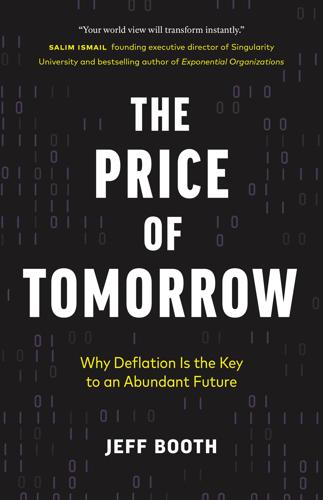
The Price of Tomorrow: Why Deflation Is the Key to an Abundant Future
by
Jeff Booth
Published 14 Jan 2020
With the technology moving into the mainstream, the transition will happen and drive much waste and cost out of the system. This can be great for humanity. The problem is that waste and cost are today’s jobs. Virtual and augmented reality Today we are glued to our phones as an interface to our technology world: according to Deloitte, in 2018 the average user checked their smartphone fifty-two times a day.25 But we will soon be more absorbed in it. Virtual and augmented reality (mixed reality) will offer a different, more immersive connection with our technology, and it will change the way many things are done. Take, for example, a startup in Vancouver called LlamaZOO, which is in a new category of data collection called spatial data that is at the intersection of digital twinning (an exact twin of the physical world that is digital), mixed reality, and business intelligence.
…
How the Economy Works, Part II: Creative Destruction Out with the old, in with the new The BuildDirect journey The windows of opportunity The rise of the platforms On the eve of destruction 3. It Is Hard to Think Differently Building on weak foundations Two-speed thinking Myths we live by How do we overcome our errors? 4. The Technology Boom Doubling up Self-driving cars Virtual and augmented reality Additive manufacturing and 3D printing The coming sonic boom 5. The Future of Energy The laws of energy Let the sun shine in Changing the price of tomorrow 6. The Future of Intelligence The impact of artificial intelligence A brief history of intelligence The beginning of AI 7. Who Will Be the Masters?
…
I was sitting about ten feet away at the Code Conference in 2016 when Elon Musk famously discussed the probability of us all living in a simulation. He explained his thesis, which was first introduced by Nick Bostrom, philosopher and author of the book Superintelligence, by using virtual reality/augmented reality as an example. He went on to argue that fidelity in virtual reality is already nearing fidelity of the real world (it feels real) and continuing to advance at a remarkable pace. If it feels real (or almost real) today and is progressing quickly, the chances are quite high that as the technology gets better and we use it more, the lines blur between reality and virtual reality, and we get confused about which reality we are in.

Dawn of the New Everything: Encounters With Reality and Virtual Reality
by
Jaron Lanier
Published 21 Nov 2017
I love classical music but am dismayed when I run across a person who leaves a feed of classical music on “for relaxation.” It’s so much more than wallpaper, if only you give it a chance. Less is often more, because attention isn’t infinite. When to Take a Pass Another ethical crossroads in VR headset design will come up soon: There are two ways to implement mixed (augmented) reality. You can use optics to combine the real and virtual worlds, as we do in HoloLens. The images you see of the real world are then made of the same photons you would have seen from the real world if you weren’t wearing the headset. But there’s another way to implement the effect, sometimes called “video pass-through.”
…
You are more sensitive to certain kinds of motion in the periphery, to the horizon, and even to slightly different colors, especially when it is dark. A well-designed VR headset takes all these fine points into consideration. There’s a big horizontal line in the chart. Underneath are found versions of VR in which you see only virtual stuff. Above the line is mixed reality, also known as augmented reality. In those cases you see the virtual intertwined with the real. The Inner Extreme on the Spectrum Let’s look first at the option that falls the farthest to the right, because it illuminates one aspect of the practical philosophy of VR: It’s been possible for quite a while to generate the perception of apparent light from electrical stimulation.
…
* * * Thirty-seventh VR Definition: Instrumentation to present data as lucidly as possible. * * * A FEW OF OUR AMERICAN PROJECTS We helped Boeing build simulators for cabin design, field maintenance, and manufacturing line design. Boeing later became a key early driver of mixed reality, or “augmented reality,” as they called it. We also helped Ford and other car manufacturers use VR to prototype their designs, a practice that has long since become universal in the industry. And we did the same with companies designing trains and ships. Transportation was our biggest sector in a typical year. Every commercial vehicle you’ve entered in the last couple of decades was prototyped in VR.

Sunfall
by
Jim Al-Khalili
Published 17 Apr 2019
He would ask Grace when he got home. It would make for a good science project. He thought about sending her the AR footage of the butterflies he had recorded on his retinal display but decided it could wait. Anyway, it’d be more fun to chat to Grace about this face to face rather than just copying over an augmented reality clip of what he was seeing on his screen. It never occurred to him that the fault might not lie with the butterflies at all. Absent-mindedly, he flicked on the wipers to clear the windscreen of the multi-coloured carnage. 2 Monday, 28 January 2041 – Rio de Janeiro Sarah Maitlin stared at her display and tried to clear her head, her third cafezinho of the evening cold and forgotten on her desk.
…
He’d lost count of the number of times he’d had to explain that he was not an astronomer and that his research involved looking down at mathematical equations, or getting buried in complex electronic kit, studying the world at the tiniest of scales, rather than looking up at the heavens. Thanks to his colour-blindness, he couldn’t even tell Venus from Mars. He’d taken out his augmented-reality lenses so as not to have the spectacle ruined by any unnecessary overlaid information. The night sky lost its aesthetic beauty and majesty when each bright dot had detailed statistics superimposed around it. Of course, it wasn’t difficult to switch off his AR feed whenever he wanted, but there was something liberating about taking his contacts out – like walking barefoot on fresh grass.
…
Once it was understood how these proteins could be switched on and off with tiny electromagnetic signals sent to the users’ eyes from their Cloud-linked wristpads, rapid advances were made in the technology. Almost overnight, it seemed to Marc, everyone had access to double vision: reality and augmented reality, overlapping and yet, with a little practice, quite separate. So good had the AR projections onto the retina now become, that the technology’s main teething problem came from the user confusing the projection with the physical universe beyond. ‘Can I get you anything else, Professor Bruckner?’

The Internet Is Not the Answer
by
Andrew Keen
Published 5 Jan 2015
Just about the only thing I didn’t see in the Venetian were cameras hidden inside watering cans. There were electronic eyes everywhere one looked. There was even an entire exhibition dedicated to intelligent eyeglasses. This “Retrospective Exhibition: 35 Years of Augmented Reality Eyewear,” a kind of history of the future, was held inside the “Augmented Reality Pavilion” in the Venetian. It featured row upon row of plastic heads, all wearing augmented glasses that had been developed over the last thirty-five years. The exhibition was sponsored by two of today’s leading developers of augmented glasses—an Israeli firm called OrCam, and Vuzix, whose $1,000 Smart Glasses M100 model, the world’s first commercially available networked eyewear, feature a hands-free camera that can record everything it sees.
…
So it was serendipitous that a part of the 2014 Consumer Electronics Show (CES), the world’s largest event dedicated to networked consumer devices, was held in Las Vegas’s version of Venice—the Venetian Resort Hotel Casino. Situated on Las Vegas’s strip, the Venetian, with its gaudily inauthentic piazzas and canals, represents a version of the Italian city-state that might be charitably described as augmented reality. At CES 2014, surveillance technologies were, so to speak, on show throughout the Venetian. Companies were demonstrating networked cameras that could do everything from peeping under walls and peering around corners to peeking through clothing. It was like being at a conference for spooks. At the Indiegogo-sponsored section of the show, hidden in the bowels of the Venetian, one crowd-financed startup from Berlin named Panono was showing off what it called a “panoramic ball camera,” an 11 cm electronic ball with thirty-six tiny cameras attached to it, that took panoramic photos whenever the ball was thrown in the air and then, of course, distributed them on the network.
…
A Canadian company, OMSignal, was demonstrating spandex clothing that wirelessly measured heart rate and other health data. Another smart clothing company, Heapsylon, even had a sports bra made of textile electrodes designed to monitor its wearer’s vital statistics.22 While Google wasn’t officially represented in the Augmented Reality Pavilion, there were plenty of early adopters wandering around the Venetian’s fake piazzas and canals wearing demonstration models of Google Glass, Google’s networked electronic eyeglasses. Michael Chertoff, the former US secretary of homeland security, described these glasses, which have been designed to take both continuous video and photos of everything they see, as inaugurating an age of “ubiquitous surveillance.”23 Chertoff is far from alone is being creeped out by Google Glass.
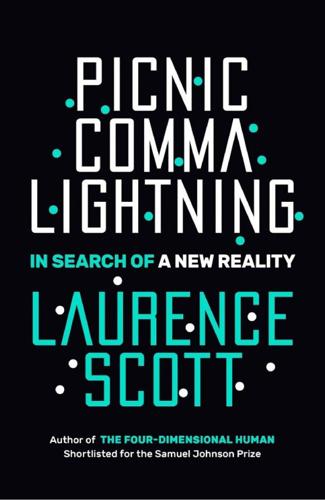
Picnic Comma Lightning: In Search of a New Reality
by
Laurence Scott
Published 11 Jul 2018
CONTENTS About the Book About the Author Also available by Laurence Scott Title Page Epigraph Dedication Introduction: Augmented Reality Part 1: The Life Fantastic 1. Bedtime Stories 2. The End of Things 3. Optical Disillusions Part 2: Double Vision 4. Backstage Pass 5. Romance Languages 6. Fellow-Feeling Part 3: Bolts from the Blue 7. Final Fantasies Epilogue Notes Acknowledgements Copyright ABOUT THE BOOK A spellbinding examination of the nature of reality, by one of the brightest thinkers of today. Cognitive science proposes that we have evolved to build mental maps of the world not according to its actual, physical nature, but according to what allows us to thrive.
…
ALSO BY LAURENCE SCOTT The Four-Dimensional Human: Ways of Being in the Digital World Halfway down, I step over some version of myself; a girl of four or six, idling or playing in the place most likely to trip people up. This is where children sit, I know this now; how they love doorways, in-between places, the busiest spot. This is where they go vague and start to dream. Anne Enright, The Forgotten Waltz For Rob Lederer INTRODUCTION: Augmented Reality WHILE I WAS in my early thirties, my parents died in impolite succession. My mother first, in 2010, then my father in 2012. He was in his early eighties, but she was sixteen years younger and had no business going anywhere. They passed the illness baton from one to the other, so that my mother died in midsummer and by the autumn we were back on the same floor of Charing Cross Hospital, with the same attendants wheeling the vital-signs trolley up to the bedside.
…
While we worry that we may soon lose the ability to know what is real and unreal in public life, technological ambitions for the future are based on the assumption that reality is there. How else could we have virtual reality, with its 360-degree designs on recreating a coral reef in the kitchen, if there wasn’t a reality to imitate, or indeed a kitchen to put it in? There is also the field of augmented reality (AR). Unlike virtual reality’s immersive experiences, AR involves the overlaying of artificial images onto ‘the real world’. AR headsets are being designed that trade screens for glasses. With these headsets we can sit in our home office and see weather reports, business graphs, an advert for running shoes, all floating in mid-air in front of us.

AI 2041: Ten Visions for Our Future
by
Kai-Fu Lee
and
Qiufan Chen
Published 13 Sep 2021
Classification: LCC Q335 .L423 2021 (print) | LCC Q335 (ebook) | DDC 006.3—dc23 LC record available at https://lccn.loc.gov/2021012928 LC ebook record available at https://lccn.loc.gov/2021012929 International edition ISBN 9780593240717 Ebook ISBN 9780593238301 crownpublishing.com Book design by Edwin Vazquez, adapted for ebook Cover Design: Will Staehle ep_prh_5.7.1_c0_r0 Contents Cover Title Page Copyright Epigraph Introduction by Kai-Fu Lee: The Real Story of AI Introduction by Chen Qiufan: How We Can Learn to Stop Worrying and Embrace the Future with Imagination Chapter One: The Golden Elephant Analysis: Deep Learning, Big Data, Internet/Finance Applications, AI Externalities Chapter Two: Gods Behind the Masks Analysis: Computer Vision, Convolutional Neural Networks, Deepfakes, Generative Adversarial Networks (GANs), Biometrics, AI Security Chapter Three: Twin Sparrows Analysis: Natural Language Processing, Self-Supervised Training, GPT-3, AGI and Consciousness, AI Education Chapter Four: Contactless Love Analysis: AI Healthcare, AlphaFold, Robotic Applications, COVID Automation Acceleration Chapter Five: My Haunting Idol Analysis: Virtual Reality (VR), Augmented Reality (AR), and Mixed Reality (MR), Brain-Computer Interface (BCI), Ethical and Societal Issues Chapter Six: The Holy Driver Analysis: Autonomous Vehicles, Full Autonomy and Smart Cities, Ethical and Social Issues Chapter Seven: Quantum Genocide Analysis: Quantum Computers, Bitcoin Security, Autonomous Weapons and Existential Threat Chapter Eight: The Job Savior Analysis: AI Job Displacement, Universal Basic Income (UBI), What AI Cannot Do, 3Rs as a Solution to Displacement Chapter Nine: Isle of Happiness Analysis: AI and Happiness, General Data Protection Regulation (GDPR), Personal Data, Privacy Computing Using Federated Learning and Trusted Execution Environment (TEE) Chapter Ten: Dreaming of Plenitude Analysis: Plenitude, New Economic Models, the Future of Money, Singularity Acknowledgments Other Titles About the Authors What we want is a machine that can learn from experience.
…
Virtual reality is immersive, realistic, and interactive, and will change the future of entertainment, training, retail, healthcare, sports, real estate, and travel. Will it really be possible to build a “virtual you” by 2041? I’ll answer that question in my commentary, as I describe virtual reality, augmented reality, and mixed reality, three forms of immersive experiences, as well as the ethical and societal issues around such innovations. THE ROOM WHERE the séance would take place was decorated in Victorian style and nearly devoid of light. In its center stood a black wooden table with seven half-burnt candles surrounded by scattered rose petals.
…
” “What did he say?” Stirring the coffee with her spoon, Aiko looked up. Her gaze landed on a spot behind Nonoko, as if she had caught a glimpse of a translucent silhouette glowing with a blue-green light. She grinned. “Hiroshi-kun said, deal.” ANALYSIS VIRTUAL REALITY (VR), AUGMENTED REALITY (AR), AND MIXED REALITY (MR), BRAIN-COMPUTER INTERFACE (BCI), ETHICAL AND SOCIETAL ISSUES At the beginning of “My Haunting Idol,” the pop star figure Hiroshi appears to be a “ghost” summoned by a group of superfans after his untimely demise during his farewell concert. We meet Aiko, one of these superfans, who is intent on investigating her idol’s mysterious death.

50 Future Ideas You Really Need to Know
by
Richard Watson
Published 5 Nov 2013
Are a fake tan, dyed hair, breast enlargement and teeth whitening just someone competing for a mate or someone who is somehow cheating? And, as usual, you haven’t seen anything yet. How about totally artificial hearts, livers, kidneys, or blood, plastic bones, human body parts grown in laboratories, contact lenses featuring data displays and augmented reality, artificial skin that can be synchronized with touch screens to transmit data or be used to display data on itself, direct brain-to-machine interfaces (i.e. thought control), orgasm chips and exoskeletons (skeletons you wear on the outside of your body to increase strength or to prolong mobility in older age).
…
We’ll immerse ourselves in novelty and fantasy and become reckless in our dealings with the real world. Perhaps we’ll retreat into virtual realities, although, of course, its possible that in the future the word “real” will have no actual meaning once we implant devices into our own bodies and augment reality with personalized overlays of digital information. We might also see radical cosmetic surgery becoming more mainstream, and this might encourage individuals to experiment with different physical personalities as they already do online. How all of this will change us is anyone’s guess, although it seems reasonable to assume that our sense of self would change along with our behavior.
…
It is machine intelligence that is equivalent to, or exceeds, human intelligence and it’s usually regarded as the long-term goal of AI research and development. Ambient intelligence Electronic or artificial environments that recognize the presence of other machines or people and respond to their needs. Artificial photosynthesis The artificial replication of natural photosynthesis to create or store solar fuels. Augmented reality (AR) The overlaying of digital data or information on real-world environments via mobile devices or screens. Links with modified or mediated reality and virtual reality. Avatar assistant A customized and semi-intelligent digital assistant accessed via a mobile device or other screen. Big data Huge data sets and vast volumes of information created by the rapidly expanding use of sensing networks and devices ranging from computers and cell phones to GPS, RFIDs, sensor motes and smart dust.

Heart of the Machine: Our Future in a World of Artificial Emotional Intelligence
by
Richard Yonck
Published 7 Mar 2017
Then there’s the matter of people using emotional prosthetics to deal with shortcomings in users’ emotional intelligence. We’ve already heard about Rana el Kaliouby’s early efforts with MindReader, the social intelligence prosthesis for autistic users. This is likely just the beginning of what will be a broad array of emotional assistance devices. Using augmented reality and emotional pattern recognition, any number of emotion reading tools could be possible. Just imagine a wearable prosthetic for people with brain damage similar to Elliot’s at the beginning of chapter 3. What a difference a device like that could make to someone’s life! Many modern computer-interface technologies have been used to help the handicapped deal with and overcome challenges.
…
As the next chapter shows, our challenges may be just beginning. 10 SENTIMENTAL FOOLS Ginza, Tokyo—May 17, 2027 A fashionable young woman window shops along a street in a trendy retail district, searching for a new purse. Her Louis Vuitton eyeglasses overlay a field of data onto the scene she’s viewing. These augmented reality spectacles offer pricing and reviews of different items as her gaze passes over them in the store windows. As she nears one of the establishments, its on-street camera records and sends her image to the store’s main computer system. From there it is fed to several data analytics services that almost instantly provide information about who she is as well as her probable buying habits.
…
Companies can use these integrated services to perform various tasks for a reasonable fee, without having to develop the software and databases themselves. Such services could abstract and automate many of the more complex aspects of facial recognition, 3D scanning, affective computing, and augmented reality, allowing businesses to engage consumers on the fly in real time as easily as you or I send an email or spell-check a document. This should concern us because the potential for emotional manipulation will be overwhelming and will greatly alter the balance of the retailer-consumer relationship.

The Economic Singularity: Artificial Intelligence and the Death of Capitalism
by
Calum Chace
Published 17 Jul 2016
When the sense data being received by the brain become sufficiently realistic, the brain “flips”, and decides that the illusion being presented is the reality. Google is not giving up on smartphone-based VR. Having sold more than 5m of the cardboard units, it plans to launch a more robust plastic version in 2016, with better sensors and lenses. It will remain considerably cheaper than the Oculus Rift, which will cost hundreds of dollars.[clx] Augmented reality (AR) is similar to VR except that it is overlaid on your perception of the real world rather than replacing it. It can make elephants swim through the air in front of you, or plant a skyscraper in your back garden. This is handy if you want to remain alert to the threat from dogs and potholes while you are hallucinating swimming elephants.
…
That said, IBM is developing a new brand for its commercial AI offering. Celia stands for Cognitive Environments Laboratory Intelligent Assistant, and it seems to be a more user-friendly front end, enabling business analysts, for instance, to interact with it by speech, and by manipulating virtual objects in an augmented reality field.[ccxlv] And IBM is still pursuing moonshots, in the medical field and elsewhere. As we have noted several times, machine learning is fuelled by data. In October 2015, IBM paid $1bn for Merge Healthcare, a company with 30 billion medical images,[ccxlvi] and $2bn for the digital assets of The Weather Company, to build a weather forecasting service.
…
He admits that the pace of technological development might pick up again, perhaps thanks to research into meta-materials, whose structure absorbs, bends or enhances electromagnetic waves in exotic ways. He is dismissive of artificial intelligence because it has not yet produced a conscious mind, but he thinks that augmented reality might turn out to be a new platform for innovation, just as the smartphone did a decade ago. But in conclusion he believes that “2045... is going to look more like it looks today than you think.” It is tempting to think that Markoff was to some extent playing to the gallery, wallowing self-indulgently in sexagenarian nostalgia about the passing of old glories.
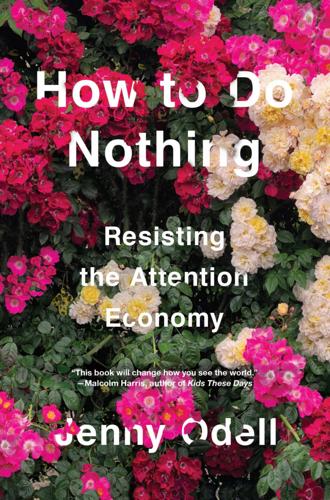
How to Do Nothing
by
Jenny Odell
Published 8 Apr 2019
My mother, the very picture of generosity, has ingeniously found some way to help me with almost everything I have ever done, and her work with children influenced my emphasis on care and maintenance in this book. My father, who frequently shuttles between his electronics job and the top of a mountain, has imbued in me a certain way of looking at the world. I once asked him if he knew about augmented reality, and he said, “Augmented reality? I live there.” Lastly, I would like to thank Crow and Crowson for continuing to visit my balcony, morning after morning, directing their alien attention toward this comparatively ungainly Homo sapiens. May we all be so lucky to find our muses in our own neighborhoods. Endnotes Introduction 1.
…
Unless we are vigilant, the current design of much of our technology will block us every step of the way, deliberately creating false targets for self-reflection, curiosity, and a desire to belong to a community. When people long for some kind of escape, it’s worth asking: What would “back to the land” mean if we understood the land to be where we are right now? Could “augmented reality” simply mean putting your phone down? And what (or who) is that sitting in front of you when you finally do? It is within a blasted landscape of neoliberal determinism that this book seeks hidden springs of ambiguity and inefficiency. This is a four-course meal in the age of Soylent. But while I hope you find some relief in the invitation to simply stop or slow down, I don’t mean this to be a weekend retreat or a mere treatise on creativity.
…
* * * — ALL OF THAT said, the reason I suggest the bioregion as a meeting grounds for our attention is not simply because it would address species loneliness, or because it enriches the human experience, or even because I believe our physical survival may depend on it. I value bioregionalism for the even more basic reason that, just as attention may be the last resource we have to withhold, the physical world is our last common reference point. At least until everyone is wearing augmented reality glasses 24/7, you cannot opt out of awareness of physical reality. The fact that commenting on the weather is a cliché of small talk is actually a profound reminder of this, since the weather is one of the only things we each know any other person must pay attention to. In a time when meaningful action will require us to form new alliances and recognize differences at the same time, bioregionalism is also useful as a model of difference without boundary, a way of understanding place and identity that avoids essentialism and reification.
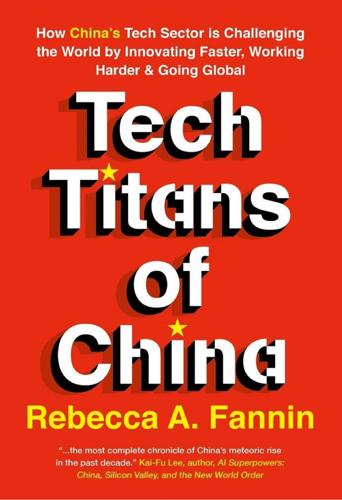
Tech Titans of China: How China's Tech Sector Is Challenging the World by Innovating Faster, Working Harder, and Going Global
by
Rebecca Fannin
Published 2 Sep 2019
The most acquisitive by far is Tencent with 146 deals and $25.7 billion of investment, followed by Alibaba with 51 deals and its part-owned Alipay with 2 deals and $3.7 billion in volume, and Baidu with 28 tech investments at $4.1 billion.2 China’s dragons have teamed up with top-tier US-based venture firms Mayfield and New Enterprise Associates, private equity firms General Atlantic and Carlyle Group, corporate strategic investors General Motors and Warner Brothers, and Japan’s acquisitive SoftBank. They’ve invested in US ride-hailing leaders Uber and Lyft, electric-carmaker Tesla, and augmented reality innovator Magic Leap. These Chinese tech titans have taken their cues directly from Silicon Valley venture capitalists. They’ve scoured the Valley for promising startups and based their operations not far from Menlo Park’s storied Sand Hill Road firms that backed winners Google, Facebook, and eBay.
…
Pivot to Israel Alibaba’s Ma has turned his kung fu–like skills to seeking and funding startups in the “Startup Nation” of Israel. On his first trip to Israel in May 2018, he led a delegation of 35 Alibaba executives to visit investors and check out startups in Israel’s stronghold of cyber-security as well as augmented reality, online gaming, QR codes, and AI. Alibaba promptly invested $26 million in big data company SQream Technologies, co-invested $40 million in mass transit software startup Optibus, and added to its $30 million co-investment in safe driving technology startup Nexar. These deals were on top of its first Israeli deal, an acquisition of personalized QR code designer Visualead in 2017 to establish a Tel Aviv research and development center.
…
Waiters were passing by to take orders for coffees, beer, wine, and focaccia sandwiches. Chocolates not usually found in Starbucks were prominently displayed, enlightening Chinese consumers on what pairs well with coffee. In a nod to Chinese tastes, there also was a well-stocked specialty tea bar. An augmented reality platform accessed on Alibaba’s app displayed information about key features in the Reserve Roastery and a bean-to-cup story. Customers were lingering, laughing, meeting friends, and checking their mobile devices. The store was crowded, and a line was forming outside. The Shanghai Reserve Roastery opened in December 2017 and is Starbucks’ bid to keep its premium image alive in China.

The Hype Machine: How Social Media Disrupts Our Elections, Our Economy, and Our Health--And How We Must Adapt
by
Sinan Aral
Published 14 Sep 2020
As Regina Dugan, head of Facebook’s brain-computer skunkworks, described it at F8, “It’s not about decoding random thoughts. We’re talking about decoding the words you’ve already decided to share by sending them to the speech center of your brain.” Well, that’s comforting. For a second there, I thought I should be worried. The brain wave detector could also enhance the augmented reality medium, creating a “brain mouse” allowing us to click on objects in an augmented reality environment just by thinking about them. Facebook isn’t the only company working on the brain-computer interface, of course, but it is the most immediately plugged into our social lives. What could possibly go wrong? The Hype Machine Framework As may be obvious from our discussion of the technology’s evolution, by the time this book goes to print, it will be outdated.
…
But the outcomes are real—products are purchased, votes are cast, and people show up in town squares to protest, sometimes, as in Tahrir Square, to dramatic effect. The medium is the input/output device through which we engage with the Hype Machine. Today the medium is largely the smartphone. But tomorrow it could be augmented reality (AR) or virtual reality (VR) headsets, digital contact lenses, virtual beings, in-home audio devices, or some combination. Regardless of the actual device, the medium is important because it determines the context from which the Hype Machine learns about us and in which it influences us. But a true grasp of the Hype Machine also requires an understanding of the economic, technical, social, and legal forces that guide its development.
…
Facebook is developing its own homegrown operating system to reduce its dependence on Android—a nod to the importance of not being dependent on someone else’s medium. But the Facebook OS will also allow it to embed social interaction deeper into the Hype Machine’s evolving medium. For example, it’s developing new augmented reality glasses and expanding its virtual reality offerings, built on Oculus, at a new 770,000-square-foot, 4,000-person facility fifteen miles from its Mountain View campus, set to open as this book is being released. Facebook is also developing hardware experiences for the enterprise on top of its Portal platform, which will support videoconferencing and AR/VR meeting and coordination solutions, extending Facebook’s reach into the workplace.

You've Been Played: How Corporations, Governments, and Schools Use Games to Control Us All
by
Adrian Hon
Published 14 Sep 2022
Chapter Eight explores how financial markets, terrorism, social media, consumerism, and even dating have become gamified, and how the metaphor of the world as game is shaping our behaviour. Metaphors can enlighten but they can also mislead, and viewing the world as a constant competition where other people become disposable non-player characters bodes ill for us all. In Chapter Nine, I peer into the future as augmented reality enables the gamification of every moment of our lives and virtual reality becomes so captivating it draws a generation away from employment. But it’s the past that I use to understand where gamification is taking us, and how it might ultimately change and end—specifically, the all-encompassing system of indulgences that ruled Europe in the Middle Ages and governed every aspect of people’s thoughts and actions.
…
Is this an inevitable outcome for gamified apps, or are there principles that would limit harm and exploitation while preserving the fun? By exploring two of the biggest genres of gamified apps—health and fitness, and brain training—we can drill down into what really works, and what doesn’t. HEALTH AND FITNESS Many gamified health and fitness apps are perfectly harmless. Two odd examples include Pokémon Smile, an augmented reality game that encourages children to brush their teeth better, and Pokémon Sleep, an app announced in 2019 in which “your sleep will impact gameplay” and that will apparently “give players a reason to look forward to waking up in the morning.”15 It’s unclear whether these apps are effective, but they might bring a little joy to a routine, and since Pokémon Smile is designed to prevent overbrushing, the worst that can happen is yet another step in the inexorable dominance of the Pokémon brand over the world’s children.
…
We’re not completely out of options, though: we could use a heads-up display, like Google Glass or Microsoft’s HoloLens, or a VR headset with passthrough video. These are expensive and a little embarrassing to wear in public, but they’d let players see the game’s output without moving a finger. Some augmented reality (AR) heads-up displays allow game elements to be drawn directly on top of your view of the floor itself, which would be even better. And since AR headsets necessarily include a camera, this handily solves our input problem, too. Just as GPS-enabled smartphones were the only way to enable Zombies, Run!
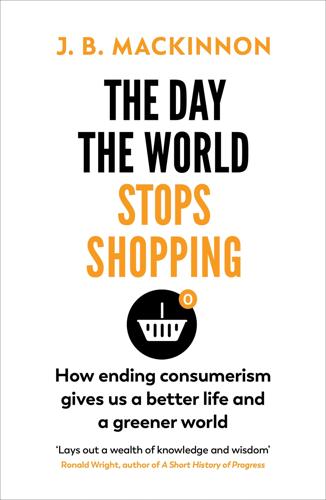
The Day the World Stops Shopping
by
J. B. MacKinnon
Published 14 May 2021
This is all potentially good news, said Lehdonvirta, who first learned to write basic code in the mid 1980s, when he was five or six years old. By the early twenty-first century, he was working in a Finnish lab to create virtual clothing and accessories that could be viewed through augmented reality devices such as camera phones; he remembers that another local company was figuring out how to do the same with virtual furniture. Today, apps that do exactly these things—allow you to test a shade of lipstick in augmented reality, or see what new shelving would look like in the corner of your living room before you buy it—are mainstream. In virtual reality, Keynes’s “economic problem” has decisively been solved.
…
Animal Crossing sold faster than any other video game in history, then became a platform for virtual fashion, with hours-long lineups within the game to attend exclusive sales—using in-game currency—by well-known designers. When the online collectibles company CryptoKitties issued a limited run of virtual cats by the Chinese artist Momo Wang, they sold out in three minutes. Our necessity goods quickly shuffled: we bought fewer new phones and more gaming consoles and high-end televisions, more augmented-reality backdrops that gave us angels’ wings and a halo when we made our video calls. We shifted so much of daily life online that, as the overall economy sank into severe recession, the employment rate in some kinds of digital work surpassed pre-pandemic levels. Most of all, we watched. TV binges, autoplay rabbit holes, twenty-four-hour news channels.
…
“The revenue model of half of the games, at least, is heavily based on selling stuff within the game,” said Lehdonvirta. Almost anything else a person is likely to spend that money on—food, clothes, sports, travel—would cause more environmental harm to the “corporeal world,” as some gamers refer to that strange land that their physical bodies inhabit. We can already see virtual objects in material space; augmented reality can provide us with a digital sculpture, a houseplant that never dies, or wall colours that can change shades in an instant. For now, though, we can only see such things through cumbersome pairs of goggles. If we could use lightweight glasses instead, or better yet contact lenses, we might embrace virtual possessions as eagerly as we took to recorded and disembodied voices through technologies like radio, the phonograph, and landline telephones more than a century ago.

Age of Context: Mobile, Sensors, Data and the Future of Privacy
by
Robert Scoble
and
Shel Israel
Published 4 Sep 2013
Thad Starner, a technical lead/manager on Google’s Glass team and associate professor of computing at Georgia Tech, is a trailblazer in wearable contextual technology. As he explains on his Google+ page, “For over 20 years I have worn a computer in my everyday life as an intelligent assistant, the longest such experience known.” He also coined the term “augmented reality” to describe the assistive experience. In 1991, Starner’s doctoral thesis mentioned “that on-body systems can sense the user’s context….” A little more than 20 years later, the necessary technologies have caught up with his prediction. As we started investigating contextual technologies we quickly saw implications going far beyond this well-publicized digital eyewear.
…
Sometimes, the best way to understand how far forward something can go is to look back and see how far it has come. With that in mind, try to fathom just what will emerge over the next few decades. During a visit to SRI, where so many great technologies such as HDTV and Siri were invented, Supun Samarasekera, a technical director from SRI’s Princeton Group, showed us a pair of augmented reality binoculars that let you geo-tag messages for colleagues and etch in virtual people among real ones in real places. A military platoon could create a very realistic modern version of the famous Terracotta Army if they wished, or you could tag a window in a building to show friends your apartment, or business prospects the location of your office.
…
As Eberhard notes, “A first responder needs to see floor plans, understand what’s underground; to see where fire hoses hook up, and where hazardous materials are stored. When she or he enters a burning building, knowing where the nearest Starbucks is located is not helpful data.” Perhaps augmented reality can be used in a future Google Glass, PairaSight app or other digital eyewear device to see what’s ahead in a smoke-filled hallway. To us, this is an example of using anticipatory technology as if your life depended upon it. What starts as a cloud-based model today may save the life of a firefighter or blast victim tomorrow.
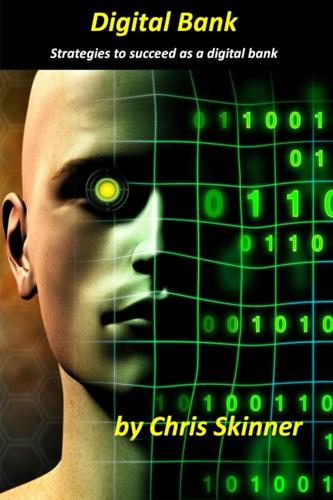
Digital Bank: Strategies for Launching or Becoming a Digital Bank
by
Chris Skinner
Published 27 Aug 2013
For example, as Google track your searches for Plasma TVs, you get an offer for £200 off the TV you spent the longest time studying online as you walk past the electronics showroom today. But the offer is only good for an hour, and only as you are in proximity of that electronics showroom. This is the new augmented reality of customer intimacy through Big Data analysis, and bank retailing will be based upon the competitive differentiation of analysing mass data to deliver mass personalisation. In summary, the digitisation of banking is now mainstream, and all bank capabilities will be packaged as digital structures where products will be apps, processes will be APIs and retailing will be contextual, delivered through mobile internet at the point of relevance.
…
The network-centric view, where everything is monitored real-time via the network, is the more sophisticated, intelligent and likely future scenario but the chip-based transaction system may well play an enabling short- to medium- term role in allowing the network to track the transactions. The reason why the channel discussion is wrong As can be seen, the near future will be driven by Digital Banks that use augmented realities to track and trace their customers and deliver proactive, location relevant servicing. The Digital Bank will be pervasive and not recognise channels as it purely exists in every digital space that their digital customer lives in. So why do we talk about channels? Why do we talk about multichannel, omnichannel banks, and how to deal with channel integration?
…
Some banks have already started such process – HSBC with First Direct being a case in point – but the idea of a bank that brands by channel is not yet a clear strategic market move, and maybe it should be. A bank that has a branch based bank brand (HSBC); a call centre based bank brand (First Direct); an internet based bank brand (Smile); and a mobile based bank brand (Moven). Now that flies directly in the face of my earlier assertion that there is no channel separation, just digitally augmented realities. The challenge with that assertion is that each bank brand is launched at a different moment of time: branches (pre-1970s); call centres (1980s); internet (1990s); and mobile (2000s). Each launch therefore has a layer of legacy, which is the challenge for the traditional bank to keep up. The pre-1970s bank is hamstrung by heritage.
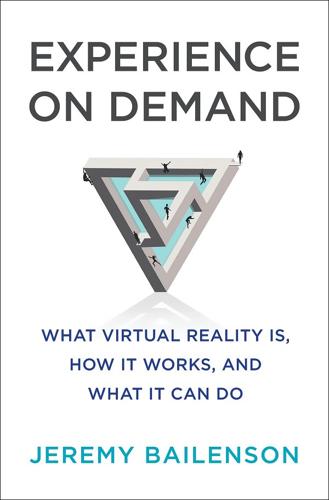
Experience on Demand: What Virtual Reality Is, How It Works, and What It Can Do
by
Jeremy Bailenson
Published 30 Jan 2018
But considering the huge technical improvements that have been made in just the past few years, these challenges are surmountable. Then there’s the question of actually wearing the equipment. “Who is going to put on goggles?” some ask, pointing to the consumer failure of Google’s much hyped augmented reality eyewear, Google Glass. Glass, of course, turned off a lot of people because it had the unnerving ability to seamlessly record video and audio. It was also considered antisocial, allowing people to seemingly interact with the real world while checking their e-mail. VR does not aspire to be integrated into one’s day-to-day existence.
…
But I worry that VR will be of a different order of magnitude, that its difference from other media—particularly in terms of psychological impact—is one of kind and not degree. There is good reason to believe that in the not-too-distant future, much of what we do on the Internet will be done through virtual or augmented reality, further cutting us off from the physical world. The concerns about a “new solitude” that have been raised by thinkers such as Sherry Turkle will only intensify when the pull of these virtual spaces becomes ever more compelling.21 If VR indeed becomes a medium through which people access and interact with the Internet, it will only further increase our anxiety about how the Internet is changing millennia of human social norms.
…
But imagine when we no longer need hands to communicate, and instead of seeing misspelled words in 140-character bursts, we are immersed in real social scenes, virtual ones, while trying to accomplish daily tasks. It is not a pretty picture. In spite of what proponents of multitasking say, attention is zero-sum.23 We only have so much of it to go around. And VR demands one’s total attention. (Augmented Reality and Mixed Reality are another matter, and carry their own hazards.) Wearing a headset, and believing you are in a virtual world, can be dangerous to users and the people around them. In the months after VR was initially released, incidents of users hitting walls and ceiling fans, tripping over coffee tables, and even accidentally punching other people began to be shared in the media.

The Singularity Is Nearer: When We Merge with AI
by
Ray Kurzweil
Published 25 Jun 2024
For example, we have nearly ten thousand times the sunlight we need to theoretically meet all of our current energy needs.[83] The second objection to radical life extension is that we will become profoundly bored doing the same things over and over again for centuries. But in the 2020s we will have virtual and augmented reality delivered in very compact external devices, and in the 2030s we will have VR and AR connected directly to our nervous systems by nanobots feeding signals to our senses. We will thereby have radical life expansion in addition to radical life extension. We will inhabit vast virtual and augmented realities limited only by our imagination—which itself will be expanded. Even if we lived hundreds of years, we would not exhaust all the knowledge there is to gain, and all the culture there is to consume.
…
For this reason, a panprotopsychist view suggests that they would not revive someone’s subjective consciousness. Despite this, many people will see them as valuable tools for continuing important work, sharing treasured memories, or helping family members heal. Replicant bodies will exist mostly in virtual and augmented reality, but realistic bodies in actual reality (that is, convincing androids) will also be possible using the nanotechnology of the late 2030s. Progress in this direction is still in very early stages as of 2023, but there is already significant research going on that will lay the groundwork for much bigger breakthroughs during the next decade.
…
As I will also describe in more detail later, we will soon be able to inexpensively produce modules to construct houses and other buildings, making comfortable habitation newly affordable for millions. All these technologies have already been successfully demonstrated and will become increasingly advanced and mainstream in this decade. Alongside this revolution in the physical world will be a transformative next generation of virtual and augmented reality, sometimes known as the metaverse.[214] For many years the metaverse was largely unknown outside of science fiction and futurism circles, but the concept got a big boost into the public consciousness from Facebook’s 2021 rebranding as Meta and its announcement that the centerpiece of its long-term strategy is playing a key role in constructing the metaverse—such that right now many people mistakenly think that Meta invented the concept.
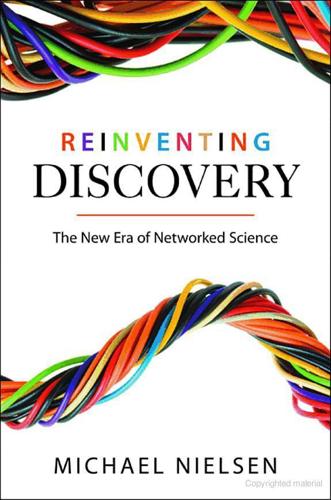
Reinventing Discovery: The New Era of Networked Science
by
Michael Nielsen
Published 2 Oct 2011
With people you like, in-person conversation is enjoyable and stimulating, and online collaboration loses something by contrast. Of course, this loss is gradually being offset by more expressive collaborative technologies—a tool such as Skype video chat is remarkably effective as a way to collaborate. Over the longer run ideas such as virtual worlds and augmented reality may even make online contact better than face-to-face contact. Still, today the online experience of direct person-to-person collaboration lacks much of the richness of offline collaboration. It’s tempting to conclude that online collaboration can’t be as good as offline. The trouble with this conclusion is that it ignores the problem of how you find the right person to work with in the first place.
…
In creative problem solving, it’s often better to have a terse twenty-minute text-only interaction with an expert who can solve your problem with ease, rather than weeks of enjoyable face-to-face discussion with someone whose knowledge is not much different than your own. And, in any case, you don’t have to make this choice. In practice, you can use relatively impersonal tools to find the right person or people for the problem at hand, and more expressive tools such as video chat, virtual worlds, and augmented reality to make working wit that person or people as effective as possible. To put it another way, the big advantages of online collaboration over offline conversation are in scale and cognitive diversity. Imagine that the people at ASSET India had gotten together a group to brainstorm ideas for wireless routers.
…
Imagine completely open source approaches to doing research. Imagine a connected online web of scientific knowledge that integrates and connects data, computer code, chains of scientific reasoning, descriptions of open problems, and beyond. That web of scientific knowledge could incorporate video, virtual worlds, and augmented reality, as well as more conventional media, such as papers. And it would be tightly integrated with a scientific social web that directs scientists’ attention where it is most valuable, releasing enormous collaborative potential. In part 2 of this book we’ll explore, in concrete terms, how the era of networked science is coming about today.
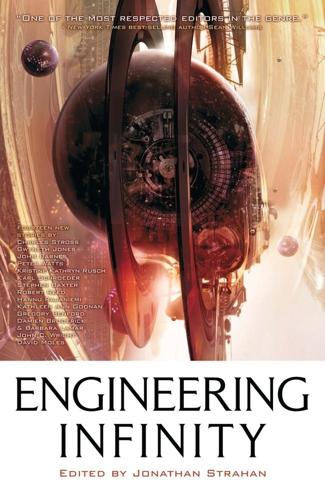
Engineering Infinity
by
Jonathan Strahan
Published 28 Dec 2010
Yet his seat-mate hadn't even shifted position in two hours. That was fine with Gennady, who had spent the whole trip trying to pretend he wasn't there at all. The young American been a bit more active during the flight across the Atlantic: at least, his eyes had been open and Gennady could see coloured lights flickering across them from his augmented reality glasses. But he had exchanged less than twenty words with Gennady since they'd left Washington. In short, he'd been the ideal travelling companion. The other four passengers were stretching and groaning. Gennady poked Ambrose in the side and said, "Wake up. Welcome to the ninth biggest country in the world."
…
Part was relieved that he wouldn't be dealing with any IAEA or Russian nuclear staff in the near future. Truth to tell, stalking around the Kazaks grasslands was a lot more appealing than dealing with the political shit-storm that would hit when this all went public. But speaking of people... He glanced up at the hotel's one lighted window. With a grimace he pocketed his augmented reality glasses and went up to the room. Ambrose was sprawled on one of the narrow beds. He had the TV on and was watching a Siberian ski-adventure infomercial. "Well?" he said as Gennady sat on the other bed and dragged his shoes off. "Tour of secret Soviet anthrax factory. Tomorrow, after egg McMuffins."
…
After Gennady convinced him he would survive it, they parted outside La France, and Gennady watched him walk away, sneakers flapping. He shook his head and strolled back to the Tata. Five men were waiting for him. Two were policemen, and three wore business attire. One of these was an old, bald man in a faded olive-green suit. He wore augmented reality glasses, and there was a discrete red pin on his lapel in the shape of the old Soviet flag. Gennady made a show of pushing his own glasses back on his nose and walked forward, hand out. As the cops started to reach for their tasers, Gennady said, "Mr Egorov! Gennady Malianov, IAEA. You'll forgive me if I record and upload this conversation to headquarters?"

The Road to Conscious Machines
by
Michael Wooldridge
Published 2 Nov 2018
For example, one thing I am personally very bad at is recognizing people: it is a source of continual embarrassment that I meet people I know well but nevertheless struggle to recognize. A Google Glass application that could identify the people I’m looking at and discreetly remind me of their names would be wonderful. These types of applications are called augmented reality: they take the real world and overlay it with computer-generated information or images. But what about apps that do not augment reality but completely change it, in a way that is imperceptible to users? My son, Tom, is 13 years old at the time of writing. He is a big fan of J.R.R. Tolkien’s Lord of the Rings books, and the films that were made from them. Imagine a Google Glass app that altered his view of school so that his friends looked like elves, and his schoolteachers looked like orcs.
…
Automated translation tools are one example of an AI technology that was firmly in the realm of science fiction 20 years ago, which has become a practical, everyday reality within the past decade. Such tools have many limitations, but they are successfully used by millions of people across the globe every day. Within the next decade, we will see high-quality real-time spoken-word language translation, and augmented reality tools that will change the way we perceive, understand and relate to the world we live in. Driverless cars are a realistic prospect, and AI looks set to have transformative applications in healthcare, from which we will all stand to benefit: AI systems have proven to be better than people at recognizing abnormalities such as tumours on X-rays and ultrasound scans, and wearable technology, coupled with AI, has the potential to monitor our health on a continual basis, giving us advance warnings of heart disease, stress and even dementia.
…
A A* 77 À la recherche du temps perdu (Proust) 205–8 accountability 257 Advanced Research Projects Agency (ARPA) 87–8 adversarial machine learning 190 AF (Artificial Flight) parable 127–9, 243 agent-based AI 136–49 agent-based interfaces 147, 149 ‘Agents That Reduce Work and Information Overload’ (Maes) 147–8 AGI (Artificial General Intelligence) 41 AI – difficulty of 24–8 – ethical 246–62, 284, 285 – future of 7–8 – General 42, 53, 116, 119–20 – Golden Age of 47–88 – history of 5–7 – meaning of 2–4 – narrow 42 – origin of name 51–2 – strong 36–8, 41, 309–14 – symbolic 42–3, 44 – varieties of 36–8 – weak 36–8 AI winter 87–8 AI-complete problems 84 ‘Alchemy and AI’ (Dreyfus) 85 AlexNet 187 algorithmic bias 287–9, 292–3 alienation 274–7 allocative harm 287–8 AlphaFold 214 AlphaGo 196–9 AlphaGo Zero 199 AlphaZero 199–200 Alvey programme 100 Amazon 275–6 Apple Watch 218 Argo AI 232 arithmetic 24–6 Arkin, Ron 284 ARPA (Advanced Research Projects Agency) 87–8 Artificial Flight (AF) parable 127–9, 243 Artificial General Intelligence (AGI) 41 artificial intelligence see AI artificial languages 56 Asilomar principles 254–6 Asimov, Isaac 244–6 Atari 2600 games console 192–6, 327–8 augmented reality 296–7 automated diagnosis 220–1 automated translation 204–8 automation 265, 267–72 autonomous drones 282–4 Autonomous Vehicle Disengagement Reports 231 autonomous vehicles see driverless cars autonomous weapons 281–7 autonomy levels 227–8 Autopilot 228–9 B backprop/backpropagation 182–3 backward chaining 94 Bayes nets 158 Bayes’ Theorem 155–8, 365–7 Bayesian networks 158 behavioural AI 132–7 beliefs 108–10 bias 172 black holes 213–14 Blade Runner 38 Blocks World 57–63, 126–7 blood diseases 94–8 board games 26, 75–6 Boole, George 107 brains 43, 306, 330–1 see also electronic brains branching factors 73 Breakout (video game) 193–5 Brooks, Rodney 125–9, 132, 134, 243 bugs 258 C Campaign to Stop Killer Robots 286 CaptionBot 201–4 Cardiogram 215 cars 27–8, 155, 223–35 certainty factors 97 ceteris paribus preferences 262 chain reactions 242–3 chatbots 36 checkers 75–7 chess 163–4, 199 Chinese room 311–14 choice under uncertainty 152–3 combinatorial explosion 74, 80–1 common values and norms 260 common-sense reasoning 121–3 see also reasoning COMPAS 280 complexity barrier 77–85 comprehension 38–41 computational complexity 77–85 computational effort 129 computers – decision making 23–4 – early developments 20 – as electronic brains 20–4 – intelligence 21–2 – programming 21–2 – reliability 23 – speed of 23 – tasks for 24–8 – unsolved problems 28 ‘Computing Machinery and Intelligence’ (Turing) 32 confirmation bias 295 conscious machines 327–30 consciousness 305–10, 314–17, 331–4 consensus reality 296–8 consequentialist theories 249 contradictions 122–3 conventional warfare 286 credit assignment problem 173, 196 Criado Perez, Caroline 291–2 crime 277–81 Cruise Automation 232 curse of dimensionality 172 cutlery 261 Cybernetics (Wiener) 29 Cyc 114–21, 208 D DARPA (Defense Advanced Research Projects Agency) 87–8, 225–6 Dartmouth summer school 1955 50–2 decidable problems 78–9 decision problems 15–19 deduction 106 deep learning 168, 184–90, 208 DeepBlue 163–4 DeepFakes 297–8 DeepMind 167–8, 190–200, 220–1, 327–8 Defense Advanced Research Projects Agency (DARPA) 87–8, 225–6 dementia 219 DENDRAL 98 Dennett, Daniel 319–25 depth-first search 74–5 design stance 320–1 desktop computers 145 diagnosis 220–1 disengagements 231 diversity 290–3 ‘divide and conquer’ assumption 53–6, 128 Do-Much-More 35–6 dot-com bubble 148–9 Dreyfus, Hubert 85–6, 311 driverless cars 27–8, 155, 223–35 drones 282–4 Dunbar, Robin 317–19 Dunbar’s number 318 E ECAI (European Conference on AI) 209–10 electronic brains 20–4 see also computers ELIZA 32–4, 36, 63 employment 264–77 ENIAC 20 Entscheidungsproblem 15–19 epiphenomenalism 316 error correction procedures 180 ethical AI 246–62, 284, 285 European Conference on AI (ECAI) 209–10 evolutionary development 331–3 evolutionary theory 316 exclusive OR (XOR) 180 expected utility 153 expert systems 89–94, 123 see also Cyc; DENDRAL; MYCIN; R1/XCON eye scans 220–1 F Facebook 237 facial recognition 27 fake AI 298–301 fake news 293–8 fake pictures of people 214 Fantasia 261 feature extraction 171–2 feedback 172–3 Ferranti Mark 1 20 Fifth Generation Computer Systems Project 113–14 first-order logic 107 Ford 232 forward chaining 94 Frey, Carl 268–70 ‘The Future of Employment’ (Frey & Osborne) 268–70 G game theory 161–2 game-playing 26 Gangs Matrix 280 gender stereotypes 292–3 General AI 41, 53, 116, 119–20 General Motors 232 Genghis robot 134–6 gig economy 275 globalization 267 Go 73–4, 196–9 Golden Age of AI 47–88 Google 167, 231, 256–7 Google Glass 296–7 Google Translate 205–8, 292–3 GPUs (Graphics Processing Units) 187–8 gradient descent 183 Grand Challenges 2004/5 225–6 graphical user interfaces (GUI) 144–5 Graphics Processing Units (GPUs) 187–8 GUI (graphical user interfaces) 144–5 H hard problem of consciousness 314–17 hard problems 84, 86–7 Harm Assessment Risk Tool (HART) 277–80 Hawking, Stephen 238 healthcare 215–23 Herschel, John 304–6 Herzberg, Elaine 230 heuristic search 75–7, 164 heuristics 91 higher-order intentional reasoning 323–4, 328 high-level programming languages 144 Hilbert, David 15–16 Hinton, Geoff 185–6, 221 HOMER 141–3, 146 homunculus problem 315 human brain 43, 306, 330–1 human intuition 311 human judgement 222 human rights 277–81 human-level intelligence 28–36, 241–3 ‘humans are special’ argument 310–11 I image classification 186–7 image-captioning 200–4 ImageNet 186–7 Imitation Game 30 In Search of Lost Time (Proust) 205–8 incentives 261 indistinguishability 30–1, 37, 38 Industrial Revolutions 265–7 inference engines 92–4 insurance 219–20 intelligence 21–2, 127–8, 200 – human-level 28–36, 241–3 ‘Intelligence Without Representation’ (Brooks) 129 Intelligent Knowledge-Based Systems 100 intentional reasoning 323–4, 328 intentional stance 321–7 intentional systems 321–2 internal mental phenomena 306–7 Internet chatbots 36 intuition 311 inverse reinforcement learning 262 Invisible Women (Criado Perez) 291–2 J Japan 113–14 judgement 222 K Kasparov, Garry 163 knowledge bases 92–4 knowledge elicitation problem 123 knowledge graph 120–1 Knowledge Navigator 146–7 knowledge representation 91, 104, 129–30, 208 knowledge-based AI 89–123, 208 Kurzweil, Ray 239–40 L Lee Sedol 197–8 leisure 272 Lenat, Doug 114–21 lethal autonomous weapons 281–7 Lighthill Report 87–8 LISP 49, 99 Loebner Prize Competition 34–6 logic 104–7, 121–2 logic programming 111–14 logic-based AI 107–11, 130–2 M Mac computers 144–6 McCarthy, John 49–52, 107–8, 326–7 machine learning (ML) 27, 54–5, 168–74, 209–10, 287–9 machines with mental states 326–7 Macintosh computers 144–6 magnetic resonance imaging (MRI) 306 male-orientation 290–3 Manchester Baby computer 20, 24–6, 143–4 Manhattan Project 51 Marx, Karl 274–6 maximizing expected utility 154 Mercedes 231 Mickey Mouse 261 microprocessors 267–8, 271–2 military drones 282–4 mind modelling 42 mind-body problem 314–17 see also consciousness minimax search 76 mining industry 234 Minsky, Marvin 34, 52, 180 ML (machine learning) 27, 54–5, 168–74, 209–10, 287–9 Montezuma’s Revenge (video game) 195–6 Moore’s law 240 Moorfields Eye Hospital 220–1 moral agency 257–8 Moral Machines 251–3 MRI (magnetic resonance imaging) 306 multi-agent systems 160–2 multi-layer perceptrons 177, 180, 182 Musk, Elon 238 MYCIN 94–8, 217 N Nagel, Thomas 307–10 narrow AI 42 Nash, John Forbes Jr 50–1, 161 Nash equilibrium 161–2 natural languages 56 negative feedback 173 neural nets/neural networks 44, 168, 173–90, 369–72 neurons 174 Newell, Alan 52–3 norms 260 NP-complete problems 81–5, 164–5 nuclear energy 242–3 nuclear fusion 305 O ontological engineering 117 Osborne, Michael 268–70 P P vs NP problem 83 paperclips 261 Papert, Seymour 180 Parallel Distributed Processing (PDP) 182–4 Pepper 299 perception 54 perceptron models 174–81, 183 Perceptrons (Minsky & Papert) 180–1, 210 personal healthcare management 217–20 perverse instantiation 260–1 Phaedrus 315 physical stance 319–20 Plato 315 police 277–80 Pratt, Vaughan 117–19 preference relations 151 preferences 150–2, 154 privacy 219 problem solving and planning 55–6, 66–77, 128 programming 21–2 programming languages 144 PROLOG 112–14, 363–4 PROMETHEUS 224–5 protein folding 214 Proust, Marcel 205–8 Q qualia 306–7 QuickSort 26 R R1/XCON 98–9 radiology 215, 221 railway networks 259 RAND Corporation 51 rational decision making 150–5 reasoning 55–6, 121–3, 128–30, 137, 315–16, 323–4, 328 regulation of AI 243 reinforcement learning 172–3, 193, 195, 262 representation harm 288 responsibility 257–8 rewards 172–3, 196 robots – as autonomous weapons 284–5 – Baye’s theorem 157 – beliefs 108–10 – fake 299–300 – indistinguishability 38 – intentional stance 326–7 – SHAKEY 63–6 – Sophia 299–300 – Three Laws of Robotics 244–6 – trivial tasks 61 – vacuum cleaning 132–6 Rosenblatt, Frank 174–81 rules 91–2, 104, 359–62 Russia 261 Rutherford, Ernest (1st Baron Rutherford of Nelson) 242 S Sally-Anne tests 328–9, 330 Samuel, Arthur 75–7 SAT solvers 164–5 Saudi Arabia 299–300 scripts 100–2 search 26, 68–77, 164, 199 search trees 70–1 Searle, John 311–14 self-awareness 41, 305 see also consciousness semantic nets 102 sensors 54 SHAKEY the robot 63–6 SHRDLU 56–63 Simon, Herb 52–3, 86 the Singularity 239–43 The Singularity is Near (Kurzweil) 239 Siri 149, 298 Smith, Matt 201–4 smoking 173 social brain 317–19 see also brains social media 293–6 social reasoning 323, 324–5 social welfare 249 software agents 143–9 software bugs 258 Sophia 299–300 sorting 26 spoken word translation 27 STANLEY 226 STRIPS 65 strong AI 36–8, 41, 309–14 subsumption architecture 132–6 subsumption hierarchy 134 sun 304 supervised learning 169 syllogisms 105, 106 symbolic AI 42–3, 44, 181 synapses 174 Szilard, Leo 242 T tablet computers 146 team-building problem 78–81, 83 Terminator narrative of AI 237–9 Tesla 228–9 text recognition 169–71 Theory of Mind (ToM) 330 Three Laws of Robotics 244–6 TIMIT 292 ToM (Theory of Mind) 330 ToMnet 330 TouringMachines 139–41 Towers of Hanoi 67–72 training data 169–72, 288–9, 292 translation 204–8 transparency 258 travelling salesman problem 82–3 Trolley Problem 246–53 Trump, Donald 294 Turing, Alan 14–15, 17–19, 20, 24–6, 77–8 Turing Machines 18–19, 21 Turing test 29–38 U Uber 168, 230 uncertainty 97–8, 155–8 undecidable problems 19, 78 understanding 201–4, 312–14 unemployment 264–77 unintended consequences 263 universal basic income 272–3 Universal Turing Machines 18, 19 Upanishads 315 Urban Challenge 2007 226–7 utilitarianism 249 utilities 151–4 utopians 271 V vacuum cleaning robots 132–6 values and norms 260 video games 192–6, 327–8 virtue ethics 250 Von Neumann and Morgenstern model 150–5 Von Neumann architecture 20 W warfare 285–6 WARPLAN 113 Waymo 231, 232–3 weak AI 36–8 weapons 281–7 wearable technology 217–20 web search 148–9 Weizenbaum, Joseph 32–4 Winograd schemas 39–40 working memory 92 X XOR (exclusive OR) 180 Z Z3 computer 19–20 PELICAN BOOKS Economics: The User’s Guide Ha-Joon Chang Human Evolution Robin Dunbar Revolutionary Russia: 1891–1991 Orlando Figes The Domesticated Brain Bruce Hood Greek and Roman Political Ideas Melissa Lane Classical Literature Richard Jenkyns Who Governs Britain?
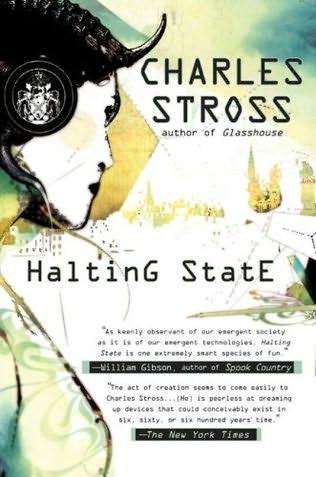
Halting State
by
Charles Stross
Published 9 Jul 2011
She has a key to the handcuffs, for which you are duly grateful, but she wants you to put your phone away, and that’s surprisingly difficult, because Sophie keeps going on about something to do with your oldest niece’s birthday and Confirmation—hubby Bill wants Elsie and Mary to have a traditional upbringing—and you keep agreeing with her because will you please put the phone down, a Dutch cop is trying to arrest me isn’t a standard way to break off this kind of scenario. (If only families came with safewords, like any other kind of augmented-reality game.) Things are stuck at this point for a tense few seconds as you mug furiously at the officer, until she raises one index finger, then unlocks the handcuff from around the pole, twists your arm around the small of your back, wheechs the mobie out of your grasp, and has your wrists pinioned before you can say “hasta la vista.”
…
You glance to your left, out to the north, where a green diamond is orbiting above the Kingdom of Fife. A quick zoom shows you that it’s real, a lumbering wide-body airliner in military grey, the knobbly outlines of high-bandwidth antennae studding its flanks like barnacles on a whale. Or at least, these goggles have been programmed to think it’s real. Once you accept someone else’s augmented reality, there’s really no telling, is there? For all you and Liz can tell until you’re plugged back into the comforting panopticon of CopSpace, this might just be some kind of elaborate live-action role-playing game. The convoy is past the gyratory and heading towards Queensferry Road way too fast, probably racking up speeding tickets at a rate best measured in euros per second.
…
The superposition of quantum states? Michaels has put my niece in a box, and I’d rather not know for the time being who’s more ruthless—the other side, or the bastards we’re working for.” Because Team Red might have done something, like Barry says, or Barry’s cell might be running a really nasty Augmented Reality game against you to secure your co-operation. And neither possibility is pleasant to contemplate. “I pointed Inspector Kavanaugh at it. Hopefully, she’ll tell me to stop wasting police time.” Or maybe she’ll find out who’s pushing your buttons—whether it’s Team Red or Michaels. Elaine lets go of your hand.
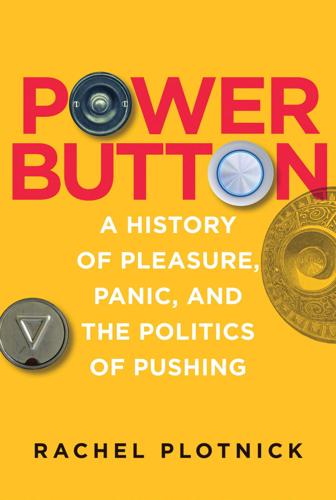
Power Button: A History of Pleasure, Panic, and the Politics of Pushing
by
Rachel Plotnick
Published 24 Sep 2018
Dick (Boston: Houghton Mifflin Harcourt, 2011), 499. 56. See Laura Sydell, “Microsoft’s Kinect Brings Gesture to a New Level,” NPR, November 4, 2010, http://www.npr.org/templates/story/story.php?storyId=131074438; Keith Wagstaff, “Project Glass: Google’s Augmented Reality Glasses Take Hands-Free Computing to the Extreme,” Time, April 4, 2012. http://techland.time.com/2012/04/04/googles-augmented-reality-glasses-take-hands-free-computing-to-the-extreme/. 57. Martin Dodge and Rob Kitchin, “Towards Touch-Free Spaces: Sensors, Software and the Automatic Production of Shared Public Toilet,” in Touching Space, Placing Touch, ed. Mark Paterson and M.
…
Vidyarthi, Guru Datta. Works: With a Biographical Sketch. Lahore, Pakistan: Aryan Printing, Publishing & G. Trading Co., 1902. “The Vulcan Electric Gear Shift.” Motor World Wholesale 38 (1913): 59. Wagstaff, Keith. “Project Glass: Google’s Augmented Reality Glasses Take Hands-Free Computing to the Extreme.” Time, April 4, 2012. http://techland.time.com/2012/04/04/googles-augmented-reality-glasses-take-hands-free-computing-to-the-extreme/. Walker, Rob. “Ad Play.” New York Times Magazine, December 17, 2006. http://www.nytimes.com/2006/12/17/magazine/17wwln_consumed.t.html. Wall, James W. “Address of James W. Wall.”

Terms of Service: Social Media and the Price of Constant Connection
by
Jacob Silverman
Published 17 Mar 2015
When we rate an Uber driver, who doesn’t technically work for Uber, we are, in essence, rating him as an individual, adjudicating his personal value to us. Robert Moran, head of the Brunswick Group, a communications consultancy, sees what he calls the “rateocracy” as an opportunity for transparency, when good corporations and citizens will be rewarded for acting ethically and in others’ best interests. It will be integrated with augmented reality apps, so that you can activate your Google Glass or pull out your smartphone and see ratings for people, businesses, and places all around you. Facial recognition will likely play a role: imagine being able to access information—social-media profiles, Google searches, biographical information, ratings from friends, colleagues, lovers—on anyone you see, without even talking to them.
…
Facebook and Twitter might be gone in ten years, to be replaced by whatever other platform emerges. Or, as seems likely in the case of Google, they might become more deeply insinuated in our lives, especially as Google’s social layer and its forays into wearable computing and physical-world tracking and advertising seem destined to turn all of reality into its own proprietary, augmented reality. Given Silicon Valley’s cult of disruption, it’s likely that future innovations in digital communication and broadcasting will be seen as just as revolutionary as the advent of social media. The tech industry is expert in nothing if not its own self-mythologizing. This image of perpetual upheaval, of boom-and-bust as both cyclical and salutary, doesn’t help the industry in checking its practices or thinking long-term.
…
It’s the irresistible compulsion to pull out your phone in the middle of a conversation to confirm some point of fact, because it’s intolerable not to know right now. It’s the smartphone as a salve for loneliness amid the crowd. It’s the “second screen” habit, in which we watch TV while playing games on our iPhone, tweeting about what we’re seeing, or looking up an actor on IMDB. It’s Google Glass and the whole idea of augmented reality, a second screen over your entire life. It’s the phenomenon of continuous partial attention, our focus split among various inputs because to concentrate on one would reduce our bandwidth, making us less knowledgable citizens. The informational appetite, then, is a cultural and metaphysical attitude as much as it is a business and technological ethic.

The Globotics Upheaval: Globalisation, Robotics and the Future of Work
by
Richard Baldwin
Published 10 Jan 2019
This is the future vision of Stephane Kasriel, the Frenchman who runs Upwork.com.13 As it turns out, the kid-stuff technologies that have been revolutionary in the video-gaming world are about to have revolutionary impact on the world of telecommuting. The two key technologies are augmented reality (AR) and virtual reality (VR). Many companies, both start-ups and giants like IBM, are in the process of using AR and VR to improve remote collaboration. They are redefining what it means to work side by side. Augmented Reality The big selling point of AR is that it allows an expert sitting somewhere else to “augment” the reality you are looking at through a video screen on your phone, tablet, or laptop.
…
This international talent tidal wave is coming straight for the good, stable jobs that have been the foundation of middle-class prosperity in the US and Europe, and other high-wage economies. Of course, the internet works both ways, so the most competitive rich-nation professionals will find more opportunities, but for the least competitive, it is just more wage competition. Second, telecom breakthroughs—like telepresence and augmented reality—are making remote workers seem less remote. Widespread shifts in work practices (toward flexible teams) and adoption of innovative collaborative software platforms (like Slack, Asana, and Microsoft 365), are helping to turn telemigration into tele-mass-migration. And there is more. This new competition from “remote intelligence” (RI) is being piled on to service-sector workers at the same time as they are facing new competition from artificial intelligence (AI).
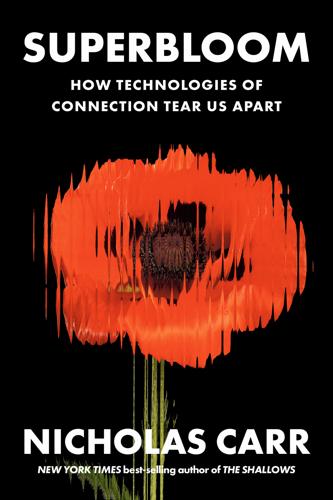
Superbloom: How Technologies of Connection Tear Us Apart
by
Nicholas Carr
Published 28 Jan 2025
Zuckerberg may be more interested in collecting our data than in relieving our reality deprivation, but his vision matches Andreessen’s in its megalomania. The reach of his ambition became clear when, during his metaverse talk, he revealed the kind of work now being done in Meta’s “Reality Labs.” He showed a demo of a woman walking through her home while wearing a pair of augmented-reality glasses that the company has in prototype. The glasses mapped, automatically and in fine detail, everything she looked at. Such digital mapping will allow Meta to create, as the Reality Labs’ chief scientist, Michael Abrash, explained, “an index” of “every single object” in a person’s surroundings, “including not only location, but also the texture, geometry, and function.”
…
Reality doesn’t motivate us as effectively. Reality isn’t engineered to maximize our potential. Reality wasn’t designed from the bottom up to make us happy.13 She’s right, except for the maximizing-our-potential part and the making-us-happy part. It remains to be seen whether virtual-reality and augmented-reality eyewear such as Meta’s Quest, Apple’s Vision, and Ray-Ban’s smart glasses eventually catch on with the masses—consumers so far have been wary of ceding control over their field of vision to corporate coders—but in the development and promotion of such hardware we see yet more signs of society’s retreat from the real.
…
See also specific apps Aristotle, 100 Arpanet, 59, 81–83 artificial intelligence (AI), 180–205, 219, 225, 230–31 compression of knowledge and, 184–87 “contextualized,” 210 doomism vs. skepticism, 183–84, 185–87 effect on creative fields, 189 generative, 180–205, 225 hallucinations of, 186–87, 203 hype and, 183–84, 207, 210 idealism and, 210 social media and, 190 AT&T, 23 attention, 101, 142 augmented-reality glasses, 209–10, 219 authoritarianism, 13–14, 45–46, 145–46, 198 automation, 56, 139–41. See also algorithms; artificial intelligence (AI) Bail, Chris, 144, 146 Baker, Newton, 129 bandwidth, 56, 57, 95. See also attention Barba-Kay, Antón, 220–21 Bartels, Larry, 135 Bateson, Gregory, 47 battle of the speeds, 53 Baudrillard, Jean, 167, 214–15, 219, 231 Beatles, 53 beliefs, as markers of group identity, 136–37 Bell Labs, 54 Bell System, 56, 64, 192 Bendiksen, Jonas, 193–96, 197, 199 Benesch, Susan, 225–26 Benkler, Yochai, 124–25, 126–28, 139 Ben-Ze’ev, Aaron, 108–9 BeReal, 3 Berkeley, George, 229 Berners-Lee, Tim, 121 Berry, Chuck, 54 Big Tech, 61, 68, 206–7, 209.
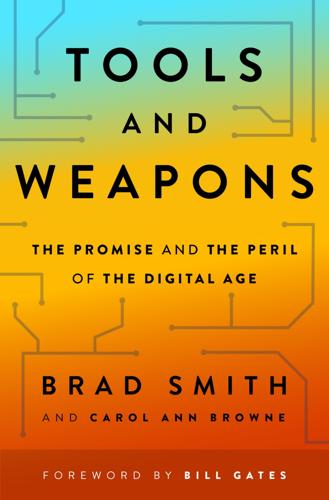
Tools and Weapons: The Promise and the Peril of the Digital Age
by
Brad Smith
and
Carol Ann Browne
Published 9 Sep 2019
As I stood next to Cindy Rose, the CEO of our UK business, we both held our breath a bit as we watched a young apprentice place a HoloLens headset on the prime minister’s head. We exhaled when the prime minister moved briskly through an augmented-reality demonstration of how the device could be used to identify faults in sophisticated machinery. (As it turned out, the HoloLens was far easier to master than devising a negotiating strategy for Brexit.) After the demo, Prime Minister May took off the headset and turned to our apprentice to ask him about his job. He replied proudly, “I’m an envisioning adviser. I help customers envision how they can take new technology like augmented reality and use it inside their company.” “An envisioning adviser,” the prime minister repeated.
…
The carrier had more than four thousand computers running our Windows server operating system, powering a wide variety of the ship’s functions. But to many people, AI-based systems understandably fall into a different category from this type of platform technology. We recognized that new technology raised a new generation of complicated issues, and as we considered a potential contract to provide augmented reality technology and our HoloLens devices to soldiers in the US Army, we talked through what we should do. In contrast to Google, we concluded that it was important for us to continue to provide our best technology to the US military as well as to other allied governments where we are confident in democratic processes and fundamental sensitivities around human rights.
…
“An envisioning adviser,” the prime minister repeated. “That’s a job I’ve never heard of.” There will be many new jobs with new names that are unfamiliar to us today. Our friends—or our children’s friends—will turn up at parties and describe their roles as facial-recognition specialists, augmented-reality-based architects, and IoT data analysts. As was the case for generations past, there will be days when we feel the need for an updated dictionary to understand what people are describing. Ultimately everyone would like a precise prediction about these new jobs. But unfortunately, the future, like the past, is messy.
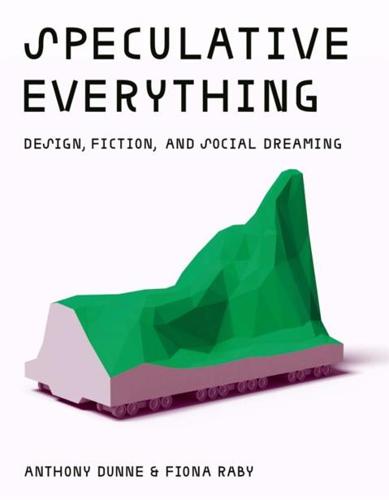
Speculative Everything: Design, Fiction, and Social Dreaming
by
Anthony Dunne
and
Fiona Raby
Published 22 Nov 2013
As literary fictional worlds are built from words there are some rather special possibilities that can be explored by pushing language's relationship to logic to the limit, a bit like the literary equivalent of an Escher drawing. A recent example of this is How to Live Safely in a Science Fictional Universe (2010) by Charles Yu. Here, fictional worlds provide opportunities to play with the very idea of fiction itself. Yu's world is a fusion of game design, digital media, VFX, and augmented reality. Set in Minor Universe 31, a vast story-space on the outskirts of fiction, the protagonist Yu is a time travel technician living in TM-31, his time machine. His job is to rescue and prevent people from falling victim to various time travel paradoxes. How to Live Safely in a Science Fictional Universe feels like conceptual science fiction: the story unfolds through constant interactions, collisions, and fusions among real reality, imagined reality, simulated reality, remembered reality, and fictional reality.
…
The video shows the world seen through a prosthetic device for people with reduced vision. Rather than simply replacing what has been lost, the proposal suggests technology could be used to enhance our vision, letting the wearer see parts of the light spectrum beyond human capability, infrared and ultra violet, for example. It is also possible to see augmented reality superimposed directly onto reality rather than in a hand-held device. Chris Foss, The Grain Kings, 1976. © chrisfossart.com. Nonobject (Branko Lukic), nUCLEUS Motorcycle, 2004. Superflux (Anab Jain and Jon Arden), Song of the Machine, The Film, 2011. After film, advertising is possibly the area in which CGI techniques are most used but usually to create obviously impossible situations that are uninteresting or escapist fantasies.

Empire of the Scalpel: The History of Surgery
by
Ira Rutkow
Published 8 Mar 2022
The newborn survived with little to no lasting ill effects. There will be novel training tools, including augmented reality, which adds digital elements to a live view or virtual reality with its complete immersion experience that shuts out the physical world. These distinctive features (i.e., augmented reality users do not lose touch with reality, while virtual reality puts information into an individual’s eyesight and brain as fast as possible) have a huge potential in assisting surgeons to become more adept at surgeries. Augmented reality-backed surgical operations can help surgeons visualize the three-dimensional anatomy of a patient during surgery; it is as if the knife bearer had X-ray vision with great accuracy, safety, and operating efficiency.
…
See American College of Surgeons acupuncture, 122 Adams, Samuel Hopkins, 189 advertising, 208–9, 224 Aeschylus, 23 African-American surgeons, 242, 247, 248–49, 250–51, 259 See also Drew, Charles; racial discrimination Ajax (Sophocles), 23 Albucasis, 40, 41 Alexander the Great, 23–24 ambulatory surgery, 295 American Academy of General Practice, 312 American Association of Orificial Surgeons, 176 American Board of Family Practice, 312, 313 American Board of Medical Specialties, 224–25 American Board of Obstetrics and Gynecology, 224 American Board of Ophthalmic Examinations, 224 American Board of Surgery (ABS), 225, 226, 242, 247 American College of Surgeons (ACS) anti-Semitism and, 250 Clinical Congresses and, 217–18 credentialing and, 216–17, 218–19, 222–23 founding of, 177–78, 218–19 hospital reform and, 219–21, 222 racial discrimination and, 248–49, 259 sexism and, 307 Study on Surgical Services for the United States, 310 surgery-medicine relationship and, 218–19 American Dental Association, 130 American Journal of Ophthalmology (Homberger), 208, 209 American Medical Association (AMA) founding of, 126 hernia repair and, 302 hospital standardization and, 221, 222 racial discrimination in, 248 specialization and, 208–9, 211 twentieth-century dominance of surgery and, 170 American Medicine Billings report on, 158 corporate capitalism and, 214 Johns Hopkins’s vision for, 157 media coverage, 254–57 racial discrimination in, 242, 245–47, 248–49, 250–51, 259 specialization and, 221, 237 See also American surgery; surgery-medicine relationship; twentieth-century expansion of surgery American Ophthalmological Society, 223–24 American Public Health Association, 156 American Red Cross, 240 American Red Cross Blood Bank, 244–45 American surgeons, 241, 267, 273–74, 299 American surgery anti-Semitism and, 249–50 Harvey Cushing and, 199 hospitals and, 214–16 importance of, xi, 158–59, 170 media coverage, 254–57 Nobel Prize and, 273–74 post-World War I dominance of, x–xi, 181–82, 237 professionalization and, 205–6, 226–27 specialization and, 206 Study on Surgical Services for the United States, 310–12 women in, 307–8 See also American Medicine; transplant surgery; specific people and procedures amputation battlefield medicine and, 72–73, 120n, 136n, 180 bleeding control and, 72–73 Civil War and, 120n, 136n Enlightenment era, 102 pain control and, 122 pus and, 136n Renaissance, 52 anal fistula, 92–94 analgesics, 121 Anatomie Universelle du Corps Humain (Paré), 75 anatomy abdomen, 188 brain, 21 comparative, 108, 109–10 heart, 264 See also human anatomy knowledge Anatomy of the Human Body, The (Cheselden), 99 ancient world, 15–22 Alexander the Great and, 23–24 Babylon, 18–19 Egypt, 20–22 medieval medicine and, 39–40 Stone Age, 15–17 See also Galenism; Greeks; Hippocrates; Hippocratic medicine; Roman Empire anesthesia abdominal surgery and, 189 battlefield medicine and, 130–31 cardiac surgery and, 261 challenges to, 129–30 chloroform for, 130, 131 as clinical foundation of surgery, 52, 53, 119–20, 122, 138 cocaine for, 161–62, 196 dentistry and, 125–27 disputes and rivalries and, 129, 132–33 Enlightenment era, 100, 106 ether for, 123, 127–29, 133 William Halsted and, 161–62 local, 10–11, 158, 161–62, 196, 302 Massachusetts General Hospital early use of, 124 nitrous oxide for, 123, 124–27 publicity for invention of, 128–29 Renaissance lack of knowledge on, 53, 77 Scientific Revolution era lack of knowledge on, 93 specialization and, 131 surgical shock and, 176 angina, 267, 269 animal experimentation, 141, 265, 276, 286–87, 320 See also comparative anatomy Annals of Surgery, 167 antibiotics, 192, 232–33, 261, 262 antibodies, 284 anticoagulants, 238 anti-Semitism, 249–50 antisepsis abdominal surgery and, 189 Theodor Billroth and, 160n carbolic acid for, 145–47, 148, 151–52 cardiac surgery and, 261 as clinical foundation of surgery, 52, 53, 119, 120 Enlightenment era, 106 William Halsted and, 161, 163 Joseph Lister’s system, 141, 144, 145–49, 150, 151–53, 161 Massachusetts General Hospital early use of, 124 Pasteur and, 138–41 Renaissance lack of knowledge on, 77 resistance to, 147, 148–49, 150, 151 Scientific Revolution era lack of knowledge on, 93 surgical shock and, 176 twentieth-century expansion of surgery and, 182 appendectomy, 186, 187–91 appendicitis, 189–90, 191, 192–94, 201n See also appendectomy Aristotle, 23, 258 army surgeons, 236 artificial intelligence (AI), 317, 318, 320 artificial living tissue, 320 atherosclerosis, 268–69 Atkins, Robert, 7 atomic weapons, 252 augmented reality, 320–21 Augustine of Hippo, Saint, 37 baby boom, 299 Babylon, 18–19 Bacon, Francis, 83 bacteremia, 138 bacteria, 139–40, 145, 147 See also antisepsis; germ theory of disease; infection barber-surgeons Enlightenment era, 99, 100–102 human anatomy and, 59 Middle Ages, 42, 45, 47–48 Paré and, 66–67, 75 Renaissance, 69, 71, 74 Scientific Revolution era, 90–92, 95, 96 surgery-medicine relationship and, 90–92, 95, 97, 98–99, 100–102 women and, 306 Barnard, Christiaan, 288–89 Barrymore, John, 193 Bassini hernia repair technique, 104 Batpaxomyomaxia (Homberger), 209 battlefield medicine amputation and, 72–73, 120n, 136n, 180 anesthesia and, 130–31 blood transfusions and, 233, 238, 239, 244 cardiac surgery and, 259–60, 261–62 Harvey Cushing and, 202–3 gunpowder and, 53–54, 68–69 John Hunter and, 109 lethality of injuries and, 233–34 media coverage of surgery and, 257 Florence Nightingale and, 130–31 Paré and, 67, 68–70, 72–73 professionalization and, 181 scientific research and, 179 specialization and, 181, 237 standardization of, 236 surgical shock and, 180–81, 233 surgical training and, 67 World War II evacuation system, 234–36 Bavolek, Cecilia, 266 bec de corbin, 73 Bellows, George, 194 Bernhardt, Sarah, 90 Bevan, Arthur Dean, 249–50 Bigelow, Henry J., ix Biggs, Hermann M., 273 Billings, John Shaw, 156, 158, 159 Billroth, Theodor, 160, 160n, 167 biotechnologies, 321–22 black donors, 246 black surgeons.
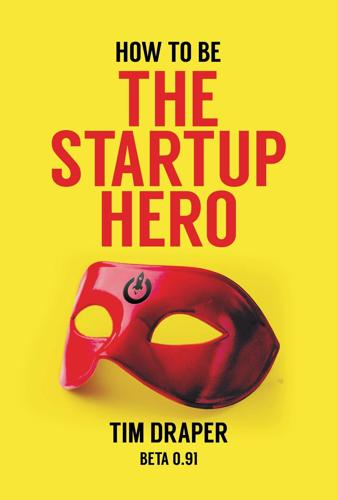
How to Be the Startup Hero: A Guide and Textbook for Entrepreneurs and Aspiring Entrepreneurs
by
Tim Draper
Published 18 Dec 2017
My children have all gotten into the game. Billy works with me at Draper Associates; Jesse runs Halogen Ventures, the first venture fund dedicated to funding only women; and Adam runs Boost, the leading accelerator for advanced technologies, starting with Bitcoin/Blockchain, Virtual Reality and Augmented Reality (VR/AR), and moving to anything that gets us closer to having commercially available Ironman suits. My youngest daughter, Eleanor, is the first employee at a startup called Bulletin that segments retail space for artisans who want to become entrepreneurs. If I were to do it all over again, I would.
…
Figure out a better way to educate people. Reimagine space travel. How can we get to another planet? Reimagine insurance, real estate, concerts or eyeglasses. Go to basic principles. Why does insurance exist? How would a virtual concert work? Should eyeglasses or contacts also be programmable for an augmented reality experience and for zoom and focus? Use awareness of your surroundings to brainstorm new ideas for potentially heroic startups. Here is an example that is a little yucky, but it makes the point. I went to the bathroom and only saw blood in the toilet. I went to my friend and internist Dr.
…
The people of the world will have access to global information, global governance, global currency and global markets. They will be mobile and less tied to any single geographic region. And now for my wilder predictions: People will be traveling in autonomous vehicles and communicating through virtual (or augmented) reality. They will be living very long lives, while cures for cancer and the aging gene are discovered. Their health will be monitored by sensors designed into their clothes, which will be optically programmable to the owner’s tastes to match what is required for any occasion. Education will be a competitive, accountable industry, where teachers are regularly ranked with the best becoming enormous media celebrities and the worst no longer teaching.
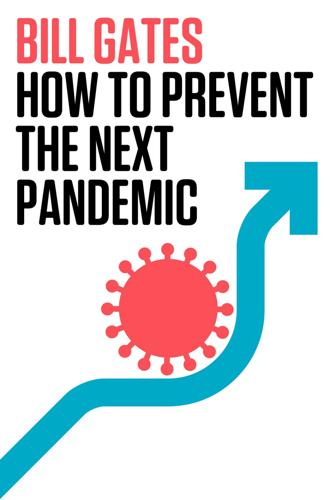
How to Prevent the Next Pandemic
by
Bill Gates
Published 2 May 2022
When done well, presence can not only replicate the experience of an in-person meeting but enhance it: Picture a meeting where engineers at a car company who live on three different continents pull apart a 3D model of a new vehicle’s engine to make improvements. This type of meeting could be accomplished through either augmented reality (where you superimpose a digital layer on top of our physical environment) or virtual reality (where you enter a completely immersive world). The change won’t come right away, since most people don’t own tools to enable this kind of capture yet, in contrast to the way the switch to video meetings was enabled by the fact that many people already had PCs or phones with cameras.
…
When we look back at this period, I suspect history will view it as a time of terrible devastation and loss that also sparked massive changes for the better. Skip Notes *1 The pandemic has accelerated digitization all over the world in different ways, but I’m going to focus on high-income countries, where the pace of change has been the most dramatic. *2 In addition to the rise of automation, augmented reality is catching on so that workers can be trained in complex tasks and quickly see the status of a piece of equipment with just a glance. GLOSSARY Antibodies: Proteins created by the immune system that grab onto the surface of a pathogen and attempt to neutralize it. Antigen test: A disease diagnostic that looks for specific proteins on the surface of a pathogen.
…
See epidemic disease surveillance dexamethasone, 113–14, 136 diagnostic tests, 12–13, 19, 61–66 accuracy, 62, 63, 64 antigen tests, 63, 63, 251 cost reduction, 66, 226 innovation in, 64–66, 223–24, 234 lateral flow immunoassay technology, 63, 224 LumiraDx machines for, 64, 224 mass testing, 81 Nexar system, 65 PCR tests, 62–65, 63, 71, 224, 253 prioritizing recipients, 82 speed of results, 62–63, 64, 65 trucker testing, Uganda, 27, 27 ultra-high-throughput processing, 65 U.S. testing failures, 28–30, 29n diarrheal diseases, 5–6 deaths, sub-Saharan Africa, 199 Gates Foundation and, 58 prevention, 6 reducing child mortality and, 215 vaccines and, 6, 6n, 169 digital future, 237–50, 237n COVID lockdowns and digital tools, 237 e-commerce and, 238 education and, 238, 246–48 health data collection, 245 “metaverse,” 242–44 online meetings and platforms, 238, 241–43 remote-work options, 239–41 smartphones and, 237 telehealth services, 244–45 video calls, 249–50 video conferencing, 238 workplace augmented reality, 244n workplace automation, 244 workplace productivity, 241 disease modelers, 77–80 benefits for public health, 79 COVID deaths prediction, 80 data for, 79–80, 82 meteorologist analogy, 78–79, 79n Douglas Scientific, 65 drug development, 122–38, 222 accidental invention, 123 of acetaminophen, 123 of antibodies, 134–35 of antiviral drugs, 123–24 of chloroform, 123 CHO platform and, 134–35 clinical trials, 117, 126–27, 126n costs, 131–32 COVID-19 Therapeutics Accelerator, 129–30, 129n drug candidates, chance of success, 140, 140n global pandemic plan and, 220–21 high-throughput screening, 125 history of, 122–23 of HIV antivirals, 124–25 human challenge study, 130–31 identifying targets (proteins), 124 infection-blocking drugs, 174–75, 220 innate immune response boosters, 137 innovations, 123–25, 130, 137–38 of Paxlovid, 124 phases of, 125–28 placebos, 126–27 Probability of Technical and Regulatory Success, 140 production/manufacturing, 131, 221 RECOVERY trial, U.K., 128, 221 regulatory approval, 128, 220–21 structure-guided drug discovery, 124 synthesized drugs, 122–23 targeting patients and training health care workers, 136–37, 137n E Ebola, 4, 11 contact tracing and, 97 EOCs in Nigeria and, 50, 213 epidemic (2014), 11–13, 56, 213 genetic sequencing and finding origins of an outbreak, 70 mutations (variants), 69 outbreaks (1976 to 2018), 7 polio surveillance teams and, 56 preventing outbreaks, 70 transmission, 11, 12 viral-vectored vaccine for, 156 endemic disease, 6, 188, 226 COVID as, 6, 216, 218 endemic killers, 7 EOCs (emergency operations centers), 49–51, 50, 212 epidemic disease surveillance, 53–82, 217 active or passive, 56, 226 birth/death records and, 57–58, 225 blog posts and social media, 56 causes of death, 58–59, 81 child mortality and, 58–59 computer modeling and, 82 diagnostic tests, 54, 61–66 digital data system, 64 disease modelers, 77–80 experts linking with governments, 76 genetic information on pathogens and, 68–70, 69, 76–77, 81, 225–26 global pandemic plan, 225–27 health systems and, 55–56, 77, 81 integration of systems, 226 in Japan, postal workers and, 57 on the local level, 54 mass testing and, 81 obstacles to, 54 ongoing for COVID, 217 reporting from pharmacists, 57 Seattle Flu Study and, 66–76 signals in the environment, 57 steps to take, 81–82 underinvestment in, 53 wastewater testing, 57 West African polio surveillance teams, 57 epidemics, 6, 7, 13 Global Fund and, 252 “silent epidemics,” 7–8 epidemiology/epidemiologists, 47, 68–70, 69, 76 European Union (EU) COVID vaccination in, 154 development aid by, 232 vaccine approval and, 169 vaccine manufacture and, 221 vaccine purchase, 229 Exemplars in Global Health, 26 F Famulare, Michael, 72, 72n, 80 Fauci, Anthony, 15–16, 86, 88, 153 FDA (U.S.
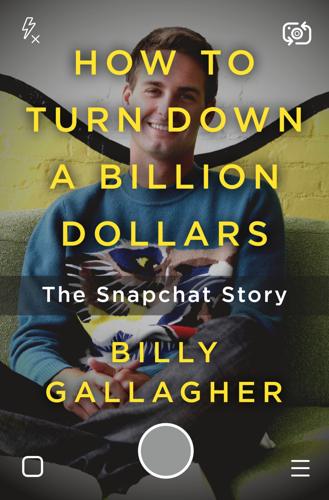
How to Turn Down a Billion Dollars: The Snapchat Story
by
Billy Gallagher
Published 13 Feb 2018
BuzzFeed, January 27, 2014. https://www.buzzfeed.com/jwherrman/meet-the-unlikely-academic-behind-snapchats-new-pitch?utm_term=.njpqz3oO87#.suoBzJA67M Jurgenson, Nathan. “Pics and It Didn’t Happen.” New Inquiry, February 7, 2013. https://thenewinquiry.com/pics-and-it-didnt-happen/ ________. “Digital Dualism versus Augmented Reality.” Cyborgology, February 24, 2011. https://thesocietypages.org/cyborgology/2011/02/24/digital-dualism-versus-augmented-reality/ Levy, Steven. “Snapchat’s Non-Vanishing Message: You Can Trust Us.” Backchannel, April 2, 2015. https://medium.com/backchannel/snapchat-s-non-vanishing-message-you-can-trust-us-6606e6774b8b Morris, Betsy and Seetharaman, Deepa.
…
Taco Bell’s team worked with Snapchat for six weeks to create a sponsored lens for Cinco de Mayo that turned users’ heads into a giant taco shell. The lens was viewed 224 million times in a single day. Users played with the lens on average for 24 seconds, adding up to 12.5 years’ worth of unique play over the course of the day. Augmented reality has long been a nerd’s utopian dream. It would have been hard to predict even just a few years ago that AR’s first big break would be teenagers vomiting rainbows, wearing dog ears, and turning themselves into taco shells with Taco Bell stamped on them. If Evan’s biggest bet yet pays off, Snapchat will own the future of AR too.
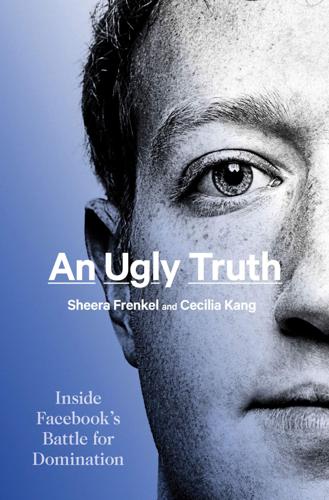
An Ugly Truth: Inside Facebook's Battle for Domination
by
Sheera Frenkel
and
Cecilia Kang
Published 12 Jul 2021
Zuckerberg would kick things off with a boozy dinner catered by one of his favorite Palo Alto restaurants. At the daytime sessions, executives gave exuberant presentations, with charts showing hockey stick growth in revenue and users. They showcased audacious plans for products in artificial intelligence, virtual and augmented reality, and blockchain currency. The group hashed out the biggest problems facing Facebook and discussed ways to beat back competition. The forty or so executives had gotten to know one another well over the years, working through Facebook’s painful transition to mobile, its rocky IPO, and its race for the first billion and then the second billion users.
…
During the pandemic, users were on the site more than ever—2.6 billion people used one of Facebook’s three apps every day—and advertisers were clamoring to reach them. By the time you read this book, Facebook could look very different. Zuckerberg may step away from the job of CEO to spend more time on his philanthropic endeavors. The way people connect on Facebook may not be on a phone but on some other device, like augmented reality headsets. The company’s most popular utility may not be status updates and shares, but something like blockchain payments for retail goods or the production and distribution of blockbuster entertainment. With $55 billion in cash reserves, the company has endless options to buy or innovate its way into new lines of business, as Google has with autonomous vehicles and Apple with health devices.
…
In a quest to break into the lucrative field of corporate communications software, in late November, Facebook bought Kustomer for $1 billion. The popularity of the Zoom tool during the pandemic had rankled, and Zuckerberg challenged employees to come up with a videoconferencing rival. He directed more engineering resources to expand functions on virtual reality and augmented reality headsets, which he described as the new frontier for how people would communicate in the future. The company was also toying with publishing tools for users, fifteen years after the Washington Post’s Donald Graham offered to buy a stake in the tech start-up. And despite pressure from regulators, Zuckerberg was committed to developing its Libra blockchain currency project, which it rebranded as “Diem.”4 Throughout Facebook’s seventeen-year history, the social network’s massive gains have repeatedly come at the expense of consumer privacy and safety and the integrity of democratic systems.
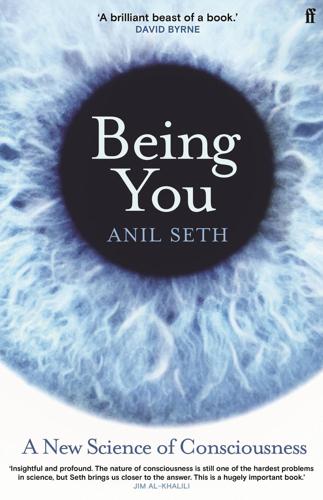
Being You: A New Science of Consciousness
by
Anil Seth
Published 29 Aug 2021
Starting from my office, if you go up two flights of stairs and wend your way through the bowels of the old chemistry department, you’ll find one of our makeshift laboratory spaces – its location and purpose revealed by a piece of paper stuck to the door with blu-tack: ‘VR/AR lab’. Here, we use the rapidly developing technologies of virtual and augmented reality (VR/AR) to investigate the perception of the world and of the self in ways otherwise not possible. A few years ago, we decided to build a ‘hallucination machine’ to see whether we could generate hallucination-like experiences in an experimentally controllable way, by simulating overactive perceptual priors.
…
Only later, at dinner, did it occur to me to wonder how odd it must also have been for my partner to be suddenly transported into the first-person perspective of a mixed-race English neuroscientist with boring shoes. — I find it fascinating that these familiar and easily taken-for-granted aspects of selfhood – subjective body ownership and the first-person perspective – can be so readily manipulated, whether with fake hands and paintbrushes or with the new technologies of virtual and augmented reality. However, there are limits to how far these manipulations can go. As I mentioned earlier, the typical experience in the rubber hand illusion is of somehow feeling the fake hand to be part of one’s body, while clearly knowing that it isn’t. And this ‘typical’ experience varies considerably from person to person, with many people not feeling much at all.
…
, 1, 2, 3, 4 information processing, 1, 2, 3, 4, 5 insects, 1 instantiation, 1, 2 intelligence: artificial, see AI; birds, 1; consciousness and, 1, 2, 3, 4, 5 (Fig. 21), 6, 7, 8, 9; measuring, 1; octopus, 1, 2 intention(s): awareness of, 1; conscious, 1, 2, 3, 4; intentional inhibition, 1; perception of others’, 1; selfhood, 1, 2; urges and, 1 interoception, 1, 2, 3 interoceptive: inference, 1, 2; predictions, 1, 2, 3, 4; sensory signals, 1, 2, 3, 4, 5n Ishiguro, Hiroshi, 1 (Fig. 22), 2 Jain, Ramesh, 1n James, William, 1, 2 Journal of Mathematical Psychology, 1 Kanai, Ryota, 1n Kandel, Eric, 1, 2 Kant, Immanuel, 1, 2, 3, 4, 5 Kelvin, Lord, 1 Kim, Chang-Sub, 1 Koch, Christof, 1, 2 Kuhn, Thomas, 1 Kurzweil, Ray, 1 La Mettrie, Julien Offray de, 1, 2, 3 Lakatos, Imre, 1 Lange, Carl, 1 language, 1, 2, 3, 4, 5, 6 Laplace, Pierre-Simon, 1 learning, 1 Leary, Timothy, 1 Libet, Benjamin, 1 (Fig. 19), 2 life, scientific understanding of, 1 living systems: free energy principle (FEP), 1, 2; properties, 1, 2; self-maintenance, 1 Locke, John, 1 locked-in syndrome, 1, 2n, 3 Loew ben Bezalel, Rabbi Judah, 1 LSD (lysergic acid diethylamide), 1, 2 Lush, Peter, 1 LZW complexity (Lempel-Ziv-Welch complexity), 1, 2, 3, 4 McEwan, Ian, 1, 2 McGinn, Colin, 1 McGregor, Simon, 1 Mach, Ernst, 1, 2 (Fig. 16) Magritte, René, 1 (Fig. 13) Mariola, Alberto, 1 Markov blanket, 1, 2 Marr, David, 1 Masood, Daanish, 1 Massimini, Marcello, 1, 2, 3 materialism, 1; eliminative, 1 measurement, 1, 2 Mediano, Pedro, 1 MEG (magnetoencephalography), 1 memories: amnesia, 1; ‘being a self’, 1, 2, 3; being you, 1; early, 1; selfhood, 1, 2, 3, 4 metacognition, 1, 2, 3 Metzinger, Thomas, 1, 2 minimally conscious state, 1, 2, 3, 4, 5 Monet, Claude, 1, 2 monkeys, 1, 2 Monti, Martin, 1 moods: aspects of embodied selfhood, 1, 2; control-oriented perceptions, 1, 2, 3; interoceptive inference, 1; perception, 1 Mooney image, 1 (Fig. 6), 2 (Fig. 7) Mori, Masahiro, 1 Müller, Johannes, 1 Muotri, Alysson, 1 Muthukumaraswamy, Suresh, 1 mysterianism, 1 Nagel, Thomas, 1 NCC (neural correlates of consciousness), 1, 2, 3, 4 neurons: awareness of, 1; bottom-up view of perception, 1; cerebellum, 1, 2; cerebral cortex, 1, 2; ‘cerebral organoids’, 1; connections, 1, 2n; degree of activity, 1; IIT implications, 1; information and integration, 1, 2; maximally random activity, 1; measurement of activity, 1n; ‘mirror’, 1; network, 1; number, 1n, 2, 3, 4; octopus, 1, 2; serotonin system, 1 neurophenomenology, 1, 2 Neurosciences Institute, San Diego, 1, 2 objecthood, 1, 2, 3 octopus: brains, 1; camouflage, 1; consciousness, 1, 2, 3, 4, 5, 6; intelligence, 1, 2; nervous system, 1; perception, 1, 2; research, 1, 2; RNA sequences, 1 optogenetics, 1 out-of-body experiences (OBEs), 1, 2 ‘out-of-body-like’ experiences, 1, 2, 3, 4 Owen, Adrian, 1 pain, 1, 2, 3, 4 panpsychism, 1, 2, 3, 4, 5 pareidolia, 1 (Fig. 11) Pasteur, Louis, 1 PCI (perturbational complexity index), 1, 2, 3, 4, 5 Penfield, Wilder, 1 perception: accurate (veridical), 1, 2; action and, 1, 2; of bodily changes, 1; as bottom-up feature detection, 1 (Fig. 3), 2; of change, 1 (Fig. 15), 2; changing, 1; concept of the beholder’s share, 1; conscious, 1, 2, 3, 4, 5, 6, 7, 8, 9, 10; control-oriented, 1, 2, 3; as controlled hallucination, 1, 2, 3, 4, 5, 6, 7, 8, 9, 10; ‘deep structure’ of, 1; different kinds of, 1; emotion and mood, 1, 2, 3, 4; exteroceptive, 1, 2; flow of perceptions, 1; forming, 1, 2; influence of predictions on, 1, 6), 2; interoceptive, 1, 2; interoceptive inference, 1; mechanisms of, 1; nested, 1; as neural ‘hypothesis-testing’, 1; of objecthood, 1; octopus, 1, 2; ‘perceptual control theory’, 1; perceptual expectations, 1, 6), 2, 3; predictive, 1, 2, 3, 4, 5, 6, 7, 8, 9, 10; predictive processing, 1, 2; of ‘reality’, 1, 2, 3, 4, 5, 6; proprioception, 1, 2, 3n; role of precision weighting, 1; of self, 1, 2, 3, 4, 5, 6, 7, 8, 9, 10; self-related, 1, 2, 3, 4; social, 1, 2; of time, 1, 2, 3; top-down inference, 1, 2 (Fig. 4), 3, 4; unconscious, 1; varieties of, 1 perceptual inference: Bayesian principles, 1, 2, 3; brain’s adjustment of, 1 (Fig. 5), 2; causality, 1; controlling interior of body, 1; experience of change, 1, 2, 3; experience of the-self-as-really-existing, 1; finding out things, 1, 2; first-person perspective, 1; Helmholtz’s work, 1; Impressionist landscapes, 1; improving, 1; mental states of other people, 1; seeming-to-be, 1; volition and, 1, 2 Petzschner, Frederike, 1 phantom limb syndrome, 1, 2 phenomenological: aspects of vision, 1, 2; character of any specific conscious experience, 1; character of ‘being real’, 1, 2, 3; control, 1; properties of conscious perception, 1, 2; properties of consciousness, 1, 2, 3, 4 phenomenology: of alternative possibilities, 1; of being real, 1; ‘computational’, 1; of all conscious experiences, 1; of emotions and moods, 1, 2; experiences of ‘being a self’, 1; and free energy principle (FEP), 1; of hallucination, 1; ‘hard problem of consciousness’, 1, 2; Nagel’s approach, 1; of normal conscious perception, 1; of objecthood, 1, 2, 3, 4; perceptual, 1; properties of, 1; ‘redness’, 1; subjective properties of conscious experience, 1; ‘synthetic’, 1; of volition, 1, 2 physicalism, 1, 2, 3, 4, 5 Picasso, Pablo, 1 Pinto, Yair, 1 Pissarro, Camille, 1, 2 Plato, 1 Popper, Karl, 1 Powers, William, 1 prediction(s): active inference, 1; ‘best guesses’, 1, 2; bottom-up, 1, 2; brain-based, 1, 2, 3, 4, 5, 6; brain as prediction machine, 1, 2, 3, 4, 5; conditional, 1, 2, 3n, 4, 5, 6; controlled hallucination view, 1, 2, 3; error minimisation, 1, 2, 3, 4, 5, 6, 7; errors, 1, 2, 3, 4, 5, 6, 7, 8; of IIT, 1, 2; influence on perception, 1, 2; interoceptive, 1, 2, 3, 4; neurally encoded, 1; perceptual, 1, 2, 3, 4, 5, 6, 7, 8, 9, 10, 11, 12, 13; predictive control, 1; proprioceptive, 1; sensorimotor, 1; sensory prediction error, 1, 2, 3, 4, 5, 6; temperature control, 1; top-down, 1, 2, 3, 4, 5, 6 predictive processing: active inference, 1, 2; minimising sensory prediction error, 1, 2; relationship to free energy principle (FEP), 1, 2, 3; robot control, 1; term, 1; theory, 1, 2, 3 Price, Richard, 1 probability distribution, 1 (Figs. 8, 9), 2 proprioception, 1, 2, 3n psychedelia, 1, 2, 3, 4, 5 qualia, 1, 2 readiness potential, 1, 2 reality: hallucinations and, 1, 2; instantiation, 1; mind-independent, 1, 2, 3; objective, 1, 2, 3, 4, 5; perception of, 1, 2, 3; physiological, 1; self-unreality, 1; source of, 1; substitutional, 1; virtual, 1, 2, 3, 4, 5, 6 Riegl, Alois, 1 Robbins, Apollo, 1 robots: attitudes to, 1, 2; consciousness issue, 1, 2; Geminoids, 1; Turing test, 1 Roseboom, Warrick, 1 rubber hand illusion, 1 (Fig. 17), 2, 3, 4 Sackler Centre for Consciousness Science, University of Sussex, 1, 2 Sacks, Oliver, 1, 2 Schartner, Michael, 1, 2 Schopenhauer, Arthur, 1 Schurger, Aaron, 1 Science, 1, 2, 3 Scott, Ridley, 1, 2 sea squirt, 1n self: conception of, 1, 2, 3; conscious, 1, 2, 3, 4, 5, 6, 7; embodied, 1, 2, 3, 4, 5, 6; experience of ‘being a self’, 1, 2, 3, 4, 5, 6; ‘mirror self-recognition’, 1; narrative, 1, 2, 3; personal identity, 1, 2, 3, 4, 5, 6, 7, 8; perspectival, 1, 2 (Fig. 16), 3; social, 1, 2, 3, 4; subjective stability of the, 1, 2; volitional, 1, 2 self-change-blindness, 1, 2, 3 self-maintenance, 1 selfhood: Bayesian best guesses, 1, 2; beast machine view of, 1, 2, 3; being-a-self, 1, 2; change blindness, 1, 2; conscious, 1, 2, 3, 4, 5, 6; ‘ego dissolution’, 1; embodied, 1, 2, 3, 4; essence of, 1, 2; experiences of, 1, 2, 3, 4, 5; experiences of unified, 1; experiences of volition, 1, 2; first-person perspective, 1, 2; ‘free will’, 1; layers of, 1, 2, 3; levels of, 1, 2, 3; memory, 1; monkeys, 1, 2; robot, 1; self-awareness, 1; social, 1; subjective body ownership, 1, 2 sensory prediction error, minimisation of, 1, 2, 3, 4, 5 Shannon, Claude, 1 Sherman, Maxine, 1 Shugg, Wallace, 1 Simons, Daniel, 1 simulation, 1, 2, 3 ‘sine wave speech’, 1, 2 ‘Singularity’ hypothesis, 1 (Fig. 21), 2, 3 Slater, Mel, 1 sleep: dreamless, 1, 2, 3, 4; early, 1; lack of, 1; mammalian brain activity, 1; REM (rapid eye movement), 1, 2; waking from, 1, 2; see also dreaming somatoparaphrenia, 1, 2 souls, 1, 2, 3, 4, 5, 6 split brain, 1, 2, 3, 4, 5, 6 Strawson, Galen, 1 Sussex University, 1, 2, 3, 4, 5 Sutherland, Stuart, 1 Suzuki, Keisuke, 1, 2, 3 synaesthesia, grapheme-colour, 1 teletransportation, 1, 2, 3, 4 Terminator (film), 1 time: entropy, 1; perception of, 1, 2, 3; ‘self-change-blindness’, 1, 2 TMS (transcranial magnetic stimulation), 1, 2 Tononi, Giulio, 1, 2, 3, 4, 5, 6, 7, 8 Turing test, 1, 2, 3 twins, craniopagus, 1 2001: A Space Odyssey (film), 1, 2 ‘uncanny valley’, 1, 2 vegetative state: communication with patient, 1, 2; level of consciousness, 1, 2, 3, 4; measuring consciousness, 1, 2, 3, 4; recovery from, 1 Vienna Circle, 1 virtual and augmented reality (VR/AR), 1, 2, 3 virtual body swapping, 1 virtual objects, 1 (Fig. 14) virtual reality (VR), 1, 2, 3, 4, 5, 6 vitalism, 1, 2, 3, 4 volition, 1, 2; brain basis of, 1, 2, 3; experiences of, 1, 2, 3, 4, 5, 6; experiment, 1 (Fig. 19); phenomenology of, 1 wakefulness (arousal), 1, 2 (Fig. 1), 3, 4 Waller, Bruce, 1n, 2 Wearing, Clive, 1 Wearing, Deborah, 1 Wegner, Daniel, 1 Westworld (TV series), 1 Wheeler, John, 1 Whitman, Charles, 1 Wiener, Norbert, 1, 2 Wittgenstein, Ludwig, 1, 2, 3, 4 xenomelia, 1, 2 ‘zap and zip’ approach, 1 zombie thought experiment, 1, 2, 3, 4, 5, 6 About the Author Anil Seth is a leading British researcher in the field of consciousness science.
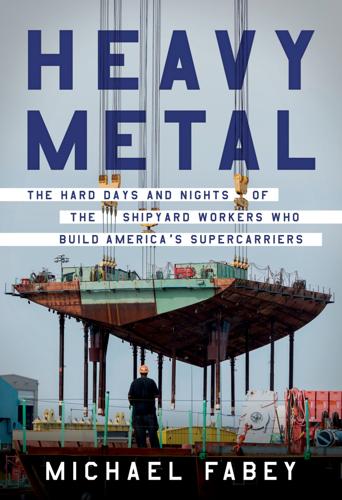
Heavy Metal: The Hard Days and Nights of the Shipyard Workers Who Build America's Supercarriers
by
Michael Fabey
Published 13 Jun 2022
The yard tapped the new generation’s digital savviness to help bridge the gap between experienced and inexperienced shipbuilders, using colorized digital models that users could rotate and orient according to whatever was being worked on, with augmented reality, so they could see what the complete space should look like. The younger workforce intuitively got it and learned very quickly, even teaching the older hands how to build their ships better with these new tricks. At the same time, the seasoned shipbuilders acted like waterfront Yodas, imparting their knowledge, but thanks to the new digital visualizations, at remarkable speed. By waterfront custom, yard supervisors set two craftsmen to build the same compartment, one a seasoned journeyman, the other a rookie. Using augmented reality, the newcomer generally finished the space in the same amount of time as the pro, flattening the learning curve.
…
It could mean more than just equipment damage; it could mean life or death to thousands of sailors. The yard used computers in almost every aspect of shipbuilding. The technology offered shipbuilders a whole new world, a sort of James Cameron avatar existence in which workers “entered” a 3D cyberspace hybrid environment of artificial or augmented reality—one being a completely digital animated recreation of a ship deck or ship space and the other being a combination of that digital recreation and the real thing. Workers moved around, welded this, tightened that bolt, ran some wires—whatever they needed to do, digitally, as a dry run to see where problems might be, to discover what might work and what might not.

This Is for Everyone: The Captivating Memoir From the Inventor of the World Wide Web
by
Tim Berners-Lee
Published 8 Sep 2025
It delivers streams of media to your television and serves as the front end for a trillion dollars’ worth of global transactions every day. This didn’t just happen – it took an enormous amount of collaborative work for the web to evolve in this way. That work continues to this day, powering new technologies like videoconferencing, augmented reality and, of course, artificial intelligence (AI), whose impact is only just starting to be understood. AI breakthroughs are coming so rapidly that it’s difficult to keep pace. From a technical perspective, what’s happening is that software designed to mimic the human brain is ‘evolving’ on giant computers, some big enough to fill a warehouse and some surprisingly small.
…
Many people saw the lifeloggers as a little kooky, but to me they represented an interesting and important movement. Someday, I thought, everyone will live this way. If smartphones had represented an order-of-magnitude increase in data each person generated daily, I expected future developments in augmented reality and wearables technology to once again increase this data haul by several more orders of magnitude. Who would own this data? Facebook? To my thinking at least, this was personal, sovereign data, and it was a human rights issue that the user – the individual – retain complete control. • Inrupt rented an office building in downtown Boston, although our staff were located all over the world.
…
The printing, copying, redistribution, or retransmission of this Content without express written permission is prohibited Index Aadhaar ref1 Aaron, Swartz ref1 Abou-Zahra, Shadi ref1, ref2 Abramatic, Jean-François ref1 academic papers, JSTOR ref1 accessibility ref1, ref2, ref3, ref4, ref5, ref6 ActiveX ref1 activism, hostile (Edelman Trust Barometer) ref1 Adam Smith lecture ref1 addiction, social media ref1, ref2, ref3, ref4 Addis, Louise ref1 Adelman, Len ref1 Adobe ref1 advertisements browsers ref1 cookies ref1 first clickable ref1, ref2 microtargeting ref1, ref2 pop-up ref1 privacy ref1 social media ref1, ref2, ref3 third-party distribution networks ref1, ref2 affordability ref1 Africa ref1, ref2, ref3 agents ref1, ref2, ref3, ref4 AJAX platform ref1 Akamai Technologies ref1, ref2 al-Sisi, Abdel Fattah ref1 Alexa ref1, ref2 Alexa Internet ref1 Alexander, Helen ref1 algorithms consistent hashing ref1 PageRank ref1 public key cryptography ref1 social media ref1, ref2, ref3, ref4, ref5, ref6 Alibaba ref1, ref2 Alice in Wonderland (Carroll) ref1 ‘alignment problem’ ref1 AlphaFold ref1, ref2 AlphaGo ref1 AlphaZero ref1 AltaVista ref1, ref2 ‘always on’ ref1 Amazon ref1, ref2, ref3, ref4, ref5, ref6 Andreessen Horowitz venture-capital fund ref1 Andreessen, Marc ref1, ref2, ref3, ref4, ref5, ref6, ref7 Android ref1 Anklesaria, Farhad ref1 Anonymous ref1 AOL ref1, ref2, ref3, ref4 AOL hometown ref1 Apache HTTP servers ref1 Apollo naming system ref1, ref2 Apple anti-trust lawsuits ref1 apps ref1 business model ref1 HyperCard ref1 interoperability ref1 iPhone ref1, ref2, ref3 Jobs leaves ref1 Jobs returns ref1 partnerships ref1 Siri ref1 standards ref1 WHATWG ref1, ref2, ref3 Applied Semantics ref1 apps interoperability ref1, ref2 killer apps ref1 smartphones ref1 web apps ref1 Arab Spring ref1 Archer, Mary ref1 archives ref1, ref2 Arena browser ref1, ref2 ARPANET ref1 Arroyo, James ref1 artichokes ref1 artificial intelligence (AI) AI ‘agents’ ref1, ref2, ref3 ‘AI winter’ ref1, ref2 authors and musician’s concerns ref1 autonomy ref1 Charlie ref1, ref2 copyright infringement ref1 DeepMind ref1 Ditchley Summit ref1, ref2, ref3 early development ref1 future possibilities ref1, ref2 global summits ref1 GOFAI ref1 GPTs (Generative Pre-trained Transformers) ref1, ref2, ref3, ref4, ref5 ‘human in the loop’ ref1 Inflection.AI ref1 intention economy ref1 military applications ref1 need for inclusivity ref1 neural networks ref1, ref2, ref3, ref4 OpenAI ref1, ref2, ref3, ref4, ref5 paradigm shift ref1 RAGs (Retrieval-Augmented Generation systems) ref1 reinforcement learning from human feedback ref1 search engines ref1 semantic web ref1 simplified text ref1 singularity ref1 speed of development ref1 superintelligence ref1 trust ref1 see also ChatGPT Asimov, Isaac ref1, ref2, ref3, ref4 Association for Computing Machinery (ACM) ref1 atheism ref1, ref2 Athumi ref1 Atkinson, Bill ref1 Attenborough, David ref1 attention economy ref1, ref2, ref3, ref4 attention spans ref1 audio descriptions ref1 audiobooks ref1 augmented reality ref1 Australia ref1, ref2, ref3 authentication ref1 authoritarians ref1, ref2, ref3, ref4 Autodesk ref1 Baidu ref1 bar-code scanners ref1 Barabasi, Albert-Laszlo ref1 Barlow, John Perry ref1, ref2, ref3 Barton, Nick ref1, ref2 BBC ref1, ref2, ref3 Beihang University, Beijing ref1, ref2 Beijing ref1 Belgium ref1, ref2 Bell Labs ref1 Bellingcat organization ref1 Bengio, Yoshua ref1 Berkman Klein Center for Internet and Society ref1, ref2 Berners-Lee, Alice (daughter) ref1, ref2, ref3, ref4 Berners-Lee, Ben (son) ref1, ref2, ref3, ref4, ref5 Berners-Lee, Conway (father) ref1, ref2, ref3, ref4, ref5 Berners-Lee, Mary Lee (mother) ref1, ref2, ref3, ref4, ref5, ref6, ref7 Berners-Lee, Rosemary see Leith, Rosemary Berners-Lee, Tim awards ref1, ref2, ref3, ref4, ref5, ref6 character ref1, ref2, ref3 childhood and education ref1, ref2, ref3, ref4 children ref1, ref2, ref3, ref4, ref5, ref6, ref7, ref8 cottage in Wales ref1 D.G.

Coders: The Making of a New Tribe and the Remaking of the World
by
Clive Thompson
Published 26 Mar 2019
What really intrigued him now, though, was less websites than the newest coding frontier, the iPhone. It was a comparatively new field, ready for someone to figure out the question: What was this gizmo good for? Krieger plunged in and, much as he had with Thunderbird, tinkered with the platform, reading others’ code, figuring out what worked, building little experiments. One was an augmented-reality app, where you could look through the camera and it would show you information about the world around you. “It’d show you an overlay of what crimes had happened around you, on your phone. So it was actually pretty terrifying,” he says. “ ‘There was an arson ten feet away!’ ” One night at a San Francisco coffee shop he ran into Kevin Systrom, a former fellow student from Stanford.
…
Houston introduced me to an employee he regarded as one of his highly productive coders: Ben Newhouse, a 28-year-old who was at the time an engineering lead for the firm. (He later left to head back into entrepreneurship.) Newhouse had—like Houston—created some valuable code while still a student: As a 21-year-old Stanford undergraduate, he created one of the first augmented-reality apps for the iPhone. He was interning at Yelp when he realized he could use the compass and GPS sensors inside the iPhone to make the screen respond to the world around it. After a spree of coding, fueled by a case of Red Bull and—you could probably see this coming—a sleepless night, he’d built a feature that let you hold up your iPhone and see Yelp reviews for nearby businesses floating in the air around you.
…
That’s because the monoculture of tech affects the type of products that get made. When you have a homogenous cohort of people making software and hardware, they tend to produce work that works great for them—but can be useless, or even a disaster for people in other walks of life. Consider the engineers at the VR firm Magic Leap, who excitedly developed their augmented-reality headset only to be told by women on staff that it was wildly uncomfortable for many women, since ponytails interfered with the headband, and the device required you to holster a small computer on your belt, which many women don’t wear. (The engineers appear to have ignored this input: “None of the proposed changes were made to the design,” as a lawsuit alleged.)
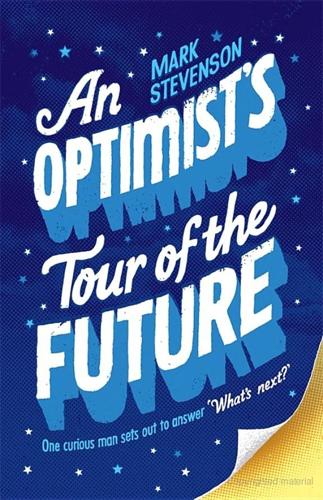
An Optimist's Tour of the Future
by
Mark Stevenson
Published 4 Dec 2010
Well, there are hostile actions going on every day all the time and they’re capable of rendering parts of the ’Net inoperable but I don’t think the machine would stop in and of itself.’ Technology’s story is our story. Burke’s ‘warm blanket of technology’ isn’t separate from us, we’re woven into the fabric of it and vice versa. And in the next chapter of the Internet’s story, intertwined with ‘the Internet of things’ is something called ‘augmented reality,’ a phrase that strikes the same fear into my heart as those thin yellow burger slices that are ‘cheese flavoured’ and not actual cheese. What’s wrong with real reality then? A man walks into a shop and picks up a packet of paper towels. As he does so, an image appears on the packet telling him how much bleach was used in its manufacture.
…
In 2010, Microsoft employee Blaise Agüera y Arcas demonstrated the ability to link up online maps with photographs and video, allowing you to take not only a virtual walk around an area (including ‘walking’ inside buildings) but also to see what’s going on at that moment, with real-time video links embedded into the scene. The same technology can be used to link historical photos and videos into the map, allowing you to step back in time. You can look into the sky and see star maps, or find out what blog entries refer to a particular place. While these two examples are at the cutting edge of ‘augmented reality’ the layering data on top of our day-to-day experiences is already with us. Download the ‘Better World Shopper’ app onto your iPhone, for instance, and it will give you an instant rating of a manufacturer’s record in regard to human rights, environmental policy, animal rights, social justice and community involvement.
…
INDEX 23andMe 274, 297–9 42 100, 273 2001: A Space Odyssey 76, 102, 133 A Abengoa Solar 193 activated carbon 216–17 adenine 37–9, 46 aerosols 168–70 af Ekenstam, Robin 103, 104 Africa 252, 253, 302 Age of Spiritual Machines, The (Kurzweil) 274–5 agriculture 221–40, 253 Agüera y Arcas, Blaise 163 AInimals 92, 94, 96, 102–4, 105 algae 187, 210–12 Algenol Biofuels 187, 189 alleles 45, 48 Allen 83, 84 Amundsen, Roald 178 Anderson, Chris 291–5 Andrews, Lori 27 Angier, Natalie 47 Annas, George 27 Ansari X Prize for Spaceflight 135 Aquaflow Bionomic Corporation 208, 210–12 Arcadia 237–8 Arcadia (Stoppard) 281 Archer, David 177 Archon X Prize 50, 51 Aristotle 97 ARPANET 152 Art of War, The (Sun Tzu) 40–1, 51–2 artificial intelligence 73–107 Artificial Intelligence: AI 75 Asimov, Isaac 76–7 augmented reality 162–4 Augustine Commission 136 Australia climate change scepticism 168, 171 farming 221–40 Internet 157 mousepox virus 63–4 autocatalysis 270 B Bacillus subtilis 100, 273 Bacon, Francis 96–8, 99 bacteria 56–7, 61, 302 Bedau, Mark 66, 280 Bedford, James 15 Berners-Lee, Mike 169–70 Berners-Lee, Tim 154, 159 ‘Better World Shopper’ 163 Bezos, Jeff 141 BigDog 84 Bigelow, Robert 137 Billen, Abigail 31 Binney, Don 218 biochar 208–10, 212–20 biofuels 56–7, 61, 186–9, 210–12 biomass 209–10 bionics 14, 29, 301 biotechnology 35–70 bioterrorism 63–6, 68 BioTime 53–4 Birchall, Martin 20 bird flu 69–70 black carbon 169–70 Black Phantom 212–14, 219, 299, 301 Blackburn, Elizabeth 18 Blackstone Ranch 234 Blackwell, Paul 213 Blasco, Maria 18, 19 Blayney 235–7 Blenheim 210–12 blood transfusion 33 Blue Brain 90, 91 Blue Origin 141 Blundell, James 33 Bonaparte, Napoleon 146 Bongard, Josh 95 Boree Creek 237–8 Borman, Frank 135 Boston Dynamics 74–5 Bostrom, Nick 13, 17, 18, 22–31, 62, 65, 66 carbon-chauvinism 102 existential risk 63 and Kurzweil 267, 269 Bourke, Joanna 149 Brand, Stewart 108–9, 128, 270, 276 Branson, Richard 135, 141 Breazeal, Cynthia 76–82, 84–6, 90–2, 94, 101–2, 269, 277–8 Bréon, François-Marie 169 Brin, Sergey 273–4, 297 Broad Institute 40 Broecker, Wallace 173, 174, 177–86 Brooks, Rodney 76, 82, 83–4, 89, 103, 104, 105 Brown, John Seely 156, 282–3, 284–91, 292, 304 Buck, Vicki 207–8, 210–20, 288, 299 Burke, James 160, 161, 162 Burma 157 C C-3PO 76, 83, 102 cadmium 195, 196 California NanoSystems Institute 118 cancer 19, 40–1, 46–7 Candide (Voltaire) 218 carbon cycle 209 carbon dioxide (CO2) 57, 167–8, 170–1, 175–7, 186, 302 and agriculture 228–31, 233–5 biochar 209–10 biofuels 187–9 industrial uses 183–4 carbon nanotubes 110–11 carbon neutrality 243–4, 245 carbon scrubbers 179–85, 259–60, 299 Carbonscape 208, 212–20, 299, 301 carrying capacity 128–9 Castillo, Claudia 19–20, 33 Çatağay, Tolga 273 Catholic Church 106 Cave, Nick 304 Celera Genomics 36 Celsias 208 Cerf, Vint 151–64, 187, 245, 268, 283, 284, 299 Chappe, Abraham 146 Chappe, Claude 146 Chappe, René 146 charcoal 208–10, 212–20 chess 82, 83, 86 China 157, 200 Chomsky, Noam 303 chromosomes 44, 45–6 Chu, John 155 Chui, Alex 15 Church, George biofuels 57, 211 bioterrorism 63, 65–6 genome engineering 52, 56, 60–3, 64, 70, 105, 186–7, 203 genome sequencing 50–1 human genome project 35 human machines 89 IVF 106 and Lackner, Klaus 189 licensing 66–7 Personal Genome Project 36–7, 39, 41–50, 273, 299, 300, 301 Ćirković, Milan 65 cities 250, 252–3 Claramunt, Xavier 137 climate change 143, 164, 167–72, 174–7, 208 and agriculture 228–31, 233–5 Maldives 241–9, 256–62 Northwest Passage 178 Clinton, Bill 35–6 clouds 169 Cobar 231–5 Collins, Mike 135 Collins, Paul 192 Columbia University Medical Center 31 Columbus, Christopher 303 Comer, Gary 177, 178 Commercial Spaceflight Federation 138 Complete Genomics 51 Connections 160 Consortium for Polynucleotide Synthesis 68 Copenhagen Accord 256 Cornell University 93–6, 98–101, 210 couchsurfing.org 158 Coughlan, Anna 221–2, 239–40 Coughlan, Michael 221–2, 239–40 ‘Couldn’t Be Done’ (Tim Finn) 208 Crichton, Michael 122 cryonics 15–16 Cuba 157 cytosine 37–9, 46 D dance 155 De Cari, Gioia 262 de Grey, Aubrey 14, 16, 17–18, 21, 34 ‘Death Clock’ 12–13 deductive reason 97 Deep Blue 82–3 del Cardayré, Stephen 61 Desertec Industrial Initiative 193 Deutsche Bank 193 diatoms 117–18 diesel 56–7 Dijkstra, Edsger 82 DNA (Deoxyribonucleic acid) 38–9, 40, 297–8 naked 46 nanotechnology 113, 119–20 Parkinson’s disease 273–4 Door into Summer (Heinlein) 142 double helix 38 double pendulum 98–9 Dragon 136 Drexler, Eric 109–17, 125, 127–30, 286, 287, 299, 300 critics 123–4 Grey Goo 121–3 and Kurzweil 268, 269 E E. coli 56–7, 61, 64 E85 cars 188 EasyJet 20 education 284–5, 288 Egypt 157 Ehrenreich, Barbara 303 Eigler, Donald 113, 125 Einhorn, Thomas 31 Einstein, Albert 140 Eisenberger, Peter 184 electricity 285–6 Eliza 86–7 Ember, Carol 147 enhancement 26–9 Endy, Drew 66 energy 191–2, 193–5, 202, 204 fossil fuels 168, 191–2, 193, 302 solar 190–1, 192–3, 195–205, 206, 274, 295, 302 Engines of Creation (Drexler) 109, 110–11, 115, 121, 122, 123, 127–8, 300 Enlightenment 267 Enriquez, Juan 33, 278–82, 293 Eros (Asteroid) 134 Estep, Preston 16 ethanol 187 Ethiopia 199, 200 Etiwanda Station 231–5 Eureqa 101 evolution 70, 105, 279–80, 281–2 existential risk 63 Exxon Mobil 56 EZ-Rocket 142 F Falcon 9 136 farming 221–40, 253 Feynman, Richard 112, 113 Finn, Tim 208 Flannery, Tim 215 flu 64–5, 69–70 Følling’s disease 44, 58 foot-and-mouth disease 68–9 forests 253–4 Forster, E.

Freedom
by
Daniel Suarez
Published 17 Dec 2009
Her mind never missed details. She recalled the moments just before the attack. Merritt had come to her lab to bring captured Daemon equipment from Sao Paulo, Brazil. He'd brought her sports glasses--glasses that were actually a sophisticated heads-up display (or HUD) able to see into a virtual dimension. An augmented reality the Daemon had overlaid on the GPS grid. Sports glasses were the user interface to the Daemon. She turned to look back at the woman, who was moving slowly but deliberately through the crowd as though searching for something. Philips turned to follow her but passed another mourner, a middle-aged man in a black suit, wearing similar glasses.
…
Coming from a software construct that had already orchestrated the deaths of thousands of people, it was a charge Sebeck didn't take lightly--and one he had no idea how to accomplish. Each day he followed the Thread--a glowing blue line that existed in a private virtual dimension Daemon operatives called D-Space, which was visually overlaid on the GPS grid. It was an augmented reality, whose 3-D objects were only visible through HUD glasses the Daemon had provided for him. For weeks now the Thread had led Sebeck through the American Southwest, and finally up onto this hillside in the New Mexico desert. Wherever he was going, it seemed he was about to arrive. Just then Sebeck heard labored breathing on the path below him.
…
All that was needed to steal a darknet operative's identity with this system was their biometric data--fingerprints, iris scan, voice. And The Major had given just that to the lab team. As he powered up the unit and slipped the glasses on, he became Loki Stormbringer. He suddenly saw the HUD display first-person, instead of on a projection screen, and he saw darknet objects moving in a plane of augmented reality. They were all over the place. This was going to be a very interesting new world. He walked with purpose out the storeroom door, ignoring the guards, and then kept walking briskly toward the distant guest bungalows. He gauged the houses were two miles away across slightly unkempt gardens and uncut lawns.
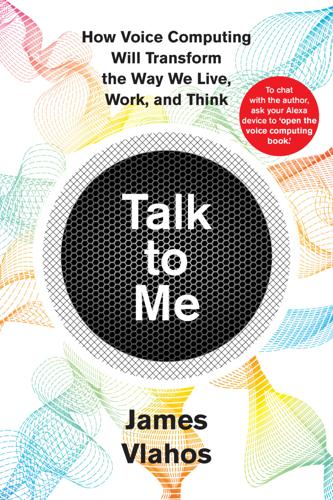
Talk to Me: How Voice Computing Will Transform the Way We Live, Work, and Think
by
James Vlahos
Published 1 Mar 2019
Voice, optimally realized, has the potential to be so easy to use that it hardly feels like an interface at all. We know how to speak because we have been doing it for all of our lives. Screens and smartphones won’t disappear in the conversational era, just as the jet airplane didn’t kill off the car. And voice will be integrated with current and emerging technologies, such as augmented reality. But for many applications, people will ditch keyboards and screens, and opt instead for the more natural, liberating interface of voice. Computers will follow us around rather than needing us to come to them. It’s about time. Voice, ultimately, is ushering humanity into the age of artificial intelligence.
…
A nonprofit research and development lab that had been spun out from Stanford University, SRI was famous for hatching computing innovations that included hypertext and the computer mouse. SRI “was doing everything interesting you could possibly do with computers,” Cheyer recalls. “Speech recognition, handwriting recognition, all sorts of artificial intelligence, virtual and augmented reality. Robots were roaming the halls.” SRI was where Cheyer began working on the first of the many versions of the technology that ultimately became Siri. That particular name would not be chosen until a decade and a half later, and it wasn’t an homage to SRI as people would later assume. But the core concepts were already taking shape in Cheyer’s mind.
…
See also conversational AI; virtual assistants; voice AI SRI development of, 21, 24–27, 28 U.S. military research on, 22–23, 42 voice computing and human control of, 4, 6, 8, 14–15 Artificial Intelligence Laboratory, 110–11 artificial neural networks. See neural networks, artificial Ash, Marcus, 120, 121–23 Assistant (Google). See Google Assistant augmented reality, 6 automata, 65 Automated Insights, 214, 215 automated speech recognition (ASR), 95–98 deep learning and, 97–98 definition of, 9 lip reading and, 98 machine learning and, 10, 144 models for, 96–97 research focus on, 10, 72 of subauditory speech and whispers, 98 technology companies and, 41–43, 97–98 virtual assistants and, 28, 32–33, 225 avatars, 270–76 B backpropagation, 91–92 Bacon, Roger, 64 bank chatbots, 57 Bann, Eugene, 246 Barbie, 169–70, 175–76.
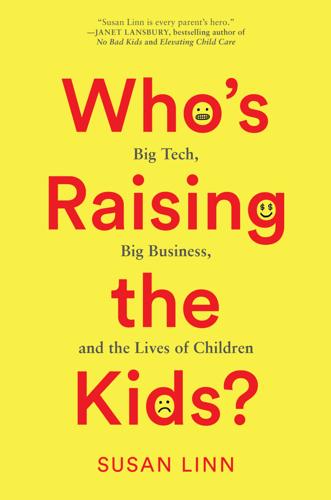
Who’s Raising the Kids?: Big Tech, Big Business, and the Lives of Children
by
Susan Linn
Published 12 Sep 2022
Subsequent partnerships routinely feature toys tied to popular films, TV series, and video games.11* Beanie Babies, the Ty Corporation’s seemingly endless supply of cute little stuffed animals, were all the rage in the 1990s.12 Nintendo introduced Pokémon, the grandparent of today’s collectibles craze, in 1996.13 Pokémon began as a video game that morphed into—among other things—trading cards, a televisionseries, a movie marketed with fast-food giveaway toys, apps, and most recently an augmented reality game. Its original theme song, which features the line “gotta catch ‘em all” sixteen times in just over three minutes is an early example of the kind of discontent fostered by companies today. And cardboard baseball cards have been displaced by plastic—lots and lots of plastic. A report from the World Economic Forum estimates that by 2050 there will be more tons of plastic in the ocean than tons of fish.14 An article on the Forbes website cites studies that found that trashed plastic is already “in the guts of more than 90 percent of the world’s sea birds, in the stomachs of more than half of the world’s sea turtles and is even choking the life out of whales.”15 Leading the market in plastic collectible toys are LOL Surprise Dolls, made and marketed by MGA Entertainment.
…
In the early summer of 2016, pedestrians around the world were treated to crowds of strangers, often bunched together, staring at their smartphones and occasionally crying out incomprehensibly “Raticate!” or “Clefable!” or “I’ve got a Vileplume!” They were playing Pokémon GO, the first wildly successful augmented reality game created by Niantic, a Google spinoff owned by its parent company Alphabet, and by Nintendo. The companies worked together to insert animated (and oddly named) Pokémon creatures into everyday life viewed through a smartphone. Pokémon GO rapidly became an international phenomenon. It is available in more than 120 countries.16 In just its first few months, it had five hundred million downloads and generated $470 million.17 And it’s no flash in the pan.
…
Suppose, in collecting data on students with the stated purpose of allowing teachers, parents, and administrators to monitor academic progress, companies sell students’ personal information to other companies, who in turn target kids with behavioral advertising or use their information in-house for that purpose? As the technology for virtual and augmented reality evolves, edtech is only going to get more compelling. Educators are already enthusing about the learning made possible by, for instance, immersing kids in virtual renditions of the prehistoric world.54 Unfortunately, with notable exceptions like the analyses coming out of the National Education Policy Center or the efforts of advocacy organizations, public discourse on the pros and cons of incorporating edtech tends to omit any description of exactly how these apps generate profit and the ways that these features can harm children.
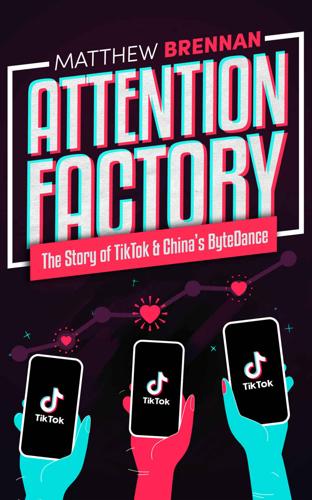
Attention Factory: The Story of TikTok and China's ByteDance
by
Matthew Brennan
Published 9 Oct 2020
In a presentation 203 discussing the rise of Douyin, Kelly Zhang drew attention to four factors—full-screen high definition, music, special effects filters, and personalized recommendations. S martphone screens had overall gotten much larger with higher definition, greatly improving the video watching experience. Face recognition and augmented reality effects had become commonplace, which allowed for more engaging, fun special effects and filters. Image recognition and computer vision had made very considerable advances, greatly reducing the need for manual audits of inappropriate content and allowing for the classification of videos that lacked meta-data.
…
This dynamic ensured the early experience of using any clone would always be inferior. Other technical barriers that competitors would struggle to match included the app’s sophisticated use of computer vision to automate the classification and tagging of videos. It was also continually releasing novel and creative augmented reality video filters. The TikTok brand had already become synonymous with music-centric short video. This brand cachet was powerful as TikTok had reached a critical mass of mindshare among the general public with the name entering the common vernacular. Saying “Let’s shoot a TikTok,” didn’t need to be explained.
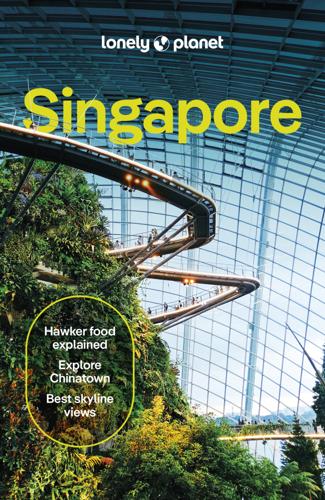
Lonely Planet Singapore
by
Lonely Planet
Published 14 May 2024
• End your day at the Marina Barrage, a popular hangout for Singaporean families and kite enthusiasts, particularly at sunset. • Shuttles run between Bayfront MRT and the conservatories (9am to 9pm daily; S$3 return). Floral Fantasy Opened in 2019, the blooming Floral Fantasy interweaves floral artistry and technology. The highlight is 4D simulated-flight ride Flight of the Dragonfly, which takes you on an AR (augmented reality) journey. (Minimum height for participants is 1m.) The gardens are divided into four landscapes: wander amid flowering plants in Dance, enjoy the sounds of a bubbling brook at Float, and then enter Waltz, where a rain oasis and a poison-dart-frog vivarium await. Last, immerse yourself in the cave-like space of Drift, where 50 species of plant bloom from terraced rock formations.
…
Takashimaya department store | Sorbis/shutterstock © SKY-HIGH CITY VIEWS If you’re feeling high after splashing some moolah at ION Orchard, prepare to get a lot higher! ION Sky is perched 56 levels up and offers an impressive view of the surrounding areas; on clear days, you can see Malaysia in the north and Indonesia in the south. If you download the ION Sky app, local landmarks are easily identifiable through augmented reality – pretty cool. To secure a spot (limited daily availability from noon to 4pm), take the lift from level 4, near Concierge, to 1-Atico, and present any same-day receipt of a minimum of S$50. You'll get a complimentary welcome drink. BEST BARS AROUND ORCHARD NEIGHBOURHOOD Manhattan Inspired by the Golden Age of cocktails, this grand hotel bar is an absolute must for aficionados of fine libations.

To Save Everything, Click Here: The Folly of Technological Solutionism
by
Evgeny Morozov
Published 15 Nov 2013
As a result, chefs are imagined not as autonomous virtuosi or gifted craftsmen but as enslaved robots who should never defy the commands of their operating systems. Another project mentioned in New Scientist is even more degrading. A group of computer scientists at Kyoto Sangyo University in Japan is trying to marry the logic of the kitchen to the logic of “augmented reality”—the fancy term for infusing our everyday environment with smart technologies. (Think of Quick Response Codes that can be scanned with a smartphone to unlock additional information or of the upcoming goggles from Google’s Project Glass, which use data streams to enhance your visual field.) To this end, the Japanese researchers have mounted cameras and projectors on the kitchen’s ceiling so that they can project instructions—in the form of arrows, geometric shapes, and speech bubbles guiding the cook through each step—right onto the ingredients.
…
They can infuse any aspiring chef with great passion for the culinary arts—much more so than surveillance cameras or instruction-spewing robots. Strict adherence to recipes can produce predictable, albeit tasty, dishes—and occasionally this is just what we want. But such standardization can also make our kitchens as exciting as McDonald’s franchises. Celebrating innovation for its own sake is in bad taste. For technology truly to augment reality, its designers and engineers should get a better idea of the complex practices that our reality is composed of. As the molecular gastronomy example illustrates, to reject solutionism is not to reject technology. Nor is it to abandon all hope that the world around us can be ameliorated; technology could and should be part of this project.
…
(Indianapolis: Liberty Fund, 1991), 52. 10 “A cook . . . is not a man who first has a vision of a pie”: Michael Oakeshott, “The Idea of a University,” Academic Questions 17, no. 1 (2004): 23. 10 “the book speaks only to those who know already”: Oakeshott, “Political Education.” 11 what’s going on in our kitchens: this section draws considerably on an earlier article of mine: Evgeny Morozov, “Stay Out of My Kitchen, Robots,” Slate, August 27, 2012, http://www.slate.com/articles/technology/future_tense/2012/08/why_you_don_t_want_a_robot_in_your_kitchen.html. 11 British magazine New Scientist recently covered: Jacob Aron, “Smart Kitchens Keep Novice Chefs on Track,” New Scientist 215, no. 2877 (August 11, 2012): 17, http://www.newscientist.com/article/mg21528774.900-augmented-reality-kitchens-keep-novice-chefs-on-track.html. 11 “For example, if the system detects sugar pouring into a bowl”: ibid. 14 “life, the universe and everything”: reference to Douglas Adams, Life, the Universe and Everything (Los Angeles, CA: Del Rey, 1995). 14 In the afterword to my first book, The Net Delusion: Morozov, The Net Delusion, 337. 14 French philosopher Bruno Latour: Bruno Latour, The Pasteurization of France (Cambridge, MA: Harvard University Press, 1993), 15. 15 What Would Google Do?

The Alignment Problem: Machine Learning and Human Values
by
Brian Christian
Published 5 Oct 2020
If the system becomes a standard in the field, the bias becomes pervasive.”40 Or, as Buolamwini herself puts it, “Halfway around the world, I learned that algorithmic bias can travel as quickly as it takes to download some files off of the internet.”41 After a Rhodes Scholarship at Oxford, Buolamwini came to the MIT Media Lab, and there she began working on an augmented-reality project she dubbed the “Aspire Mirror.” The idea was to project empowering or uplifting visuals onto the user’s face—making the onlooker transform into a lion, for instance. Again, there was only one problem. The Aspire Mirror only worked on Buolamwini herself when she put on a white mask. The culprit is not stochastic gradient descent; it is, clearly, the sets of images on which these systems are trained.
…
And they have also learned a thing or two about how to deal with it. CYCLE-PROOFING YOUR REWARDS: THE SHAPING THEOREM Astro Teller, currently the “captain of moonshots” at X (the Alphabet company formerly known as Google X), has in recent years overseen everything from Google’s self-driving-car project (subsequently spun off into Waymo), to its augmented-reality project Google Glass and its research lab Google Brain. But in 1998, he was focused on a different problem: soccer. With his friend and fellow student David Andre, Teller worked to enter the annual RoboCup soccer competition, with a virtual-soccer-playing program they dubbed Darwin United.41 Reward shaping is part of what enabled them to teach their program how to play.
…
See Arcade Learning Environment Alexander, Robert McNeill, 382n13 Alexnder VIII (Pope), 303 AlexNet brittleness of, 279 complexity of, 100 development of, 21, 23–25 dropout and, 24, 285, 389n21 ensembles and, 285 feature visualization and, 108, 109–10 ground truth gaps and, 75 algorithms, for risk assessment, 7–9, 12, 337n6, 346n13 alignment problem amplification/distillation and, 249 analogies and, 317 corrigibility and, 295 defined, 13 as hopeful, 327–28 inverse reinforcement learning and, 255 parenting and, 166 reinforcement learning and, 151 technical limitations and, 313, 395–96n4 thermostats and, 311–12, 313 See also value alignment Allen, Woody, 170 AlphaGo, 162–63, 243–44, 380nn84–85 AlphaGoZero, 162–63, 244–45, 356n59, 380n86 AlphaZero, 141, 162–63, 205, 248, 380n86 Alstrøm, Preben, 167, 177 ALVINN, 225–26, 228, 229–30, 378n47 Amazon hiring by, 40, 48, 343nn76–77 Mechanical Turk, 22, 43, 75, 179, 369n73 Ambrosino, Richard, 83, 84 Amodei, Dario, 9–11, 263–64 Ampère, André-Marie, 359n19 amplification, 244–46, 381n90 analogies, 38, 41–42, 316–17, 342n66, 397n13 Andre, David, 167, 177 Angwin, Julia, 7–8, 58–61, 62–63, 72, 79 Animal Behavior Enterprises, 154, 161, 364n8 animal research, 121–24, 134, 135, 150, 152–54 animal training, 152, 154, 161, 187–88, 364n8, 365n26 antidiscrimination law, 63–64 Ape and the Child, The (Kellogg and Kellogg), 214–15 Apple, differential privacy, 347n33 Arcade Learning Environment (ALE), 181–83, 209, 369n4 architecture, 18 Arendt, Hannah, 121, 326 Armstrong, Stuart, 291–92, 299 artificial general intelligence (AGI), 208–10 boat race scenario and, 9–11 boredom and, 205 delay risks, 309–10 risks of, 13 as source of knowledge, 328 artistic creation, 110–11 Askell, Amanda, 239 Aspire Mirror, 30 AssistWare, 377n39 “Astronomical Waste” (Bostrom), 309 AT&T Bell Laboratories, 234 Atari. See Arcade Learning Environment; gaming attainable utility preservation (AUP), 294–95, 392n48 augmented reality, 30 AUP. See attainable utility preservation Australian National University, 262–63 autonomous driving, 223–25, 377nn39, 42 architecture for, 228, 378n47 backpropagation for, 377–78n43 danger of, 326–27 imitation and, 225–27, 322 recovery and, 229–30, 232–34, 378n54 Aytar, Yusuf, 221 backflips, 265–66 backgammon, 141, 142 backpropagation, 234, 338–39n12, 361n30, 377–78n43 backward learning, 162, 365n27, 369n9 Bagnell, Drew, 230–31 Bain, Alexander, 156, 227–28, 358n8 Balentine, Bruce, 240 Barocas, Solon, 65–66 Barto, Andrew, 129 on actualism vs. possibilism, 238–39 on evolution, 173 on happiness, 150 on intrinsic motivation, 202, 370n12 on organisms as maximizers, 130 on policy vs. value functions, 137–38 research focus of, 138, 362n51 on shaping, 161 on TD learning, 142 on terseness, 132 Bayesian neural networks, 283–86 Bayesian Rule Lists, 100–01 “Behavior, Purpose and Teleology” (Rosenblueth, Wiener, and Bigelow), 127–28 Bellcore, 170–73 Bellemare, Marc, 181–83, 192–94, 200, 209 Bengio, Samy, 337n9 Bentham, Jeremy, 152, 275–76 Berk, Richard, 82 Berlyne, Daniel, 187, 188–89, 190, 194, 197, 198 Berridge, Kent, 147 BERT model, 344–45n94 Bertrand, Marianne, 39 bias age, 32, 396n7 Fitzpatrick scale and, 341n48 in Google AdSense, 343n72 in hiring, 39–40, 48 in human judgments, 39, 68 image recognition and, 25–26, 339n24 implicit association test for, 44–45 in medical research, 314, 396n7 in orchestra auditions, 40, 343n73 perpetuation of, 39–40, 43, 49 photography and, 26–29 phrase sources and, 344n83 reality of, 48 redundant encodings and, 40, 64, 343n74 removing from word embedding, 41–44, 344n86, 345n94 in risk-assessment models, 7–9, 57–61, 67, 68, 70, 346–47nn25, 32, 348n52 as source of knowledge, 328 TCAV and, 116 training data and, 26, 29–34, 314–15, 340n44, 341n48, 396n7 transfer learning and, 318 value alignment and, 43 veridical, 45–46 in word embedding, 6–7, 9, 38, 39, 40, 342–43n68, 344–45n94 word embedding as diagnostic tool for, 46–48, 49 See also fairness; representation big data, 99–100 binary system, 336n9 biomechanics, 253–54, 382n13 black boxes.

Human Frontiers: The Future of Big Ideas in an Age of Small Thinking
by
Michael Bhaskar
Published 2 Nov 2021
In truth it's almost impossible to say what results or lines of enquiry we should expect: many discoveries arise almost accidentally as a result of new tools, and that will be true of quantum computing. It is symptomatic of the new toolkit – still in process, potentially of awesome power, with results still, of necessity, perceived only dimly. Likewise digital technology still has far to run. We've not yet had large-scale use of virtual or augmented reality (VR and AR); VR is a total immersion in digitally created worlds, the ‘consensual hallucination’ of William Gibson, AR an omnipresent overlay atop the physical world. These are technologies that are imagined, hyped, built, and fail time and again. It's easy to laugh at gauche forays like Google Glass, but at some stage some application, device or service will gain purchase.
…
utm_source=twitterShare White, Curtis (2003), The Middle Mind: Why Americans Don't Think for Themselves, San Francisco: HarperSanFrancisco White, Curtis (2014), The Science Delusion: Asking the Big Questions in a Culture of Easy Answers, New York: Melville House Whitehead, A.N. (1925), Science and the Modern World, London: Macmillan Williams, Jeffrey J. (2018), ‘The Rise of the Promotional Intellectual’, The Chronicle of Higher Education, accessed 22 August 2018, available at https://www.chronicle.com/article/the-rise-of-the-promotional-intellectual/ Wilson, Edward O. (2017), The Origins of Creativity, London: Allen Lane Winchester, Simon (2008), The Man Who Loved China: The Fantastic Story of the Eccentric Scientist Who Unlocked the Mysteries of the Middle Kingdom, New York: HarperCollins Wolf, Martin (2019), ‘On the Technological Slowdown’, Foreign Affairs, accessed 14 July 2019, available at https://www.foreignaffairs.com/articles/2015-11-19/martin-wolf-innovation-slowdown Wong, May (2017), ‘Scholars say big ideas are getting harder to find’, Phys.org, accessed 10 October 2018, available at https://phys.org/news/2017-09-scholars-big-ideas-harder.html Wootton, David (2015), The Invention of Science: A New History of the Scientific Revolution, London: Allen Lane Wright, Robert (2000), Nonzero: History, Evolution and Human Cooperation, New York: Pantheon Books Wright, Ronald (2006), A Short History of Progress, Edinburgh: Canongate Wu, L., Wang, D., and Evans, J.A. (2019), ‘Large teams develop and small teams disrupt science and technology’, Nature 566, pp. 378–82 Wuchty, Stefan, Jones, Benjamin F., and Uzzi, Brian (2007), ‘The Increasing Dominance of Teams in Production of Knowledge’, Science, Vol. 316 No. 5827, pp. 1036–9 Xinhua (2019), ‘China to build scientific research station on Moon's south pole’, Xinhua, accessed 18 January 2021, available at http://www.xinhuanet.com/english/2019-04/24/c_138004666.htm Yueh, Linda (2018), The Great Economists: How Their Ideas Can Help Us Today, London: Penguin Viking Index ‘0,10’ exhibition 103 ‘0-I’ ideas 31 Aadhaar 265 abstraction 103 AC motor 287, 288 academia 209 Académie des sciences 47 Adam (robot) 235–6 Adams, John 211 Adler, Alfred 188 Adobe 265 Advanced Research Projects Agency (ARPA) 180, 247, 253, 296, 317 AEG 34 aeroplanes 62–6, 68–70, 71, 219 Aeschylus 3 Africa 267, 279–80, 295 age/ageing 122, 158–60, 193 AGI see artificial general intelligence Agrarian Revolution 252 agricultural production 92–3 AI see artificial intelligence Akcigit, Ufuk 193 Alexander the Great 159 Alexander, Albert 52 Alexandrian Library 4, 295, 304 algorithms 175, 185, 196, 224, 235, 245 aliens 240–1, 306, 308–9, 337 Allison, Jim 58 Alphabet 193, 225, 265, 294, 295 AlphaFold software 225–6, 227, 228–9, 233 AlphaGo software 226–7, 228, 233 AlQuraishi, Mohammed 225, 226, 229 Amazon 84–5, 214, 272 Amazon Prime Air 71 American Revolution 139 amino acids 223, 226 Ampère, André-Marie 74–5 Anaximander 35 ancestors 10–12 ancient Greeks 1–6, 7–8, 291, 303–4 Anderson, Kurt 106 Angkor Wat 43 anthrax 47–8, 51 Anthropocene 14–15 anti-reason 211–12 anti-science 211–12 antibacterials 234 antibiotics 38, 52–3, 124, 125, 217, 315 resistance to 235 Apollo missions 70, 315, 316, 317, 318 Apple 33, 85, 159, 185, 186, 193, 272, 296, 312 Aquinas, Thomas 36 AR see augmented reality archaeology 153–4 Archimedes 1–6, 7–8, 19, 27, 32, 37, 39, 291, 304 architecture 103, 115, 188 ARIA 297 Aristarchus 5 Aristotle 24, 108, 282, 304 Arkwright, Richard 25, 26, 34, 253 Armstrong, Louis 103 ARPA see Advanced Research Projects Agency art 99–104, 107–8, 176–7, 236, 321, 339 Artemis (Moon mission) 71, 218 artificial general intelligence (AGI) 226, 237–8, 249, 250, 310, 313, 330, 341 artificial intelligence (AI) 225–9, 233–41, 246–7, 248, 249–52, 262, 266, 300, 310, 312–13, 323, 329, 330, 331, 338 arts 152, 293 see also specific arts Artsimovich, Lev 147 arXiv 116 Asia 264, 267–8, 273, 275 Asimov, Isaac, Foundation 45 Astor, John Jacob 288 astronomy 30, 231, 232 AT&T 85, 181, 183, 185, 197 Ates, Sina T. 193 Athens 24, 295 Atlantis 154 augmented reality (AR) 241–2, 338 authoritarianism 112–13, 284 autonomous vehicles 71, 72, 219 ‘Axial Age’ 108 Azoulay, Pierre 317–18 Bach, J.S. 236 bacillus 46 Bacon, Francis 25, 259 bacteria 38, 46, 53 Bahcall, Safi 31 Ballets Russes 99–100 Baltimore and Ohio railway 67 Banks, Iain M. 310 Bardeen, John 182 BASF 289 Batchelor, Charles 286 Bates, Paul 226 Bayes, Thomas 289 Beagle (ship) 36 Beethoven, Ludwig van 26 Beijing Genomics Institute 257, 294–5 Bell Labs 180–4, 186–8, 190, 206, 214, 217, 289, 296, 322 Benz, Karl 68, 219, 330 Bergson, Henri 109 Bessemer process 80 Bezos, Jeff 71, 326 Bhattacharya, Jay 201, 202, 321 Biden, Joe 59 Big Bang 117, 174, 181 Big Big Ideas 79–80 big ideas 5, 8, 11, 13–19 adoption 28 and an uncertain future 302–36 and art 99–103 artificial 223–38 and the Big Ideas Famine 13 and bisociation 36 blockers to 17–18 and breakthrough problems 46–73, 77, 86, 98, 222, 250, 301 and the ‘burden of knowledge’ effect 154–65, 175, 178, 235, 338 and business formation 95 ceiling 18 conception 37 definition 27–8, 40–1 Enlightenment 132–40, 136–40 era of 109–10 erroneous 176 evidence for 222, 223–54 execution 37 ‘fishing out’ mechanism 152 future of 45, 98, 302–36, 337–43 harmful nature 41–2 how they work 23–45 and the Idea Paradox 178–9, 187, 191, 217, 226, 250, 254, 283–4, 301, 312, 342 and the Kardashev Scale 337–43 long and winding course of 4, 5, 35–8, 136 and the low-hanging fruit paradox 149–54, 167, 178 and luck 38–9 moral 136, 138 nature of 169–72 necessity of 41–3 need for 42–3 normalisation of 171–5, 178 originality of 28 paradox of 143–79 and patents 97 process of 37–8 purchase 37–8 and resources 128 and rights 132–40 and ‘ripeness’ 39 and short-termism 192 slow death of 106–7 slowdown of 98 society's reaction to 216 and specialisation 156, 157–8 today 21–140 tomorrow 141–343 big pharma 31, 60, 185, 217–18, 226 Big Science 118–19 Bill of Rights 137 Bingham, Hiram 153 biology 243–8, 300 synthetic 245–6, 251, 310, 329 BioNTech 218, 298 biotech 195–6, 240, 246, 255–8, 262, 266, 307 bisociation 36 Björk 104 Black, Joseph 26 ‘black swan’ events 307, 310 Bletchley Park 180, 296 Bloom, Nick 91, 92, 93 Boeing 69, 72, 162, 165, 192, 238 Bohr, Niels 104, 118, 159 Boltsmann, Ludwig 188 Boston Consulting Group 204 Botha, P.W. 114 Bowie, David 107 Boyer, Herbert 243 Boyle, Robert 232 Brahe, Tycho 36, 229, 292 brain 166, 246–8, 299–300 collective 299, 300–1 whole brain emulations (‘ems’) 248–9, 341 brain drains 197 brain-to-machine interfaces 247–8 Branson, Richard 71 Brattain, Walter 182 Brazil 266–7, 268, 279 breakthrough organisations 294–9 breakthrough problems 46–73, 77, 86, 98, 222, 234, 250, 301 breakthroughs 2–5, 27–8, 32–7, 41, 129, 152, 156 and expedition novelty 333 hostility to 187 medical 58–60 missing 175 near-misses 160 nuclear power 145 price of 87–98 and short-termism 192 slowdown of 87, 94 society's reaction to 216 and universities 204 see also ‘Eureka’ moments breast cancer 94 Brexit referendum 2016: 208 Brin, Sergey 319, 326 Britain 24, 146, 259, 283, 297 see also United Kingdom British Telecom 196 Brunel, Isambard Kingdom 67 Brunelleschi 232 Bruno, Giordano 216 Buddhism 108, 175, 264–5, 340 Buhler, Charlotte 188–9 Buhler, Karl 188–9 ‘burden of knowledge’ effect 154–65, 175, 178, 235, 338 bureaucracy 198–87, 280–1 Bush, George W. 211 Bush, Vannevar 168, 314–15, 317 business start-ups 95–6 Cage, John 104 Callard, Agnes 111 Caltech 184 Cambridge University 75, 76, 124, 235–6, 257, 294–6 canals 67 cancer 57–61, 76, 93–4, 131, 234, 245, 318 research 59–61 capital and economic growth 88 gray 192, 196 human 275, 277 capitalism 36, 111–13, 186, 189, 191–8 CAR-Ts see chimeric antigen receptor T-cells carbon dioxide emissions 220–1 Cardwell's Law 283 Carey, Nessa 244 Carnap, Rudolf 189 Carnarvon, Lord 153 cars 289 electric 71 flying 71 Carter, Howard 153 Carter, Jimmy 58 Carthage 3, 43 Cartright, Mary 163 CASP see Critical Assessment of Protein Structure Prediction Cassin, René 135 Catholic Church 206, 230 Cavendish Laboratory 76, 294 Cell (journal) 234 censorship 210–11 Census Bureau (US) 78 Centers for Disease Control 212 Cerf, Vint 253 CERN 118, 233, 239, 252, 296 Chain, Ernst 52, 60, 124 Champollion, Jean-François 155 Chang, Peng Chun 135 change 10–13, 18–19, 24 rapid 30, 32 resistance to 222 slowdown 85 chaos theory 163 Chaplin, Charlie 104 Chardin, Pierre Teilhard de 300 Charpentier, Emmanuelle 244, 256 chemistry 49, 56, 104, 117, 118, 124, 149–50, 159, 241, 244 chemotherapy 57 Chicago 10 chicken cholera 46 chimeric antigen receptor T-cells (CAR-Ts) 58, 61 China 15, 25, 71–2, 111, 112, 138, 208, 213, 216, 255–64, 265, 266, 267, 268, 275, 277, 279, 280, 283, 284–5, 312, 313, 314, 319, 328 Han 259, 260 Ming 284, 308, 309 Qing 260 Song 24, 259–60, 306 Tang 259–60 Zhou 259 Christianity 108, 303–4, 340 Church, George 245 cities 270–2, 308–9, 340 civilisation collapse 42–4 decay 187 cleantech 195 climate change 219–21, 284, 313–14, 338 clinical trials 218 cliodynamics 339 coal 23, 24, 26, 80, 220 Cocteau, Jean 101 cognitive complexity, high 332–3 cognitive diversity 281–3 Cognitive Revolution 252 Cohen, Stanley N. 243, 244 collective intelligence 339 collectivism 282 Collison, Patrick 117, 272 colour 75 Coltrane, John 104 Columbian Exchange 177 Columbus 38 comfort zones, stepping outside of 334 communism 111, 133, 134, 173, 217, 284 companies creation 95–6 numbers 96–7 competition 87, 283 complacency 221–2 complexity 161–7, 178, 204, 208, 298, 302, 329 high cognitive 332–3 compliance 205–6 computational power 128–9, 168, 234, 250 computer games 107 computers 166–7, 240, 253 computing 254 see also quantum computing Confucianism 133, 259 Confucius 24, 108, 109, 282 Congressional Budget Office 82 connectivity 272 Conon of Samos 4 consciousness 248, 340 consequences 328–9 consolidation, age of 86 Constantine 303 convergence 174, 311–12 Copernicus 29, 30, 41, 152, 171, 229, 232, 292 copyright 195 corporations 204–5 cosmic background microwave radiation 117, 181 cotton weaving, flying shuttle 24–5 Coulomb, Charles-Augustin de 74–5 counterculture 106 Covid-19 (coronavirus) pandemic 13, 14, 15, 55, 86, 113–14, 193, 202, 208, 212, 218, 251–2, 263, 283–4, 297–8, 309, 318, 327 vaccine 125, 245 Cowen, Tyler 13, 82, 94–5, 221 cowpox 47 creativity 188, 283 and artificial intelligence 236 crisis in 108 decrease 106–8 and universities 203 Crete 43 Crick, Francis 119, 296 CRISPR 243, 244, 251, 255–8, 299 Critical Assessment of Protein Structure Prediction (CASP) 224–6, 228 Cronin, Lee 242 crop yields 92–3 cultural diversity 281–3 cultural homogenisation 177 cultural rebellion 106–7 Cultural Revolution 114, 305 culture, stuck 106 Cunard 67 Curie, Marie 104, 144, 203, 289–90, 332 Daniels, John T. 62–3 Daoism 259 dark matter/energy/force 338 DARPA see Defense Advanced Research Projects Agency Darwin, Charles 34, 35–6, 37–8, 41, 77, 109, 118, 171, 289 Darwin, Erasmus 35 data 233 datasets, large 28 Davy, Sir Humphrey 149, 150 Debussy, Claude 100–1 decision-making, bad 43–4 Declaration of Independence 1776: 137 Declaration of the Rights of Man and Citizen 1789: 137 DeepMind 225–9, 296 Defense Advanced Research Projects Agency (DARPA) 315 democracy 111–12 Deng Xiaoping 261 deoxyribonucleic acid (DNA) 119, 223–4, 243, 251, 255, 339 DNA sequencing 56 Derrida, Jacques 109 Deutsch, David 126, 203 Diaghilev, Sergei 99–101 Diamond, Jared 42 Digital Age 180 digital technology 241–2, 243 diminishing returns 87, 91, 94, 97, 118, 123, 126, 130–1, 150, 161, 169, 173, 222, 250, 276, 285, 301 Dirac, Paul 159–60 disruption 34, 96, 109, 119, 157 diversity, cultural 281–3 DNA see deoxyribonucleic acid Dorling, Danny 171 Doudna, Jennifer 244, 251, 256 Douglas, Mary 290 Douthat, Ross 14, 106 drag 65 Drake equation 306 Drezner, Daniel 214 drones, delivery 71, 72 Drucker, Peter 189 drugs 55–7, 124, 235 Eroom's Law 55, 57, 61, 92–3, 119, 161, 234, 245, 338 and machine learning 234 research and development 55–7, 61, 92–4, 119, 161, 172–3, 217–18, 234, 245, 315, 338 see also pharmaceutical industry Duchamp, Marcel 103, 171 DuPont 184 Dutch East India Company 34 Dyson, Freeman 120 dystopias 305–8 East India Company 34 Easter Island 42–3 Eastern Europe 138 ecocides 42–3 economic growth 240, 272, 273, 316 endogenous 94 and ideas 88, 89–92, 95 process of 87–8 slowdown 82, 83, 84, 85, 178 economics 87–9, 98, 339, 340 contradictions of 87 Economist, The (magazine) 188 Edelman annual trust barometer 209 Edison, Thomas 183–4, 286–9, 290, 293 education 127, 277, 324–8 Einstein, Albert 11, 29, 74, 77, 104, 109, 117, 119, 124, 159–60, 203, 332 Eisenstein, Elizabeth 231 Eldredge, Niles 30 electric cars 71 electricity 11, 74–7, 81, 286–7, 289 electromagnetic fields 76 electromagnetic waves 75, 76 elements (chemical) 149–50 Elizabeth II 144–5 employment 204–5 Encyclopædia Britannica 97, 128, 155 ‘End of History’ 112 energy 337–8, 341–2 availability 85 use per capita 85 see also nuclear power engineering 243 England 25, 144–5, 309 Englert, François 118 Enlightenment 130, 136–40, 252 see also Industrial Enlightenment; neo-Enlightenment Eno, Brian 295 entrepreneurship, decline 96 epigenetics 164 epigraphy 236–7 epistemic polarisation 210 Epstein, David 334 Eratosthenes 5 Eroom's Law 55, 57, 61, 92–3, 119, 161, 234, 245, 338 ethical issues 256–7 Euclid 3, 304 ‘Eureka’ moments 2–5, 35, 36–7, 129, 163 Europe 95, 247, 258–60, 268, 268, 271, 283, 304, 308 European Space Agency 71 European Union (EU) 206, 216, 262, 266 Evans, Arthur 153 evolutionary theory 30, 35–6 expedition novelty 333 experimental spaces 296–8 Expressionism 104 Facebook 34, 159, 170, 197 Fahrenheit 232 failure, fear of 335 Faraday, Michael 75 FCC see Future Circular Collider FDA see Food and Drug Administration Federal Reserve (US) 82 Feigenbaum, Mitchell 163 fermentation 49 Fermi, Enrico 143, 159, 306 Fermi Paradox 306 Fernández-Armesto, Felipe 109 fertility rates 269 Feynman, Richard 77, 166, 332 film 104, 106–7, 108, 115 financialism 191–8, 206–7, 214, 217, 219 Firebird, The (ballet) 99–100 ‘first knowledge economy’ 25–6 First World War 54, 99, 104, 187, 188–9 Fisk, James 182 Fleming, Alexander 38, 52, 60, 332 flight 36, 62–6, 68–70, 71, 335 Flint & Company 64 flooding 220, 284 Florey, Howard 52, 60, 124, 332 Flyer, the 62–4, 66, 72 Foldit software 225 Food and Drug Administration (FDA) 55, 60, 93, 212 food supply 81 Ford 34, 253 Ford, Henry 68, 104, 219 Fordism 81 Foucault, Michel 110 Fraenkel, Eduard 124 France 49–51, 54, 64, 67, 95, 279, 309, 332 franchises 31 Franklin, Benjamin 119, 211 Frederick the Great 292 French Revolution 137, 275 Freud, Sigmund 34, 36, 77, 104, 171, 188, 190, 216 frontier 278–9, 283–4, 302, 310–11 Fukuyama, Francis 111–12 fundamentalism 213 Future Circular Collider (FCC) 239 futurology 44 Gagarin, Yuri 70 Galen 303 Galileo 206, 231, 232, 291, 322 Galois, Évariste 159 GDPR see General Data Protection Regulation Gell-Mann, Murray 77 gene editing 243–4, 251, 255–8 General Data Protection Regulation (GDPR) 206 General Electric (GE) 33, 184, 265, 288, 333 General Motors 289 Generation Z 86 genes 223–4 genetic engineering 243–4, 251, 253, 255–8 genetic science 163–4, 202 genius 26 genome, human 119, 202, 244, 255–7, 296, 313 genome sequencing 243–4 germ theory of disease 50–1, 53 Germany 54, 95, 96, 279, 283, 292, 332 Gesamtkunstwerk 99 Gibson, William 241 Glendon, Mary Ann 135 global warming 147 globalisation 177 Go 226–7 Gödel, Kurt 41, 168 Goldman Sachs 197 Goodhart's Law 199 Google 34, 85, 185, 197, 240, 272, 318 20 per cent time 319–20 Google Glass 241 Google Maps 86 Google Scholar 116 Google X 294 Gordon, Robert 13, 83, 94–5 Gouges, Olympe de 137 Gould, Stephen Jay 30 Gove, Michael 208 government 205, 207, 214, 216, 252, 267–8, 297 funding 185–6, 249, 252, 314–19, 321 GPT language prediction 234, 236 Graeber, David 13–14, 111 grants 120, 185–6, 195, 202, 316, 317, 319, 321–3 gravitational waves 117–18, 119 Great Acceleration 309–10 Great Convergence 255–301, 339 Great Disruption 96 Great Enrichment (Great Divergence) 23, 26, 258 Great Exhibition 1851: 293, 309 Great Stagnation Debate 13–14, 16, 17, 45, 72, 82–3, 87, 94–6, 129, 150, 240, 279, 338 Greenland 42 Gropius, Walter 103 Gross Domestic Product (GDP) 82, 90, 128, 278, 318 GDP per capita 23, 78, 82 growth cultures 25 growth theory, endogenous 88–9, 94 Gutenberg, Johannes 36 Guzey, Alexey 200, 322 Haber, Fritz 332 Haber-Bosch process 289 Hadid, Zaha 152 Hahn, Otto 144 Hamilton, Margaret 316 Harari, Yuval Noah 114–15, 236 Harris, Robert 307 Harvard Fellows 200 Harvard, John 156 Harvey, William 34, 291–2 Hassabis, Demis 229, 233 Hayek, Friedrich 189 Hegel, Georg Wilhelm Friedrich 36 Heisenberg, Werner 41, 159, 168, 332 heliocentric theory 5, 29, 118, 232, 304 helium 145 Hendrix, Jimi 105 Henry Adams curve 85 Hero of Alexandria 39 Herper, Matthew 55 Hertz, Heinrich 76 Herzl, Theodor 188 Hesse, Herman 307 Hieron II, king of Syracuse 1–2 Higgs, Peter 118 Higgs boson 117–18, 119, 239 Hinduism 133 Hiroshima 144 Hitler, Adolf 138, 188 Hodgkin, Dorothy 124, 332 Hollingsworth, J.
…
utm_source=twitterShare White, Curtis (2003), The Middle Mind: Why Americans Don't Think for Themselves, San Francisco: HarperSanFrancisco White, Curtis (2014), The Science Delusion: Asking the Big Questions in a Culture of Easy Answers, New York: Melville House Whitehead, A.N. (1925), Science and the Modern World, London: Macmillan Williams, Jeffrey J. (2018), ‘The Rise of the Promotional Intellectual’, The Chronicle of Higher Education, accessed 22 August 2018, available at https://www.chronicle.com/article/the-rise-of-the-promotional-intellectual/ Wilson, Edward O. (2017), The Origins of Creativity, London: Allen Lane Winchester, Simon (2008), The Man Who Loved China: The Fantastic Story of the Eccentric Scientist Who Unlocked the Mysteries of the Middle Kingdom, New York: HarperCollins Wolf, Martin (2019), ‘On the Technological Slowdown’, Foreign Affairs, accessed 14 July 2019, available at https://www.foreignaffairs.com/articles/2015-11-19/martin-wolf-innovation-slowdown Wong, May (2017), ‘Scholars say big ideas are getting harder to find’, Phys.org, accessed 10 October 2018, available at https://phys.org/news/2017-09-scholars-big-ideas-harder.html Wootton, David (2015), The Invention of Science: A New History of the Scientific Revolution, London: Allen Lane Wright, Robert (2000), Nonzero: History, Evolution and Human Cooperation, New York: Pantheon Books Wright, Ronald (2006), A Short History of Progress, Edinburgh: Canongate Wu, L., Wang, D., and Evans, J.A. (2019), ‘Large teams develop and small teams disrupt science and technology’, Nature 566, pp. 378–82 Wuchty, Stefan, Jones, Benjamin F., and Uzzi, Brian (2007), ‘The Increasing Dominance of Teams in Production of Knowledge’, Science, Vol. 316 No. 5827, pp. 1036–9 Xinhua (2019), ‘China to build scientific research station on Moon's south pole’, Xinhua, accessed 18 January 2021, available at http://www.xinhuanet.com/english/2019-04/24/c_138004666.htm Yueh, Linda (2018), The Great Economists: How Their Ideas Can Help Us Today, London: Penguin Viking Index ‘0,10’ exhibition 103 ‘0-I’ ideas 31 Aadhaar 265 abstraction 103 AC motor 287, 288 academia 209 Académie des sciences 47 Adam (robot) 235–6 Adams, John 211 Adler, Alfred 188 Adobe 265 Advanced Research Projects Agency (ARPA) 180, 247, 253, 296, 317 AEG 34 aeroplanes 62–6, 68–70, 71, 219 Aeschylus 3 Africa 267, 279–80, 295 age/ageing 122, 158–60, 193 AGI see artificial general intelligence Agrarian Revolution 252 agricultural production 92–3 AI see artificial intelligence Akcigit, Ufuk 193 Alexander the Great 159 Alexander, Albert 52 Alexandrian Library 4, 295, 304 algorithms 175, 185, 196, 224, 235, 245 aliens 240–1, 306, 308–9, 337 Allison, Jim 58 Alphabet 193, 225, 265, 294, 295 AlphaFold software 225–6, 227, 228–9, 233 AlphaGo software 226–7, 228, 233 AlQuraishi, Mohammed 225, 226, 229 Amazon 84–5, 214, 272 Amazon Prime Air 71 American Revolution 139 amino acids 223, 226 Ampère, André-Marie 74–5 Anaximander 35 ancestors 10–12 ancient Greeks 1–6, 7–8, 291, 303–4 Anderson, Kurt 106 Angkor Wat 43 anthrax 47–8, 51 Anthropocene 14–15 anti-reason 211–12 anti-science 211–12 antibacterials 234 antibiotics 38, 52–3, 124, 125, 217, 315 resistance to 235 Apollo missions 70, 315, 316, 317, 318 Apple 33, 85, 159, 185, 186, 193, 272, 296, 312 Aquinas, Thomas 36 AR see augmented reality archaeology 153–4 Archimedes 1–6, 7–8, 19, 27, 32, 37, 39, 291, 304 architecture 103, 115, 188 ARIA 297 Aristarchus 5 Aristotle 24, 108, 282, 304 Arkwright, Richard 25, 26, 34, 253 Armstrong, Louis 103 ARPA see Advanced Research Projects Agency art 99–104, 107–8, 176–7, 236, 321, 339 Artemis (Moon mission) 71, 218 artificial general intelligence (AGI) 226, 237–8, 249, 250, 310, 313, 330, 341 artificial intelligence (AI) 225–9, 233–41, 246–7, 248, 249–52, 262, 266, 300, 310, 312–13, 323, 329, 330, 331, 338 arts 152, 293 see also specific arts Artsimovich, Lev 147 arXiv 116 Asia 264, 267–8, 273, 275 Asimov, Isaac, Foundation 45 Astor, John Jacob 288 astronomy 30, 231, 232 AT&T 85, 181, 183, 185, 197 Ates, Sina T. 193 Athens 24, 295 Atlantis 154 augmented reality (AR) 241–2, 338 authoritarianism 112–13, 284 autonomous vehicles 71, 72, 219 ‘Axial Age’ 108 Azoulay, Pierre 317–18 Bach, J.S. 236 bacillus 46 Bacon, Francis 25, 259 bacteria 38, 46, 53 Bahcall, Safi 31 Ballets Russes 99–100 Baltimore and Ohio railway 67 Banks, Iain M. 310 Bardeen, John 182 BASF 289 Batchelor, Charles 286 Bates, Paul 226 Bayes, Thomas 289 Beagle (ship) 36 Beethoven, Ludwig van 26 Beijing Genomics Institute 257, 294–5 Bell Labs 180–4, 186–8, 190, 206, 214, 217, 289, 296, 322 Benz, Karl 68, 219, 330 Bergson, Henri 109 Bessemer process 80 Bezos, Jeff 71, 326 Bhattacharya, Jay 201, 202, 321 Biden, Joe 59 Big Bang 117, 174, 181 Big Big Ideas 79–80 big ideas 5, 8, 11, 13–19 adoption 28 and an uncertain future 302–36 and art 99–103 artificial 223–38 and the Big Ideas Famine 13 and bisociation 36 blockers to 17–18 and breakthrough problems 46–73, 77, 86, 98, 222, 250, 301 and the ‘burden of knowledge’ effect 154–65, 175, 178, 235, 338 and business formation 95 ceiling 18 conception 37 definition 27–8, 40–1 Enlightenment 132–40, 136–40 era of 109–10 erroneous 176 evidence for 222, 223–54 execution 37 ‘fishing out’ mechanism 152 future of 45, 98, 302–36, 337–43 harmful nature 41–2 how they work 23–45 and the Idea Paradox 178–9, 187, 191, 217, 226, 250, 254, 283–4, 301, 312, 342 and the Kardashev Scale 337–43 long and winding course of 4, 5, 35–8, 136 and the low-hanging fruit paradox 149–54, 167, 178 and luck 38–9 moral 136, 138 nature of 169–72 necessity of 41–3 need for 42–3 normalisation of 171–5, 178 originality of 28 paradox of 143–79 and patents 97 process of 37–8 purchase 37–8 and resources 128 and rights 132–40 and ‘ripeness’ 39 and short-termism 192 slow death of 106–7 slowdown of 98 society's reaction to 216 and specialisation 156, 157–8 today 21–140 tomorrow 141–343 big pharma 31, 60, 185, 217–18, 226 Big Science 118–19 Bill of Rights 137 Bingham, Hiram 153 biology 243–8, 300 synthetic 245–6, 251, 310, 329 BioNTech 218, 298 biotech 195–6, 240, 246, 255–8, 262, 266, 307 bisociation 36 Björk 104 Black, Joseph 26 ‘black swan’ events 307, 310 Bletchley Park 180, 296 Bloom, Nick 91, 92, 93 Boeing 69, 72, 162, 165, 192, 238 Bohr, Niels 104, 118, 159 Boltsmann, Ludwig 188 Boston Consulting Group 204 Botha, P.W. 114 Bowie, David 107 Boyer, Herbert 243 Boyle, Robert 232 Brahe, Tycho 36, 229, 292 brain 166, 246–8, 299–300 collective 299, 300–1 whole brain emulations (‘ems’) 248–9, 341 brain drains 197 brain-to-machine interfaces 247–8 Branson, Richard 71 Brattain, Walter 182 Brazil 266–7, 268, 279 breakthrough organisations 294–9 breakthrough problems 46–73, 77, 86, 98, 222, 234, 250, 301 breakthroughs 2–5, 27–8, 32–7, 41, 129, 152, 156 and expedition novelty 333 hostility to 187 medical 58–60 missing 175 near-misses 160 nuclear power 145 price of 87–98 and short-termism 192 slowdown of 87, 94 society's reaction to 216 and universities 204 see also ‘Eureka’ moments breast cancer 94 Brexit referendum 2016: 208 Brin, Sergey 319, 326 Britain 24, 146, 259, 283, 297 see also United Kingdom British Telecom 196 Brunel, Isambard Kingdom 67 Brunelleschi 232 Bruno, Giordano 216 Buddhism 108, 175, 264–5, 340 Buhler, Charlotte 188–9 Buhler, Karl 188–9 ‘burden of knowledge’ effect 154–65, 175, 178, 235, 338 bureaucracy 198–87, 280–1 Bush, George W. 211 Bush, Vannevar 168, 314–15, 317 business start-ups 95–6 Cage, John 104 Callard, Agnes 111 Caltech 184 Cambridge University 75, 76, 124, 235–6, 257, 294–6 canals 67 cancer 57–61, 76, 93–4, 131, 234, 245, 318 research 59–61 capital and economic growth 88 gray 192, 196 human 275, 277 capitalism 36, 111–13, 186, 189, 191–8 CAR-Ts see chimeric antigen receptor T-cells carbon dioxide emissions 220–1 Cardwell's Law 283 Carey, Nessa 244 Carnap, Rudolf 189 Carnarvon, Lord 153 cars 289 electric 71 flying 71 Carter, Howard 153 Carter, Jimmy 58 Carthage 3, 43 Cartright, Mary 163 CASP see Critical Assessment of Protein Structure Prediction Cassin, René 135 Catholic Church 206, 230 Cavendish Laboratory 76, 294 Cell (journal) 234 censorship 210–11 Census Bureau (US) 78 Centers for Disease Control 212 Cerf, Vint 253 CERN 118, 233, 239, 252, 296 Chain, Ernst 52, 60, 124 Champollion, Jean-François 155 Chang, Peng Chun 135 change 10–13, 18–19, 24 rapid 30, 32 resistance to 222 slowdown 85 chaos theory 163 Chaplin, Charlie 104 Chardin, Pierre Teilhard de 300 Charpentier, Emmanuelle 244, 256 chemistry 49, 56, 104, 117, 118, 124, 149–50, 159, 241, 244 chemotherapy 57 Chicago 10 chicken cholera 46 chimeric antigen receptor T-cells (CAR-Ts) 58, 61 China 15, 25, 71–2, 111, 112, 138, 208, 213, 216, 255–64, 265, 266, 267, 268, 275, 277, 279, 280, 283, 284–5, 312, 313, 314, 319, 328 Han 259, 260 Ming 284, 308, 309 Qing 260 Song 24, 259–60, 306 Tang 259–60 Zhou 259 Christianity 108, 303–4, 340 Church, George 245 cities 270–2, 308–9, 340 civilisation collapse 42–4 decay 187 cleantech 195 climate change 219–21, 284, 313–14, 338 clinical trials 218 cliodynamics 339 coal 23, 24, 26, 80, 220 Cocteau, Jean 101 cognitive complexity, high 332–3 cognitive diversity 281–3 Cognitive Revolution 252 Cohen, Stanley N. 243, 244 collective intelligence 339 collectivism 282 Collison, Patrick 117, 272 colour 75 Coltrane, John 104 Columbian Exchange 177 Columbus 38 comfort zones, stepping outside of 334 communism 111, 133, 134, 173, 217, 284 companies creation 95–6 numbers 96–7 competition 87, 283 complacency 221–2 complexity 161–7, 178, 204, 208, 298, 302, 329 high cognitive 332–3 compliance 205–6 computational power 128–9, 168, 234, 250 computer games 107 computers 166–7, 240, 253 computing 254 see also quantum computing Confucianism 133, 259 Confucius 24, 108, 109, 282 Congressional Budget Office 82 connectivity 272 Conon of Samos 4 consciousness 248, 340 consequences 328–9 consolidation, age of 86 Constantine 303 convergence 174, 311–12 Copernicus 29, 30, 41, 152, 171, 229, 232, 292 copyright 195 corporations 204–5 cosmic background microwave radiation 117, 181 cotton weaving, flying shuttle 24–5 Coulomb, Charles-Augustin de 74–5 counterculture 106 Covid-19 (coronavirus) pandemic 13, 14, 15, 55, 86, 113–14, 193, 202, 208, 212, 218, 251–2, 263, 283–4, 297–8, 309, 318, 327 vaccine 125, 245 Cowen, Tyler 13, 82, 94–5, 221 cowpox 47 creativity 188, 283 and artificial intelligence 236 crisis in 108 decrease 106–8 and universities 203 Crete 43 Crick, Francis 119, 296 CRISPR 243, 244, 251, 255–8, 299 Critical Assessment of Protein Structure Prediction (CASP) 224–6, 228 Cronin, Lee 242 crop yields 92–3 cultural diversity 281–3 cultural homogenisation 177 cultural rebellion 106–7 Cultural Revolution 114, 305 culture, stuck 106 Cunard 67 Curie, Marie 104, 144, 203, 289–90, 332 Daniels, John T. 62–3 Daoism 259 dark matter/energy/force 338 DARPA see Defense Advanced Research Projects Agency Darwin, Charles 34, 35–6, 37–8, 41, 77, 109, 118, 171, 289 Darwin, Erasmus 35 data 233 datasets, large 28 Davy, Sir Humphrey 149, 150 Debussy, Claude 100–1 decision-making, bad 43–4 Declaration of Independence 1776: 137 Declaration of the Rights of Man and Citizen 1789: 137 DeepMind 225–9, 296 Defense Advanced Research Projects Agency (DARPA) 315 democracy 111–12 Deng Xiaoping 261 deoxyribonucleic acid (DNA) 119, 223–4, 243, 251, 255, 339 DNA sequencing 56 Derrida, Jacques 109 Deutsch, David 126, 203 Diaghilev, Sergei 99–101 Diamond, Jared 42 Digital Age 180 digital technology 241–2, 243 diminishing returns 87, 91, 94, 97, 118, 123, 126, 130–1, 150, 161, 169, 173, 222, 250, 276, 285, 301 Dirac, Paul 159–60 disruption 34, 96, 109, 119, 157 diversity, cultural 281–3 DNA see deoxyribonucleic acid Dorling, Danny 171 Doudna, Jennifer 244, 251, 256 Douglas, Mary 290 Douthat, Ross 14, 106 drag 65 Drake equation 306 Drezner, Daniel 214 drones, delivery 71, 72 Drucker, Peter 189 drugs 55–7, 124, 235 Eroom's Law 55, 57, 61, 92–3, 119, 161, 234, 245, 338 and machine learning 234 research and development 55–7, 61, 92–4, 119, 161, 172–3, 217–18, 234, 245, 315, 338 see also pharmaceutical industry Duchamp, Marcel 103, 171 DuPont 184 Dutch East India Company 34 Dyson, Freeman 120 dystopias 305–8 East India Company 34 Easter Island 42–3 Eastern Europe 138 ecocides 42–3 economic growth 240, 272, 273, 316 endogenous 94 and ideas 88, 89–92, 95 process of 87–8 slowdown 82, 83, 84, 85, 178 economics 87–9, 98, 339, 340 contradictions of 87 Economist, The (magazine) 188 Edelman annual trust barometer 209 Edison, Thomas 183–4, 286–9, 290, 293 education 127, 277, 324–8 Einstein, Albert 11, 29, 74, 77, 104, 109, 117, 119, 124, 159–60, 203, 332 Eisenstein, Elizabeth 231 Eldredge, Niles 30 electric cars 71 electricity 11, 74–7, 81, 286–7, 289 electromagnetic fields 76 electromagnetic waves 75, 76 elements (chemical) 149–50 Elizabeth II 144–5 employment 204–5 Encyclopædia Britannica 97, 128, 155 ‘End of History’ 112 energy 337–8, 341–2 availability 85 use per capita 85 see also nuclear power engineering 243 England 25, 144–5, 309 Englert, François 118 Enlightenment 130, 136–40, 252 see also Industrial Enlightenment; neo-Enlightenment Eno, Brian 295 entrepreneurship, decline 96 epigenetics 164 epigraphy 236–7 epistemic polarisation 210 Epstein, David 334 Eratosthenes 5 Eroom's Law 55, 57, 61, 92–3, 119, 161, 234, 245, 338 ethical issues 256–7 Euclid 3, 304 ‘Eureka’ moments 2–5, 35, 36–7, 129, 163 Europe 95, 247, 258–60, 268, 268, 271, 283, 304, 308 European Space Agency 71 European Union (EU) 206, 216, 262, 266 Evans, Arthur 153 evolutionary theory 30, 35–6 expedition novelty 333 experimental spaces 296–8 Expressionism 104 Facebook 34, 159, 170, 197 Fahrenheit 232 failure, fear of 335 Faraday, Michael 75 FCC see Future Circular Collider FDA see Food and Drug Administration Federal Reserve (US) 82 Feigenbaum, Mitchell 163 fermentation 49 Fermi, Enrico 143, 159, 306 Fermi Paradox 306 Fernández-Armesto, Felipe 109 fertility rates 269 Feynman, Richard 77, 166, 332 film 104, 106–7, 108, 115 financialism 191–8, 206–7, 214, 217, 219 Firebird, The (ballet) 99–100 ‘first knowledge economy’ 25–6 First World War 54, 99, 104, 187, 188–9 Fisk, James 182 Fleming, Alexander 38, 52, 60, 332 flight 36, 62–6, 68–70, 71, 335 Flint & Company 64 flooding 220, 284 Florey, Howard 52, 60, 124, 332 Flyer, the 62–4, 66, 72 Foldit software 225 Food and Drug Administration (FDA) 55, 60, 93, 212 food supply 81 Ford 34, 253 Ford, Henry 68, 104, 219 Fordism 81 Foucault, Michel 110 Fraenkel, Eduard 124 France 49–51, 54, 64, 67, 95, 279, 309, 332 franchises 31 Franklin, Benjamin 119, 211 Frederick the Great 292 French Revolution 137, 275 Freud, Sigmund 34, 36, 77, 104, 171, 188, 190, 216 frontier 278–9, 283–4, 302, 310–11 Fukuyama, Francis 111–12 fundamentalism 213 Future Circular Collider (FCC) 239 futurology 44 Gagarin, Yuri 70 Galen 303 Galileo 206, 231, 232, 291, 322 Galois, Évariste 159 GDPR see General Data Protection Regulation Gell-Mann, Murray 77 gene editing 243–4, 251, 255–8 General Data Protection Regulation (GDPR) 206 General Electric (GE) 33, 184, 265, 288, 333 General Motors 289 Generation Z 86 genes 223–4 genetic engineering 243–4, 251, 253, 255–8 genetic science 163–4, 202 genius 26 genome, human 119, 202, 244, 255–7, 296, 313 genome sequencing 243–4 germ theory of disease 50–1, 53 Germany 54, 95, 96, 279, 283, 292, 332 Gesamtkunstwerk 99 Gibson, William 241 Glendon, Mary Ann 135 global warming 147 globalisation 177 Go 226–7 Gödel, Kurt 41, 168 Goldman Sachs 197 Goodhart's Law 199 Google 34, 85, 185, 197, 240, 272, 318 20 per cent time 319–20 Google Glass 241 Google Maps 86 Google Scholar 116 Google X 294 Gordon, Robert 13, 83, 94–5 Gouges, Olympe de 137 Gould, Stephen Jay 30 Gove, Michael 208 government 205, 207, 214, 216, 252, 267–8, 297 funding 185–6, 249, 252, 314–19, 321 GPT language prediction 234, 236 Graeber, David 13–14, 111 grants 120, 185–6, 195, 202, 316, 317, 319, 321–3 gravitational waves 117–18, 119 Great Acceleration 309–10 Great Convergence 255–301, 339 Great Disruption 96 Great Enrichment (Great Divergence) 23, 26, 258 Great Exhibition 1851: 293, 309 Great Stagnation Debate 13–14, 16, 17, 45, 72, 82–3, 87, 94–6, 129, 150, 240, 279, 338 Greenland 42 Gropius, Walter 103 Gross Domestic Product (GDP) 82, 90, 128, 278, 318 GDP per capita 23, 78, 82 growth cultures 25 growth theory, endogenous 88–9, 94 Gutenberg, Johannes 36 Guzey, Alexey 200, 322 Haber, Fritz 332 Haber-Bosch process 289 Hadid, Zaha 152 Hahn, Otto 144 Hamilton, Margaret 316 Harari, Yuval Noah 114–15, 236 Harris, Robert 307 Harvard Fellows 200 Harvard, John 156 Harvey, William 34, 291–2 Hassabis, Demis 229, 233 Hayek, Friedrich 189 Hegel, Georg Wilhelm Friedrich 36 Heisenberg, Werner 41, 159, 168, 332 heliocentric theory 5, 29, 118, 232, 304 helium 145 Hendrix, Jimi 105 Henry Adams curve 85 Hero of Alexandria 39 Herper, Matthew 55 Hertz, Heinrich 76 Herzl, Theodor 188 Hesse, Herman 307 Hieron II, king of Syracuse 1–2 Higgs, Peter 118 Higgs boson 117–18, 119, 239 Hinduism 133 Hiroshima 144 Hitler, Adolf 138, 188 Hodgkin, Dorothy 124, 332 Hollingsworth, J.

The Equality Machine: Harnessing Digital Technology for a Brighter, More Inclusive Future
by
Orly Lobel
Published 17 Oct 2022
Charging Bull again stands alone. Imagine an augmented reality in which hundreds of fearless female images—images of women who have changed the world, images of women’s daily realities, images of what we envision can be our reality in a more equal world—disrupt every corner of our public spaces. In 2017, the same year that Fearless Girl physically appeared in the heart of New York, the Whole Story Project was launched to leverage digital tech to bring change to cities and spaces on a far larger scale. The project consists of an app that combines augmented reality—an interactive experience of a real-world environment where the real-world settings are enhanced by the digital screen—with GPS technology to show users virtual statues of women all around us in public spaces.
…
Feminist scholar Judith Butler has described the concept of performativity: thinking of the body as a “stylized repetition of acts,” with the body itself as a locus of performances that reflect power and identity.22 We can think of virtual reality as a way to disrupt performativity and turn our designated scripts on their heads. The rituals and rules that govern our spaces can be replicated as we create virtual, artificial, and outside-the-body augmented realities. But we should also envision using machines as opportunities to disembody and reembody, to shift space, gravity, the laws of nature, physical ability, and identity to reconfigure the ways we’ve long interacted. VR technology has also been used to add realism to sexually threatening role-plays to help college women resist sexual attacks.23 This potential of VR to change perspective and behavior is being taken up, unsurprisingly, by the burgeoning market of sexual harassment prevention tech that we saw in the previous sections.
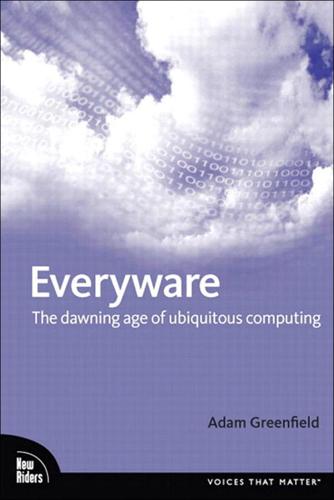
Everyware: The Dawning Age of Ubiquitous Computing
by
Adam Greenfield
Published 14 Sep 2006
It had reached something like a critical mass of thought and innovation by 2005: an upwelling of novelty both intellectual and material, accompanied by a persistent sense, in many quarters, that ubicomp's hour had come 'round at last. Pieces of the puzzle kept coming. By the time I began doing the research for this book, the literature on ubicomp was a daily tide of press releases and new papers that was difficult to stay on top of: papers on wearable computing, augmented reality, locative media, near-field communication, bodyarea networking. In many cases, the fields were so new that the jargon hadn't even solidified yet. Would all of these threads converge on something comprehensible, useful, or usable? Would any of these ubiquitous computings fulfill PARC's promise of a "calm technology?"
…
A series of successful academic studies in the 1980s and 1990s, including those at the MIT Media Lab, ETH ZÜrich, and the Universities of Bristol and Oregon, demonstrated that deploying informatic systems on the body was at least technically feasible. They were less convincing in establishing that anything of the sort would ever be acceptable in daily life. Researchers sprouting head-up "augmented reality" reticules, the lumpy protuberances of prototype "personal servers," and the broadband cabling to tie it all together may have proven that the concept of wearable computing was valid, but they invariably looked like extras from low-budget cyberpunk films—or refugees from Fetish Night at the anime festival.
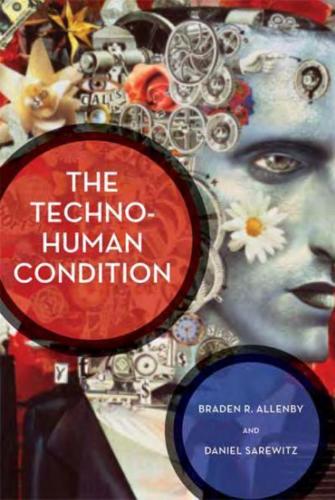
The Techno-Human Condition
by
Braden R. Allenby
and
Daniel R. Sarewitz
Published 15 Feb 2011
This is clearly Level II cognition, and it is far more complex than simple Level I pharmaceutical enhancement. It is also Level III, because we have very little idea what the cultural, institutional, social, and psychological effects of these dramatic increases in cognitive networks will actually lead to-it is, after all, not just Google, but also social networking, augmented reality, augmented cognition (such as self-operating cars), and a myriad of other technologies that are integrating at this point in our history. This confusion of levels will not be an obstacle to the proliferation of human-enhancement technologies. One can hardly doubt that many people, perhaps most, will avail themselves of all the enhancements they can afford and can stomach if they believe they will individually benefit in some way.
…
But no one thought to ask. 3 In many cases, of course, technological evolution is already occurring as a result of powerful and unconscious cultural and economic forces, but it is still possible to try to evaluate potential implications for the environment and for society so that the costs can be minimized and the benefits maximized. For example, the Internet, with its social networking, augmented reality, nearly infinite memory, immediate accessibility, and information overload, is significantly changing human cognitive patterns in new and unpredictable ways. The time to begin studying these changes is now, as the technologies are being developed, rather than later, when we may come to regret some system-scale effects that nonetheless resist change because of technological lock-in, vested interests, development of standards, network economics, and other phenomena.4 In Front of Our Nose 167 8.

The Wondering Jew: Israel and the Search for Jewish Identity
by
Micah Goodman
Published 10 Nov 2020
A technological awareness would address the collapse in empathy and rise in narcissism as well as other threats to the human personality, including the toxic influence of the increased availability of pornography on our sex lives; our addiction to hypnotic video games, which make the nonvirtual world feel dull and slow; our constant exposure to digital stimuli, which sabotages our ability to concentrate and focus; and the loss of eye contact between parents who are absorbed in their screens and children who crave their attention. These phenomena compound one another and create one of the most complicated challenges of the modern day. In the next few years, we are told, virtual- and augmented-reality glasses will enter our lives, greatly increasing the challenge posed by technology to our personalities.6 EXCELLENT SERVANT, TERRIBLE MASTER Technology cannot be stopped. It is developing at a fast and unstoppable pace. Neil Postman, a theorist in the field of mass media, has proposed the following distinction.
…
Eldar Habusha, “They Take a Selfie and Lose Themselves,” Haaretz, 14 December 2015 [Hebrew]. See also Oz Almog and Tamar Almog, Generation Y: Generation Snowflake (Chicago: Vallentine Mitchell, 2019). The Almogs’ study paints a comprehensive sociological portrait of the young generation in Israel. 6. The transition from screens to virtual- or augmented-reality glasses will further enhance the temptation to escape our physical surroundings for the virtual reality, because wearable technology will threaten one of the only advantages that the nondigital world still has over its digital rival—its tangibility. 7. On this growing phenomenon, see Rachel Malek Buda, “Shomer Shabbos: Why Have Keren Peres and Avri Gilad Disconnected from Their Cell Phones?”
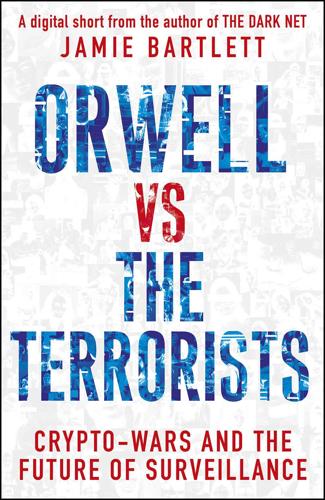
Orwell Versus the Terrorists: A Digital Short
by
Jamie Bartlett
Published 12 Feb 2015
And it is important to bear in mind that the data collection industry is just warming up. More and more everyday objects are being fitted with microchips and going online: fridges, wallets, cars, watches, clothing. Even hair: Sony has recently filed a patent for a SmartWig that could take photos and vibrate when you receive a message. Google’s augmented reality glasses (now discontinued, but surely to re-emerge somewhere) are able to record what and who you’re seeing; smart energy meters that can record your energy consumption patterns will be installed in every home by 2020. All of these devices will be collecting data. As it stands, no one really knows who will own all this information, how will it be regulated or where it’s all going to end up.
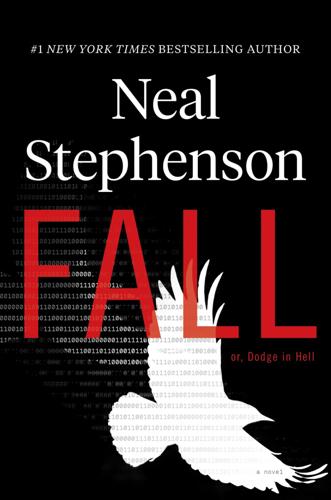
Fall; Or, Dodge in Hell
by
Neal Stephenson
Published 3 Jun 2019
“We’re not just seeing it, we’re feeling it!” he half-joked as everyone was slammed leftward by an abrupt right curve. “Literally feeling it in our bones. The geometry of it, and of our trajectory through space-time, made manifest in our inner ears, in a way that could never by faked by virtual or augmented reality. And it’s all perfectly self-consistent, what you’re experiencing and what I’m experiencing, so that our understandings of the world tally. I keep trying to get Elmo to understand that the brain needs this—that if this kind of coherent world isn’t supplied, why, then not only can I not talk to you, my own brain can’t even talk to itself from one moment to the next.”
…
Resort staff had taken down the tennis net and scattered a few faint, indirect lights around the place so that the attendees wouldn’t bump into one another. As recently as ten years ago it would have seemed a bizarre setting for a technical presentation, but now everyone understood what it meant: Sophia and Matilda were going to be presenting some visuals, and they’d be using augmented reality to do it, and this would all be easier if people could stroll freely through whatever three-dimensional imagery was going to be projected into this space. The opening graphics were two-dimensional, however. Sophia caused them to appear on a virtual screen at one end of the tennis court, so that all of the attendees were at first facing in the same direction.
…
He had them planted in cities all over the place, and they were smart enough to take public transit to a FedEx facility and ship themselves wherever they needed to be, sometimes traveling more quickly than human beings with airplane tickets. He used the same voice for old-fashioned phone calls and teleconferences. And it was the voice of his avatar when he manifested himself in virtual or augmented reality. As now. Hearing the voice, Corvallis turned his head to see El’s avatar standing a couple of meters off to his side. The avatar was also gazing at the Wad, as people had begun referring to the dense cottony underlayment of this display. El turned his head to look at Corvallis. The avatar didn’t look much like Elmo Shepherd.
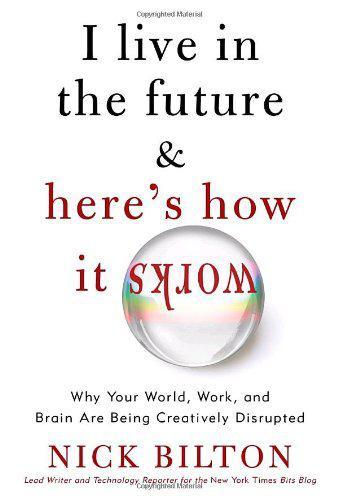
I Live in the Future & Here's How It Works: Why Your World, Work, and Brain Are Being Creatively Disrupted
by
Nick Bilton
Published 13 Sep 2010
Already, new games and game consoles such as the Nintendo Wii allow players to literally swing tennis rackets, dance, do exercises, and participate in other physical activities while playing. Microsoft’s Project Natal creates an augmented reality gaming experience in which you become the actual game controller and there are no buttons or joysticks to worry about. You can play the game by standing in front of your TV and kicking your legs in the air, thereby kicking a ball on the screen. Mobile augmented reality games encourage players to go outside and run around by chasing a figment of a digital reality on mobile devices, blurring the line between sports and video games.
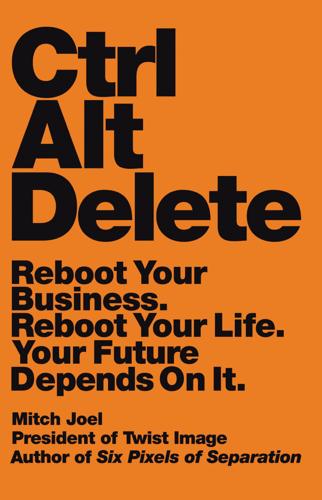
Ctrl Alt Delete: Reboot Your Business. Reboot Your Life. Your Future Depends on It.
by
Mitch Joel
Published 20 May 2013
The lesson Nike is teaching the rest of us is that when your brand can provide that kind of deep utility, people will not only want more from it, but they will take their connectedness to the brand to a whole other plane of existence, passion, and care. In short, another win-win, where the brand is not only providing utility but making serious money doing it. AUGMENTING REALITY ADDS ANOTHER BRICK TO UTILITY. When I was a kid, I was a massive fan of LEGO (I still am). Think back to those childhood days. Your parents would take you to the department store, you would stand in front of what seemed like a Mount Everest filled with every type of LEGO imaginable, and you would dream about all the cool things you could build.
…
At what’s known as the LEGO Digital Box, customers can choose any LEGO box in the store; when they stand in front of the Digital Box, the screen on the kiosk is able to recognize the exact product, and then create a three-dimensional rendering of what is in the box (this technology is known as augmented reality, which can best be described as using a screen and an Internet connection to add a layer of information or visualization on top of what you are looking at). The Digital Box kiosk actually builds the contents of the LEGO box virtually on screen, so that you can see both size and scale of complexity.
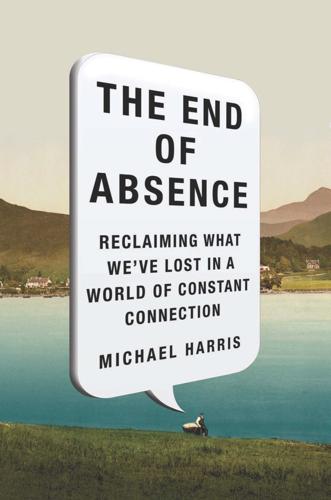
The End of Absence: Reclaiming What We've Lost in a World of Constant Connection
by
Michael Harris
Published 6 Aug 2014
I remember breaking away from the festivities to check my phone, only to find that my friend was posting photos of the very wedding I’d stepped away from: pixelated simulacra of the moment I had left. The most obvious reason a person would ditch the authentic is, of course, to gain access to a heightened version of dull reality. Enter the promise and wonder of Google Glass, released in 2013, which offers just that—augmented reality. The “wearable computer” is a (slightly futuristic, slightly dorky) headset fixed with a miniature display and camera, which responds to voice commands. We can tell it to take a picture of what we’re looking at or simply pull up Google Images’ archive of vintage Hulk Hogan photos because we want to compare the hairdo being sported by that guy on the metro.
…
The Emerald City (like the “wizard” behind the curtain) is a fake. “But isn’t everything here green?” asks Dorothy. “No more than in any other city,” replies Oz. “But my people have worn green glasses on their eyes so long that most of them think it really is an Emerald City.” When we wear emerald glasses with the intention of augmenting reality, we’re always giving ourselves over to some authority’s vision and relinquishing a portion of our own independent sight. All our screen time, our digital indulgence, may well be wreaking havoc on our conception of the authentic—how could it not? But, paradoxically, it’s the impulse to hold more of the world in our arms that leaves us holding more of reality at arm’s length.

Reinventing Capitalism in the Age of Big Data
by
Viktor Mayer-Schönberger
and
Thomas Ramge
Published 27 Feb 2018
Many advanced digital market platforms already offer an impressive flood of multidimensional information, while physical markets, including brick-and-mortar stores, are still pondering ways to adapt the technology for their needs. Retailers, for example, have their hopes pinned on what’s called augmented reality, which enriches what we can see on the sales floor by providing additional information about the available goods. It’s like a much-improved version of Google Glass and will highlight perhaps the three products in a shop that best fit your preferences, and you will learn about them by looking around.
…
INDEX abundance of capital, 142–143, 194 of resources, 220–221 accounting, 90 development of, 91–95 reform of, 172–173 Air France Flight 447, 157–159, 170–171 Airbnb, 70 airline industry, 112 Akerlof, George, 40 Alation, 70 Alexa, 79, 164 Alexandria library, 21 algorithms, 5, 8–9, 71–77, 81, 82, 84, 136, 210 development process for, 71–72 fintechs and, 153 firms and, 128 lack of diversity in, 12 open, call for, 167 opportunities provided by, 74–75 Alibaba, 2, 75, 163, 196, 215 Allende, Salvador, 176, 177 Altman, Sam, 189 Amazon, 9, 30, 52, 68, 69, 74, 75, 76–77, 79, 87–89, 96, 102, 107 annual revenues of, 87 data-rich market structure and, 130 feedback effects and, 164 as a firm, 88–89, 106 low job satisfaction in, 88–89 market concentration in, 161 market model of, 87–88 network effects and, 164 research & development in, 196 scale effects and, 164 American Express, 127 American Research and Development Corporation, 216 Andreesen, Marc, 189 Angkor Wat, 21 animal skins (as currency), 48 antitrust measures, 12, 165 Apollo spacecraft, 22, 159 Apple, 55, 75, 79, 121–122, 169, 196, 215 Apple Music, 74 Apple Pay, 135–136, 146 Arendt, Hannah, 223 Armstrong, Neil, 22 artificial intelligence. See automation/machine learning Ascent of Money, The (Ferguson), 45 Assyrian cuneiform, 23, 66 AT&T, 127, 162–163 augmented reality, 138 automation/machine learning, 9, 77–81, 144–145 banks and, 136, 146, 155 choice and, 218–219 Claudico, 60 Daisy Intelligence, 117 driving systems and, 78, 181–183, 213 firms and, 109, 111–112, 113–120, 128, 130–131 Infi, 79 labor market and, 181–188, 200–202, 205 Libratus, 59–62, 78 overextension in decision-making, 116–120 structural deficiencies of, 169–171 Watson, 109, 111, 113–114, 115, 117, 163, 183 automobile manufacturing.
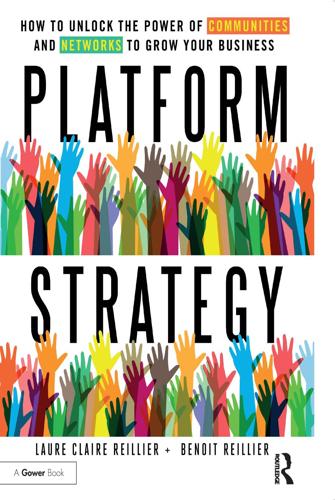
Open for Business Harnessing the Power of Platform Ecosystems
by
Lauren Turner Claire
,
Laure Claire Reillier
and
Benoit Reillier
Published 14 Oct 2017
Viral effects started to build with little acquisition costs.15 These were further compounded by paid partnerships and advertising campaigns.16 Red Packets has today become a new form of communication in China, with over 60 million WeChat users sending Red Packets every day.17 Pokémon Go, which connects players with advertisers through augmented reality (AR) gaming, also experienced phenomenal growth at launch.18 The app game concept is based on the original Game Boy and physical trading card game developed by Nintendo, which has inspired millions of children worldwide – now young adults – over the last 20 years. Pokémon Go’s growth was not sustained, but the Pokémon cultural meme has played a key role in igniting the platform.
…
RankBrain, Google’s deep neural network, which helps generate responses to search queries, now handles about 15% of Google’s daily search queries.8 All major platforms, from Facebook to Microsoft, have invested in deep learning, with Amazon even having released deep learning open-source software for search and product recommendations.9 Search technology, increasingly powered by deep neural networks, is evolving fast beyond text and geolocalized data to include voice and images. No doubt the integration of new technology such as messaging bots (automated search) and augmented reality (visual search) will redefine existing platforms’ user search experience. Connect What defines positive interactions may change over time so it’s worth revisiting these definitions on a regular basis. Mature platforms can also leverage their communities to increase the quality and quantity of relevant content available on the platform.
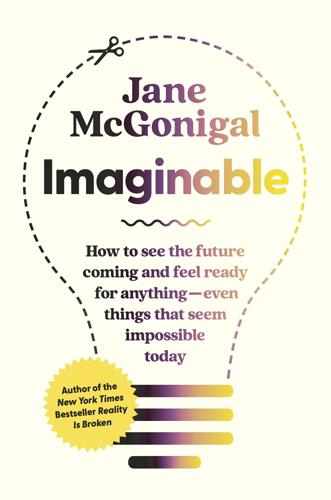
Imaginable: How to See the Future Coming and Feel Ready for Anything―Even Things That Seem Impossible Today
by
Jane McGonigal
Published 22 Mar 2022
This next scenario is about future prescriptions, and it’s a bit different from other ones you’ve played with so far. It’s a location-specific scenario. When you bring a scenario to a specific environment, the details of the real world help you fill in the gaps of your imagination and envision that future much more vividly. Think of it as a kind of augmented reality for your brain, no fancy glasses or screens required. By imagining one way the future could be different in the same kind of physical environment as where the scenario takes place, you’ll be able to imagine and project the future right onto the real world around you. Future Scenario #4: Medicine Bag At a grocery store, roadside fruit stand, or farmers’ market, ten years from today It’s your first shopping trip out with your new “medicine bag.”
…
To help you imagine this future more vividly, I want you to file this scenario away in your brain until the next time you are somewhere surrounded by actual fresh produce—at a grocery store, or a farmers’ market, or a fruit stand. As you take in your real-world surroundings, play back this scenario in your mind. Let this upside-down future where doctors prescribe free fruits and vegetables act as a mental augmented-reality filter that changes how you experience your present-day environment. Don’t just think about it; try to feel it. When you’re someplace where you can blend this future scenario with the real world, go ahead and make your first decision in this future: MOMENT OF CHOICE: Look around and imagine it’s all free to you.
…
But can you imagine—have you tried imagining yet—what your life will be like when facial recognition is used for everything? Within the next decade, “face search apps” will likely be as common as internet search engines are today. You’ll be able to get vast amounts of information about a complete stranger just by pointing your phone, smartwatch, or augmented reality glasses at them. Can you imagine how face searches will change your life? Can you imagine how your friends and family might be affected? Future Scenario #5: Don’t Face Search Me Somewhere public, ten years from today4 You’re minding your own business when you notice someone discreetly raising their phone.
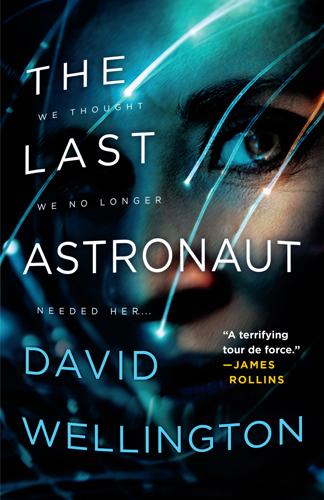
The Last Astronaut
by
David Wellington
Published 22 Jul 2019
No matter how far it had fallen, NASA still had the coolest planes, Jansen thought. A light on its nose flared yellow. “Jansen,” the plane said, in a gender-neutral voice. “Message for Sally Jansen.” She felt all those eyes digging into her spine. Everybody staring. She reached in her bag and pulled on the sunglasses. And saw Roy McAllister standing on the waves, in augmented reality. “You’ve been avoiding me,” he said. The computer that generated his image made him bob up and down in time with the boat, so that he seemed to be dipping his toes in the Florida water. Come on, Roy, she thought. Take the hint. I just want to be— She couldn’t even finish that thought. Because he smiled, and all the planes and crevices of his face shifted, and she saw for the first time how old he’d gotten.
…
He tapped the screen on the podium and got started. Light bloomed above them as an AR image formed, pixels coalescing out of the air. “This,” he said, gesturing at the air above their heads, “is an object called 1I/2017 U1. Also known as ‘Oumuamua, which is a Hawaiian word meaning ‘first messenger.’” In augmented reality the object turned lazily on its short axis. It didn’t look like much, honestly. It was a cigar-shaped lump of rock, a dull red in color. The image was heavily pixelated. “We never got a really good look at it. It came into the solar system way back, in 2017, long before I was born, and, uh…” It occurred to him that some of the people listening to him were old enough to remember 2017.
…
She forced herself not to so much as smile, much less laugh, as he bounced off the walls, trying to snag all the floating hardware before it could get sucked into their air vents. She pushed her way back into the dormitory, where Stevens was putting together a tunable laser that looked like a bazooka with a rainbow-sheened lens on one end. He sent her the assembly manual, and it popped up in her augmented reality view. “It’s like the world’s largest laser pointer,” she said as she studied the diagrams and instructions. “If there’s a giant cat inside 2I,” Stevens said, “we’re golden.” Rao let out the laugh she’d held back before. It came out a little too loud. There’d been a lot of that, lately, people laughing too loud or talking over each other or just staring off into space.

Crushing It!: How Great Entrepreneurs Build Their Business and Influence—and How You Can, Too
by
Gary Vaynerchuk
Published 30 Jan 2018
Maybe the child who became a lawyer to please his or her parents could be earning the same amount now as an eSports (competitive gaming) promoter—or earning millions as a professional e-gamer. Either way, that lawyer would be infinitely happier. Parents are trying to get their children off Pokémon Go when augmented-reality gaming is going to be huge for generations. They think their daughters should make less slime and do more algebra. Slime may be a fad; slime could also become the conduit through which a girl learns the dynamic of supply and demand on Instagram and builds a million-dollar personal brand and company.
…
One day we could have a WTF moment upon hearing that Ralph Lauren filed for Chapter 11 bankruptcy protection or that GQ no longer exists. Learn the lesson now: everyone is playing the same game. If you don’t play offense all the time, every day, every year, no matter how successful you become, someday you will wind up playing defense. You have to keep looking ahead. I’ve got my eye on Marco Polo, Anchor, After School, AR (augmented reality), VR (virtual reality), and AI (artificial intelligence). You know what’s going to happen? One day there’s going to be a little ball hanging above every single human being’s head recording everything they do. Swear to God, it’s going to happen. Maybe it’ll be a camera embedded in your body. I don’t know the details, but I know that recording and documenting every minute of our lives will seem perfectly normal one day.
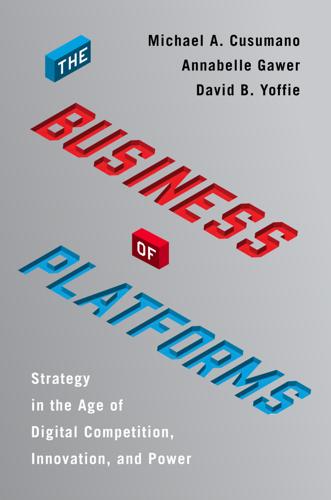
The Business of Platforms: Strategy in the Age of Digital Competition, Innovation, and Power
by
Michael A. Cusumano
,
Annabelle Gawer
and
David B. Yoffie
Published 6 May 2019
The world is full of existing as well as emerging platform battlegrounds that will have great influence on our lives in the future. We can foresee a time when digital platforms and associated ecosystems will be the way we organize new information technologies such as artificial intelligence, virtual and augmented reality, the Internet of things, health care information, and even quantum computing. We can also see peer-to-peer transaction platforms replacing or competing with traditional businesses, especially as the “sharing” or “gig” economy expands and new technologies diffuse. Use of blockchains (distributed ledger technology that is extremely secure though not unbreakable) and cryptocurrencies (digital money, usually independent of banks and governments) may greatly reduce the need for many different services, from traditional banks to supply-chain contracts and monitoring.
…
Looking at the bigger picture, we can see that mainframes ultimately gave way to personal computers, the Internet, social media, mobile devices such as smartphones, and cloud computing. Old and new platforms coexist, though some have become more important than others. Looking forward from what we know today, artificial intelligence, machine learning, virtual and augmented reality, blockchain applications, and even quantum computing are likely to challenge currently dominant platforms, at least in some domains. In this last chapter, we use the principles emphasized in this book to explore ongoing and future platform battlegrounds. We start by summarizing the book’s key arguments.

The Thinking Machine: Jensen Huang, Nvidia, and the World's Most Coveted Microchip
by
Stephen Witt
Published 8 Apr 2025
GTC operated in a similar register. The first night of the conference featured a masquerade charity ball for a local elementary school. (The allure of the event was marginally diminished by the attendees, mostly middle-aged men wearing lanyards.) Featured topics the following day included quantum chemistry, augmented reality, and modeling the behavior of black holes. One of the talks was titled “Unlocking Biologically-Inspired Computer Vision: a High-Throughput Approach.” The presenter, an MIT professor named Nicolas Pinto, had assembled a large variety of image-recognition applications—including several neural networks—and used CUDA to optimize them for Nvidia GPUs.
…
The day after GPT-4o’s release, Sutskever resigned. OpenAI soon packaged a conversational module with GPT-4o, and with almost no perceivable delay in response, talking with it felt like talking to a hyperintelligent human. (Many compared it to the AI in Her.) The same day OpenAI released GPT-4o, Google showed off Astra, an augmented-reality AI assistant that seemed able to answer any question, remember any detail, and describe any environment in a fraction of a second. Claude, a model from the start-up Anthropic, rivaled or exceeded GPT-4o on many benchmarks. National governments, unwilling to lease their sensitive data to the cloud, were building large-scale sovereign AI-training centers.

Mobile First
by
Luke Wroblewski
Published 4 Oct 2011
1259 Chapter 3 35http://itunes.apple.com/us/app/nearest-tube/id322436683?mt=8 36http://stackoverflow.com/questions/1649086/detect-rotation-of-android-phone-in-the-browser-with-javascript 37http://mail.glustech.com/SnowGlobe/ 38http://thenextweb.com/apps/2010/12/21/hidden-safari-mobile-feature-reveals-augmented-reality-capability/ Chapter 4 39http://www.dmolsen.com/mobile-in-higher-ed/2011/02/07/the-university-home-page-mobile-first/ 40http://xkcd.com/773/ Chapter 5 41http://paidcontent.org/article/419-pontiflex-about-half-of-mobile-app-clicks-are-accidental/ 42http://developer.apple.com/library/ios/#documentation/UserExperience/Conceptual/MobileHIG/Introduction/Introduction.html 43http://www.lukew.com/ff/entry.asp?
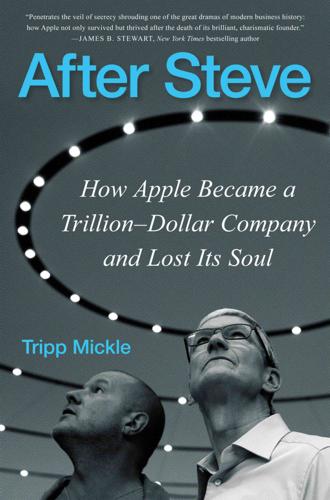
After Steve: How Apple Became a Trillion-Dollar Company and Lost Its Soul
by
Tripp Mickle
Published 2 May 2022
They transformed the cabin of the car into a lounge with four seats turned toward one another rather than facing forward. They discussed materials and considered glass that adjustably tinted the sunroof to lessen the heat of California rays. They imagined mechanical doors that would close without a sound. They pressed for transparent windows that would double as augmented reality displays, superimposing on the glass the name of a restaurant or a street outside. They shared a nostalgia for Toyota’s minimalist van wagon, which had been popular in Japan in the 1980s. It featured subtle angles that gave its boxy shape definition and an angular windshield that was unlike anything else on the market.
…
In doing so, he kept alive the possibility that Apple would be able to surprise and delight the world again. As long as iPhone sales hummed along, the faithful could wonder about the projects going on inside the secretive company: Would it ever make the car it continued to pursue? Would it release the augmented reality glasses that were under development? What about the noninvasive glucose-monitoring system? Would any of those products ever reach an Apple Store? ON MAY 21, 2021, Cook arrived at a courthouse in Oakland to take the witness stand on the last day of an antitrust trial against Apple. Fortnite creator Epic Games had sued the tech giant, alleging that it unfairly prohibited competing app stores on iPhones and forced developers to give it a 30 percent cut of sales.
…
Taking its name from the Magna Carta, which granted rights to the English people, the Prince Charles–led effort aims to address climate change by giving rights to nature. Ive developed a seal with an original typeface and swirling green fauna that is awarded to companies that distinguish themselves for their sustainability efforts. He also continues to advise Apple on future projects, including renewed efforts to develop a car and the development of augmented reality devices, such as glasses. Like a rock star who boasts about his next album, he tells people that those future devices will be the best work of his career. “The story of Jony Ive as a paradigm-shifting industrial designer is not done being written,” a longtime colleague on the car project said.
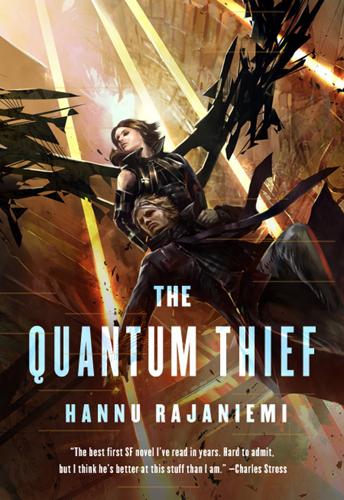
The Quantum Thief
by
Hannu Rajaniemi
Published 1 Jan 2010
She shakes her head. ‘All right,’ she says. ‘Perhonen tells me we are going to have to do this the old-fashioned way. We are going to keep walking until—’ She is talking to empty air. The thief is nowhere to be seen. She takes off the sunglasses and stares at them, looking for some trick, for some augmented reality function that allowed the thief to slip away. But they are just plastic. Perhonen! Where the hell is he? I don’t know. You are the one with the biot link. She can almost hear the amusement in the ship’s voice. ‘Vittu. Perkele. Saatana. The Dark Man’s balls,’ Mieli swears aloud. ‘He’s going to pay for this.’
…
The world clicks into something else when Isidore walks through. The constant tinkering with reality is something that he really hates about the Dust District. The zokus do not have the decency to hide their secrets under the surface of the mundane, but plaster them all over your visual cortex, in layers and layers of spimes and augmented reality, making it impossible to see what truly lies beneath. And the sudden feeling of openness, no boundaries of gevulot, makes him feel something akin to vertigo. There is no diamond cathedral inside. He is standing at the entrance of a large open space, with pipes and wires in the walls and the high ceiling.

Nothing but Net: 10 Timeless Stock-Picking Lessons From One of Wall Street’s Top Tech Analysts
by
Mark Mahaney
Published 9 Nov 2021
In hindsight, Facebook was reacting to some of the highly public controversy around its platform and trying to convince investors (and the public) that it would invest whatever it took to ensure the safety of its platform. It needed to do this. The #deleteFacebook movement was real. But Facebook was also signaling that it wanted to invest substantially in areas like augmented reality/virtual reality and in content for its new Facebook Watch (mini-YouTube) platform. Which meant that these were also offensive investments—not just defensive ones—the company was making. Facebook was going to become less profitable temporarily in part because it wanted to develop new revenue streams, which is exactly what patient, long-term investors want a good management team to do.
…
Chewy considered going public in 2017 but then decided to sell itself to PetSmart for $3.4 billion, at the time the largest-ever acquisition of an e-commerce company. Two years later, the company went public. I first met Chewy management at the company’s headquarters in Dania Beach, Florida, in 2017. This is perhaps not where you would expect a tech company to be located, although Magic Leap, the augmented reality company, was located very close by. I met with Chewy’s then CFO (a former Amazon finance specialist who would soon depart) and his colleague Mario Marte (who would later become CFO). A quick one-hour meeting gave me a great overview of the company, its market opportunity, and how it was competing with Amazon.

Insane Mode: How Elon Musk's Tesla Sparked an Electric Revolution to End the Age of Oil
by
Hamish McKenzie
Published 30 Sep 2017
First, I perused a wall of design concepts that demonstrated some remarkable but highly theoretical ideas: a Roomba-like robot that attaches itself to the underside of the DF 91 to charge the car; text that glows on the side of the vehicle when approached, greeting passengers by name; and an augmented reality overlay on the inside of the car’s windows, so they are transformed into interactive displays. When I turned around, I noticed a huge computer under a desk in the corner of the room and the HTC Vive headset on top of it. I barely had to ask. Faraday’s offices are in the former headquarters of Nissan USA, which vacated the premises in 2006 when, after forty-six years at the site, it moved its operations and 1,300 jobs to central Tennessee.
…
Wu had taught himself English during his time at Intel, where he frequently interacted with American colleagues and made business trips to the United States. He was growing increasingly interested in artificial intelligence at the time he saw Malone’s speech, in part because of a friend named Yong Zhao. Yong had been a founding member of the team that worked on Google Glass, the augmented-reality headset that overlaid a digital interface onto the real world (you may recall that the device looked like a pair of lensless sunglasses from the 2052 Olympics). After leaving Google in 2013, Zhao started an automobile-vision research company but later decided he wanted to pursue other interests.
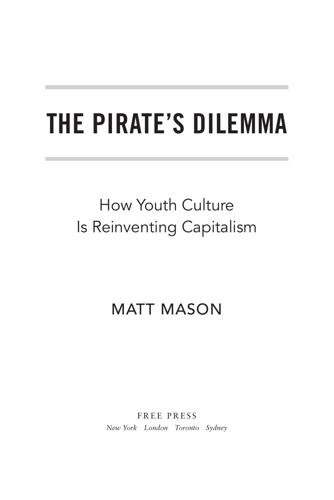
The Pirate's Dilemma: How Youth Culture Is Reinventing Capitalism
by
Matt Mason
Aside from uses in the military, some nightclubs in Barcelona and Rotterdam have implanted chips into their VIP clientele, which verifies who they are and even lets them pay for drinks. Graphical and virtual tags that attach themselves to things in the same way are also on the horizon. Visible through the screen on your phone or laptop, and even through glasses hooked to computers in your clothes, these create “augmented reality” environments. Augmented reality research projects are under way in media research labs such as the one at MIT, and have been for a number of years. A report done by the United Nation in 2005 predicts that the changes this type of ubiquitous computing will bring about will dwarf those already caused by an Internet confined inside computers.
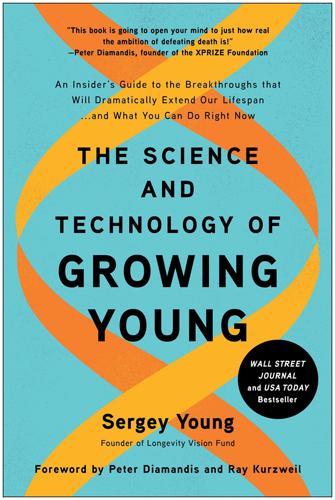
The Science and Technology of Growing Young: An Insider's Guide to the Breakthroughs That Will Dramatically Extend Our Lifespan . . . And What You Can Do Right Now
by
Sergey Young
Published 23 Aug 2021
Kurzweil predicted, nearly a decade in advance, that world chess champion Garry Kasparov would be beaten by a computer like IBM’s Deep Blue. He predicted the widespread use of wireless communication and something like Google nearly twenty years before they came to be. He predicted self-driving cars, remote learning, cloud computing, smart watches, augmented reality, nano devices, robotic exoskeletons, and at least a hundred more innovations, often with eerily accurate timing. In tech circles, when Ray makes a prediction, many people now set their watch by it. Nobody laughs anymore. It is anybody’s guess what will become of longevity escape velocity, or when it may come to pass.
…
Achieving this kind of “technical immortality” does not require that we live purely in the cloud, however. Your entire consciousness could be implanted in a robotic avatar, which gets upgraded along with new technological developments so that you always remain physically relevant. Robotic surgery pioneer and founder of leading augmented reality company Magic Leap, Rony Abovitz, put it this way: “Your physical avatar will be discarded like an old car,” he told me. “You’ll get a new one every few years. But your digital avatar will live on—it will speak to your great-great-great-grandchildren, a thousand years from now.” Perhaps that avatar could even be a biologically identical clone of you, implanted with your memories and consciousness.
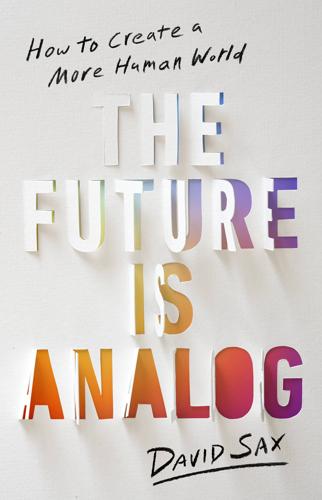
The Future Is Analog: How to Create a More Human World
by
David Sax
Published 15 Jan 2022
The creators and cheerleaders of this future were elevated to celebrity status and in some cases downright deified, called on for their thoughts on everything from consumer trends to the shape of politics. Futurists and “digital prophets,” like the elfin Australian David “Shingy” Shing, with his Vegas fountain of wild hair and Elton John glasses, were paid handsomely to interpret the transformative impact of the latest digital buzzword—big data, wearable, drone, virtual reality (VR), augmented reality (AR), artificial intelligence (AI)—and how it would change everything from the world’s economic order to pizza delivery. Steve Jobs, Bill Gates, Elon Musk, and Mark Zuckerberg were widely regarded as oracles of digitization, and we paid careful attention to their latest projections about the future it would form.
…
“There’s going to be millions of these campfires lit over the next few years. Games, streams, and the interactions they encourage are only just beginning to turn the wheel back to our interactive, community-rich, multiplayer past.” Concerts and comedy shows would increasingly be streamed, Netflix releases would supplant movies in theaters, and augmented reality–enabled Broadway shows would overtake traditional plays. “There will certainly be other concerns around social and economic harm, the way there have been for each prior iteration of disruption,” wrote media executive Farid Ben Amor, in an article for the World Economic Forum, that same year, just as there were when print, television, video games, and other home entertainment technologies came out and displaced live options.

The Uninhabitable Earth: Life After Warming
by
David Wallace-Wells
Published 19 Feb 2019
But the main lesson from the church of technology runs in the other direction, instructing us in subtle and not-so-subtle ways to regard the world beyond our phones as less real, less urgent, and less meaningful than the worlds made available to us through those screens, which happen to be worlds protected from climate devastation. As Andreas Malm has wondered, “How many will play augmented reality games on a planet that is six degrees warmer?” The poet and musician Kate Tempest puts it more brinily: “Staring into the screen so we don’t have to see the planet die.” Presumably, you can already feel this transformation underfoot, in your own life—scrolling through photos of your baby when your actual baby is right in front of you, reading trivial Twitter threads while your spouse is speaking.
…
nine million each year: Pamela Das and Richard Horton, “Pollution, Health, and the Planet: Time for Decisive Action,” The Lancet 391, no. 10119 (October 2017): pp. 407–8, https://doi.org/10.1016/S0140-6736(17)32588-6. growing its carbon emissions: James Conca, “Why Aren’t Renewables Decreasing Germany’s Carbon Emissions?” Forbes, October 10, 2017. “How many will play augmented reality games”: Andreas Malm, The Progress of This Storm: Nature and Society in a Warming World (London: Verso, 2018). The poet and musician Kate Tempest: These are lyrics to her song “Tunnel Vision.” Politics of Consumption a note, handwritten: Annie Correal, “What Drove a Man to Set Himself on Fire in Brooklyn?”

24/7: Late Capitalism and the Ends of Sleep
by
Jonathan Crary
Published 3 Jun 2013
Even if one is inclined to approach technological history as sequences demarcated by inventions and breakthroughs, the relevance of this particular apparatus will be notably and inevitably short-lived. It is more useful to understand such a device as merely one element in a transient flux of compulsory and disposable products. Very different display formats are already on the near horizon, some involving the augmented realities of see-through interfaces and small head-worn devices, in which a virtual screen will be identical with one’s field of vision. Also, there is the development of gesture-based computing in which, instead of a click, a wave, a nod, or the blink of an eye will suffice as a command. Before long these may well displace the apparent ubiquity and necessity of hand-held, touch-based devices, and thereby cancel any special historical claims for what came before.
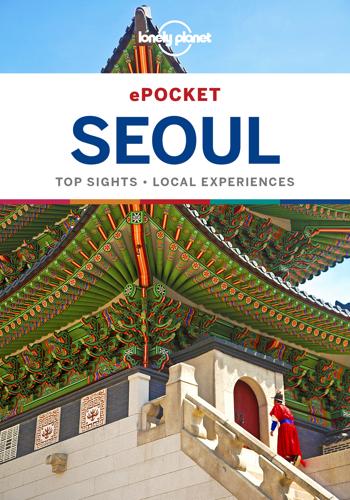
Lonely Planet Pocket Seoul
by
Lonely Planet
The photo hall is selfie heaven and includes the albums, props, miniatures and memorabilia of all of SM Entertainment’s stars, the most famous being Girls’ Generation, Super Junior, Shinee, Exo, Taemin and BoA. Get closer to the shiny outfits and trophies won by the idols in the ticketed SM Museum (₩18,000), and interact with their holograms at the SM Theatre while watching augmented reality concerts. (www.smtownland.com; 513 Yeongdong-daero; admission free; h11am-10pm) 1Seoul Arts Center ARTS CENTRE MAP GOOGLE MAP As well as being home to Seoul’s premier concert halls, this art centre also has three art galleries. Seoul Calligraphy Museum is devoted to hand-drawn hangeul (Korean phonetic alphabet) and Chinese characters, showcasing both traditional and contemporary examples of this art form.
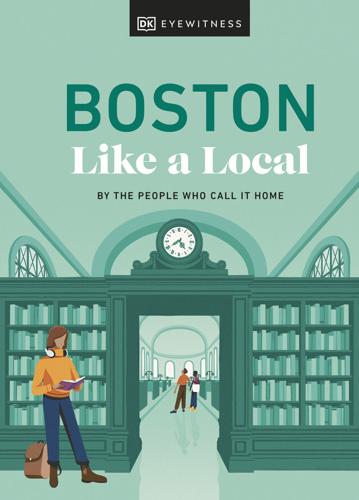
Boston Like a Local
by
Dk Eyewitness
Come to admire their work and have a chat with other art lovers – or even the artists themselves, if they’re around. IN A PAIR Cyber sessions Take a tech-minded friend to the Boston Cyberarts Gallery. Found in a rail station, this avant-garde joint focuses on electronic and digital art, including pieces made using augmented reality. FOR A CROWD Three’s the magic number The Harvard Art Museums are comprised of three separate galleries under one roof. Explore them with a gang of friends at one of the evening lates; grab a drink, listen to live music, and take a tour of the galleries. g ARTS & CULTURE g Contents Favorite Museums Science, sport, subcultures – whatever you want to learn about, there’s a museum for it in Boston.
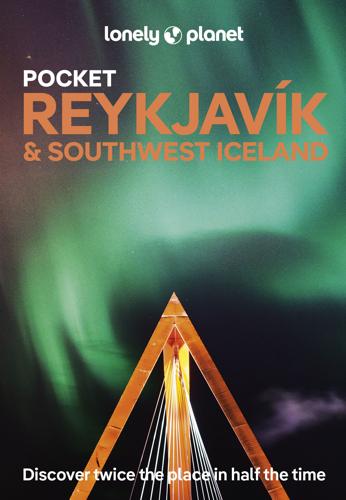
Lonely Planet Pocket Reykjavík & Southwest Iceland
by
Lonely Planet
NATURAL HISTORY MUSEUM Perlan map Google map sits atop Reykjavík’s highest hill. Inside the dome, get a taste of volcanoes, ice caves and the natural forces that shape Iceland. At the planetarium, revel in high-def Northern Lights, a lava show and a human-made ice cave. The virtual fish tank incorporates augmented reality, and there’s a section dedicated to climate change. There is a restaurant, bar and ice-cream shop, and an observation deck for 360-degree city views. You can visit just the observation deck, but you’ll need to buy the ticket on site. Museum tickets can be booked online. Shop for Sweaters & Vintage GoodsLocal Shops Independent boutiques, restaurants and souvenir shops dominate Laugavegur, making it easy to spend hours browsing handmade jewellery, local crafts, bags and clothes.
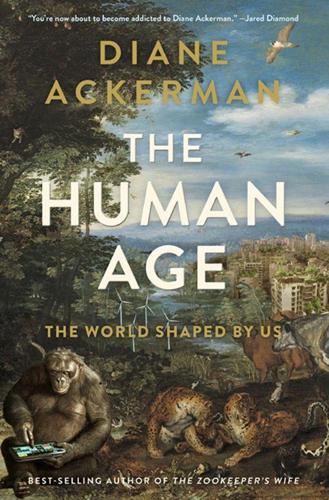
The Human Age: The World Shaped by Us
by
Diane Ackerman
Published 9 Sep 2014
As the doctors discussed the case, Dantuluri could reach into the surgical field that Ponce saw on his heads-up display: ghostly hands floated over the body, pinpointed an anatomical feature or demonstrated how to reposition an instrument, as he consulted in real time. Invented by a UAB neurosurgeon, Barton Guthrie, who was frustrated by the limits of teleconferencing, VIPAAR (Virtual Interactive Presence in Augmented Reality) offers a safety net in diverse situations: teaching surgeons, guiding a resident’s hands, piloting difficult procedures in regional hospitals anywhere in the world, and also assisting emergency operations at an Antarctic base or in space. A lively pair of glasses, even with all the digital trimmings, is still only an accessory.
…
Hardiness Zone Map, 38 Vancouver, Canada, 78 Vawter, Zac, 254–55 vegetable gardens, urban, 74 Venice, Italy, 50 veronicas, 125 vertical farming, 74 in sea, see mariculture vervet monkeys, 131 Viking, 220 Vikings, 42 violence, 286 Viridity Energy, 102 Virtual Dissection, 197 Virtual Interactive Presence in Augmented Reality, 261 viruses, 172, 289–90 vitamin D, 192 volcanic archipelagos, 157–58 voles, 115 Voronoff, Serge, 264 Voyager, 220 Wade, Chris, 157–67 Wageningen UR, 104 Wake Forest, 185 Wakodahatchee Wetlands, 75–76 walking, 259–60 walls, 92 walruses, 134 war, 141–48, 285 War Horse, 141–42 Warner, Sabrina, 47–48 Washington State University, 238 water lettuce, 132 water moccasins, 117–18 water purification, 74–75 water-purifying tea bags, 181 Watson, James, 274 waxbills, 79 Wells, H.

Brotopia: Breaking Up the Boys' Club of Silicon Valley
by
Emily Chang
Published 6 Feb 2018
The machines and devices and the programs that run on them have become a ubiquitous part of our daily lives. All that world-bending technology has been created largely by men. This technology is disrupting businesses from agriculture to manufacturing, finance, and real estate. And it’s not slowing down. We face a near-term future of autonomous cars, augmented reality, and artificial intelligence, and yet we are at risk of embedding gender bias into all of these new algorithms. “It’s bad for shareholder value,” Megan Smith, who has worked as a Google VP and chief technology officer of the United States, told me. “We want the genetic flourishing of all humanity . . . in on making these products, especially as we move to AI and data sciences.”
…
But as the industry moves forward, not every developer may act so responsibly. In fact, there’s good reason to think that some won’t. Engineers are now working to make virtual reality even more real with the help of new technologies such as haptic feedback, which enables players to physically feel it when they are punched or kicked. Augmented reality promises to further integrate our real and online worlds. Increasingly, these are spaces in which we will live, work, and play that will have dramatic physical and psychological effects. The norms of behavior for these new virtual and augmented worlds are being laid down right now, so right now is the time for the makers of VR and AR technology to build respect and safety into their products.
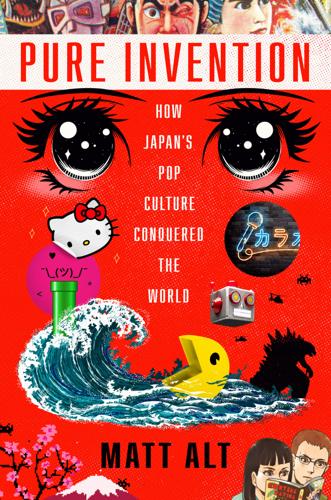
Pure Invention: How Japan's Pop Culture Conquered the World
by
Matt Alt
Published 14 Apr 2020
The phrase is antique, but the concept lives on in a new form. It is no coincidence that millions of Americans made their first forays into anonymous political activism on a Japanese imageboard platform repurposed by American netizens. Nor is it any coincidence that the first globally popular application of augmented reality arrived in the form of Pokémon GO. Perfected in Silicon Valley, augmented reality involves overlaying computer graphics on views of the world. The potentially transformative technology lingered on the fringes of tech subculture until Pokémon GO’s creators got the idea of populating their platform with kawaii monsters. One hundred thirty million fans downloaded the application in just thirty days after its release in 2016, thrilling to the experience of holding up their smartphones to seek out and capture imaginary Pokémon digitally superimposed on the world around them—real life, but better.
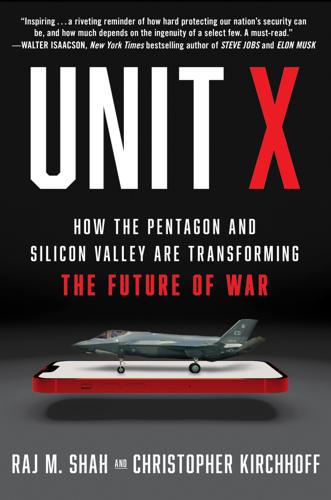
Unit X: How the Pentagon and Silicon Valley Are Transforming the Future of War
by
Raj M. Shah
and
Christopher Kirchhoff
Published 8 Jul 2024
Early in Google’s self-driving car project, he’d been seriously injured on the highway just south of Google’s campus when one of his fellow engineers pushed the car’s algorithms beyond their breaking point. Unfazed, Isaac went on to a leadership role in Google Glass, one of the first attempts to build augmented reality glasses for consumers. Isaac would be our in-house hardware guru, bringing with him experience from the catalog of Google moonshots. Our fourth partner was Vishaal “V8” Hariprasad, a decorated cyber operations officer in the air force who’d been a cofounder at Raj’s cybersecurity startup. Vishaal, or V8, the military call sign he went by, was born in the Bronx to immigrant parents from British Guyana.
…
publicly pledging to work with the Department of Defense: Microsoft CEO Satya Nadella was a forceful advocate on the front, saying publicly, “We made a principled decision that we’re not going to withhold technology from institutions that we have elected in democracies to protect the freedoms we enjoy.” See Charles Riley and Samuel Burke, “Microsoft CEO defends US military contract that some employees say crosses a line,” CNN Business, February 25, 2019, https://www.cnn.com/2019/02/25/tech/augmented-reality-microsoft-us-military/index.html. Jeff Bezos similarly said, “If big tech companies are going to turn their back on the U.S. Department of Defense, this country is going to be in trouble…. This is a great country and it does need to be defended.” See Heather Kelly, “Jeff Bezos: Amazon will keep working with the DoD,” CNN Business, October 15, 2018, https://www.cnn.com/2018/10/15/tech/jeff-bezos-wired/index.html.
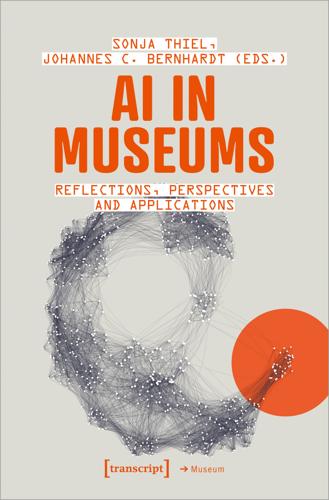
AI in Museums: Reflections, Perspectives and Applications
by
Sonja Thiel
and
Johannes C. Bernhardt
Published 31 Dec 2023
These overall concepts include, for instance, the use of AI embracing the actual construction of the museum, collection research, management, branding, marketing, visitor support, exhibition displays, 6 7 8 9 https://paaiss.com. https://panafriconai.org. http://www.aii.et. https://redshift.autodesk.com/articles/grand-egyptian-museum. 135 136 Part 2: Perspectives the creation of exhibits, and the combination with virtual and augmented reality. In China, the Smart Museum Pilot Initiative, which was launched by the State Administration of Cultural Heritage (SACH) in 2014, covers a total of six museums, including the Inner Mongolia Museum, Gansu Museum, Guangdong Museum, Suzhou Museum, Jinsha Site Museum in Sichuan, and Emperor Qinshihuang’s Mausoleum Site Park in Shaanxi Province (Minyo/Yang 2016; Wang/Duan et al. 2023).
…
Michael Zöllner, Markus Bosl, Dirk Widmann, Moritz Krause, Symotiv: Virtual Insights into the Symphony Orchestra The technologies for capturing motion and visualizing data have facilitated new possibilities for describing complex systems to a broader audience. We used the latest methods of motion analysis through machine learning and/or artificial intelligence and visualization in virtual and augmented reality (VR/AR) in order to analyse and explain how the Hof Symphony Orchestra works. We therefore showed diverse aspects from rehearsal to performance to a broad audience via interactive immersive extended reality experiences. In this paper, we describe the process and the implications of tracking the movement and gestures of visitors in cultural spaces.

Arriving Today: From Factory to Front Door -- Why Everything Has Changed About How and What We Buy
by
Christopher Mims
Published 13 Sep 2021
In lidar, rather than looking at the distortion in a grid of points of light, rapid pulses of laser light are fired at objects in front of the sensor, and the amount of time it takes the light to return tells the sensor precisely how far away that object is. The truck’s AI takes information from all of these sensors and creates a map of the environment and our truck’s position within it. A similar process is integral to any attempt to overlay a fictional reality atop our real one, as in applications of augmented reality (AR). If you’ve ever played with an AR app on your phone—say, the Ikea app, which shows you what furniture would look like in your actual home, using your phone’s camera and screen—that’s accomplished largely through SLAM. TuSimple’s system relies on “sensor fusion,” as the last step of localizing the truck in space.
…
See also accidents and injuries in the workplace; robotic warehousing Amazon Web Services (AWS), 162, 222 AmCare, 206 AMD, 154, 267 “andon cord,” 207 APL, 21 APM Terminals, 21, 72–73, 78 Apollo spacecraft, 144, 145 Appalachian Trail, 130 Apple, 16, 153, 165, 174, 221, 265, 270 Apple Maps, 283 AR (augmented reality), 147 artificial intelligence. See AI assembly lines, 100 ATA (American Trucking Associations), 111 The Atlantic, 208, 213 Autobahn, 130–32 automated stacking cranes, 79–81, 83 automation: of airplane flight, 144; cyborgs, modern workers as, 15, 42, 219; labor/employment and, 76, 103, 177–79, 241–50; predictability and efficiency, relationship to, 230–32; robotic delivery, 263–70; scientific management and, 101–2; at sortation centers in “middle mile,” 253–59, 261; surveillance and work intensification, combined with, 113, 157, 174–75, 203, 211–14, 231–32, 234–35.

Zero History
by
William Gibson
Published 6 Sep 2010
“That’s a memorial to Helmut Newton,” she’d said. “He lived there, part of the time.” “The back is ‘before’?” Milgrim had asked. “No,” she’d said, “that’s what you see, there, unaugmented. The front’s what you see augmented. Construct’s tied to the GPS grid. To see it, you have to go there, use augmented reality.” “I’ve never heard of that,” Milgrim had said, looking at the back, then the front. “When I wrote the book, there was no commercial hardware. People were building their own. Now it’s all iPhone apps. Lots of work, back then, trying to render the pieces effectively. We had to take high-rez photographs of the site, from as many angles as you can, then marry them to whatever that exact angle on the construct would look like, then choose from those.”
…
None of this meaning anything to Milgrim, who was enjoying the salmon, in some light chilled sauce. “I’m sorry,” Meredith said, “but you’re going to have to tell us who you’re working for.” “If I were better at this sort of thing,” said Hollis, “I’d start by telling you about my book. It’s about locative art.” “I don’t know the term,” Meredith said. “It’s what they’re calling augmented reality now,” said Hollis, “but art. It’s been around since before the iPhone started to become the default platform. That was when I wrote about it. But I meant that if I were going to lie to you, I’d tell you about that, then tell you that I was writing another, on esoteric denim, or mad marketing strategies.
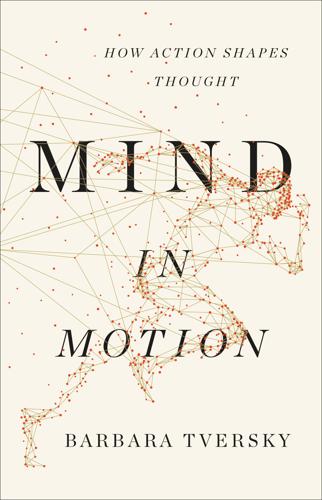
Mind in Motion: How Action Shapes Thought
by
Barbara Tversky
Published 20 May 2019
But people have far more pieces to use to construct mental maps beyond personal exploration, beyond place and grid cells. People can use specific memories of places they have visited or routes they have taken, but they can also use descriptions of places and routes in language and depictions of them in maps. They now can use mobile phones and augmented reality and who knows what else in the future. People can use spatial schemas, general knowledge about layouts of cities and towns, not just of their own regions and countries but also of other regions and countries. Once I visited Prague and Budapest in succession and realized that they have the same map: a river running north and south, with an old town and a castle on the west bank and a “new” town and art nouveau museum on the east bank.
…
At the same time that technologies are allowing us to move farther and farther, other technologies are bringing the world nearer and closer, to wherever we happen to be. Letters, eons ago only for the wealthy, now instantaneous and always at our fingertips (a mixed blessing), enhanced by video and sound, replacing telephones, once an astounding resource. Now our bodies don’t have to move at all; we can travel the world with smartphones, augmented reality, virtual reality. If we need to move, and physicians advise us to do so, we can move our feet on the treadmill in the gym, without going farther than getting to the gym. From the treadmill, we can enter a virtual world of our choosing, Machu Picchu without climbing, Bangkok without traffic, Beijing without pollution.
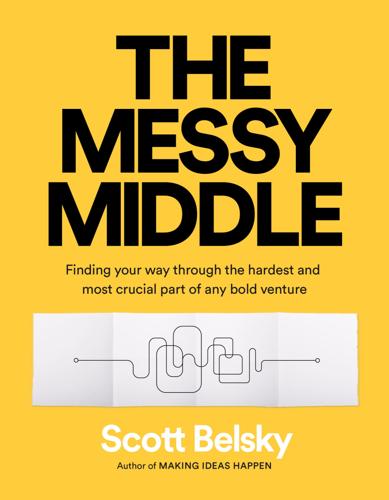
The Messy Middle: Finding Your Way Through the Hardest and Most Crucial Part of Any Bold Venture
by
Scott Belsky
Published 1 Oct 2018
If so, you should consider taking the same tactic yourself. In 2016 and 2017, Instagram infamously copied Snapchat’s tactics over and over again. Both apps were playing in the same field, and Instagram used what Snapchat learned to get ahead of it in its own game. Instagram implemented Snapchat’s “stories” and augmented-reality features, like facial overlays, because these tactics were directly aligned with its strategy: to host the media friends share with one another. Instagram was getting ideas from Snapchat, but these tactics advanced their strategy rather than diverted it. Sometimes the thing you admire most in your competitor isn’t smart or scalable.
…
The key to breaking incrementalism and escaping your local maxima is to swap out your underlying assumptions. For example, if your product was founded in the age of social media and mobile apps, what assumptions did you have then that you would now question as voice-activated devices enter our homes and augmented reality transforms our mobile devices? When it’s the right time to make a bold move in product strategy, make a list of the core assumptions your product or service is based on. Many tech companies that spawned early in the internet era have had to reinvent themselves. For example, Scott Heiferman, Meetup’s CEO and founder, shared his thoughts with me on the topic of rebooting products and breaking incrementalism one afternoon near his company’s headquarters in New York City in early 2017.

The Everything Blueprint: The Microchip Design That Changed the World
by
James Ashton
Published 11 May 2023
But if China invaded, there was no saying it could secure the fabs intact. And even if it did, running the production lines was not as simple as flicking a switch. They needed Taiwanese expertise for that, plus thousands of support engineers based at partner companies all over the world, who communicated with Taiwan-based staff remotely, often via augmented reality. TSMC’s Liu warned that an invasion would bring about the ‘destruction of the world’s rules-based order’ and render its factories as ‘non-operable’.3 And, in the unlikely case the Chinese could overcome that hurdle and keep the facilities running, their output would quickly be cut off from the rest of the global supply chain.
…
Apple set up satellite engineering offices close to the headquarters of Qualcomm and Broadcom and hired freely. Analysts think 2023 is the year it will reveal its own, in-house designed, modem, giving it total control of the guts of the iPhone, whose chips are now made using the 5nm processor technology. Connection speeds, which were already important, have become vital, given the rise in augmented-reality applications that run on top of real-world sound and images. That trend, plus the complexity of wireless chips, has driven up their price to rival processor costs. By taking them in-house, Apple is banking on running these components more effectively together – squeezing an extra 10 per cent of performance or 15 per cent from battery life – and making them at lower cost.

Facebook: The Inside Story
by
Steven Levy
Published 25 Feb 2020
Quest was not something that people would use on a persistent basis, and it would not fulfill Zuckerberg’s dreams of virtual or augmented reality being the platform for social interaction. That could only be done by ditching those cumbersome headsets and creating the technology that would allow people to become a form of cyborg—part human, part Facebook. That would happen, he hoped, by the efforts of Oculus Research, the lab in Seattle working on long-range projects. It was making progress on its wear-all-the-time Augmented Reality eyeglasses. Beyond that, Facebook was exploring how to get its products literally in people’s heads.
…
Zuckerberg’s subsequent apology, if one could call it that, was of the “sorry to anyone I offended” variety. The episode did not help Facebook’s virtual-reality efforts. Zuckerberg’s hope lay in Oculus’s research facility in Seattle, which had hired top scientists to help devise low-cost goggles that would solve long-term VR problems and deliver an “augmented reality” experience, superimposing computer graphics as an overlay on the real world. He exercised patience, confident that the lab’s head, Michael Abrash, was gathering the best scientists to advance the field. Oculus would need them, because Apple, Microsoft, and other companies were also devoting their resources to such a product.

Surviving AI: The Promise and Peril of Artificial Intelligence
by
Calum Chace
Published 28 Jul 2015
It was a while since she had attempted the manoeuvre herself; she knew she would not have executed it so smoothly even when she used to do her own driving. She certainly wouldn’t be able to do it now that she was so out of practice. The train arrived soon after she reached the platform (perfect timing by her car, again) and Hermione used the display in Julia’s augmented reality (AR) contact lenses to highlight the carriage with the most empty seats, drawing on information from sensors inside the train. As Julia boarded the carriage the display highlighted the best seat to choose, based on her travelling preferences and the convenience of disembarkation at the other end of the journey.
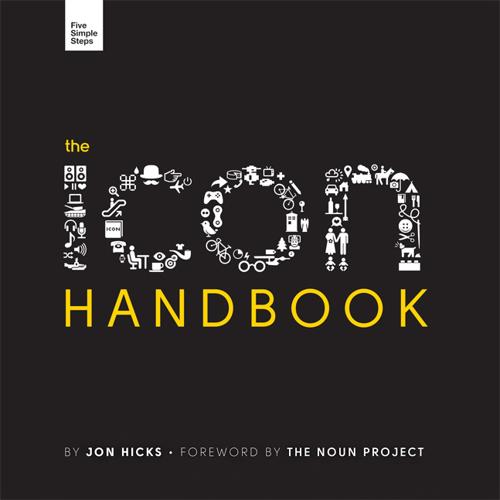
The Icon Handbook
by
Jon Hicks
Published 23 Jun 2011
Think of all the symbols that have been created to represent concepts around social media: tweet; like; share; link; blog; user. These symbols have become and will remain a part of our everyday life. Now imagine all the symbols that will be needed to represent new concepts in medicine, nanotechnology, environmental protection, human rights and augmented reality. It is safe to say designers are poised to exponentially expand the world’s visual language vocabulary over the coming years, and this book will be an invaluable tool to assist them. Edward J Boatman Co-founder of the Noun Project Contents Introduction Chapter 1: A potted history of icons Chapter 2: How we use icons Chapter 3: Favicons Chapter 4: The Metaphor Chapter 5: Drawing Icons Chapter 6: Icon formats and deployment Chapter 7: Application icons Appendix “Trying to capture the essence of an object or idea with only a few lines and at the same time maintaining its elegance is pretty much design in a nutshell.

The Fourth Industrial Revolution
by
Klaus Schwab
Published 11 Jan 2016
Positive impacts – Immediate information to the individual to make informed decisions for navigation and work/personal activities – Improved capacity to perform tasks or produce goods and services with visual aids for manufacturing, healthcare/surgery and service delivery – Ability for those with disabilities to manage their interactions and movement, and to experience the world – through speaking, typing and moving, and via immersive experiences Negative impacts – Mental distraction causing accidents – Trauma from negative immersive experiences – Increased addiction and escapism Unknown, or cuts both ways – A new segment created in the entertainment industry – Increased immediate information The shift in action Glasses are already on the market today (not just produced by Google) that can: – Allow you to freely manipulate a 3D object, enabling it to be moulded like clay – Provide all the extended live information you need when you see something, in the same way the brain functions – Prompt you with an overlay menu of the restaurant you pass by – Project picture or video on any piece of paper Source: http://www.hongkiat.com/blog/augmented-reality-smart-glasses/ Shift 4: Wearable Internet The tipping point: 10% of people wearing clothes connected to the internet By 2025: 91% of respondents expected this tipping point will have occurred Technology is becoming increasingly personal. Computers were first located in large rooms, then on desks and, following that, on people’s laps.

Who Owns the Future?
by
Jaron Lanier
Published 6 May 2013
People already routinely tap “yes” to allow tracking options in their phones, and then expect the cloud to recommend nearby restaurants, keep track of their jogging, and warn about where the nearby traffic jams have formed. Could there be even more compelling reasons to accept being tracked, and being observed by remote algorithms in computer clouds? Yes, there will be many good reasons. I gave one earlier: knowing your carbon footprint moment to moment. Other examples will come about because of Mixed, or Augmented, Reality. This is a technology that brings Virtual Reality into the everyday physical world. A typical way it might work is that your sunglasses would gain the ability to add an illusion of virtual stuff placed in the physical world. The glasses might reveal something about a flower as you walk by a garden in springtime.
…
M., 129–30, 261, 328 “Forum,” 214 Foucault, Michel, 308n 4chan, 335 4′33″ (Cage), 212 fractional reserve system, 33 Franco, Francisco, 159–60 freedom, 13–15, 32–33, 90–92, 277–78, 336 freelancing, 253–54 Free Print Shop, 228 “free rise,” 182–89, 355 free speech, 223, 225 free will, 166–68 “friction,” 179, 225, 230, 235, 354 Friendster, 180, 181 Fukuyama, Francis, 165, 189 fundamentalism, 131, 193–94 future: chaos in, 165–66, 273n, 331 economic analysis of, 1–3, 15, 22, 37, 38, 40–41, 42, 67, 122, 143, 148–52, 153, 155–56, 204, 208, 209, 236, 259, 274, 288, 298–99, 311, 362n, 363 humanistic economy for, 194, 209, 233–351 361–367 “humors” of, 124–40, 230 modern conception of, 123–40, 193–94, 255 natural basis of, 125, 127, 128–29 optimism about, 32–35, 45, 130, 138–40, 218, 230n, 295 politics of, 13–18, 22–25, 85, 122, 124–26, 128, 134–37, 199–234, 295–96, 342 technological trends in, 7–18, 21, 53–54, 60–61, 66–67, 85–86, 87, 97–98, 129–38, 157–58, 182, 188–90, 193–96, 217 utopian conception of, 13–18, 21, 30, 31, 37–38, 45–46, 96, 128, 130, 167, 205, 207, 265, 267, 270, 283, 290, 291, 308–9, 316 future-oriented money, 32–34, 35 Gadget, 186 Gallant, Jack, 111–12 games, 362, 363 Gates, Bill, 93 Gattaca, 130 Gawker, 118n Gelernter, David, 313 “general” machines, 158 General Motors, 56–57 general relativity theory, 167n Generation X, 346 genetic engineering, 130 genetics, 109–10, 130, 131, 146–47, 329, 366 genomics, 109–10, 146–47, 366 Germany, 45 Ghostery, 109 ghost suburbs, 296 Gibson, William, 137, 309 Gizmodo, 117–18 Global Business Network (GBN), 214–15 global climate change, 17, 32, 53, 132, 133, 134, 203, 266, 295, 296–97, 301–2, 331 global economy, 33n, 153–56, 173, 201, 214–15, 280 global village, 201 God, 29, 30–31, 139 Golden Goblet, 121, 121, 175, 328 golden rule, 335–36 gold standard, 34 Google, 14, 15, 19, 69, 74, 75–76, 90, 94, 106, 110, 120, 128, 153, 154, 170, 171, 174, 176, 180, 181–82, 188, 191, 192, 193, 199–200, 201, 209, 210, 217, 225, 227, 246, 249, 265, 267, 272, 278, 280, 286, 305n, 307, 309–10, 322, 325, 330, 344, 348, 352 Google Goggles, 309–10 Googleplex, 199–200 goops, 85–89, 99 Gore, Al, 80n Graeber, David, 30n granularity, 277 graph-shaped networks, 241, 242–43 Great Britain, 200 Great Depression, 69–70, 75, 135, 299 Great Recession, 31, 54, 60, 76–77, 204, 311, 336–37 Greece, 22–25, 45, 125 Grigorov, Mario, 267 guitars, 154 guns, 310–11 Gurdjieff, George, 215, 216 gurus, 211–13 hackers, 14, 82, 265, 306–7, 345–46 Hardin, Garrett, 66n Hartmann, Thom, 33n Hayek, Friedrich, 204 health care, 66–67, 95, 98–99, 100, 132–33, 153–54, 249, 253, 258, 337, 346 health insurance, 66–67, 95, 98–99, 100, 153–54 Hearts and Minds, 353n heart surgery, 11–13, 17, 18, 157–58 heat, 56 hedge funds, 69, 106, 137 Hephaestus, 22, 23 high-dimensional problems, 145 high-frequency trading, 56, 76–78, 154 highways, 79–80, 345 Hinduism, 214 Hippocrates, 124n Hiroshima bombing (1945), 127 Hollywood, 204, 206, 242 holographic radiation, 11 Homebrew Club, 228 homelessness, 151 homeopathy, 131–32 Homer, 23, 55 Honan, Mat, 82 housing market, 33, 46, 49–52, 61, 78, 95–96, 99, 193, 224, 227, 239, 245, 255, 274n, 289n, 296, 298, 300, 301 HTML, 227, 230 Huffington Post, 176, 180, 189 human agency, 8–21, 50–52, 85, 88, 91, 124–40, 144, 165–66, 175–78, 191–92, 193, 217, 253–64, 274–75, 283–85, 305–6, 328, 341–51, 358–60, 361, 362, 365–67 humanistic information economy, 194, 209, 233–351 361–367 human reproduction, 131 humors (tropes), 124–40, 157, 170, 230 hunter-gatherer societies, 131, 261–62 hyperefficient markets, 39, 42–43 hypermedia, 224–30, 245 hyper-unemployment, 7–8 hypotheses, 113, 128, 151 IBM, 191 identity, 14–15, 82, 124, 173–74, 175, 248–51, 283–90, 305, 306, 307, 315–16, 319–21 identity theft, 82, 315–16 illusions, 55, 110n, 120–21, 135, 154–56, 195, 257 immigration, 91, 97, 346 immortality, 193, 218, 253, 263–64, 325–31, 367 imports, 70 income levels, 10, 46–47, 50–54, 152, 178, 270–71, 287–88, 291–94, 338–39, 365 incrementalism, 239–40 indentured servitude, 33n, 158 India, 54, 211–13 industrialization, 49, 83, 85–89, 123, 132, 154, 343 infant mortality rates, 17, 134 infinity, 55–56 inflation, 32, 33–34 information: age of, 15–17, 42, 166, 241 ambiguity of, 41, 53–54, 155–56 asymmetry of, 54–55, 61–66, 118, 188, 203, 246–48, 285–88, 291–92, 310 behavior influenced by, 32, 121, 131, 173–74, 286–87 collection of, 61–62, 108–9 context of, 143–44, 178, 188–89, 223–24, 225, 245–46, 247, 248–51, 338, 356–57, 360 correlations in, 75–76, 114–15, 192, 274–75 for decision-making, 63–64, 184, 266, 269–75, 284n digital networks for, see digital networks duplication of, 50–52, 61, 74, 78, 88, 223–30, 239–40, 253–64, 277, 317–24, 335, 349 economic impact of, 1–3, 8–9, 15–17, 18, 19–20, 21, 35, 60–61, 92–97, 118, 185, 188, 201, 207, 209, 241–43, 245–46, 246–48, 256–58, 263, 283–87, 291–303, 331, 361–67 in education, 92–97 encrypted, 14–15, 175, 239–40, 305–8, 345 false, 119–21, 186, 275n, 287–88, 299–300 filters for, 119–20, 200, 225, 356–57 free, 7–9, 15–16, 50–52, 61, 74, 78, 88, 214, 223–30, 239–40, 246, 253–64, 277, 317–24, 335, 349 history of, 29–31 human agency in, 22–25, 69–70, 120–21, 122, 190–91 interpretation of, 29n, 114–15, 116, 120–21, 129–32, 154, 158, 178, 183, 184, 188–89 investment, 59–60, 179–85 life cycle of, 175–76 patterns in, 178, 183, 184, 188–89 privacy of, see privacy provenance of, 245–46, 247, 338 sampling of, 71–72, 191, 221, 224–26, 259 shared, 50–52, 61, 74, 78, 88, 100, 223–30, 239–40, 253–64, 277, 317–24, 335, 349 signals in, 76–78, 148, 293–94 storage of, 29, 167n, 184–85; see also cloud processors and storage; servers superior, 61–66, 114, 128, 143, 171, 246–48 technology of, 7, 32–35, 49, 66n, 71–72, 109, 110, 116, 120, 125n, 126, 135, 136, 254, 312–16, 317 transparency of, 63–66, 74–78, 118, 190–91, 306–7 two-way links in, 1–2, 227, 245, 289 value of, 1–3, 15–16, 20, 210, 235–43, 257–58, 259, 261–63, 271–75, 321–24, 358–60 see also big data; data infrastructure, 79–80, 87, 179, 201, 290, 345 initial public offerings (IPOs), 103 ink, 87, 331 Inner Directeds, 215 Instagram, 2, 53 instant prices, 272, 275, 288, 320 insurance industry, 44, 56, 60, 66–67, 95, 98–99, 100, 153–54, 203, 306 intellectual property, 44, 47, 49, 60, 61, 96, 102, 183, 204, 205–10, 223, 224–26, 236, 239–40, 246, 253–64 intelligence agencies, 56, 61, 199–200, 291, 346 intelligence tests, 39, 40 interest rates, 81 Internet: advertising on, 14, 20, 24, 42, 66, 81, 107, 109, 114, 129, 154, 169–74, 177, 182, 207, 227, 242, 266–67, 275, 286, 291, 322–24, 347–48, 354, 355 anonymity of, 172, 248–51, 283–90 culture of, 13–15, 25 development of, 69, 74, 79–80, 89, 129–30, 159, 162, 190–96, 223, 228 economic impact of, 1–2, 18, 19–20, 24, 31, 43, 60–66, 79–82, 117, 136–37, 169–74, 181, 186 employment and, 2, 7–8, 56–57, 60, 71–74, 79, 117, 123, 135, 149, 178, 201, 257–58 file sharing on, 50–52, 61, 74, 78, 88, 100, 223–30, 239–40, 253–64, 277, 317–24, 335, 349 free products and services of, 7n, 10, 60–61, 73, 81, 82, 90, 94–96, 97, 128, 154, 176, 183, 187, 201, 205–10, 234, 246–48, 253–64, 283–88, 289, 308–9, 317–24, 337–38, 348–50, 366 human contributions to, 19–21, 128, 129–30, 191–92, 253–64 identity in, 14–15, 82, 173–74, 175, 283–90, 315–16 investment in, 117–20, 181 legal issues in, 63, 79–82, 204, 206, 318–19 licensing agreements for, 79–82 as network, 2–3, 9, 11, 12, 14, 15, 16, 17, 19–21, 31, 49, 50–51, 53, 54–55, 56, 57, 75, 92, 129–30, 143–48, 228–29, 259, 286–87, 308–9 political aspect of, 13–15, 205–10 search engines for, 51, 60, 70, 81, 120, 191, 267, 289, 293; see also Google security of, 14–15, 175, 239–40, 305–8, 345 surveillance of, 1–2, 11, 14, 50–51, 64, 71–72, 99, 108–9, 114–15, 120–21, 152, 177n, 199–200, 201, 206–7, 234–35, 246, 272, 291, 305, 309–11, 315, 316, 317, 319–24 transparency of, 63–66, 176, 205–6, 278, 291, 308–9, 316, 336 websites on, 80, 170, 200, 201, 343 Internet2, 69 Internet service providers (ISPs), 171–72 Interstate Highway System, 79–80, 345 “In-valid,” 130 inventors, 117–20 investment, financial, 45, 50, 59–67, 74–80, 115, 116–20, 155, 179–85, 208, 218, 257, 258, 277–78, 298, 301, 348, 350 Invisible Hand humor, 126, 128 IP addresses, 248 iPads, 267 Iran, 199, 200 irony, 130 Islam, 184 Italy, 133 Jacquard programmable looms, 23n “jailbreaking,” 103–4 Japan, 85, 97, 98, 133 Jeopardy, 191 Jeremijenko, Natalie, 302 jingles, 267 jobs, see employment Jobs, Steve, 93, 166n, 192, 358 JOBS Act (2012), 117n journalism, 92, 94 Kapital, Das (Marx), 136 Keynesianism, 38, 151–52, 204, 209, 274, 288 Khan Academy, 94 Kickstarter, 117–20, 186–87, 343 Kindle, 352 Kinect, 89n, 265 “Kirk’s Wager,” 139 Klout, 365 Kodak, 2, 53 Kottke, Dan, 211 KPFA, 136 Kurzweil, Ray, 127, 325, 327 Kushner, Tony, 165, 189 LaBerge, Stephen, 162 labor, human, 85, 86, 87, 88, 99–100, 257–58, 292 labor unions, 44, 47–48, 49, 96, 239, 240 Laffer curve, 149–51, 150, 152 Las Vegas, Nev., 296, 298 lawyers, 98–99, 100, 136, 184, 318–19 leadership, 341–51 legacy prices, 272–75, 288 legal issues, 49, 63, 74–82, 98–99, 100, 104–5, 108, 136, 184, 204, 206, 318–19 Lehman Brothers, 188 lemonade stands, 79–82 “lemons,” 118–19 Lennon, John, 211, 213 levees, economic, 43–45, 46, 47, 48, 49–50, 52, 92, 94, 96, 98, 108, 171, 176n, 224–25, 239–43, 253–54, 263, 345 leveraged mortgages, 49–50, 61, 227, 245, 289n, 296 liberal arts, 97 liberalism, 135–36, 148, 152, 202, 204, 208, 235, 236, 251, 253, 256, 265, 293, 350 libertarianism, 14, 34, 80, 202, 208, 210, 262, 321 liberty, 13–15, 32–33, 90–92, 277–78, 336 licensing agreements, 79–82 “Lifestreams” (Gelernter), 313 Lights in the Tunnel, The (Ford), 56n Linux, 206, 253, 291, 344 litigation, 98–99, 100, 104–5, 108, 184 loans, 32–33, 42, 43, 74, 151–52, 306 local advantages, 64, 94–95, 143–44, 153–56, 173, 203, 280 Local/Global Flip, 153–56, 173, 280 locked-in software, 172–73, 182, 273–74 logical copies, 223 Long-Term Capital Management, 49, 74–75 looms, 22, 23n, 24 loopholes, tax, 77 lotteries, 338–39 lucid dreaming, 162 Luddites, 135, 136 lyres, 22, 23n, 24 machines, 19–20, 86, 92, 123, 129–30, 158, 261, 309–11, 328 see also computers “Machine Stops, The” (Forster), 129–30, 261, 328 machine translations, 19–20 machine vision, 309–11 McMillen, Keith, 117 magic, 110, 115, 151, 178, 216, 338 Malthus, Thomas, 132, 134 Malthusian humor, 125, 127, 132–33 management, 49 manufacturing sector, 49, 85–89, 99, 123, 154, 343 market economies, see economies, market marketing, 211–13, 266–67, 306, 346 “Markets for Lemons” problem, 118–19 Markoff, John, 213 marriage, 167–68, 274–75, 286 Marxism, 15, 22, 37–38, 48, 136–37, 262 as humor, 126 mash-ups, 191, 221, 224–26, 259 Maslow, Abraham, 260, 315 Massachusetts Institute of Technology (MIT), 75, 93, 94, 96–97, 157–58, 184 mass media, 7, 66, 86, 109, 120, 135, 136, 185–86, 191, 216, 267 material extinction, 125 materialism, 125n, 195 mathematics, 11, 20, 40–41, 70, 71–72, 75–78, 116, 148, 155, 161, 189n, 273n see also statistics Matrix, The, 130, 137, 155 Maxwell, James Clerk, 55 Maxwell’s Demon, 55–56 mechanicals, 49, 51n Mechanical Turk, 177–78, 185, 187, 349 Medicaid, 99 medicine, 11–13, 17, 18, 54, 66–67, 97–106, 131, 132–33, 134, 150, 157–58, 325, 346, 363, 366–67 Meetings with Remarkable Men (Gurdjieff), 215 mega-dossiers, 60 memes, 124 Memex, 221n memories, 131, 312–13, 314 meta-analysis, 112 metaphysics, 12, 127, 139, 193–95 Metcalf’s Law, 169n, 350 Mexico City, 159–62 microfilm, 221n microorganisms, 162 micropayments, 20, 226, 274–75, 286–87, 317, 337–38, 365 Microsoft, 19, 89, 265 Middle Ages, 190 middle class, 2, 3, 9, 11, 16–17, 37–38, 40, 42–45, 47, 48, 49, 50, 51, 60, 74, 79, 91, 92, 95, 98, 171, 205, 208, 210, 224–25, 239–43, 246, 253–54, 259, 262, 263, 280, 291–94, 331, 341n, 344, 345, 347, 354 milling machines, 86 mind reading, 111 Minority Report, 130, 310 Minsky, Marvin, 94, 157–58, 217, 326, 330–31 mission statements, 154–55 Mixed (Augmented) Reality, 312–13, 314, 315 mobile phones, 34n, 39, 85, 87, 162, 172, 182n, 192, 229, 269n, 273, 314, 315, 331 models, economic, 40–41, 148–52, 153, 155–56 modernity, 123–40, 193–94, 255 molds, 86 monetization, 172, 176n, 185, 186, 207, 210, 241–43, 255–56, 258, 260–61, 263, 298, 331, 338, 344–45 money, 3, 21, 29–35, 86, 108, 124, 148, 152, 154, 155, 158, 172, 185, 241–43, 278–79, 284–85, 289, 364 monocultures, 94 monopolies, 60, 65–66, 169–74, 181–82, 187–88, 190, 202, 326, 350 Moondust, 362n Moore’s Law, 9–18, 20, 153, 274–75, 288 morality, 29–34, 35, 42, 50–52, 54, 71–74, 188, 194–95, 252–64, 335–36 Morlocks, 137 morning-after pill, 104 morphing, 162 mortality, 193, 218, 253, 263–64, 325–31, 367 mortgages, 33, 46, 49–52, 61, 78, 95–96, 99, 224, 227, 239, 245, 255, 274n, 289n, 296, 300 motivation, 7–18, 85–86, 97–98, 216 motivational speakers, 216 movies, 111–12, 130, 137, 165, 192, 193, 204, 206, 256, 261–62, 277–78, 310 Mozart, Wolfgang Amadeus, 23n MRI, 111n music industry, 11, 18, 22, 23–24, 42, 47–51, 54, 61, 66, 74, 78, 86, 88, 89, 92, 94, 95–96, 97, 129, 132, 134–35, 154, 157, 159–62, 186–87, 192, 206–7, 224, 227, 239, 253, 266–67, 281, 318, 347, 353, 354, 355, 357 Myspace, 180 Nancarrow, Conlon, 159–62 Nancarrow, Yoko, 161 nanopayments, 20, 226, 274–75, 286–87, 317, 337–38, 365 nanorobots, 11, 12, 17 nanotechnology, 11, 12, 17, 87, 162 Napster, 92 narcissism, 153–56, 188, 201 narratives, 165–66, 199 National Security Agency (NSA), 199–200 natural medicine, 131 Nelson, Ted, 128, 221, 228, 245, 349–50 Nelsonian systems, 221–30, 335 Nelson’s humor, 128 Netflix, 192, 223 “net neutrality,” 172 networked cameras, 309–11, 319 networks, see digital networks neutrinos, 110n New Age, 211–17 Newmark, Craig, 177n New Mexico, 159, 203 newspapers, 109, 135, 177n, 225, 284, 285n New York, N.Y., 75, 91, 266–67 New York Times, 109 Nobel Prize, 40, 118, 143n nodes, network, 156, 227, 230, 241–43, 350 “no free lunch” principle, 55–56, 59–60 nondeterministic music, 23n nonlinear solutions, 149–50 nonprofit share sites, 59n, 94–95 nostalgia, 129–32 NRO, 199–200 nuclear power, 133 nuclear weapons, 127, 296 nursing, 97–100, 123, 296n nursing homes, 97–100, 269 Obama, Barack, 79, 100 “Obamacare,” 100n obsolescence, 89, 95 oil resources, 43, 133 online stores, 171 Ono, Yoko, 212 ontologies, 124n, 196 open-source applications, 206, 207, 272, 310–11 optical illusions, 121 optimism, 32–35, 45, 130, 138–40, 218, 230n, 295 optimization, 144–47, 148, 153, 154–55, 167, 202, 203 Oracle, 265 Orbitz, 63, 64, 65 organ donors, 190, 191 ouroboros, 154 outcomes, economic, 40–41, 144–45 outsourcing, 177–78, 185 Owens, Buck, 256 packet switching, 228–29 Palmer, Amanda, 186–87 Pandora, 192 panopticons, 308 papacy, 190 paper money, 34n parallel computers, 147–48, 149, 151 paranoia, 309 Parrish, Maxfield, 214 particle interactions, 196 party machines, 202 Pascal, Blaise, 132, 139 Pascal’s Wager, 139 passwords, 307, 309 “past-oriented money,” 29–31, 35, 284–85 patterns, information, 178, 183, 184, 188–89 Paul, Ron, 33n Pauli exclusion principle, 181, 202 PayPal, 60, 93, 326 peasants, 565 pensions, 95, 99 Perestroika (Kushner), 165 “perfect investments,” 59–67, 77–78 performances, musical, 47–48, 51, 186–87, 253 perpetual motion, 55 Persian Gulf, 86 personal computers (PCs), 158, 182n, 214, 223, 229 personal information systems, 110, 312–16, 317 Pfizer, 265 pharmaceuticals industry, 66–67, 100–106, 123, 136, 203 philanthropy, 117 photography, 53, 89n, 92, 94, 309–11, 318, 319, 321 photo-sharing services, 53 physical trades, 292 physicians, 66–67 physics, 88, 153n, 167n Picasso, Pablo, 108 Pinterest, 180–81, 183 Pirate Party, 49, 199, 206, 226, 253, 284, 318 placebos, 112 placement fees, 184 player pianos, 160–61 plutocracy, 48, 291–94, 355 police, 246, 310, 311, 319–21, 335 politics, 13–18, 21, 22–25, 47–48, 85, 122, 124–26, 128, 134–37, 149–51, 155, 167, 199–234, 295–96, 342 see also conservatism; liberalism; libertarianism Ponzi schemes, 48 Popper, Karl, 189n popular culture, 111–12, 130, 137–38, 139, 159 “populating the stack,” 273 population, 17, 34n, 86, 97–100, 123, 125, 132, 133, 269, 296n, 325–26, 346 poverty, 37–38, 42, 44, 53–54, 93–94, 137, 148, 167, 190, 194, 253, 256, 263, 290, 291–92 power, personal, 13–15, 53, 60, 62–63, 86, 114, 116, 120, 122, 158, 166, 172–73, 175, 190, 199, 204, 207, 208, 278–79, 290, 291, 302–3, 308–9, 314, 319, 326, 344, 360 Presley, Elvis, 211 Priceline, 65 pricing strategies, 1–2, 43, 60–66, 72–74, 145, 147–48, 158, 169–74, 226, 261, 272–75, 289, 317–24, 331, 337–38 printers, 90, 99, 154, 162, 212, 269, 310–11, 316, 331, 347, 348, 349 privacy, 1–2, 11, 13–15, 25, 50–51, 64, 99, 108–9, 114–15, 120–21, 152, 177n, 199–200, 201, 204, 206–7, 234–35, 246, 272, 291, 305, 309–13, 314, 315–16, 317, 319–24 privacy rights, 13–15, 25, 204, 305, 312–13, 314, 315–16, 321–22 product design and development, 85–89, 117–20, 128, 136–37, 145, 154, 236 productivity, 7, 56–57, 134–35 profit margins, 59n, 71–72, 76–78, 94–95, 116, 177n, 178, 179, 207, 258, 274–75, 321–22 progress, 9–18, 20, 21, 37, 43, 48, 57, 88, 98, 123, 124–40, 130–37, 256–57, 267, 325–31, 341–42 promotions, 62 property values, 52 proprietary hardware, 172 provenance, 245–46, 247, 338 pseudo-asceticism, 211–12 public libraries, 293 public roads, 79–80 publishers, 62n, 92, 182, 277–78, 281, 347, 352–60 punishing vs. rewarding network effects, 169–74, 182, 183 quants, 75–76 quantum field theory, 167n, 195 QuNeo, 117, 118, 119 Rabois, Keith, 185 “race to the bottom,” 178 radiant risk, 61–63, 118–19, 120, 156, 183–84 Ragnarok, 30 railroads, 43, 172 Rand, Ayn, 167, 204 randomness, 143 rationality, 144 Reagan, Ronald, 149 real estate, 33, 46, 49–52, 61, 78, 95–96, 99, 193, 224, 227, 239, 245, 255, 274n, 289n, 296, 298, 300, 301 reality, 55–56, 59–60, 124n, 127–28, 154–56, 161, 165–68, 194–95, 203–4, 216–17, 295–303, 364–65 see also Virtual Reality (VR) reason, 195–96 recessions, economic, 31, 54, 60, 76–77, 79, 151–52, 167, 204, 311, 336–37 record labels, 347 recycling, 88, 89 Reddit, 118n, 186, 254 reductionism, 184 regulation, economic, 37–38, 44, 45–46, 49–50, 54, 56, 69–70, 77–78, 266n, 274, 299–300, 311, 321–22, 350–51 relativity theory, 167n religion, 124–25, 126, 131, 139, 190, 193–95, 211–17, 293, 300n, 326 remote computers, 11–12 rents, 144 Republican Party, 79, 202 research and development, 40–45, 85–89, 117–20, 128, 136–37, 145, 154, 215, 229–30, 236 retail sector, 69, 70–74, 95–96, 169–74, 272, 349–51, 355–56 retirement, 49, 150 revenue growth plans, 173n revenues, 149, 149, 150, 151, 173n, 225, 234–35, 242, 347–48 reversible computers, 143n revolutions, 199, 291, 331 rhythm, 159–62 Rich Dad, Poor Dad (Kiyosaki), 46 risk, 54, 55, 57, 59–63, 71–72, 85, 117, 118–19, 120, 156, 170–71, 179, 183–84, 188, 242, 277–81, 284, 337, 350 externalization of, 59n, 117, 277–81 risk aversion, 188 risk pools, 277–81, 284 risk radiation, 61–63, 118–19, 120, 156, 183–84 robo call centers, 177n robotic cars, 90–92 robotics, robots, 11, 12, 17, 23, 42, 55, 85–86, 90–92, 97–100, 111, 129, 135–36, 155, 157, 162, 260, 261, 269, 296n, 342, 359–60 Roman Empire, 24–25 root nodes, 241 Rousseau, Jean-Jacques, 129 Rousseau humor, 126, 129, 130–31 routers, 171–72 royalties, 47, 240, 254, 263–64, 323, 338 Rubin, Edgar, 121 rupture, 66–67 salaries, 10, 46–47, 50–54, 152, 178, 270–71, 287–88, 291–94, 338–39, 365 sampling, 71–72, 191, 221, 224–26, 259 San Francisco, University of, 190 satellites, 110 savings, 49, 72–74 scalable solutions, 47 scams, 119–21, 186, 275n, 287–88, 299–300 scanned books, 192, 193 SceneTap, 108n Schmidt, Eric, 305n, 352 Schwartz, Peter, 214 science fiction, 18, 126–27, 136, 137–38, 139, 193, 230n, 309, 356n search engines, 51, 60, 70, 81, 120, 191, 267, 289, 293 Second Life, 270, 343 Secret, The (Byrne), 216 securitization, 76–78, 99, 289n security, 14–15, 175, 239–40, 305–8, 345 self-actualization, 211–17 self-driving vehicles, 90–92, 98, 311, 343, 367 servants, 22 servers, 12n, 15, 31, 53–57, 71–72, 95–96, 143–44, 171, 180, 183, 206, 245, 358 see also Siren Servers “Sexy Sadie,” 213 Shakur, Tupac, 329 Shelley, Mary, 327 Short History of Progress, A (Wright), 132 “shrinking markets,” 66–67 shuttles, 22, 23n, 24 signal-processing algorithms, 76–78, 148 silicon chips, 10, 86–87 Silicon Valley, 12, 13, 14, 21, 34n, 56, 59, 60, 66–67, 70, 71, 75–76, 80, 93, 96–97, 100, 102, 108n, 125n, 132, 136, 154, 157, 162, 170, 179–89, 192, 193, 200, 207, 210, 211–18, 228, 230, 233, 258, 275n, 294, 299–300, 325–31, 345, 349, 352, 354–58 singularity, 22–25, 125, 215, 217, 327–28, 366, 367 Singularity University, 193, 325, 327–28 Sirenic Age, 66n, 354 Siren Servers, 53–57, 59, 61–64, 65, 66n, 69–78, 82, 91–99, 114–19, 143–48, 154–56, 166–89, 191, 200, 201, 203, 210n, 216, 235, 246–50, 258, 259, 269, 271, 272, 280, 285, 289, 293–94, 298, 301, 302–3, 307–10, 314–23, 326, 336–51, 354, 365, 366 Siri, 95 skilled labor, 99–100 Skout, 280n Skype, 95, 129 slavery, 22, 23, 33n Sleeper, 130 small businesses, 173 smartphones, 34n, 39, 162, 172, 192, 269n, 273 Smith, Adam, 121, 126 Smolin, Lee, 148n social contract, 20, 49, 247, 284, 288, 335, 336 social engineering, 112–13, 190–91 socialism, 14, 128, 254, 257, 341n social mobility, 66, 97, 292–94 social networks, 18, 51, 56, 60, 70, 81, 89, 107–9, 113, 114, 129, 167–68, 172–73, 179, 180, 190, 199, 200–201, 202, 204, 227, 241, 242–43, 259, 267, 269n, 274–75, 280n, 286, 307–8, 317, 336, 337, 343, 349, 358, 365–66 see also Facebook social safety nets, 10, 44, 54, 202, 251, 293 Social Security, 251, 345 software, 7, 9, 11, 14, 17, 68, 86, 99, 100–101, 128, 129, 147, 154, 155, 165, 172–73, 177–78, 182, 192, 234, 236, 241–42, 258, 262, 273–74, 283, 331, 347, 357 software-mediated technology, 7, 11, 14, 86, 100–101, 165, 234, 236, 258, 347 South Korea, 133 Soviet Union, 70 “space elevator pitch,” 233, 342, 361 space travel, 233, 266 Spain, 159–60 spam, 178, 275n spending levels, 287–88 spirituality, 126, 211–17, 325–31, 364 spreadsheet programs, 230 “spy data tax,” 234–35 Square, 185 Stalin, Joseph, 125n Stanford Research Institute (SRI), 215 Stanford University, 60, 75, 90, 95, 97, 101, 102, 103, 162, 325 Starr, Ringo, 256 Star Trek, 138, 139, 230n startup companies, 39, 60, 69, 93–94, 108n, 124n, 136, 179–89, 265, 274n, 279–80, 309–10, 326, 341, 343–45, 348, 352, 355 starvation, 123 Star Wars, 137 star (winner-take-all) system, 38–43, 50, 54–55, 204, 243, 256–57, 263, 329–30 statistics, 11, 20, 71–72, 75–78, 90–91, 93, 110n, 114–15, 186, 192 “stickiness,” 170, 171 stimulus, economic, 151–52 stoplights, 90 Strangelove humor, 127 student debt, 92, 95 “Study 27,” 160 “Study 36,” 160 Sumer, 29 supergoop, 85–89 supernatural phenomena, 55, 124–25, 127, 132, 192, 194–95, 300 supply chain, 70–72, 174, 187 Supreme Court, U.S., 104–5 surgery, 11–13, 17, 18, 98, 157–58, 363 surveillance, 1–2, 11, 14, 50–51, 64, 71–72, 99, 108–9, 114–15, 120–21, 152, 177n, 199–200, 201, 206–7, 234–35, 246, 272, 291, 305, 309–11, 315, 316, 317, 319–24 Surviving Progress, 132 sustainable economies, 235–37, 285–87 Sutherland, Ivan, 221 swarms, 99, 109 synthesizers, 160 synthetic biology, 162 tablets, 85, 86, 87, 88, 113, 162, 229 Tahrir Square, 95 Tamagotchis, 98 target ads, 170 taxation, 44, 45, 49, 52, 60, 74–75, 77, 82, 149, 149, 150, 151, 202, 210, 234–35, 263, 273, 289–90 taxis, 44, 91–92, 239, 240, 266–67, 269, 273, 311 Teamsters, 91 TechCrunch, 189 tech fixes, 295–96 technical schools, 96–97 technologists (“techies”), 9–10, 15–16, 45, 47–48, 66–67, 88, 122, 124, 131–32, 134, 139–40, 157–62, 165–66, 178, 193–94, 295–98, 307, 309, 325–31, 341, 342, 356n technology: author’s experience in, 47–48, 62n, 69–72, 93–94, 114, 130, 131–32, 153, 158–62, 178, 206–7, 228, 265, 266–67, 309–10, 325, 328, 343, 352–53, 362n, 364, 365n, 366 bio-, 11–13, 17, 18, 109–10, 162, 330–31 chaos and, 165–66, 273n, 331 collusion in, 65–66, 72, 169–74, 255, 350–51 complexity of, 53–54 costs of, 8, 18, 72–74, 87n, 136–37, 170–71, 176–77, 184–85 creepiness of, 305–24 cultural impact of, 8–9, 21, 23–25, 53, 130, 135–40 development and emergence of, 7–18, 21, 53–54, 60–61, 66–67, 85–86, 87, 97–98, 129–38, 157–58, 182, 188–90, 193–96, 217 digital, 2–3, 7–8, 15–16, 18, 31, 40, 43, 50–51, 132, 208 economic impact of, 1–3, 15–18, 29–30, 37, 40, 53–54, 60–66, 71–74, 79–110, 124, 134–37, 161, 162, 169–77, 181–82, 183, 184–85, 218, 254, 277–78, 298, 335–39, 341–51, 357–58 educational, 92–97 efficiency of, 90, 118, 191 employment in, 56–57, 60, 71–74, 79, 123, 135, 178 engineering for, 113–14, 123–24, 192, 194, 217, 218, 326 essential vs. worthless, 11–12 failure of, 188–89 fear of (technophobia), 129–32, 134–38 freedom as issue in, 32–33, 90–92, 277–78, 336 government influence in, 158, 199, 205–6, 234–35, 240, 246, 248–51, 307, 317, 341, 345–46, 350–51 human agency and, 8–21, 50–52, 85, 88, 91, 124–40, 144, 165–66, 175–78, 191–92, 193, 217, 253–64, 274–75, 283–85, 305–6, 328, 341–51, 358–60, 361, 362, 365–67 ideas for, 123, 124, 158, 188–89, 225, 245–46, 286–87, 299, 358–60 industrial, 49, 83, 85–89, 123, 132, 154, 343 information, 7, 32–35, 49, 66n, 71–72, 109, 110, 116, 120, 125n, 126, 135, 136, 254, 312–16, 317 investment in, 66, 181, 183, 184, 218, 277–78, 298, 348 limitations of, 157–62, 196, 222 monopolies for, 60, 65–66, 169–74, 181–82, 187–88, 190, 202, 326, 350 morality and, 50–51, 72, 73–74, 188, 194–95, 262, 335–36 motivation and, 7–18, 85–86, 97–98, 216 nano-, 11, 12, 17, 162 new vs. old, 20–21 obsolescence of, 89, 97 political impact of, 13–18, 22–25, 85, 122, 124–26, 128, 134–37, 199–234, 295–96, 342 progress in, 9–18, 20, 21, 37, 43, 48, 57, 88, 98, 123, 124–40, 130–37, 256–57, 267, 325–31, 341–42 resources for, 55–56, 157–58 rupture as concept in, 66–67 scams in, 119–21, 186, 275n, 287–88, 299–300 singularity of, 22–25, 125, 215, 217, 327–28, 366, 367 social impact of, 9–21, 124–40, 167n, 187, 280–81, 310–11 software-mediated, 7, 11, 14, 86, 100–101, 165, 234, 236, 258, 347 startup companies in, 39, 60, 69, 93–94, 108n, 124n, 136, 179–89, 265, 274n, 279–80, 309–10, 326, 341, 343–45, 348, 352, 355 utopian, 13–18, 21, 31, 37–38, 45–46, 96, 128, 130, 167, 205, 207, 265, 267, 270, 283, 290, 291, 308–9, 316 see also specific technologies technophobia, 129–32, 134–38 television, 86, 185–86, 191, 216, 267 temperature, 56, 145 Ten Commandments, 300n Terminator, The, 137 terrorism, 133, 200 Tesla, Nikola, 327 Texas, 203 text, 162, 352–60 textile industry, 22, 23n, 24, 135 theocracy, 194–95 Theocracy humor, 124–25 thermodynamics, 88, 143n Thiel, Peter, 60, 93, 326 thought experiments, 55, 139 thought schemas, 13 3D printers, 7, 85–89, 90, 99, 154, 162, 212, 269, 310–11, 316, 331, 347, 348, 349 Thrun, Sebastian, 94 Tibet, 214 Time Machine, The (Wells), 127, 137, 261, 331 topology, network, 241–43, 246 touchscreens, 86 tourism, 79 Toyota Prius, 302 tracking services, 109, 120–21, 122 trade, 29 traffic, 90–92, 314 “tragedy of the commons,” 66n Transformers, 98 translation services, 19–20, 182, 191, 195, 261, 262, 284, 338 transparency, 63–66, 74–78, 118, 176, 190–91, 205–6, 278, 291, 306–9, 316, 336 transportation, 79–80, 87, 90–92, 123, 258 travel agents, 64 Travelocity, 65 travel sites, 63, 64, 65, 181, 279–80 tree-shaped networks, 241–42, 243, 246 tribal dramas, 126 trickle-down effect, 148–49, 204 triumphalism, 128, 157–62 tropes (humors), 124–40, 157, 170, 230 trust, 32–34, 35, 42, 51–52 Turing, Alan, 127–28, 134 Turing’s humor, 127–28, 191–94 Turing Test, 330 Twitter, 128, 173n, 180, 182, 188, 199, 200n, 201, 204, 245, 258, 259, 349, 365n 2001: A Space Odyssey, 137 two-way links, 1–2, 227, 245, 289 underemployment, 257–58 unemployment, 7–8, 22, 79, 85–106, 117, 151–52, 234, 257–58, 321–22, 331, 343 “unintentional manipulation,” 144 United States, 25, 45, 54, 79–80, 86, 138, 199–204 universities, 92–97 upper class, 45, 48 used car market, 118–19 user interface, 362–63, 364 utopianism, 13–18, 21, 30, 31, 37–38, 45–46, 96, 128, 130, 167, 205, 207, 265, 267, 270, 283, 290, 291, 308–9, 316 value, economic, 21, 33–35, 52, 61, 64–67, 73n, 108, 283–90, 299–300, 321–22, 364 value, information, 1–3, 15–16, 20, 210, 235–43, 257–58, 259, 261–63, 271–75, 321–24, 358–60 Values, Attitudes, and Lifestyles (VALS), 215 variables, 149–50 vendors, 71–74 venture capital, 66, 181, 218, 277–78, 298, 348 videos, 60, 100, 162, 185–86, 204, 223, 225, 226, 239, 240, 242, 245, 277, 287, 329, 335–36, 349, 354, 356 Vietnam War, 353n vinyl records, 89 viral videos, 185–86 Virtual Reality (VR), 12, 47–48, 127, 129, 132, 158, 162, 214, 283–85, 312–13, 314, 315, 325, 343, 356, 362n viruses, 132–33 visibility, 184, 185–86, 234, 355 visual cognition, 111–12 VitaBop, 100–106, 284n vitamins, 100–106 Voice, The, 185–86 “voodoo economics,” 149 voting, 122, 202–4, 249 Wachowski, Lana, 165 Wall Street, 49, 70, 76–77, 181, 184, 234, 317, 331, 350 Wal-Mart, 69, 70–74, 89, 174, 187, 201 Warhol, Andy, 108 War of the Worlds, The (Wells), 137 water supplies, 17, 18 Watts, Alan, 211–12 Wave, 189 wealth: aggregate or concentration of, 9, 42–43, 53, 60, 61, 74–75, 96, 97, 108, 115, 148, 157–58, 166, 175, 201, 202, 208, 234, 278–79, 298, 305, 335, 355, 360 creation of, 32, 33–34, 46–47, 50–51, 57, 62–63, 79, 92, 96, 120, 148–49, 210, 241–43, 270–75, 291–94, 338–39, 349 inequalities and redistribution of, 20, 37–45, 65–66, 92, 97, 144, 254, 256–57, 274–75, 286–87, 290–94, 298, 299–300 see also income levels weather forecasting, 110, 120, 150 weaving, 22, 23n, 24 webcams, 99, 245 websites, 80, 170, 200, 201, 343 Wells, H.

The Wires of War: Technology and the Global Struggle for Power
by
Jacob Helberg
Published 11 Oct 2021
Forty percent of the IRA’s Instagram accounts were what marketers consider “micro-influencers” (over 10,000 followers), while twelve accounts—including ones like “blackstagram” and “American.veterans”—were full-blown “influencers” (more than 100,000 followers).44 The Russians were even on Pokémon GO, the popular mobile game that uses augmented reality to enable players to collect fantastical creatures.45 On each of these platforms, Putin’s digital combatants sought to sow division and doubt. The trolls posted about Black Lives Matter and Confederate history, about feminism, immigration, and Syria. They heckled and harangued, pitting Christians against Muslims; Bernie Sanders and third-party candidate Jill Stein against Hillary; Hillary against Trump.46 When there were opportunities to elevate WikiLeaks or tear down James Comey, they seized them.
…
According to some estimates, 5G will be up to 100 times faster than its predecessor—meaning a two-hour movie could be downloaded in the time it took you to read this sentence.118 The implications are staggering. Tom Wheeler, a former chairman of the Federal Communications Commission, believes that 5G’s speed “will change the very nature of the internet.”119 One Silicon Valley venture capitalist speculated to me that 5G could “massively open up” a new frontier of virtual reality and augmented reality, allowing us to superimpose data onto the surface of futuristic lenses. Additionally, 5G could turbocharge the rise of the long-heralded Internet of Things, in which virtually all our devices will be connected. All told, 5G could inject $12 trillion into the global economy by 2035 and add 22 million jobs just in the United States.120 With good reason, 5G has been hailed as “the central nervous system of the 21st-century economy.”121 Whoever presides over that central nervous system could have unprecedented control over virtually everything in our lives—who reads our emails and texts, how our homes operate, where our autonomous vehicles are going.
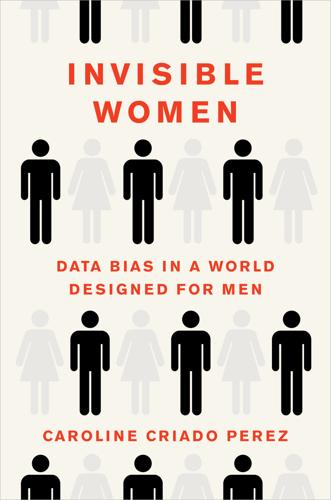
Invisible Women
by
Caroline Criado Perez
Published 12 Mar 2019
From smartwatches that are too big for women’s wrists,19 to map apps that fail to account for women’s desire for ‘safest’ in addition to ‘fastest’ routes; to ‘measure how good you are at sex’ apps called ‘iThrust’20 and ‘iBang’21 (and yes the in-built assumptions of what constitutes good sex are exactly what the names imply), the tech industry is rife with examples of tech that forget about women. Virtual reality (VR) headsets that are too big for the average woman’s head; a ‘haptic jacket’ (a jacket that simulates touch) that fits snugly on a male body, but on a female reviewer’s body ‘could have fit over a puffy winter coat’; augmented-reality glasses whose lenses are too far apart for a woman to focus on the image, ‘or whose frames immediately fall off my face’. Or, as I know from my experience of going on TV and giving public lectures, mic packs that require either a waistband or substantial pockets to attach to. Out goes pretty much every dress ever designed.
…
via=gdpr-consent#methodology 14 https://www.historians.org/publications-and-directories/perspectives-onhistory/may-2010/what-the-data-reveals-about-women-historians 15 https://www.historians.org/publications-and-directories/perspectives-on-history/december-2015/the-rise-and-decline-of-history-specializations-over-the-past-40-years 16 http://duckofminerva.com/2015/08/new-evidence-on-gender-bias-in-irsyllabi.html 17 https://www.theguardian.com/world/2004/jan/23/gender.uk 18 Sex Discrimination Law Review (January 2018), www.fawcettsociety.org.uk 19 Nielsen, Mathias Wullum, Andersen, Jens Peter, Schiebinger, Londa and Schneider, Jesper W. (2017), ‘One and a half million medical papers reveal a link between author gender and attention to gender and sex analysis’, Nature Human Behaviour, 1, 791–6 20 https://www.vox.com/policy-and-politics/2017/7/18/15991020/3-gop-women-tank-obamacare-repeal 21 Ransby, B. (2006), ‘Katrina, Black Women, and the Deadly Discourse on Black Poverty in America’, Du Bois Review: Social Science Research on Race, 3:1, 215–22, DOI:10.1017/S1742058X06060140 22 https://grist.org/article/hurricane-maria-hit-women-in-puerto-rico-the-hardest-and-theyre-the-ones-building-it-back/ 23 https://www.vogue.com/projects/13542078/puerto-rico-after-hurricane-maria-2/ Index of Searchable Terms academia Académie française acetylsalicylic acid Achilles tendon acute coronary syndrome adverse drug reaction (ADR) Affordable Care Act (2010) Afghanistan African Americans agency workers Agenda agriculture Ahmed, Samira Alaska alcohol algorithms Ali, Syed all-women shortlists (AWS) AllBright alt-right alternative work Alvarez, Janica Always Alzheimer’s disease ambition American Academy of Family Physicians American Academy of Pediatrics American Airlines American Civil War (1861–5) American Express American Heart Association Amnesty International anaemia anatomy Anderson, Chris angina angiograms Angola animal testing antibiotics antidepressants antihistamines antipsychotics anxiety aorta Apple Applebaum, Anne architects Argentina Aristotle Armenia Arrigoitia, Melissa Fernández artificial intelligence (AI) asbestos Asperger’s syndrome aspirin Assange, Julian Assassin’s Creed assertiveness asylums Atlantic attention deficit hyperactivity disorder (ADHD) ATX augmented-reality glasses Austen, Jane austerity. Australia gender pay gap gendered poverty Gillard ministries (2010–13) homelessness leisure time maternity. leave medical research military murders paternity. leave political representation precarious work school textbooks sexual assault/harassment taxation time-use surveys unpaid work Australia Institute Austria autism auto-plastics factories Autoblog autoimmune diseases automotive plastics workplaces Ayrton, Hertha Azerbaijan babies’ cries baby bottles Baker, Colin Baku, Azerbaijan Ball, James Bangladesh Bank of England banknotes Barbican, London Barcelona, Catalonia beauticians de Beauvoir, Simone Beer, Anna Beijing, China Belgium Berkman Center for Internet and Society Besant, Annie BI Norwegian Business School bicarbonate of soda Big Data bile acid composition biomarkers biomass fuels biomechanics Birka warrior Birmingham, West Midlands bisphenol A (BPA) ‘bitch’ bladder ‘Blank Space’ (Swift) blind recruitment blood pressure Bloom, Rachel Bloomberg News Bock, Laszlo body fat body sway Bodyform Boesel, Whitney Erin Boler, Tania Bolivia Boosey, Leslie Boserup, Ester Bosnia Boston Consulting Group Botswana Bouattia, Malia Boulanger, Béatrice Bourdieu, Pierre Bovasso, Dawn Boxing Day tsunami (2004) boyd, danah brain ischaemia Brazil breasts cancer feeding and lifting techniques pumps reduction surgery and seat belts and tactile situation awareness system (TSAS) and uniforms Bretherton, Joanne Brexit Bricks, New Orleans brilliance bias Brin, Sergey British Electoral Survey British Journal of Pharmacology British Medical Journal British Medical Research Council British National Corpus (BNC) Broadly Brophy, Jim and Margaret Buick Bulgaria Burgon, Richard Bush, Stephen Buvinic, Mayra BuzzFeed Cabinet caesarean sections Cairns, Alex California, United States Callanan, Martin Callou, Ada Calma, Justine calorie burning Cambridge Analytica Cameron, David Campbell Soup Canada banknotes chemical exposure childcare crime homelessness medical research professor evaluations sexual assault/harassment toilets unpaid work Canadian Centre for Policy Alternatives (CCPA) Canadian Institutes of Health cancer canon formation Cape Town, South A.ica carcinogens cardiac resynchronisation therapy devices (CRT-Ds) cardiovascular system care work and agriculture elderly people and employment gross domestic product (GDP) occupational health and paternity leave time-use surveys and transport and zoning Carnegie Mellon University carpenters cars access to crashes driving tests motion sickness navigation systems Castillejo, Clare catcalling Cavalli, Francesco cave paintings CCTV Ceccato, Vania cell studies Center for American Progress Center for Economic and Social Rights (CESR) Center for Talent Innovation Central Asia Centre of Better Births, Liverpool Women’s Hospital chemicals Chiaro Chicago, Illinois chief executive officers (CEO) child benefit child marriage childbirth childcare and agriculture cost of and employment and gross domestic product (GDP) and paternity leave time-use surveys and zoning children’s television China cholera Chopin, Frédéric Chou, Tracy chromosomes chronic illness/pain Chronic Pain Policy Coalition chulhas Cikara, Mina circadian rhythms Citadel classical music clean stoves cleaning climate change Clinton, Hillary clitoridectomies Clue coal mining coastguards Collett Beverly colon cancer Columbia University competence vs warmth composers Composers’ Guild of Great Britain computer science confirmation bias confounding factors Congo, Democratic Republic of the Connecticut, United States Conservative Party construction work contraception contractions cooking cookstoves Corbusier, Le Cornell University coronary stents Corpus of Contemporary American English (COCA) corrective rape cosmetology Cosmopolitan Cotton, Dany Coyle, Diane crash test dummies Crazy Ex-Girlfriend Crewe, Emma Crick, Francis Crime Prevention and Community Safety crime crime scene investigators Croatia crochet Crockety, Molly CurrMIT CVs (curriculum vitaes) Czech Republic daddy quotas Daly, Caroline Louisa Data2x Davis-Blake, Alison Davis, Wendy Davison, Peter defibrillators deforestation Delhi, India dementia Democratic Party Democratic Republic of the Congo Democratic United Party dengue fever Denmark dental devices Department for Work and Pensions depression diabetes diarrhoea diet diethylstilbestrol (DES) disabled people disasters Ditum, Sarah diversity-valuing behavior DNA (deoxyribonucleic acid) Do Babies Matter (Goulden, Mason, and Wolfinger) Doctor Who domestic violence Donison, Christopher Doss, Cheryl ‘draw a scientist’ driving dry sex Dyas-Elliott, Roger dysmenorrhea E3 Eagle, Angela early childhood education (ECE) Ebola economics Economist, The Edexcel education Edwards, Katherine Einstein, Albert elderly people Eliot, George Elks lodges Elvie emoji employment gender pay gap occupational health parental leave precarious work sexual assault/harassment and unpaid work ‘End of Theory, The’ (Anderson) endocrine disrupting chemicals (EDCs) Endocrine Society endometriosis endovascular occlusion devices England national football English language ENIAC (Electronic Numerical Integrator and Computer) Enlightenment entrepreneurs epilepsy Equal Times Equality Act (2010) erectile dysfunction Estonian language Ethiopia EuroNCAP European Parliament European Union academia bisphenol A (BPA) chronic illnesses crash test dummies employment gap endocrine disrupting chemicals (EDCs) gender-inflected languages life expectancy medical research parental leave precarious work sexual harassment taxation transport planning Evernote EverydaySexism evolution exercise extension services Facebook facial wrinkle correction fall-detection devices Fallout Family and Medical Leave Act (1993) farming Fawcett Society Fawlty Towers female Viagra feminism Feminist Frequency films Financial crash (2008) Finland Finnbogadóttir, Vigdís Finnish language firefighters first past the post (FPTP) First World War (1914–18) Fiske, Susan Fitbit fitness devices flexible working Folbre, Nancy Food and Agriculture Organization (FAO) Food and Drug Administration (FDA) football forced marriage Ford Fordham, Maureen fragile states France Franklin, Rosalind Frauen-Werk-Stadt free weights Freeman, Hadley French language Freud, Sigmund From Poverty to Power (Green) funeral rites FX gaming GapJumpers Gates Foundation Gates, Melinda gathering Geffen, David gender gender data gap academia agriculture algorithms American Civil War (1861–5) brilliance bias common sense crime Data2x female body historical image datasets innovation male universality medical research motion sickness occupational health political representation pregnancy self-report bias sexual assault/harassment smartphones speech-recognition technology stoves taxation transport planning unpaid work warmth vs competence Gender Equality Act (1976) Gender Global Practice gender pay gap gender-fair forms gender-inflected languages gendered poverty genderless languages Gendersite General Accounting Office generic masculine genius geometry Georgetown University German language German Society of Epidemiology Germany academia gender pay gap gender-inflected language Landesamt für Flüchtlingsangelegenheiten (LAF) medical research precarious work refugee camps school textbooks unpaid work Gezi Park protests (2013) Ghana gig economy Gild Gillard, Julia GitHub Glencore Global Alliance for Clean Cookstoves Global Gender Gap Index Global Media Monitoring Project Golden Globes Google artificial intelligence (AI) childcare Images maternity leave News Nexus petabytes pregnancy parking promotions search engine speech-recognition software Translate Gosling, Ryan Gothenburg, Sweden Gove, Michael Government Accounting Office (GAO) Great Depression (1929–39) Greece Green, Duncan Greenberg, Jon groping gross domestic product (GDP) Grown, Caren Guardian Gujarat earthquake (2001) Gulf War (1990–91) gyms H1N1 virus Hackers (Levy) hand size/strength handbags handprints haptic jackets Harman, Harriet Harris, Kamala Harvard University hate crimes/incidents Hawking, Stephen Haynes, Natalie Hayward, Sarah Hazards Health and Safety at Work Act (1974) Health and Safety Executive (HSE) health-monitoring systems healthcare/medicine Hearst heart attacks disease medication rhythm abnormalities surgery Heat St Heinrich Böll Foundation Helldén, Daniel Henderson, David Henry Higgins effect Henry VIII, King of England Hensel, Fanny hepatitis Hern, Alex high-efficiency cookstoves (HECs) Higher Education Statistics Agency Himmelweit, Sue hip belts history Hodgkin’s disease Holdcrofity, Anita Hollaback ‘Hollywood heart attack’ Homeless Period, The homelessness hopper fare Hopper, Grace hormones House of Commons Household Income Labour Dynamics of Australia Survey housekeeping work Howard, Todd human immunodeficiency virus (HIV) Human Rights Act (1998) Human Rights Watch human–computer interaction Hungary hunter-gatherer societies Huntingdon, Agnes Hurricane Andrew (1992) Hurricane Katrina (2005) Hurricane Maria (2017) hyperbolic geometry hysterectomies hysteria I Am Not Your Negro Iceland identity Idomeni camp, Greece Illinois, United States images immune system Imperial College London Inc Income of Nations, The (Studenski) indecent exposure Independent India Boxing Day tsunami (2004) gendered poverty gross domestic product (GDP) Gujarat earthquake (2001) political representation sexual assault/harassment stoves taxation toilets unpaid work Indian Ocean tsunami (2004) Industrial Revolution (c. 1760–1840) influenza Inmujeres innovation Institute for Fiscal Studies Institute for Women’s Policy Research Institute of Medicine Institute of Women’s Policy Research (IWPR) institutionalised rape Insurance Institute for Highway Safety Inter-agency Working Group on Reproductive Health in Crises Inter-Parliamentary Union’s (IPU) Internal Revenue Service (IRS) International Agency Research on Cancer International Conference on Intelligent Data Engineering and Automated Learning International Council of Nurses International Encyclopaedia of Women Composers International Labour Organization (ILO) International Monetary Fund (IMF) International Peace Institute International Trade Union Confederation (ITUC) interrupting intestinal enzymes iPhone Ireland IRIN irritable bowel syndrome Islamic State of Iraq and al-Sham (ISIS) isometric exercises Israel Italy Jackson, Henry Japan Jenkins, Simon Jepson, Peter job interviews job vacancies Jones, Anna Jones, Brigid Juárez, Victoria ‘just in time’ scheduling so.ware Kail, Eva Karlskoga, Sweden Karnataka Household Asset Survey Katebe, Uganda Keecoo K1 Kelly, Paul Kenya Khayelitsha, South Africa kidneys kinesiology Knausgaard, Karl Ove Knope, Leslie Koofi, Fawzia Korea Kronos Kuznets, Simon Labour Party Lammy, David Lancet Lancet Planetary Health Landesamt für Flüchtlingsangelegenheiten (LAF) language Latin America Latvia Lau, Tessa Lauer, Matt Lawrence, David Lean In (Sandberg) Lebanon Legro, Richard Leicester, Leicestershire leisure time lesbians Lesotho lethal violence Levy, Steven Lewis, Brandon Leyster, Judith Liberal Democrats Liberia libertarianism life expectancy Life of Pi Lilla, Mark Lim, Angelica Limpsfield Grange, Surrey Lin Qing Linder, Astrid literacy literature Littman, Ellen liver failure Liverpool, Merseyside lobotomies Local Government Act (1972) London, England Fire Brigade general election (2017) precarious work sexual assault/harassment transportation London School of Economics (LSE) London Review of Books Long Friday long-hours culture longevity Los Angeles Times Los Angeles, California Loughborough University Louisiana, United States Loukaitou-Sideris, Anastasia lubricant lung capacity lung diseases Macedonia Mackinnon, Catherine Maconchy, Elizabeth Made by Many Madrid, Spain malaria Malawi male universality Malmö, Sweden Malta mammary carcinogens ‘Man the Hunter’ Manchester University Martínez-Román, Adi Martino, Tami Marvel Comics maternal mortality maternity leave mathematics Mazarra, Glen McCabe, Jesse McCain, John McGill University McKinsey McLean, Charlene Medela medicine/healthcare Medline Memorial University Mendelssohn, Felix Mendes, Eva Mendoza-Denton, Rodolfo menopause menstruation mental health meritocracy Messing, Karen meta gender data gap MeToo movement Metroid mewar angithi (MA) Mexico Miami, Florida mice Microsoft migraines military Milito, Beth Miller, Maria Minassian, Alek Minha Casa, Minha Vida miscarriages Mismeasure of Woman, The (Tavris) misogyny Mitchell, Margaret Mogil, Jeffrey Mongolia Montreal University Morgan, Thomas Hunt morphine motion parallax motion sickness Motorola multiple myeloma Mumbai, India murders Murray, Andrew muscle music My Fair Lady myometrial blood ‘Myth’ (Rukeyser) nail salons Naipaul, Vidiadhar Surajprasad naive realism National Aeronautics and Space Administration (NASA) National Autistic Society National Democratic Institute National Health Service (NHS) National Highway Traffic Safety Administration (NHTSA) National Institute for Health and Case Excellence (NICE) National Institute of Health Revitalization Act (1993) National Institutes of Health (NIH) National Union of Students (NUS) natural gender languages Nature Navarro, Jannette Naya Health Inc Nea Kavala camp, Greece Neitzert, Eva Neolithic era Netflix Netherlands neutrophils New Jersey, United States New Orleans, Louisiana New Statesman New York, United States New York Committee for Occupational Safety & Health (NYCOSH) New York Philharmonic Orchestra New York Times New Yorker New Zealand Newham, London Nigeria Nightingale, Florence Nobel Prize nomunication Norris, Colleen Norway Nottingham, Nottinghamshire nurses Nüsslein-Volhard, Christiane O’Neil, Cathy O’Neill, Rory Obama, Barack Occupational Health and Safety Administration occupational health Oedipus oestradiol oestrogen office temperature Olympic Games Omron On the Generation of Animals (Aristotle) orchestras Organisation for Economic Cooperation and Development (OECD) Organisation for the Study of Sex Differences Orissa, India osteopenia osteoporosis ovarian cancer Oxfam Oxford English Dictionaries Oxford University oxytocin pacemakers pain sensitivity pairing Pakistan Pandey, Avanindra paracetamol parental leave Paris, France Parkinson’s disease parks passive tracking apps paternity leave patronage networks pattern recognition Payne-Gaposchkin, Cecilia peace talks pelvic floor pelvic inflammatory disease pelvic stress fractures pensions performance evaluations periods Persian language personal protective equipment (PPE) Peru petabytes Pew Research Center phantom-limb syndrome phenylpropanolamine Philadelphia, Pennsylvania Philippines phobias phthalates Physiological Society pianos Plato plough hypothesis poetry Poland police polio political representation Politifact Pollitzer, Elizabeth Portland, Oregon Portugal post-natal depression post-traumatic stress disorder (PTSD) poverty Powell, Colin PR2 Prada prams precarious work pregnancy Pregnant Workers Directive (1992) premenstrual syndrome (PMS) primary percutaneous coronary interventions (PPCI) Prinz-Brandenburg, Claudia progesterone projection bias prolapse promotions proportional representation (PR) Prospect Union Prospect Public Monuments and Sculptures Association public sector equality duty (PSED) public transport Puerto Rico purchasing authority ‘quantified self’ community Quebec, Canada QuiVr radiation Rajasthan, India rape RateMyProfessors.com recruitment Red Tape Challenge ‘Redistribution of Sex, The’ Reference Man Reformation refugees Renaissance repetitive strain injury (RSI) Representation of the People Act (1832) Republican Party Resebo, Christian Reykjavik, Iceland Rhode Island, United States Rio de Janeiro, Brazil risk-prediction models road building Road Safety on Five Continents Conference Roberts, David Robertson, Adi robots Rochdale, Manchester Rochon Ford, Anne Rudd, Kevin Rukeyser, Muriel Russian Federation Rwanda Sacks-Jones, Katharine Saenuri Party Safecity SafetyLit Foundation Sánchez de Madariaga, Inés Sandberg, Sheryl Sanders, Bernard Santos, Cristine Schalk, Tom Schenker, Jonathan Schiebinger, Londa School of Oriental and African Studies (SOAS) school textbooks Schumann, Clara science, technology, engineering and maths (STEM) Scientific American scientists Scotland Scythians ‘sea of dudes’ problem Seacole, Mary seat belts Second World War (1939.45) self-report bias September 11 attacks (2001) Serbia Sessions, Jefferson severe acute respiratory syndrome (SARS) sex Sex Discrimination Act (1975) sex robots sex-disaggregated data agriculture chemical exposure conflict employment fall-detection devices fitness devices gendered poverty medical research precarious work smartphones taxation transport urban design virtual reality voice recognition working hours sexual violence/harassment shape-from-shading Sherriff, Paula Shield, The shifting agriculture Sierra Leone sildenafil citrate Silicon Valley Silver, Nate Singh, Jyoti single parents single-member districts (SMD) Siri Skåne County, Sweden skeletons skin Slate Slocum, Sally Slovenia smartphones snow clearing social capital social data Social Democratic Party (SDP) social power socialisation Solna, Sweden Solnit, Rebecca Somalia Sony Ericsson Sounds and Sweet Airs (Beer) South Africa South Korea Soviet Union (1922–91) Spain Spanish language Speak with a Geek speech-recognition technology Sphinx sports Sprout Pharmaceuticals Sri Lanka St Mark’s, Venice St Vincent & the Grenadines stab vests Stack Overflow Stanford University staple crops Star Wars Starbucks Starkey, David statins statues stem cells Stevens, Nettie Stockholm, Sweden Stoffregen, Tom stoves Streisand, Barbra streptococcal toxic shock syndrome stress strokes Strozzi, Barbara Studenski, Paul Sulpicia Supreme Court Sweden Birka warrior car crashes councils crime depression gender pay gap heart attacks murders paternity leave political representation refugee camps snow clearing sports taxation unpaid work youth urban regeneration Swedish National Road and Transport Research Institute Swift, Taylor swine flu Swinson, Joanne Kate ‘Jo’ Switzerland Syria Systran tactile situation awareness system (TSAS) Taimina, Daina Taiwan Tate, Angela Tatman, Rachael Tavris, Carol taxation teaching evaluations Teaching Excellence Framework (TEF) tear gas tech industry television temperature Temperature Temporary Assistance to Needy Families tennis tenure-track system text corpora thalidomide ThinkProgress Thor three-stone fires time poverty time-use surveys TIMIT corpus Tin, Ida toilets Toksvig, Sandi tools Toronto, Ontario Tottenham, London Toyota Trades Union Congress (TUC) tradition transit captives transportation treadmills trip-chaining troponin Trump, Donald tuberculosis (TB) Tudor period (1485–1603) Tufekci, Zeynep Turkey Twitter Uberpool Uganda Ukraine ulcerative colitis Ulrich, Laurel Thatcher Umeå, Sweden Understanding Girls with ADHD (Littman) unemployment unencumbered people Unicode Consortium Unison United Association of Civil Guards United Kingdom academia austerity autism banknotes breast pumps Brexit (2016–) Fire Brigade caesarean sections children’s centres chronic illness/pain coastguards councils employment gap endometriosis Equality Act (2010) flexible working gender pay gap gendered poverty general elections generic masculine gross domestic product (GDP) heart attacks homelessness Human Rights Act (1998) leisure time maternity leave medical research military murders music nail salons occupational health paternity leave pedestrians pensions personal protective equipment (PPE) police political representation precarious work public sector equality duty (PSED) Representation of the People Act (1832) scientists Sex Discrimination Act (1975) sexual assault/harassment single parents statues stress taxation toilets transportation trip-chaining universities unpaid work Yarl’s Wood Detention Centre United Nations Children’s Fund (UNICEF) Commission on the Status of Women Data2x Economic Commission for Africa Food and Agriculture Organization (FAO) homicide survey Human Development Report and peace talks Population Fund Security Council Resolution 1325 (2000) and stoves and Switzerland and toilets and unpaid childcare Women’s Year World Conference on Women United States academia Affordable Care Act (2010) Agency for International Development (USAID) Alzheimer’s disease banknotes bisphenol A (BPA) breast pumps brilliance bias Bureau of Labor Statistics car crashes chief executive officers (CEO) childbirth, death in Civil War (1861–5) construction work councils crime early childhood education (ECE) employment gap endocrine disrupting chemicals (EDCs) endometriosis farming flexible working gender pay gap gendered poverty generic masculine Great Depression (1929–39) gross domestic product (GDP) healthcare heart attacks Hurricane Andrew (1992) Hurricane Katrina (2005) Hurricane Maria (2017) immigration detention facilities job interviews ‘just in time’ scheduling so.ware leisure time maternity leave medical research meritocracy military mortality rates murders nail salons National Institute of Health Revitalization Act (1993) occupational health personal protective equipment (PPE) political representation precarious work presidential election (2016) school textbooks September 11 attacks (2001) sexual assault/harassment single parents soccer team Supreme Court taxation tech industry toilets transportation Trump administration (2017–) universities unpaid work universal credit (UC) universality universities University and College Union University of California, Berkeley University of California, Los Angeles (UCLA) University of Chicago University of Liverpool University of London University of Manchester University of Michigan University of Minnesota University of North Carolina University of Stirling University of Sussex University of Washington University of York unpaid work agriculture and algorithms and gross domestic product (GDP) and occupational health and stoves and transport in workplace and zoning upper body strength upskirting urinals urinary-tract infections urination uro-gynaecological problems uterine failure uterine tybroids Uttar Pradesh, India Uzbekistan vaccines vagina Valium Valkrie value-added tax (VAT) Van Gulik, Gauri Venice, Italy venture capitalists (VCs) Veríssimo, Antônio Augusto Viagra Victoria, Queen of the United Kingdom video games Vienna, Austria Vietnam Vikings Villacorta, Pilar violence virtual reality (VR) voice recognition Volvo voting rights Vox voyeurism Wade, Virginia Walker, Phillip walking wallet to purse Walmart warfare warmth vs competence Warsaw Pact Washington Post Washington Times Washington, DC, United States WASHplus WaterAid Watson, James We Will Rebuild weak contractions Weapons of Math Destruction (O’Neil) West Bengal, India whiplash Wiberg-Itzel, Eva Wikipedia Wild, Sarah Williams, Gayna Williams, Serena Williams, Venus Williamson, £eresa Willow Garage Wimbledon Windsor, Ontario Winter, Jessica Wired Wolf of Wall Street, The Wolfers, Justin Wolfinger, Nicholas ‘Woman the Gatherer’ (Slocum) Women and Equalities Committee Women Will Rebuild Women’s Budget Group (WBG) Women’s Design Service Women’s Engineering Society Women’s Refugee Commission Women’s Year Woolf, Virginia workplace safety World Bank World Cancer Research Fund World Cup World Economic Forum (WEF) World Health Organization (WHO) World Meteorological Organisation worm infections Woskow, Debbie Wray, Susan Wyden, Robert XY cells Y chromosome Yale University Yarl’s Wood Detention Centre, Bedford Yatskar, Mark Yemen Yentl syndrome Yezidis Youth Vote, The youthquake Zambia zero-hour contracts Zika zipper quotas zombie stats zoning Zou, James Photo by Rachel Louise Brown CAROLINE CRIADO PEREZ is a writer, broadcaster, and feminist activist and was named Liberty Human Rights Campaigner of the Year and OBE by the Queen.
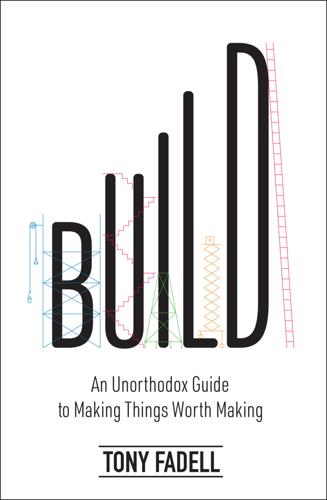
Build: An Unorthodox Guide to Making Things Worth Making
by
Tony Fadell
Published 2 May 2022
Maybe. If they even understood what it was. A luxury toy for rich people or nerds or very rich nerds. A plaything. If you’re not solving a real problem, you can’t start a revolution. A glaring example is Google Glass or Magic Leap—all the money and PR in the world can’t change the fact that augmented reality (AR) glasses are a technology in search of a problem to solve. There’s just no reason for the general public to buy them. Not yet. Nobody can quite imagine walking into a party or the office with these weird ugly glasses on their face, creepily filming everyone around them. And even if there’s a brilliant vision for the future of AR glasses, the technology can’t deliver it yet and the social stigma will take a long time to dissolve.
…
acquisitions and mergers CEOs and, 345–55 Google’s acquisition of Nest, xix, 304, 310–16, 338, 345–52, 354–55, 359–61, 371 adulthood decisions of early adulthood, 8–9 lessons of, 5–8 risks of early adulthood, 6, 8, 9–13 AdWords, 160 all-hands meetings, 82, 143, 247–48, 253–55, 257, 259, 360, 371 Alphabet Google’s development of, xix, 314 Nest Labs and, 314, 315–17, 359 Sundar Pichai and, 355 Amazon, 116, 118, 250, 345 Amazon Fire Phone, 118–19 Android, 327–28 app economy, 283 Apple acquisitions of, 353 Bill Atkinson at, 2–3 board of directors of, 334, 339, 343 connected home systems and, 345 culture of, 258, 348, 353 design thinking and, 267, 283 Distinguished Engineer, Scientist or Technologist (DEST) program, 47 external heartbeat of, 147–48 Tony Fadell at, xviii, 19, 55, 69, 78, 80, 81, 82, 84–86, 91, 93, 96, 117, 136, 163, 237, 303, 320, 374 Andy Hertzfeld at, 2–3 individual contributors recognized by, 47 job applications with, 23 market cap of, 91 product development pace at, 120–21 product marketing at, 286 reputation for excellence, 121 server project of, 201–2 subsidized meals of, 358 target customers of, 202–3 uniqueness of, 106 Apple III, 329 Apple Worldwide Developers Conference (WWDC), 148 App Store, 203 ASIC Enterprises, xv–xvi, 199 assholes aggressive assholes, 67 asshole assholes, 66–67, 73 controlling assholes, 66, 67, 69–71, 73 mission-driven “assholes,” 67–69, 188 motivations of, 68, 70, 75 “no assholes” policy, 234–35, 239, 298 passive-aggressive assholes, 67 political assholes, 65–66, 69–70, 73–75 social media use and, 73 strategies for dealing with, 71–75, 84–85 types of, 65–68 Aston Martin factory, 322 Atkinson, Bill, 2–3, 12, 20, 27, 165 Audible, 40 augmented reality (AR) glasses, 16 Azure cloud computing, 124 Bain, 17 banks, 202, 349–50 Beats, 353 Beiers, Tracy, 31–32 benefits, criteria for, 356–57, 361 Berkshire Hathaway, 315 Best Buy, 125, 160 Bezos, Jeff, 118–19, 136, 321, 342–43 BlackBerry, 128–29, 129, 130, 132 Blevins, Tony, 92 board of directors of Amazon, 118 categories of, 337 CEOs and, xi, 107, 185, 192, 320, 321, 326, 332, 333–44, 364, 365, 367 chairperson of, 340 choosing members of, 339–44 dictatorial boards, 337 duty of care and duty of loyalty, 341 effectiveness of, 336–37 expertise of members, 341 external project heartbeat rhythms and, 342 incentives of, 343 indifferent boards, 337 inexperienced boards, 337, 338 investors and, 335, 337, 340–41 managers and, 56 meetings of, 143, 333–36 1:1s with, 340 operator board members, 341 private company boards, 335, 343 public company boards, 335, 343 quitting and, 81 removal of CEO, 336 removal of members, 342 role of, 333 startups and, 183, 184, 218–19, 223, 335, 338–39 storytelling and, 336, 342 venture capital and, 190 Boiler Room (film), 296 Brandolini’s law, 74 breakpoints culture and, 257–60 human resources and, 255–56 individual contributors as managers, 248, 251–53 managers becoming directors, 238, 253 meetings and, 253–55 organizational design and, 250–51 specialization and, 249–50 team size and, 242, 243–49, 244, 245, 246, 260, 283 Brin, Sergey, 310, 347, 355 Buffett, Warren, 315 building your business.
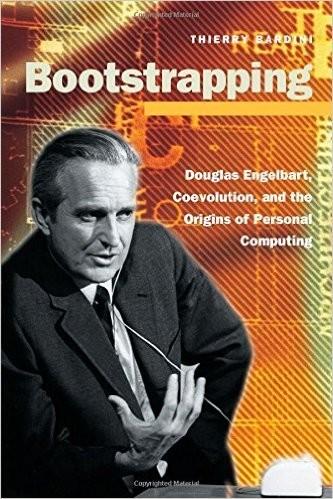
Bootstrapping: Douglas Engelbart, Coevolution, and the Origins of Personal Computing (Writing Science)
by
Thierry Bardini
Published 1 Dec 2000
In fact, the past fifty years of computing advances have ex- panded the very idea of "reality," and current research programs cover the whole spectrum of these possible alternate realities, from the "classic reality" of ubiquitous computers in what has been ordinary daily life to the intermediate 228 Coda mix of "augmented realities" and eventually to the virtual realities of cyber- space and simstim. In augmented realities, computer-generated information is superimposed onto the "real world" through a minimally intrusive head-mounted display or any other wearable output device. In this case, the human user is immersed at the same time in the "real world" and in an artificially generated, but also real world.

The Patient Will See You Now: The Future of Medicine Is in Your Hands
by
Eric Topol
Published 6 Jan 2015
A New Yorker article by Nicholas Schmidle entitled “A Very Rare Book” cited an unnamed historian who said the book contained “more discoveries that changed the world than anyone has ever made before or since.”30 Rick Watson, an American bookseller, described the moon copperplate etchings, known as the Florence Sheet, as the “Declaration of Independence in the history of scientific discovery.”30 On the page of Galileo’s depiction of Jupiter’s moons, Owen Gingerich, a retired Harvard anatomy professor, proclaimed it as “the most exciting single manuscript page in the history of science.”30 It was even compared with the Gutenberg Bible itself, so powerful has Galileo’s achievement been.30 Although this example, albeit one of striking historical importance, came from science, the spawning of creativity and idea sharing certainly wasn’t limited to science, but has clearly extended to all walks of life. That little mobile devices have likewise been engines for creativity is not hard to accept. There are now millions of apps that have been specifically designed for smartphones and tablets, markedly enhancing the functionality of these devices. For example, related to astronomy, there are augmented reality apps like Star Chart, which has been downloaded by more than ten million people. By simply pointing your mobile device to the sky, the app tells exactly what constellation you’re looking at, with information on 120,000 stars. Later in this book we will get into the full medical package of sensors, lab-on-a-chip body fluid assays, and conversion to high-powered microscope and physical examination tools.
…
Once there is congestive heart failure, chronic obstructive pulmonary disease, kidney failure, cirrhosis, dementia, or any significant organ failure, there’s no real hope for a cure. That seems a pretty grim prognosis. But medicine is morphing into a data science, now that big data, unsupervised algorithms, predictive analytics, machine learning, augmented reality, and neuromorphic computing are coming in. There’s still an opportunity to change medicine for the better and at least a chance for prevention. That is, if there was a surefire signal before a disease had ever manifested itself in a person—and this information was highly actionable—the individual’s illness might be preempted.

The Future Is Asian
by
Parag Khanna
Published 5 Feb 2019
US firms are now copying Chinese innovations. LimeBike in California is copying China’s dockless bike sharing as pioneered by Ofo and MoBike. DiDi has algorithms that predict which ride-sharing users will want a ride at certain times and locations and is designing driverless car interiors for shared augmented-reality experiences—programs that Uber and others will surely copy. Apple is conducting payments through the iMessage chat service, following what Tencent has done. Amazon now has a lending service similar to that of Alibaba. Facebook plans to follow WeChat by becoming a complete ecosystem of digital services.
…
Much of Asia needs a major boost in capital stock to raise productivity, creating huge opportunities for exporting high-quality industrial and technological goods to Asia. For chip manufacturers such as Qualcomm, Asian companies’ rise in the handset market is a huge opportunity: most of its revenue comes from selling chips and technology licenses in China, and its chips are boosting the processing power of Samsung phones, enabling the company to offer new augmented-reality features. Similarly, the United States’ few remaining industrial titans, such as General Electric and Honeywell, are more reliant than ever on gas turbines, nuclear power plants, and aircraft components sold to Asian markets. GE has two-thirds of its revenues outside the United States. After China, Saudi Arabia, and Turkey, India and Pakistan are large, fast-growing markets for GE.
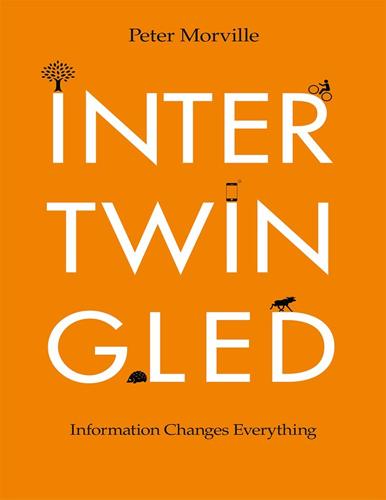
Intertwingled: Information Changes Everything
by
Peter Morville
Published 14 May 2014
It is much easier to focus design effort on the boxes because they represent tangible touchpoints – the website, the ticket machine, and so on – but most people forget to think about designing the experience of the arrows, which are the transitions from one touchpoint to the next.lxxi Links afford movement in space and time and help us make what we can barely imagine. In augmented reality with a heads-up display, places are links to people, content, and services. We must be careful where we step. And in the Internet of Things, objects are links to their own stories, spime that may change culture by absorbing externality. The service evidence of folded toilet paper is but a sign of things to come.
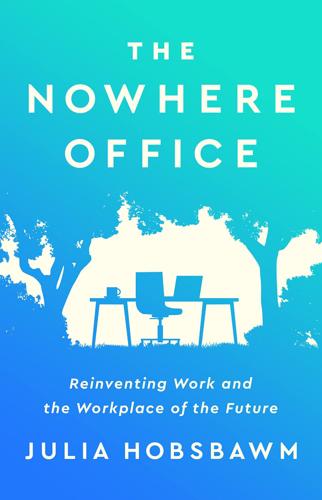
The Nowhere Office: Reinventing Work and the Workplace of the Future
by
Julia Hobsbawm
Published 11 Apr 2022
As Professor Lynda Gratton of London Business School who heads up the World Economic Forum’s Global Future Council on the New Agenda for Work, Wages and Job Creation55 puts it: ‘to make hybrid a success, you will have to reimagine projects and workflows’.56 She and her colleague Andrew Scott have redefined time in terms of the lifeline of work, identifying ‘the 100 year life’ and it is instructive to recognise there are no norms any more: just new demographics, new models, new possibilities. This should be a relief rather than a threat to managers and employees. The second issue is around time zones. If you imagine we have a placeless world in which you can work in different time zones, using digital cloud-based tools, augmented reality and teleworking, it may be time to lift the lid off the idea that the professional classes only work during the day. It ought to be possible for people to design working patterns where they can work in offices staffed 24/7 as part of the shift in norms around time and place in much the same way that some food and energy outlets or supply chain logistics operate overnight.
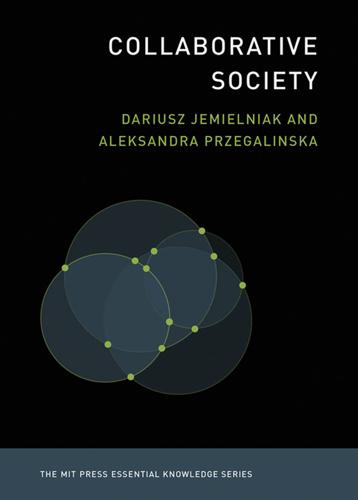
Collaborative Society
by
Dariusz Jemielniak
and
Aleksandra Przegalinska
Published 18 Feb 2020
Instagram, Snapchat, and Tinder through the Lens of Collaboration Let’s leave our virtual-world exploration behind and focus on the current social media landscape.27 Today social media have somehow abandoned the idea of providing a fully immersive online experience, even though Facebook plays with the concept through Facebook Spaces.28 And, every now and then, we hear about new augmented reality or virtual reality social games and experiments.29 The footage we see of ourselves online has recently replaced our immersive virtual selves, which perhaps turned out to be too cumbersome to build and required extensive emotional and resource investments. Keeping a virtual farm going or running a club in Second Life, for instance, demands almost as much effort as doing the same thing in the real world.
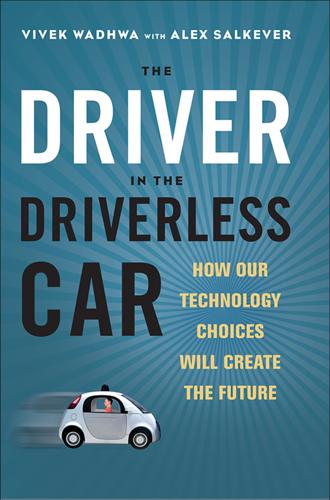
The Driver in the Driverless Car: How Our Technology Choices Will Create the Future
by
Vivek Wadhwa
and
Alex Salkever
Published 2 Apr 2017
When Clifford found out that I love the Egyptian pyramids, for instance, he devised a lesson plan that used the pyramids to cover the geometry of different types of triangles, and the mathematics behind those ancient structures. We start with a guided virtual-reality (VR) tour of the pyramids, with augmented-reality overlays to connect the abstract geometry to the physical world. In this way, I can solve geometric problems that use rooms and facades of the pyramids to illustrate them. I feel that I am in the middle of history and following the minds of the Egyptian builders, the geniuses who planned and constructed these massive timeless monuments.

Attack of the 50 Foot Blockchain: Bitcoin, Blockchain, Ethereum & Smart Contracts
by
David Gerard
Published 23 Jul 2017
Ayton spends the first third of the article repeating how devastating Blockchain will be to business, the second third making technically garbled or meaningless unsubstantiated claims about the future and the last third on a list of predictions, many of which have already been shown unfeasible and three or four of which are literally out of ’80s cyberpunk science fiction, as if he read too much William Gibson as a lad and thinks Blockchain will make Mona Lisa Overdrive real – “augmented reality using VR and holographic systems will feed off sensory layers that will sit on the Ledger of Things connecting the world”, presumably visible to your new Zeiss-Ikon eyeballs. “Someone asked me what Ethereum was… My response: ‘Imagine giving the Internet a dose of Viagra and increasing the dose each day’… The Blockchain Age is here!”

Machine Translation
by
Thierry Poibeau
Published 14 Sep 2017
The future of these objects is without a doubt more promising in professional contexts requiring people to work hands-free, for maintenance in particular (such as in the nuclear, aeronautic, and computer science fields). Other professional contexts could also provide opportunities, such as applications in medicine or sales or in the cultural domain (e.g., visits of museums with augmented reality devices). Translation Aid Tools While there has been renewed interest in machine translation since the 2000s, translation aid tools still lag behind. Companies now provide efficient specialized tools, especially “translation memories,” or databases where translators can find examples based on previous translations.

Fodor's Essential Belgium
by
Fodor's Travel Guides
Published 23 Aug 2022
It has been the victim of several thefts, and after one of its lower panels was stolen in 1934, it was never recovered (a replica stands in its place), giving rise to numerous conspiracy theories and inspiring Albert Camus’s novel The Fall. Ongoing restoration of the altarpiece since 2012 has seen what remains gradually returned to its original condition, with visitors able to see the restoration work up close at the Museum of Fine Arts. The rest now sits in a newly built visitor center, with augmented-reality tours offering an in-depth look at the history of this iconic artwork. Elsewhere, the cathedral has many works of art. Its ornate pulpit, made of white Italian marble and black Danish oak, was carved in the 18th century by the sculptor Laurent Delvaux. A Rubens masterpiece, Saint Bavo’s Entry into the Monastery, also hangs in one of the chapels.
…
Famously, this is where the looted 500 gilded spurs, taken from the defeated French knights in the 1302 Battle of the Golden Spurs, were hung afterwards; these were likely later taken away by the French but were replaced in 1952 by replicas that still hang here. At the time of writing, a new augmented-reality exhibition was to be launched in the summer of 2022, where visitors can learn of the history of the battle while touring the church. Nearby, you’ll also find the Artillery Tower, which was part of the original 14th-century fortifications. EDeken Zegerplein 1, Kortrijk AFree. Sint-Maartenskerk (St.
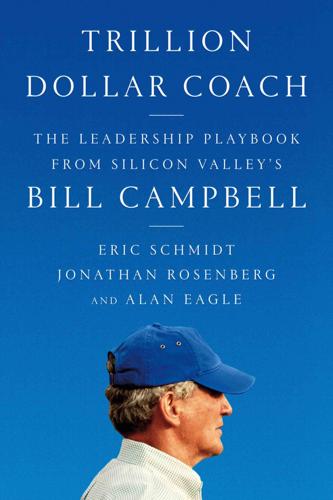
Trillion Dollar Coach: The Leadership Playbook of Silicon Valley's Bill Campbell
by
Eric Schmidt
,
Jonathan Rosenberg
and
Alan Eagle
Published 15 Apr 2019
With one gesture, a short outburst of enthusiastic clapping, he would both tell the team that he loved their work, giving them all a big pat on the back, and keep things moving. Bill’s raucous cheerleading didn’t just signal his approval, it generated momentum among the entire group in the room. What a brilliant technique! Clay Bavor, the head of virtual and augmented reality products at Google, recalls a similar thing happening. In April 2015, Clay presented at a Google executive product review, showing off a new virtual reality headset and camera. After demoing the new gear, he passed out a low-end virtual reality viewer called Cardboard that Google had created and proceeded to walk everyone through a demo of a new app designed for the device.

Designing Web APIs: Building APIs That Developers Love
by
Brenda Jin
,
Saurabh Sahni
and
Amir Shevat
Published 28 Aug 2018
In some cases, iOS developers will often connect with other iOS developers at meetups and events, but not as often with Android developers. Some devel‐ opers, like the members of Google’s GDGs, develop a strong sense of identity, whereas others might not be so strongly affiliated. Building a Developer Strategy | 147 Developer proficiency How proficient should a developer be to use your API? Some APIs, such as those for augmented reality and artificial intelligence, might require a steeper learning curve. Sometimes the API is rather simple but requires a complex OAuth and security setup. Some APIs target developers who are highly proficient, like game developers, whereas others, such as the Google Apps Script API, tar‐ get a broader audience.

Futureproof: 9 Rules for Humans in the Age of Automation
by
Kevin Roose
Published 9 Mar 2021
These are the people who help guide and oversee machines, explain the decisions made by algorithms to other humans, and do the messy work of integrating AI into corporate IT departments. Cognizant, a rival consulting firm, recently released a list of dozens of jobs it believes will soon be created, including “personal data broker,” “augmented reality journey builder,” and “juvenile cybercrime rehabilitation counselor.” The big questions, of course, are whether there will be enough of these jobs to replace the jobs that are lost to automation, and whether there will be a lengthy gap between the disappearance of the old jobs and the appearance of the new ones.

The Thank You Economy
by
Gary Vaynerchuk
Published 1 Jan 2010
It’s bound to get harder to get earned media—now that plans like Facebook campaigns are gaining in popularity, the mainstream press won’t always fall all over itself to write about them—but while it lasts, it will be powerful, powerful stuff. Of course, the best of the best will always grab the press’s heartstrings, especially as technology continues to move forward to allow outstanding mobile and augmented reality campaigns. Brands should also do everything they can to gain first-mover advantage. Marketers have to keep their finger on the pulse of the culture and keep an eye on the incoming trains. Smart marketers shouldn’t ever get too comfortable in their seats. Brands and businesses that can see the potential of emerging platforms will always have an edge over their competition.
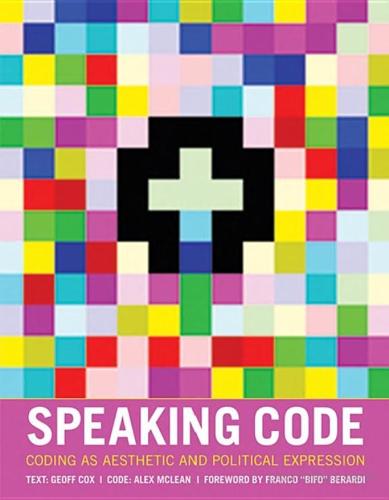
Speaking Code: Coding as Aesthetic and Political Expression
by
Geoff Cox
and
Alex McLean
Published 9 Nov 2012
tactic of “overidentification,” in which a position is pushed to its extreme, to question the effectiveness of online activism.106 In their related project, Tweet4Action.com (2011), they further respond to the exaggerated claims of social media to influence political processes, and use Twitter and a Smart Phone augmented-reality application called Layar to create “Twitter revolutions” from the comfort of your armchair.107 The project was developed and released against the backdrop of “pro-democracy” protests in North Africa and the Near East to draw attention to associated hypocrisy. It would appear that consumer capitalism and democracy have become interchangeable in representative democracies, as made explicit by UBERMORGEN.com’s media hack [V]ote Auction (2000–2006), an online service allowing consumers to directly participate in the US electoral process by selling their votes to the highest Coding Publics 91 bidder.108 Temporary injunctions followed from US courts for alleged illegal vote trading, and the server was shut down without notice.109 The inconsistencies around this inspired another project, a public shutdown service called The Injunction Generator (2003), consisting of software to autogenerate an injunction which is then sent to the DNS registrar, to the site owner, and to the media.110 In this way, the public is encouraged to take the law into their own hands, and is able to send a cease-and-desist letter to force a site to take its contents offline.
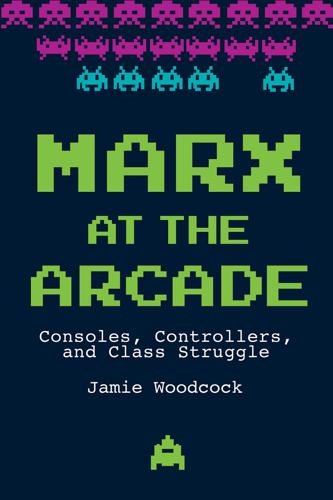
Marx at the Arcade: Consoles, Controllers, and Class Struggle
by
Jamie Woodcock
Published 17 Jun 2019
Interestingly, in a survey by Forbes, 69 percent of users of Pokémon GO said they played the game while at work, indicating the level of boredom many of us face at work in our daily lives.35 While playing Pokémon GO at work is not going to change the world, the anti-work appropriation of gamification on workers’ terms should be celebrated. The widespread adoption of smart-phones has meant that many workers have found ways to access videogames away from the electronic supervision of their work computer. Pokémon GO was clearly able to capitalize on this anti-work sentiment, as the augmented reality (AR) mobile game was downloaded over 100 million times on Google Play and generated $200 million in sales. Nintendo’s share price initially soared. Although, amusingly, it later dived as investors realized the company itself would not profit that much from the game, given it was developed by Niantic (and draws on data from Google, who also incubated the company).
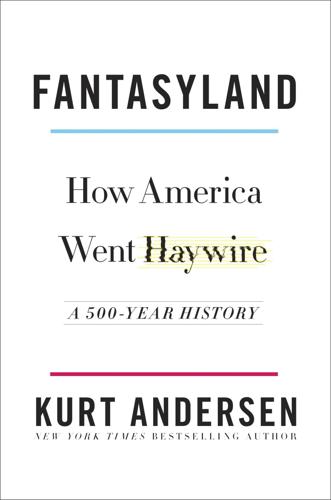
Fantasyland: How America Went Haywire: A 500-Year History
by
Kurt Andersen
Published 4 Sep 2017
Unlike on an acid trip, not for a moment did I really think I had magical powers or faced death, but to my mind’s more primitive, unconscious parts, the experiences seemed absolutely real. The next step is augmented reality. It exists and works, and before long it will be available to everyone. Google, Warner Bros., and blue-chip Silicon Valley venture capitalists have shoveled $1.4 billion into the start-up Magic Leap, which has no products or revenues and almost a thousand employees. Its augmented reality technology won’t encase your eyes in a headset’s miniature-movie-theater mask. Instead, as you look around at the real world, teeny projectors will beam images directly into your eyes, onto your retinas.
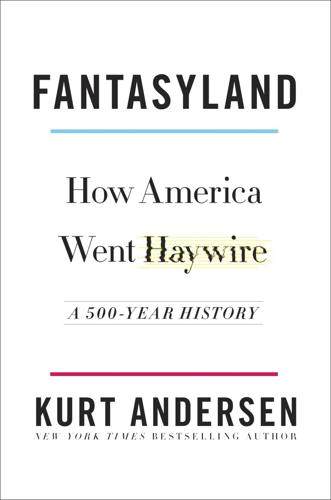
Fantasyland
by
Kurt Andersen
Published 5 Sep 2017
Unlike on an acid trip, not for a moment did I really think I had magical powers or faced death, but to my mind’s more primitive, unconscious parts, the experiences seemed absolutely real. The next step is augmented reality. It exists and works, and before long it will be available to everyone. Google, Warner Bros., and blue-chip Silicon Valley venture capitalists have shoveled $1.4 billion into the start-up Magic Leap, which has no products or revenues and almost a thousand employees. Its augmented reality technology won’t encase your eyes in a headset’s miniature-movie-theater mask. Instead, as you look around at the real world, teeny projectors will beam images directly into your eyes, onto your retinas.

Programming Scala: tackle multicore complexity on the JVM
by
Venkat Subramaniam
Published 1 May 2009
The following are in print as of June 2009; be sure to check our website at pragprog.com for newer titles. Title Year ISBN Advanced Rails Recipes: 84 New Ways to Build Stunning Rails Apps 2008 9780978739225 Pages 464 Agile Retrospectives: Making Good Teams Great 2006 9780977616640 200 Agile Web Development with Rails, Third Edition 2009 9781934356166 784 Augmented Reality: A Practical Guide 2008 9781934356036 328 Behind Closed Doors: Secrets of Great Management 2005 9780976694021 192 Best of Ruby Quiz 2006 9780976694076 304 Core Animation for Mac OS X and the iPhone: Creating Compelling Dynamic User Interfaces 2008 9781934356104 200 Data Crunching: Solve Everyday Problems using Java, Python, and More 2005 9780974514079 208 Deploying Rails Applications: A Step-by-Step Guide 2008 9780978739201 280 Design Accessible Web Sites: 36 Keys to Creating Content for All Audiences and Platforms 2007 9781934356029 336 Desktop GIS: Mapping the Planet with Open Source Tools 2008 9781934356067 368 Developing Facebook Platform Applications with Rails 2008 9781934356128 200 Enterprise Integration with Ruby 2006 9780976694069 360 Enterprise Recipes with Ruby and Rails 2008 9781934356234 416 Everyday Scripting with Ruby: for Teams, Testers, and You 2007 9780977616619 320 FXRuby: Create Lean and Mean GUIs with Ruby 2008 9781934356074 240 From Java To Ruby: Things Every Manager Should Know 2006 9780976694090 160 GIS for Web Developers: Adding Where to Your Web Applications 2007 9780974514093 275 Google Maps API, V2: Adding Where to Your Applications 2006 PDF-Only Groovy Recipes: Greasing the Wheels of Java 2008 9780978739294 264 Hello, Android: Introducing Google’s Mobile Development Platform 2008 9781934356173 200 Interface Oriented Design 2006 9780976694052 240 Land the Tech Job You Love 2009 9781934356265 280 Learn to Program, 2nd Edition 2009 9781934356364 230 Continued on next Download page at Boykma.Com Prepared exclusively for sam kaplan 83 Title Year ISBN Manage It!

Hit Refresh: The Quest to Rediscover Microsoft's Soul and Imagine a Better Future for Everyone
by
Satya Nadella
,
Greg Shaw
and
Jill Tracie Nichols
Published 25 Sep 2017
Microsoft Story Labs, September 2016. https://news.microsoft.com/stories/computingcancer/. Dupzyk, Kevin. “I Saw the Future Through Microsoft’s HoloLens.” Popular Mechanics, September 6, 2016, http://www.popularmechanics.com/technology/a22384/hololens-ar-breakthrough-awards/. Aukstakalnis, Steve. Practical Augmented Reality. A Guide to the Technologies, Applications, and Human Factors for AR and VR. Boston: Addison-Wesley, 2016. Grunwald, Martin. Human Haptic Perception: Basics and Applications. Boston: Birkhauser, 2008. Gartner, Hype Cycle for Emerging Technologies, 2016, G00299893 Aaronson, Scott. Quantum Computing Since Democritus.
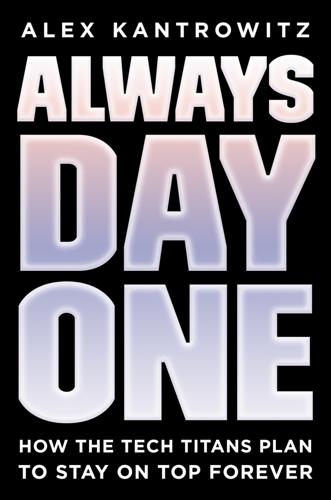
Always Day One: How the Tech Titans Plan to Stay on Top Forever
by
Alex Kantrowitz
Published 6 Apr 2020
“One of the things that I hope to do—and that I hope we do in AR and VR—is influence the direction of the next computing platform to be more focused on the organizational principle, making it around people, rather than just tasks,” he said. “This is an area where I really care about the direction that computing goes in.” Zuckerberg knows what it’s like to depend on others, and he doesn’t want to do it forever. If virtual or augmented reality takes off, Facebook, through Oculus, will have its own popular operating system, giving it a say in the way people interact with its services, the likes of which it doesn’t have on desktop, mobile, or voice. Zuckerberg wants this badly, and is investing in Oculus to set the stage for Facebook’s next big reinvention.
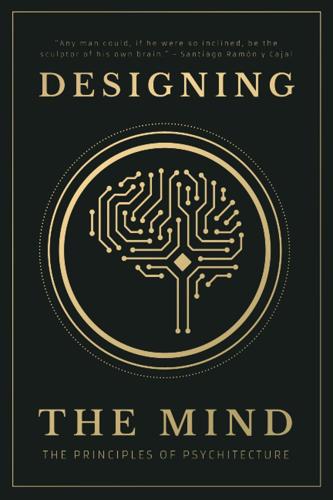
Designing the Mind: The Principles of Psychitecture
by
Designing The Mind
and
Ryan A Bush
Published 10 Jan 2021
It is defined by the Humanity+ organization as: The intellectual and cultural movement that affirms the possibility and desirability of fundamentally improving the human condition through applied reason, especially by developing and making widely available technologies to eliminate aging and to greatly enhance human intellectual, physical, and psychological capacities.9 Transhumanist thinkers believe that some day in the not-so-distant future, we will be able to augment the brain and mind in ways nearly inconceivable today. Future pharmaceuticals and microscopic brain implants could rapidly repair, regenerate, and revamp brain cells. Genetic engineering could alter the mind biologically, increasing intelligence, creativity, or any other desired quality. Virtual or augmented reality technology may become so advanced as to be indistinguishable from reality, connect directly into our nervous systems, and allow us to live in worlds currently unimaginable. Furthermore, an advanced understanding of the mind may allow us to perfectly simulate the human brain through digital computers and upload our consciousness to the cloud.
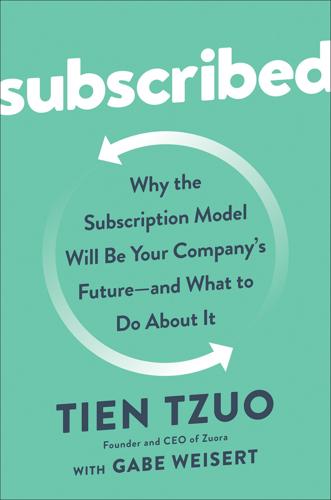
Subscribed: Why the Subscription Model Will Be Your Company's Future - and What to Do About It
by
Tien Tzuo
and
Gabe Weisert
Published 4 Jun 2018
A jet engine that’s being operated in the US Southwest, for example, has a different digital twin from one that primarily flies across the North Sea. Over time, those engines behave and degrade in different ways, and they transmit usage data accordingly. Very soon, engineers on the ground will use augmented reality headsets to see all this information overlaid on the jet engines when they inspect them. The digital twins will point out wear and trouble spots and offer opinions on how to resolve issues based on asset history. Essentially, GE operates its own social network for heavy industrial machinery.
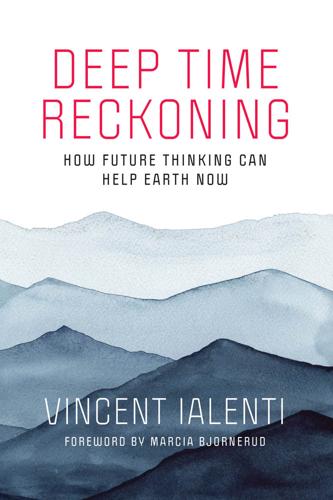
Deep Time Reckoning: How Future Thinking Can Help Earth Now
by
Vincent Ialenti
Published 22 Sep 2020
Their inscriptions bring features of past glaciers, asteroid collisions, flora and fauna, volcanic activity, and waterways into our everyday awareness. Smartphone map applications not only help us navigate what regions look like today, but also depict what regions looked like decades, centuries, and millennia ago. We read news articles about popular augmented reality applications that, with the help of a special headset, immerse us virtually in our region’s distant past. In this alternative society, a program called Future Sister Cities, now widely popular, has been inspired by the CGIAR climate analogues project described in chapter 1. Through it, thousands of towns, cities, and villages set up knowledge-sharing partnerships with counterparts elsewhere in the world—with communities harboring ecosystems resembling those that their own town, city, or village is forecasted to harbor after decades of climate change.

Architects of Intelligence
by
Martin Ford
Published 16 Nov 2018
She was also featured on Fortune Magazine’s 40 under 40 and TechCrunch’s 40 Female founders who crushed it in 2016 lists. Chapter 11. RAY KURZWEIL The scenario that I have is that we will send medical nanorobots into our bloodstream. [...] These robots will also go into the brain and provide virtual and augmented reality from within the nervous system rather than from devices attached to the outside of our bodies. DIRECTOR OF ENGINEERING AT GOOGLE Ray Kurzweil is one of the world’s leading inventors, thinkers, and futurists. He has received 21 honorary doctorates, and honors from three US presidents. He is the recipient of the MIT Lemelson Prize for innovation and in 1999, he received the National Medal of Technology, the nation’s highest honor in technology, from President Clinton.
…
That’s what I call the third bridge to radical life extension. The first bridge is what we can do now, and bridge two is the perfecting of biotechnology and reprogramming the software of life. Bridge three constitutes these medical nanorobots to perfect the immune system. These robots will also go into the brain and provide virtual and augmented reality from within the nervous system rather than from devices attached to the outside of our bodies. The most important application of the medical nanorobots is that we will connect the top layers of our neocortex to synthetic neocortex in the cloud. MARTIN FORD: Is this something that you’re working on at Google?

Memory Machines: The Evolution of Hypertext
by
Belinda Barnet
Published 14 Jul 2013
It is not so much that we write today with bricks attached, but rather that writing in the most general sense, our textual systems and institutions, has become distinctly hard, massy, and gritty to the touch. We think with the benefit of masonry. Writing has become the brick. As the experiment suggests, it is no wonder we do not succeed at our assigned tasks, let alone find the way to Engelbart’s or Nelson’s augmented realities. Our failure is inevitable, or as my friends from Generation M like to say, it’s epic. As anyone whose mind has been warped by videogames knows, computational sign-systems (sometimes called ‘cybertexts’) radically revise the function, and perhaps the core meaning, of failure. When a story unfolds according to contingencies determined equally by logic, chance, and player action, there is no simple way to move from start to finish, no single streambed of discourse.
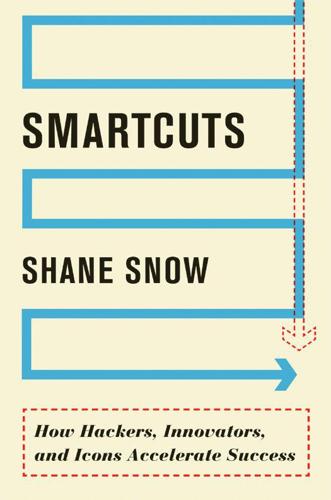
Smartcuts: How Hackers, Innovators, and Icons Accelerate Success
by
Shane Snow
Published 8 Sep 2014
Teller is the goatee-and-ponytailed head of a rather secret Google laboratory in California called Google[x]. He holds a PhD in artificial intelligence. Teller’s job is to dream big. 10x big. Google’s founders have endowed him with an engineer-filled building and a mandate to blow their minds. His team has built self-driving cars, augmented reality glasses, and WiFi balloons meant to roam the stratosphere. He’s hired some brilliant minds onto his team, but that’s not the secret of their success. The secret sounds a bit crazy. Says Teller, “It’s often easier to make something 10 times better than it is to make it 10 percent better.” Hmm.
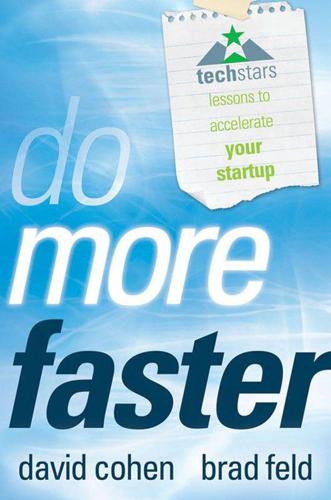
Do More Faster: TechStars Lessons to Accelerate Your Startup
by
Brad Feld
and
David Cohen
Published 18 Oct 2010
As RedLaser took off, they had a set of interesting investment offers but no longer needed outside capital and chose not to take any of the offers. While Jeff and Vikas were on their way to creating an interesting mobile e-commerce company, they wanted to work on a much bigger set of technical challenges than RedLaser in computer vision and augmented reality, their areas of passion and technical expertise. In their travels, they had a few inquiries for an acquisition of the company, but really only wanted to sell the RedLaser product, not the entire company. Fortunately, they found a buyer in eBay, which was very interested in the RedLaser product without requiring Jeff and Vikas to stay involved long term.
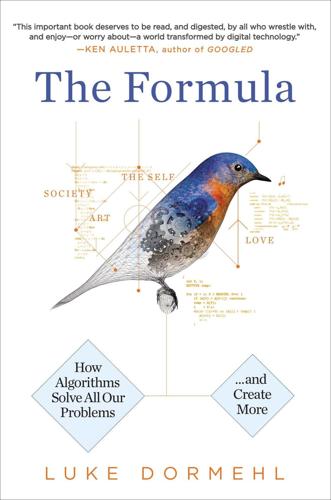
The Formula: How Algorithms Solve All Our Problems-And Create More
by
Luke Dormehl
Published 4 Nov 2014
That same decade saw the advent of the portable technology known as the Sony Walkman (a nascent vision of Google Glass to come), which transformed public spaces into a controllable private experience.7 Building on this paradigm, the 1990s was home to MIT’s Wearable Computing Group, who took issue with what they considered to be the premature usage of the term “personal computer” and insisted that: A person’s computer should be worn, much as eyeglasses or clothing are worn, and interact with the user based on the context of the situation. With heads-up displays, unobtrusive input devices, personal wireless local area networks, and a host of other context sensing and communication tools, the wearable computer can act as an intelligent assistant, whether it be through a Remembrance Agent, augmented reality, or intellectual collectives.8 There appear to be few limits to what today’s Quantified Selfers can measure. The beauty of the movement (if one can refer to it in such aesthetic terms) is the mass customization that it makes possible. By quantifying the self, a person can find apparently rigorous answers to questions as broad or specific as how many minutes of sleep are lost each night per unit of alcohol consumed, how consistent their golf swing is, or whether or not they should stay in their current job.

Time Travel: A History
by
James Gleick
Published 26 Sep 2016
It can seldom be remembered, must be imagined. Yet here in our information-rich present, the past seems more with us than ever. The more vivid it gets, the more real it seems, the greater the craving. Feeding the addiction are Ken Burnsian documentaries, Renaissance faires, Civil War reenactments, history cable channels, and augmented-reality apps. Anything that “brings the past to life.” Under the circumstances, time machines might seem surplus to requirements, but the practitioners of time travel show no signs of slowing down—not in fiction or in film. Woody Allen has explored time travel several times—into the future with Sleeper (1973) and then, in 2011, with Midnight in Paris, he throws the lever to the past.

12 Bytes: How We Got Here. Where We Might Go Next
by
Jeanette Winterson
Published 15 Mar 2021
Ava Robotics have seen a surge in sales from high-end reale-state agents since Covid, as the bot can ‘walk’ through a large property or estate, with the potential buyer ‘inside’ the bot, in real time, taking a proper look at what is on offer. * * * The virtual world is becoming as real and as viable and as necessary as what we think of as the real world. Virtual and augmented reality is moving out of the gaming room and into the home and office. That will include ‘inhabiting’ your bot or avatar – as with Ava. As the slippage between what is ‘real’ and what is virtual becomes more usual, more everyday, more ordinary, I think our acceptance of robots, regularly, everywhere, will also become the new normal.
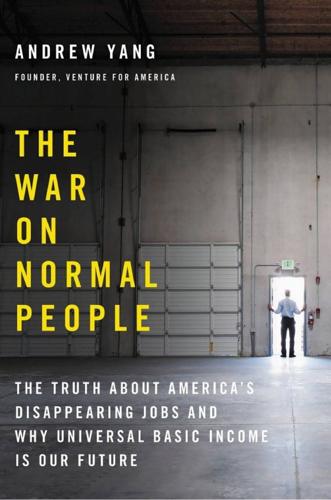
The War on Normal People: The Truth About America's Disappearing Jobs and Why Universal Basic Income Is Our Future
by
Andrew Yang
Published 2 Apr 2018
The advent of big farms, tractors, factories, assembly lines, and personal computers, while each a very big deal for the labor market, were orders of magnitude less revolutionary than advancements like artificial intelligence, machine learning, self-driving vehicles, advanced robotics, smartphones, drones, 3D printing, virtual and augmented reality, the Internet of things, genomics, digital currencies, and nanotechnology. These changes affect a multitude of industries that each employ millions of people. The speed, breadth, impact, and nature of the changes are considerably more dramatic than anything that has come before. It is true that this would be the first time that the labor market did not meaningfully adapt and adjust.
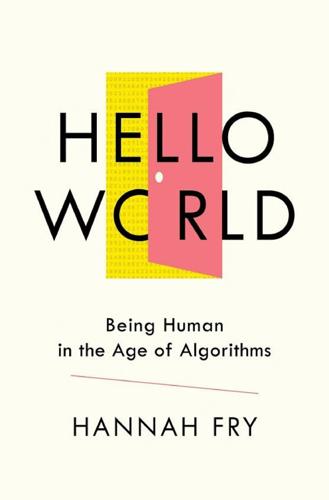
Hello World: Being Human in the Age of Algorithms
by
Hannah Fry
Published 17 Sep 2018
Clive Thompson, Anna Wiener, Ferris Jabr, Rahawa Haile, Geoff Manaugh, Jamie Lauren Keiles, Jennifer Kahn and Malia Wollan, ‘Full tilt: when 100 per cent of cars are autonomous’, New York Times, 8 Nov. 2017, https://www.nytimes.com/interactive/2017/11/08/magazine/tech-design-autonomous-future-cars-100-percent-augmented-reality-policing.html#the-end-of-roadkill. 19. Peter Campbell, ‘Trucks headed for a driverless future: unions warn that millions of drivers’ jobs will be disrupted’, Financial Times, 31 Jan. 2018, https://www.ft.com/content/7686ea3e-e0dd-11e7-a0d4-0944c5f49e46. 20. Markus Maurer, J. Christian Gerdes, Barbara Lenz and Hermann Winner, Autonomous Driving: Technical, Legal and Social Aspects (New York: Springer, May 2016), p 48. 21.
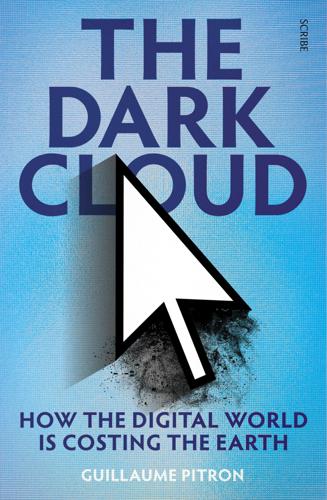
The Dark Cloud: How the Digital World Is Costing the Earth
by
Guillaume Pitron
Published 14 Jun 2023
Fast-forward to the twenty-first century: by ascribing more intellectual than material value to objects, depriving patents, trademarks, algorithms, designs, or organisation models of their underlying physicality, armies of engineers and traders are transposing the teachings of Plato to the market economy via Excel spreadsheets and PowerPoint presentations. Next are advertisers. They have institutionalised a marketing vocabulary to sex up the digital world with the attributes of virtuality. Without giving much thought to the words we use, we talk about ‘dematerialised payments’, and ‘holographic’, ‘virtual’, and ‘augmented reality’ headsets for entertainment. But the most ambiguous of all these is ‘the cloud’ — a supposedly dematerialised place where we can store our documents.27 ‘The cloud is ethereal, woolly’, says a specialist in responsible digital activities.28 How do we find the right words? ‘When you see the market cap of a company such as Apple, you realise the kind of marketing pressure that can represent’, says Frédéric Bordage.29 Then there are the brains behind the design of electronic goods who have rolled out their treasures of creativity to remove the physical from the digital.
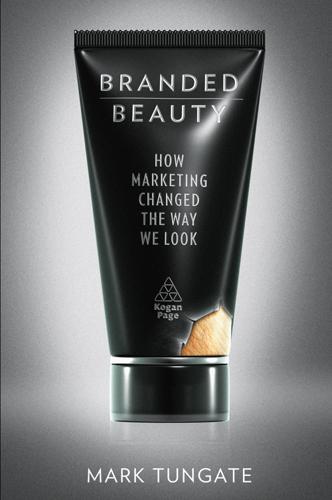
Branded Beauty
by
Mark Tungate
Published 11 Feb 2012
She added that early research suggested around 20 per cent of its subscribers went on to purchase full-sized products after testing a sample. The site also incorporates a blog about beauty trends. Advances in technology are constantly making the online experience richer for consumers. ‘It’s great that they can upload photographs of themselves and then experiment with make-up, for example,’ Xavier says. ‘Augmented reality will transform the shopping experience, too, with virtual mirrors that allow you to test looks without the need to apply actual product. The borders between screen and reality are coming down.’ The size and mutability of the digital world make it a daunting environment for any company. In 2010 Unilever was one of a number of organizations that sent executives on a digital safari to Silicon Valley to explore the opportunities available to them.
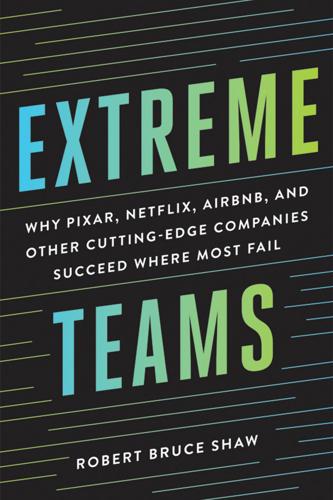
Extreme Teams: Why Pixar, Netflix, AirBnB, and Other Cutting-Edge Companies Succeed Where Most Fail
by
Robert Bruce Shaw
,
James Foster
and
Brilliance Audio
Published 14 Oct 2017
Netflix failed to meet its customer expectations when it separated its DVD and streaming businesses. There is no reason to believe that these firms, as great as they are, will not make more mistakes as they move forward. A variety of external forces can also undermine a firm’s success. New technologies, for example, can overtake a firm. Netflix may see its business model eroded if augmented reality overtakes movies and TV as a dominant form of entertainment. At this point, we don’t know how that technology will evolve but it may be as disruptive as Netflix was to traditional media companies.42 Finally, a risk in profiling a set of exemplary firms and teams is that others attempt to mimic them.
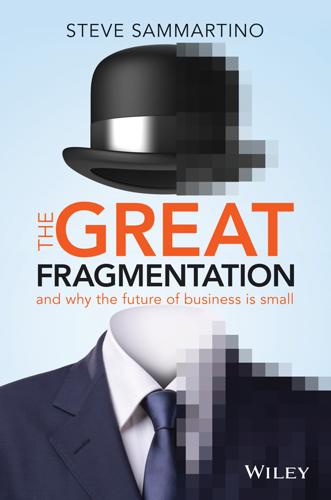
The Great Fragmentation: And Why the Future of All Business Is Small
by
Steve Sammartino
Published 25 Jun 2014
There were joy sticks such as those in space sci-fi films and rocket ships, and space scenes such as Galaga where we had to shoot down aliens and save the earth. We used to play these games to escape our reality for a little while, just as we do when we watch a movie. And even television was about an alternative fantasy life of sorts. Today games are augmenting reality in all types of interesting ways. Gaming will do what general technology did. It will no longer be ‘that industry over there’, albeit big and profitable — not for us. Rather, gaming will become part of the day-to-day marketing program and be part of the general culture for all ages. It just won’t be called a game.
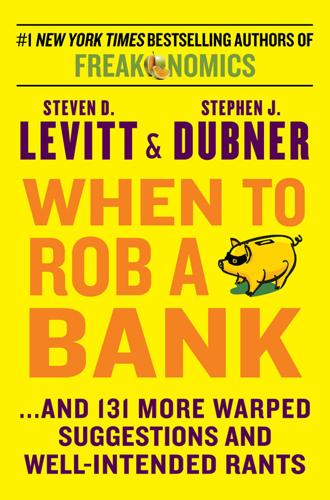
When to Rob a Bank: ...And 131 More Warped Suggestions and Well-Intended Rants
by
Steven D. Levitt
and
Stephen J. Dubner
Published 4 May 2015
They tell the stories that make them look good, or noble, or selfless; some of the cleverer ones use self-deprecation to convey their excellence. Which leaves the writer in an unpleasant situation—dependent on anecdotes that may or may not be true, or complete, and which are told in order to paint a biased picture. Here is where economists are different. Instead of using anecdotes to augment reality, they use data to assert the truth. That, at least, is the goal. Some of these truths can be uncomfortable. After I wrote about the economist Roland Fryer, he was assailed by fellow black scholars for having underplayed the degree to which racism afflicts black Americans. Steve Levitt’s work with John Donohue on the link between Roe v.

Exponential Organizations: Why New Organizations Are Ten Times Better, Faster, and Cheaper Than Yours (And What to Do About It)
by
Salim Ismail
and
Yuri van Geest
Published 17 Oct 2014
AI, data science and analytics Description: Ubiquitous usage of Machine Learning and Deep Learning algorithms to process vast caches of information. Implications: Algorithms driving more and more business decisions; AIs replacing a large percentage of knowledge workers; AIs looking for patterns in organizational data; algorithms embedded into products. Virtual/augmented reality Description: Avatar-quality VR available on desktop in 2-3 years. Oculus Rift, High Fidelity and Google Glass drive new applications. Implications: Remote viewing; centrally located experts serving more areas; new practice areas; remote medicine. Bitcoin and block chain Description: Trustless, ultra-low-cost secure transactions enabled by distributed ledgers that log everything.

Going Dark: The Secret Social Lives of Extremists
by
Julia Ebner
Published 20 Feb 2020
Bridging the gap between the on- and the offline via features like geotagging, facial recognition and open-source intelligence (OSINT) gathering has been useful to any government, private company or digital citizen. But phenomena like doxxing and livestreamed terrorism expose the dangers that come with this new synthesis. Christchurch clearly challenged the idea that the internet is a separate place from the real world. It turned the virtual world not into an augmented reality but rather a degraded one. As I enter the extreme-right group JFG World on Discord, a woman called Maria announces that she’ll leave ‘due to the fact that it’s fucking up with my mental health’. Another user begins to share his thoughts: ‘I don’t even know where the fuck to begin […] Why do people like you find dead bodies something to joke about?’

The Twittering Machine
by
Richard Seymour
Published 20 Aug 2019
Like video game images, or virtual reality, the simulacrum is uncannily too perfect, too real: hyperreal, even. We are now far more incorporated into the system of images and signs, from gaming to feeds; but this simulacrum has its roots in capitalist culture’s airbrushed advertising, seductive Hollywood dreams and slick gaming and infotainment industries. With the coming of new virtual and augmented realities, the Twittering Machine may prove to have been a stage in the spread of the simulacrum – one with darkly dystopian potential. Jaron Lanier, effectively the inventor of virtual reality, argues that to make it work, you need to give the machine far more data about yourself than you do on the platforms.

Infinite Detail
by
Tim Maughan
Published 1 Apr 2019
Hundred-foot-high superheroes fill the air, punching their cartoon nemeses into skyscrapers that explode into glass-shard blizzards, only to be replaced by hundred-foot-tall anthropomorphic M&Ms, arguing and laughing and falling over, only to be replaced by hundred-foot-tall teen pop stars, peering down at him and smiling over the rims of the latest Samsung spex, only to be replaced by koi carp the size of humpback whales, lazily orbiting a Sony logo built from iridescent bubbles, only to be replaced by hundred-foot-tall NBA legends, slam-dunking— Rush yanks his spex away from his face and the augmented-reality adverts disappear, the towering hyperreal simulations vanishing from the warm night air, but the screens are still there, still everywhere. Some are the size of apartment blocks, some mere tennis courts, but they’re fucking everywhere, everywhere that isn’t a shop front or a Starbucks, on every wall and building.

Lab Rats: How Silicon Valley Made Work Miserable for the Rest of Us
by
Dan Lyons
Published 22 Oct 2018
Flynn, who previously worked at Microsoft, says companies (and workspace designers like Steelcase) also need to do a better job of adopting new technologies so that people don’t feel as overwhelmed as they do right now. Technology has started to evolve at such a rapid pace that people can’t keep up, which is creating a backlash. “There is a big tension emerging,” Flynn says. “We’re introducing sensors, big data, virtual reality, augmented reality, and there is so much opportunity for these technologies—but at the same time there is a force pushing for work to be more human, to have more authenticity, more social connection. It’s two opposing ideas. How are we going to resolve that?” Technology should be a tool in the service of mankind, but sometimes it seems that humans are made subordinate to technology.
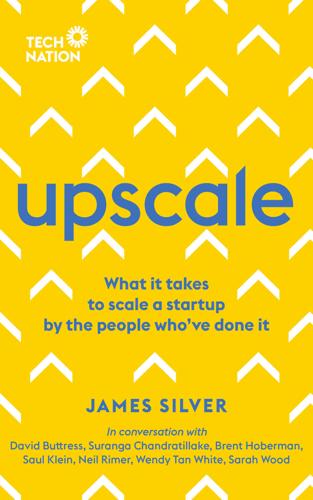
Upscale: What It Takes to Scale a Startup. By the People Who've Done It.
by
James Silver
Published 15 Nov 2018
‘We are very much committed to Cambridge, and have, for example, a student cinema club that we organise, so that we maintain close ties not only with today’s students, but past ones too. That’s something that’s proving very important to us a company, as we grow.’ Martina King is CEO of Featurespace and joined the company in 2012. Former MD of augmented reality company Aurasma, Martina has had an extensive career in media technology, including leadership roles at Yahoo! Europe and Capital Radio. Martina is non-executive director of Debenhams, and was named one of the Top 40 powerful women leaders in tech by Silicon Republic. part three FINANCE & FUNDING CHAPTER 22 ‘Shareholders are looking for reassurance from the CFO, who must be “the voice of reason” in the business.’
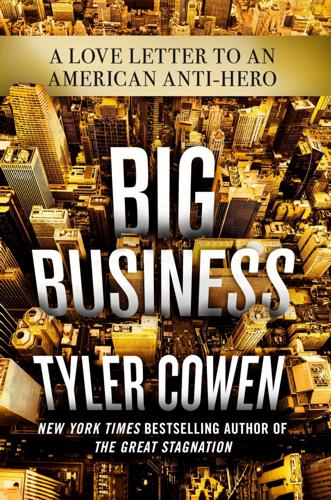
Big Business: A Love Letter to an American Anti-Hero
by
Tyler Cowen
Published 8 Apr 2019
There is no particular reason to think Google will dominate those new dimensions, and in fact Google’s success may stop it from seeing the new paradigms when they come along. I don’t pretend I am the one who can name those new dimensions of competition, but what about search through virtual or augmented reality? Search through the Internet of Things? Search through the offline “real world” in some manner? Search through an assemblage of AI capabilities, or perhaps in some longer-run brain implants or genetic information? I genuinely don’t know. What I do know is that new dimensions of product quality arise all the time, and supposed natural monopolies find out their monopolies are not so natural after all.

How to Fix the Future: Staying Human in the Digital Age
by
Andrew Keen
Published 1 Mar 2018
What he’s saying is that—given the corrosive impact of fake news and other ridiculously biased or corrupt information on a culture that is already suffering a dearth of trust—some of our most influential new media platforms, like Twitter, might be too important to be treated like other for-profit companies. Borthwick’s next fix focuses on the increasingly blurred distinction between people and smart machines, particularly in an age of augmented reality, when it will be increasingly hard to distinguish between a human body and networked devices. The venture capitalist shuffles in his seat and addresses the existential dilemma at the heart of smart technology. “At what point are we no longer human?” he asks tentatively. It sounds as much a plea as a question.
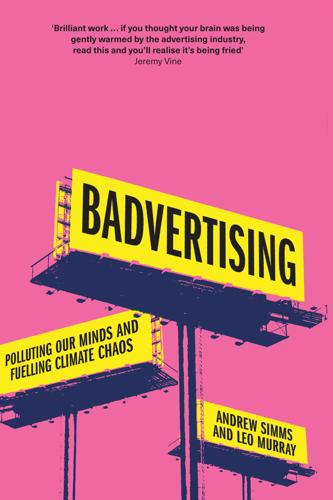
Badvertising
by
Andrew Simms
That is why the prophets of internet futures use the term ‘personalisation’ – which means that future advertising platforms ‘will allow you to map the entire history of consumers’ interactions, get data on all the touchpoints and adjust your messaging accordingly …’, according to Michal Schindler of the cloud-based ad-tracker company, Voluum, to ‘allow to offer a consistent and unifying marketing experience to consumers’.45 This level of intelligence on individuals’ patterns of behaviour will enable augmented reality versions of adverts, tailored to the needs and personalities of their users. The vision is for continual messaging telling users what they should or shouldn’t buy, plus adverts shown – not just on their televisions – but also by their microwave ovens and washing machines, which can in turn be used to make purchases: With 5G, they will face adverts in a much higher quality.
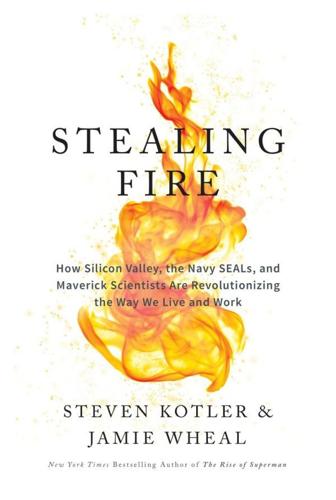
Stealing Fire: How Silicon Valley, the Navy SEALs, and Maverick Scientists Are Revolutionizing the Way We Live and Work
by
Steven Kotler
and
Jamie Wheal
Published 21 Feb 2017
Rather than looking up at the curved vault of the Sistine Chapel to view a singular mural, you can now walk through an immersive and infinitely changeable landscape, a dream state filled with gods and demons, stardust and galaxies, and anything else Jones can dream up. “After working in this 3D immersive space,” he admits, “it’s really challenging to go back to creating images that are on a rectangle hanging on a wall. I never realized how limiting the frames were.” And he’s not the only one exploring these possibilities. Virtual and augmented reality companies like Oculus and Magic Leap are attracting outsize media and investor attention as everyone rushes into the landscape beyond frames and screens. They are early indicators of a new way of consuming content that increasingly blurs the boundaries between what is real and what is simulated.

I, Warbot: The Dawn of Artificially Intelligent Conflict
by
Kenneth Payne
Published 16 Jun 2021
Encrypted identifiers embedded under the skin of the A-Team signal that they are friendlies and pioneering combat cyborgs. At SOCOM, a watching lawyer sits with a commander, ‘on the loop’ and poised to call off the lethal swarm. Moving off, the patrol powers up the ‘smart shooter’ targeting system on their rifles.50 By now a mature technology, the ‘augmented reality’ of the sight makes corrective calculations based on wind and temperature data. It adjusts for body movements by the rifleman, and projects a red dot in the sight of where to aim, based on the target it determines he’s trying to hit. The human can press the trigger, but until the barrel passes through the optimal point, the weapon system won’t fire.
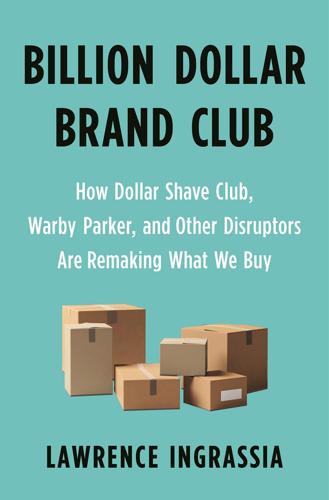
Billion Dollar Brand Club: How Dollar Shave Club, Warby Parker, and Other Disruptors Are Remaking What We Buy
by
Lawrence Ingrassia
Published 28 Jan 2020
The new iPhone featured what Apple calls a TrueDepth camera, which can collect thirty thousand data points on a face, allowing it to map the proportions more accurately when it captures a face’s image. The image can be rotated and still convey proper proportions. “The quality of 3-D modeling and 3-D rendering and design is light-years ahead of where it was before,” Collins says. A team of Warby Parker engineers began working on an augmented reality product called Blueprint, to create a lifelike visualization when frames were superimposed over a live facial image viewed on the iPhone X. After about six months of work, the team found it could get the fit to look realistic and proportional. But getting the technology to show the colors of the different frames was a challenge.

Life After Google: The Fall of Big Data and the Rise of the Blockchain Economy
by
George Gilder
Published 16 Jul 2018
Since then, I have been inspired by the commitment of the founders Jules Urbach and Alissa Grainger to the vision that Jules enunciates: . . . to render and remix simulated reality as effortlessly as the web did for text and digital media. Now, OTOY is building RNDR, its own GPU-cloud rendering token, to decentralize AR/VR [Augmented Reality/Virtual Reality], game, and movie rendering to over 7 million GPUs owners. The advantages of RNDR align with those of the BAT: 1. Efficiency: Utility tokens unlock access to idle or mispriced resources, e.g., GPUs for RNDR, user attention for BAT. 2. Fraud resistance: Tokens act as a low-fraud unit of account with payment only after blockchain-attested verification of work. 3.
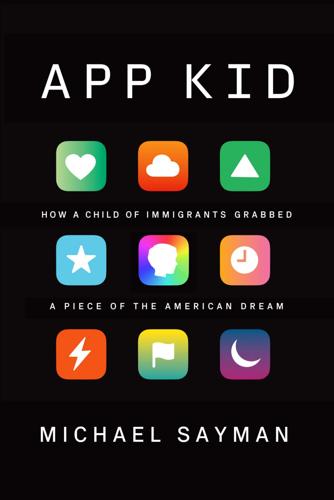
App Kid: How a Child of Immigrants Grabbed a Piece of the American Dream
by
Michael Sayman
Published 20 Sep 2021
Over the next week, I took two of those connections out to lunch, and then—though I’d still heard zero news—I went ahead and set up lunches with their connections. Next, I needed to establish why I’d be an asset to the VR team I was applying to work with. I knew very little about virtual reality (computer-generated 3D simulations that people “enter” and interact with using special equipment) or augmented reality (technology that superimposes computer-generated images on a user’s view of the real world), so the most valuable thing I could offer for now was my unique perspective on what these technologies could mean for my generation. Until (not “unless,” I told myself) I got to the next level of interviews at Google, I couldn’t share that perspective in person.

Code Dependent: Living in the Shadow of AI
by
Madhumita Murgia
Published 20 Mar 2024
Because of how the AI supply chain is broken down into bite-sized chunks, many of these workers have little, if any, visibility of the shape or commercial value of the final product they are helping to build. But they do know they are helping train software for some of the most advanced technological applications in navigation, social media, e-commerce and augmented reality. For OpenAI, the creator of ChatGPT, Sama’s workers were hired to categorize and label tens of thousands of toxic and graphic text snippets – including descriptions of child sexual abuse, murder, suicide and incest. Their work helped ChatGPT to recognize, block and filter questions of this nature.

The Singularity Is Near: When Humans Transcend Biology
by
Ray Kurzweil
Published 14 Jul 2005
Sound is generated by the beams interacting with air, which restores sound in the audible range. By focusing multiple sets of beams on a wall or other surface, a new kind of personalized surround sound without speakers is also possible.30 These resources will provide high-resolution, full-immersion visual-auditory virtual reality at any time. We will also have augmented reality with displays overlaying the real world to provide real-time guidance and explanations. For example, your retinal display might remind us, "That's Dr. John Smith, director of the ABC Institute—you last saw him six months ago at the XYZ conference" or, "That's the Time-Life Building—your meeting is on the tenth floor."
…
That has already started with the benign introduction of devices such as neural implants to ameliorate disabilities and disease. It will progress with the introduction of nanobots in the bloodstream, which will be developed initially for medical and antiaging applications. Later more sophisticated nanobots will interface with our biological neurons to augment our senses, provide virtual and augmented reality from within the nervous system, assist our memories, and provide other routine cognitive tasks. We will then be cyborgs, and from that foothold in our brains, the nonbiological portion of our intelligence will expand its powers exponentially. As I discussed in chapters 2 and 3 we see ongoing exponential growth of every aspect of information technology, including price-performance, capacity, and rate of adoption.

Bold: How to Go Big, Create Wealth and Impact the World
by
Peter H. Diamandis
and
Steven Kotler
Published 3 Feb 2015
In the three years following Page’s promotion from copresident to CEO in 2011, the company’s value has doubled to $350 billion (with Page’s 16 percent worth about $50 billion), its cash war chest has risen to $75 billion, and its annual research and development budget increased to $8.5 billion.36 And Page, as visionary CEO, can spend that money almost anywhere he pleases. Autonomous cars, augmented reality, ending aging, ubiquitous Internet—clearly, what pleases Page is the big and bold. In 2012, I presented at Google Zeitgeist, their annual customer conference. The organizers had slotted me at the end of the second day, asking me to give an uplifting speech with my Abundance message. Afterward, Page followed me onstage to deliver closing remarks, which was when I learned the origin of his appetite for bold.
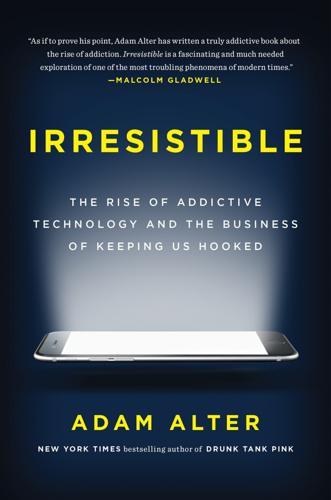
Irresistible: The Rise of Addictive Technology and the Business of Keeping Us Hooked
by
Adam L. Alter
Published 15 Feb 2017
“After games, we’re going to make Oculus a platform for many other experiences. Imagine enjoying a court side seat at a game, studying in a classroom of students and teachers all over the world or consulting with a doctor face-to-face—just by putting goggles in your home.” VR no longer dwelled on the fringes. “One day, we believe this kind of immersive, augmented reality will become a part of daily life for billions of people,” said Zuckerberg. In October 2015, the New York Times shipped a small cardboard VR viewer with its Sunday paper. Paired with a smartphone, the Google Cardboard viewer streamed exclusive Times VR content, including documentaries on North Korea, Syrian refugees, and a vigil following the Paris terror attacks.

Radical Markets: Uprooting Capitalism and Democracy for a Just Society
by
Eric Posner
and
E. Weyl
Published 14 May 2018
It was around that time that both the volume of data collected and the speed and depth of computation became sufficient to allow applications that made a difference in users’ lives. Around that time the first ML-powered personal digital assistants and dictation services emerged; Siri, Google Assistant, and Cortana became familiar features of everyday life. Even more ambitious applications are being developed, including virtual and augmented reality, self-driving cars, and drones that deliver goods to consumers at the click of a button. Because these services have high “sample complexity,” they require vast stores of data on which to train the ML systems. Thus, the vast data sets collected by Google, Facebook, and others as a by-product of their core business functions became a crucial source of revenue and competitive advantage.
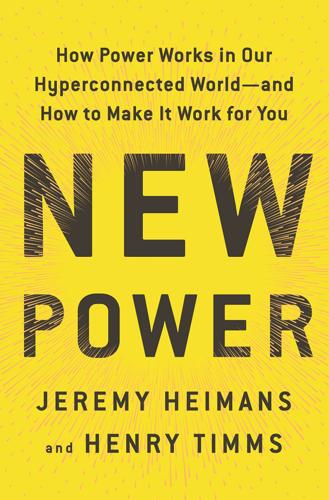
New Power: How Power Works in Our Hyperconnected World--And How to Make It Work for You
by
Jeremy Heimans
and
Henry Timms
Published 2 Apr 2018
But we might imagine, too, the intermediaries being removed from the mega-platforms of the world—our Ubers or Airbnbs—when drivers and riders, or hosts and guests, work out ways to collaborate and exchange directly with each other. As we look to the future, there is no shortage of predictions about the next participatory technologies and ideas that will transform our lives. Whether it be virtual reality, augmented reality, blockchains, or even the emergence of a metaverse, platforms as we know them today will likely end up feeling rather quaint. But however things turn out, we need to cling to, and build for, a set of principles that ensure the worlds we will live in are less monopolistic, more transparent, and much more attuned to their broader impact.

Ghost Work: How to Stop Silicon Valley From Building a New Global Underclass
by
Mary L. Gray
and
Siddharth Suri
Published 6 May 2019
Specialists will be brought to the table to consult when a sensor picks up that a patient’s blood pressure has dropped or if excessive bleeding suggests a complication. On-demand workers could also factor into the industrial world of construction and heavy machinery maintenance, from building wind turbines to repairing oil rigs. Companies like Daqri have already developed augmented-reality-infused gear that bridges on-site and remote on-demand workers. The company’s Smart Glasses, for example, include a computer chip, cameras, and sensors that can project a 3-D map or repair manuals and can scan for signs of dangerous heat and pressure buildup in piping. It can help an on-site worker patch a complicated hydraulic system with the expertise of an on-demand pipe fitter pitching in.

Ghost Road: Beyond the Driverless Car
by
Anthony M. Townsend
Published 15 Jun 2020
That’s the thinking at Coord, a spin-off of Alphabet’s Sidewalk Labs that’s busy building a massive database of cities’ street regulations. Beginning in 2017, Coord mappers fanned out across Seattle and San Francisco, driving up and down streets to collect pictures of street signs. Using a custom-built augmented-reality app that picks out traffic indicators from the background and translates their text, the company quickly amassed its own comprehensive catalog of posted regulations. Surprisingly, cities’ own records are often incomplete, full of inaccuracies, or scattered across multiple databases. Coord’s clever bet is that cities will simply outsource the collation, dissemination, and enforcement of traffic rules instead.
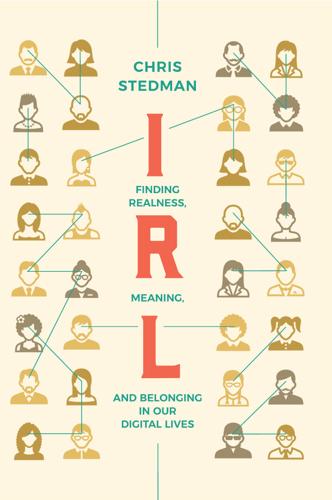
IRL: Finding Realness, Meaning, and Belonging in Our Digital Lives
by
Chris Stedman
Published 19 Oct 2020
Instead of thinking of our lives as split between online and off, or “digital dualism”—the perspective that our online and offline lives are fundamentally different, with our offline lives being more real than our online ones—he suggests that we can see the digital and nondigital pieces of our lives as “enmesh[ed] into an augmented reality.” That is, our modern reality is new and different from what came before; it’s still reality, just altered. But augmentation isn’t unfamiliar. Our new reality is sometimes skewed or heightened, yes—but it is nonetheless real like the lives we previously skewed or heightened in offline ways, whether by compiling a scrapbook that only shows the highlights, writing a family Christmas letter that makes no mention of Dad’s DUI, or buying a new outfit before a first date.

Supremacy: AI, ChatGPT, and the Race That Will Change the World
by
Parmy Olson
Thrun was part of a new breed of academics who weren’t content to spend their days writing grant proposals and waiting for tenure but who worked with tech giants. Stanford was just five miles from Google’s headquarters, and Thrun also ran the cutting-edge “moonshot” projects at Google X that made self-driving cars and augmented reality glasses. In class, Thrun taught his students about machine learning, a technique that computers used to infer concepts from being shown lots of data instead of being programmed to do something specific. The concept was critical in the field of AI, even though the term learning was misleading: machines can’t think and learn as humans do.

Utopia Is Creepy: And Other Provocations
by
Nicholas Carr
Published 5 Sep 2016
Not only does it present an enhanced version of reality, but it annotates the world with a profusion of descriptive text and other explanatory symbols—and then, with its camera and its uplinks to social networks, it allows us to share the product. With a Google Glass on our forehead, we’re not just a consumer of augmented reality; we’re a value-added reseller. BURNING DOWN THE SCHOOLHOUSE September 30, 2012 “WELCOME TO THE COLLEGE education revolution,” declares Thomas Friedman, the New York Times columnist. He’s talking about massive open online courses, or, as they’re delicately known, MOOCs. Everyone, it seems, is talking about MOOCs.

Hit Makers: The Science of Popularity in an Age of Distraction
by
Derek Thompson
Published 7 Feb 2017
What they’re buying is not just a product, but also a piece of popularity itself. Today’s cultural marketplace is a pop-culture Panopticon, where everybody can see what the world is watching, playing, and reading. In such a world, historically large audiences will inevitably cluster around a handful of mega-blockbusters, such as Fifty Shades, or, more recently, the augmented-reality game Pokémon GO. That is the lesson of Salganik, Dodds, and Watts: Cultural products will spread faster and wider when everybody can see what everybody else is doing. It suggests that the future of many hit-making markets will be fully open, radically transparent, and very, very unequal. In the final analysis, this was perhaps the key mechanism in the Fifty Shades phenomenon.
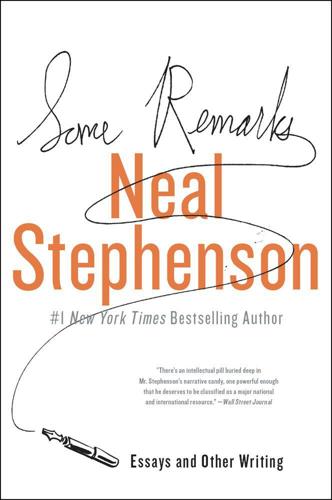
Some Remarks
by
Neal Stephenson
Published 6 Aug 2012
Cubicle farms could be replaced by large open spaces, devoid of furniture or other obstructions, where workers could move around in any way they liked. In good weather they could go outside and stroll around in the fresh air. Imagine taking a large call center and replacing it with a park dotted with wandering pedestrians, each equipped with a phone headset and an augmented-reality display giving them access to whatever data they needed to handle customer-service inquiries. Employee retention, which tends to be a serious headache in such operations, might be improved, and employee health ought to improve markedly. There need be no loss of supervisory control; whatever apparatus is now used for monitoring and recording calls would work just as well in this kind of setup as it does on a cubicle farm.

Human Compatible: Artificial Intelligence and the Problem of Control
by
Stuart Russell
Published 7 Oct 2019
The algorithm for keeping track of the belief state can be applied to handle not just uncertainty about location but also uncertainty about the map itself. This results in a technique called SLAM (simultaneous localization and mapping). SLAM is a core component of many AI applications, ranging from augmented reality systems to self-driving cars and planetary rovers. FIGURE 21: A robot trying to move through a doorway. (a) The initial belief state: the robot is somewhat uncertain of its location; it tries to move 1.5 meters towards the door. (b) The prediction step: the robot estimates that it is closer to the door but is quite uncertain about the direction it actually moved because its motors are old and its wheels wobbly.

The Deep Learning Revolution (The MIT Press)
by
Terrence J. Sejnowski
Published 27 Sep 2018
Wants to Drive the Future of Cars That Drive Themselves,” New York Times, June 4, 2017, https://www.nytimes.com/2017/06/04/business/general -motors-self-driving-cars-mary-barra.html. 3. ”Full Tilt: When 100% of Cars Are Autonomous,” New York Times Magazine, November 8, 2017. https://www.nytimes.com/interactive/2017/11/08/magazine/ tech-design-autonomous-future-cars-100-percent-augmented-reality-policing.html ?hp&action=click&pgtype=Homepage&clickSource=story-heading&module=second -column-region®ion=top-news&WT.nav=top-news/. 4. Christopher Ingraham, “The Astonishing Human Potential Wasted on Commutes,” Washington Post, February 24, 2016, https://www.washingtonpost.com/ news/wonk/wp/2016/02/25/how-much-of-your-life-youre-wasting-on-your -commute/?

Reset
by
Ronald J. Deibert
Published 14 Aug 2020
While you and your friends are busy playing word games over the internet, Zynga is busy sweeping up everything it can about you to sell to data brokers. I suppose that is what Zynga means by its tagline “connecting the world through games.” Sometimes there are even higher-level functions than merely mining your experiences. Zuboff provides the illuminating example of Pokémon Go, the “augmented reality” mobile game application that spread wildly, to the point that by the end of the year it was introduced (2016), it had been downloaded five hundred million times.53 On the surface, the aim of Pokémon Go is to encourage users to locate and acquire as many Pokémon characters as they can, using their maps function.

Blood and Oil: Mohammed Bin Salman's Ruthless Quest for Global Power
by
Bradley Hope
and
Justin Scheck
Published 14 Sep 2020
Turkey’s president Recep Tayyip Erdoğan had been trying to improve his country’s relations with Saudi Arabia, but Mohammed dashed those hopes. As the foreign trip continued to the United States, word circulated in the financial world that the prince and his sovereign wealth fund were readying a spending spree of incredible proportions. It began with a $400 million investment in a company called Magic Leap, which was developing “augmented reality” headsets but had yet to start selling any of its products. Michael Klein, the former Citigroup banker who had once been close to Alwaleed bin Talal, negotiated the deal. Spending Saudi billions wasn’t the main purpose of the 2018 trip to the United States. Now that he was crown prince, Mohammed expected to meet politicians and business leaders and convince them to invest their money in his rapidly transforming kingdom.
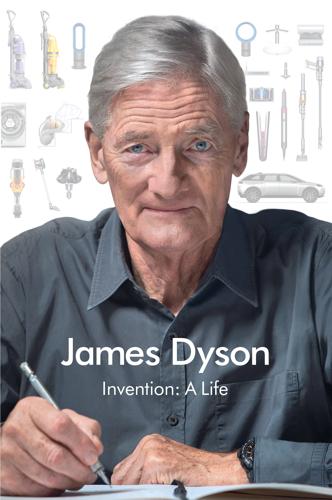
Invention: A Life
by
James Dyson
Published 6 Sep 2021
This would have the satellite navigation, speed, radio station, amount of range available, road warning signs such as speed limits, adaptive cruise control and other warnings on display on the windscreen. There were further enhancements coming through in 2016 with a digital micromirror device based on augmented reality and holographic capability. Our HUD meant that we had no need of a computer screen set on the dashboard in the middle of the car. Annoyingly, legislation demanded that we had to have a centrally mounted screen. I hope the outdated legislation catches up with technology, as those screens can distract drivers’ attention from the road and are an unnecessary expense.
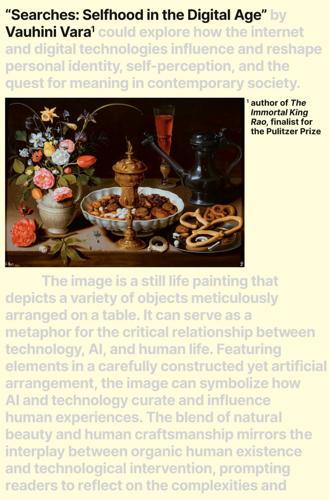
Searches: Selfhood in the Digital Age
by
Vauhini Vara
Published 8 Apr 2025
Notable Works: Her work often focuses on creating digital avatars and virtual environments that reflect cultural narratives and social issues. Rashaad Newsome: Background: African-American artist who identifies as non-binary but is often mentioned in discussions about diverse perspectives in AI art. Notable Works: Combines AI, augmented reality, and other digital tools to create works that explore themes of Blackness, queerness, and social power structures. Meleko Mokgosi: Background: Botswana-born artist whose work integrates AI to critique and analyze postcolonial and feminist themes. Notable Works: Incorporates AI to process historical data and narratives, merging it with traditional painting and drawing techniques.

Lonely Planet Iceland
by
Lonely Planet
Inside the dome, visitors can get a taste of volcanoes, ice caves and the natural forces that shape Iceland. There’s a planetarium where it’s always possible to see the Northern Lights in high definition, a volcanic lava show, and a human-made ice cave to explore. Some exhibits, like a virtual fish tank, incorporate augmented reality, and there’s an entire section dedicated to climate change. Perlan has a restaurant, bar and ice-cream shop. There’s also an observation deck for taking in 360-degree city views. It’s possible to visit just the observation deck, but you’ll need to buy that ticket on-site. Museum tickets can be booked online.

Saturn's Children
by
Charles Stross
Published 30 Jun 2008
A twitch in the other direction and it knits itself back together, fattening and growing denser until it sucks back into the basket hilt—which in turn retracts back into the grip. She slips it away to nestle in an inner pocket, a black, stubby cylinder that dreams of blood. The salle is a bland microgravity sphere perhaps ten meters in diameter, perfectly rigged for augmented reality. As I shut down my—no, her—sword, a door irises open in one wall. “Juliette?” The voice is familiar. I kick off the nearest wall, roll and bounce, carom into the opening. It’s Daks. Dear, loyal, gallant Daks, who’s always there when I need him. He hovers gracefully in the tunnel, feathery fingertips extended, showing none of the clumsiness or discomfort that afflicts him in the deeper gravity wells.
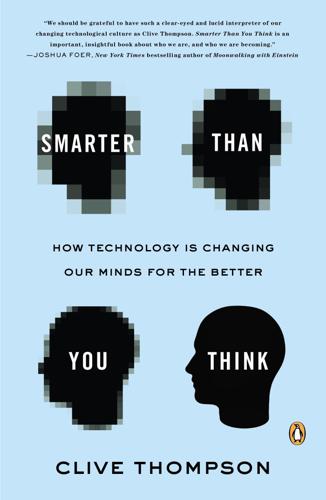
Smarter Than You Think: How Technology Is Changing Our Minds for the Better
by
Clive Thompson
Published 11 Sep 2013
For example, when the Occupy Wall Street movement flared in New York City, some of the activists began using a mobile app called Vibe that let them post anonymous messages that were tagged to physical locations around Wall Street: they’d discuss where police were about to crack down or leave notes describing events they’d seen. This is bleeding into everyday life, with services that let people embed photos and thoughts on maps and engage in location-based conversations. It’s the first stage of conversational “augmented reality”: public thinking woven into our real-world public space. I also suspect that as more forms of media become digital, they’ll become sites for public thinking—particularly digital books. Books have always propelled smart conversations; the historic, face-to-face book club has migrated rapidly online, joining the sprawling comments at sites like Goodreads.
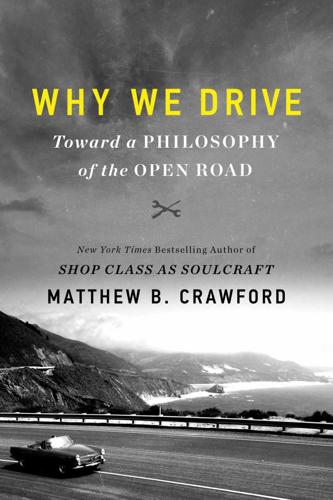
Why We Drive: Toward a Philosophy of the Open Road
by
Matthew B. Crawford
Published 8 Jun 2020
These dumb cars will help to secure for our captains the undisturbed head space they need to do their deep thinking while commuting. In the summer of 2016, large crowds of people in cities around the world could be seen moving in unison while holding their smartphones. They were playing Pokémon Go!, an “augmented reality” game that had people running around on a scavenger hunt (in the real world) to find cartoon characters who had been inserted into the landscape, as viewed through a player’s smartphone camera. This was a social experiment conceived by John Hanke, product vice president for Google Maps and the force behind Street View.
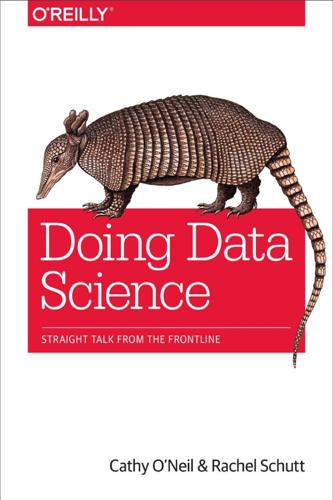
Doing Data Science: Straight Talk From the Frontline
by
Cathy O'Neil
and
Rachel Schutt
Published 8 Oct 2013
In it they discuss the concept of datafication, and their example is how we quantify friendships with “likes”: it’s the way everything we do, online or otherwise, ends up recorded for later examination in someone’s data storage units. Or maybe multiple storage units, and maybe also for sale. They define datafication as a process of “taking all aspects of life and turning them into data.” As examples, they mention that “Google’s augmented-reality glasses datafy the gaze. Twitter datafies stray thoughts. LinkedIn datafies professional networks.” Datafication is an interesting concept and led us to consider its importance with respect to people’s intentions about sharing their own data. We are being datafied, or rather our actions are, and when we “like” someone or something online, we are intending to be datafied, or at least we should expect to be.
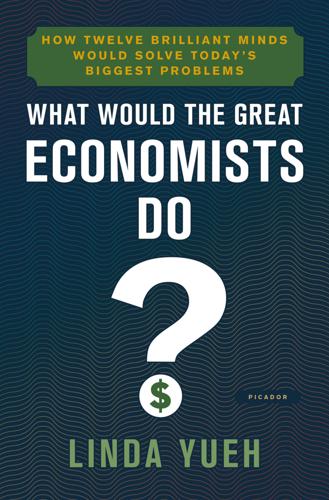
What Would the Great Economists Do?: How Twelve Brilliant Minds Would Solve Today's Biggest Problems
by
Linda Yueh
Published 4 Jun 2018
It is perhaps too early to say whether smartclothing, smartglasses or smartwatches will come to challenge or even replace the smartphone. There is also scope for smartphones to become even smarter. The recent trend to increase screen sizes could lead to flexible screens or built-in projectors. Augmented reality may encourage people to live their lives through their smartphone screens by allowing us to interact in real time with our surroundings. Battery developments have so far failed to keep pace with the power demands of more sophisticated devices. It is ironic that as our mobile technology becomes more advanced, we need more regular access to a wall socket.
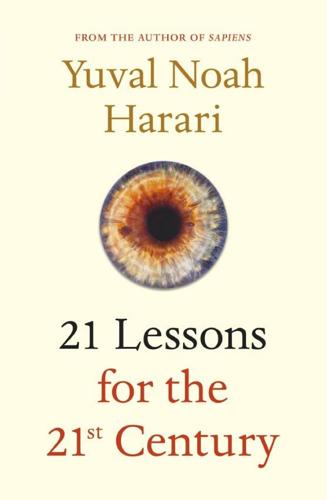
21 Lessons for the 21st Century
by
Yuval Noah Harari
Published 29 Aug 2018
Of course, this appreciation too has its downside. Realising the limitations of online algorithms might only prompt the tech-giants to extend their reach further. Devices such as Google Glass and games such as Pokémon Go are designed to erase the distinction between online and offline, merging them into a single augmented reality. On an even deeper level, biometric sensors and direct brain–computer interfaces aim to erode the border between electronic machines and organic bodies, and to literally get under our skin. Once the tech-giants come to terms with the human body, they might end up manipulating our entire bodies in the same way they currently manipulate our eyes, fingers and credit cards.

Lonely Planet Best of Spain
by
Lonely Planet
Published 1 Nov 2016
Cerámica Santa Ana Ceramics map Google map (%954 33 39 90; Calle San Jorge 31; h10am-8.30pm Mon-Fri, to 3pm Sat) Seville specialises in distinctive azulejos (ceramic tiles) and they are best seen in Triana. Cerámica Santa Ana has been around for more than 50 years and the shop itself almost qualifies as a tourist attraction. Tours with a Difference The ingenious augmented-reality video tour by Past View map Google map (%954 32 66 46; www.pastview.es; Plaza de la Encarnación; tours €15; h10.30am & 1pm; h) takes you on a guided walk using 3D video glasses that re-create scenes from the past in the actual locations they happened. The ticket office and starting point is in the Metropol Parasol and the two-hour walk (with a guide) proceeds through Seville’s main sights to the Torre del Oro.

Deep Medicine: How Artificial Intelligence Can Make Healthcare Human Again
by
Eric Topol
Published 1 Jan 2019
Weigert, M., et al., Content-Aware Image Restoration: Pushing the Limits of Fluorescence Microscopy, bioRxiv. 2017; Yang, S. J., et al., “Assessing Microscope Image Focus Quality with Deep Learning.” BMC Bioinformatics, 2018. 19(1): p. 77. 73. Ouyang, W., et al., “Deep Learning Massively Accelerates Super-Resolution Localization Microscopy.” Nat Biotechnol, 2018. 36(5): pp. 460–468. 74. Stumpe, M., “An Augmented Reality Microscope for Realtime Automated Detection of Cancer,” Google AI Blog. 2018. 75. Wise, J., “These Robots Are Learning to Conduct Their Own Science Experiments,” Bloomberg. 2018. 76. Bohannon, J., “A New Breed of Scientist, with Brains of Silicon,” Science Magazine. 2017. 77. Appenzeller, “The Scientists’ Apprentice.” 78.

Transaction Man: The Rise of the Deal and the Decline of the American Dream
by
Nicholas Lemann
Published 9 Sep 2019
Those meals would usually begin with Hoffman pulling a small notebook out of his pocket and reading an agenda of topics he’d written beforehand in a tiny, indecipherable scrawl: the course on blitzscaling he was teaching at Stanford; the latest video games; politics; wealth management; whether artificial intelligence was more promising than augmented reality, or vice versa. Then he’d ask for the other person’s list, and they’d start the conversation. Moonfaced, with small, animated features, thick glasses, and an unruly tousle of brown hair, he would become more excited and pay less attention to his food as he talked, roughly in proportion to the grandiosity and world-changing aspects of the idea he and his companion were discussing.
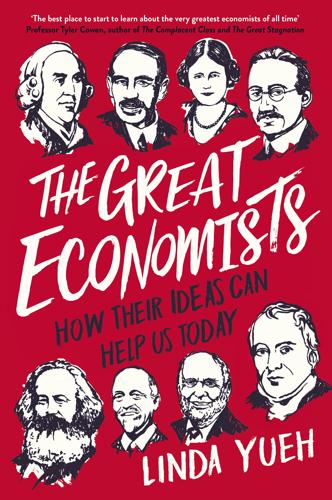
The Great Economists: How Their Ideas Can Help Us Today
by
Linda Yueh
Published 15 Mar 2018
It is perhaps too early to say whether smartclothing, smartglasses or smartwatches will come to challenge or even replace the smartphone. There is also scope for smartphones to become even smarter. The recent trend to increase screen sizes could lead to flexible screens or built-in projectors. Augmented reality may encourage people to live their lives through their smartphone screens by allowing us to interact in real time with our surroundings. Battery developments have so far failed to keep pace with the power demands of more sophisticated devices. It is ironic that as our mobile technology becomes more advanced, we need more regular access to a wall socket.

New Laws of Robotics: Defending Human Expertise in the Age of AI
by
Frank Pasquale
Published 14 May 2020
Do we really want to enhance the ability of corporations and the police to match every face to a name—and an algorithmically generated, often secret, record?23 It may be that facial recognition deserves the same reflexive “no” that greeted Google Glass. Google marketed the camera glasses as an easy way to augment reality, recognize acquaintances, and map unfamiliar spaces. But many of those caught in the gaze of Glass wearers found the camera glasses menacing. Awkward questions arose about Glass etiquette around urinals and bathrooms. As the technology failed to catch on, critics savaged its early adopters, calling them “Glassholes.”
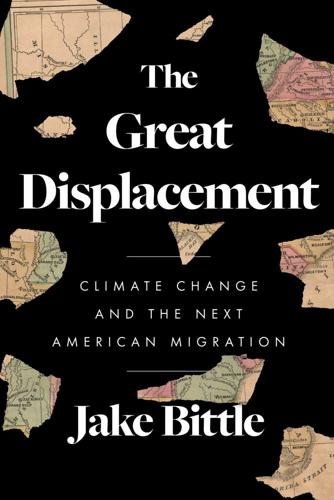
The Great Displacement: Climate Change and the Next American Migration
by
Jake Bittle
Published 21 Feb 2023
Kevin’s parents had come to the United States from Vietnam before Kevin was born, and to them Coffey Park was the very image of the American dream: the neighborhood was middle-class and diverse, with an active community of walkers in the central neighborhood park and an annual Fourth of July fireworks show. They appreciated the cute street names—Mocha, Sumatra, Cashew—and over the previous summer Kevin had struck up a friendship with a group of other twentysomething guys in the neighborhood who all played the popular augmented-reality game Pokémon Go. The home in Coffey Park was the first that Kevin’s parents had ever owned—they had previously lived on Section 8 vouchers—and Kevin’s mother was hesitant to leave it behind. She told Kevin she wanted to drive out of her neighborhood by herself, following him and his father in a separate car, but Kevin worried she would turn back and retrieve their photo albums from the house, so he made her drive with him.
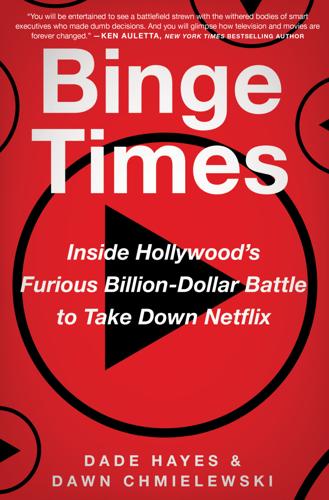
Binge Times: Inside Hollywood's Furious Billion-Dollar Battle to Take Down Netflix
by
Dade Hayes
and
Dawn Chmielewski
Published 18 Apr 2022
AT&T stores sold Thrones-themed cell phone cases. Company Twitter accounts joined the fray, tweeting things like, “Send a raven - they’re on to the #Elite8. #MarchMadness.” The tournament’s Final Four in Minneapolis featured a Thrones-themed shot contest, with replica props from the show on display. AT&T promised its augmented-reality technology would “bring game attendees into the Game of Thrones realm on the stadium’s video screen above center court.” The reality at Ziegfeld Ballroom could have used some augmentation. Partygoers retreated to their separate camps and did little mingling. Cast members, including breakout stars like Kit Harington and Emilia Clarke and better-known Hollywood names like Jason Momoa and Peter Dinklage, seemed by far the most ebullient, celebrating the show’s remarkable path.
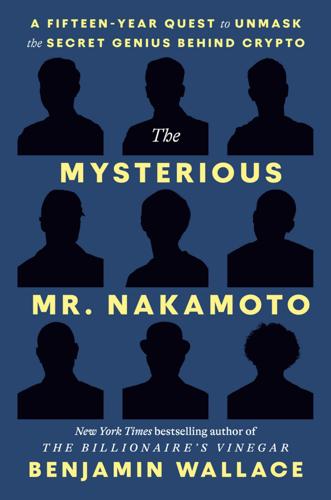
The Mysterious Mr. Nakamoto: A Fifteen-Year Quest to Unmask the Secret Genius Behind Crypto
by
Benjamin Wallace
Published 18 Mar 2025
During a break, I chatted with Philipp Schnell, a tall, German BSVer with a mischievous smile, whom I’d seen battling Bitcoiners on Twitter. “I do it a bit for fun and sport,” he said with a grin. When he’d first dabbled in crypto, buying various coins during the 2018 boom, he was working for an augmented-reality company in Scotland. Like many people, he found crypto perplexing at first. “I never understood, like, where does the value come from? You know, everyone’s like, ‘future of finance,’ with a wishy-washy kind of explanation. It was nothing concrete. And I think at the time, nothing really worked.

Careless People: A Cautionary Tale of Power, Greed, and Lost Idealism
by
Sarah Wynn-Williams
Published 11 Mar 2025
This seems particularly outrageous. What followed was years of exchanges and visits between Facebook and Chinese representatives hashing out the particulars of facial recognition, photo tagging, and other moderation tools. Briefings from Facebook’s experts about artificial intelligence, virtual reality, and augmented reality. Facebook invites Huawei—a company that’s widely accused of being a tool of Chinese government surveillance—to join Facebook’s Open Compute Project. Facebook offers to teach China about internet infrastructure, so Chinese companies can compete better with US firms like IBM and Cisco (Cisco’s the American company that built China’s internet firewall).

Machine, Platform, Crowd: Harnessing Our Digital Future
by
Andrew McAfee
and
Erik Brynjolfsson
Published 26 Jun 2017
In August of 2015 the web traffic analysis company Parse.ly released a report showing that across the major news and media sites it tracked, more viewers came via Facebook than from Google and other search engines. In March of 2016, Mark Zuckerberg unveiled the company’s ten-year road map, which included major initiatives in artificial intelligence, virtual reality and augmented reality, and even solar-powered airplanes to bring Internet access to millions of people who live far from any telecommunications infrastructure. How could companies that consisted of only an “indescribably thin layer” be having such an impact, and such success? As Goodwin observed, “Something interesting is happening.”

When Computers Can Think: The Artificial Intelligence Singularity
by
Anthony Berglas
,
William Black
,
Samantha Thalind
,
Max Scratchmann
and
Michelle Estes
Published 28 Feb 2015
However he then contradicted himself by hoping that the machine would be docile enough for it to tell us how to keep it under control. Saving us from ourselves. Owned WBlack Man and machine Man may eventually become one with his machines. My daughters are already one with their mobile phones. Augmented reality adds computer generated content to our view of the world. With Google Glass, for example, the computer sees everything that the wearer sees, as well as being able to project images onto the world that the user sees. When combined with facial recognition technology it promises to be very useful for remembering the names of acquaintances at parties, say.

What to Think About Machines That Think: Today's Leading Thinkers on the Age of Machine Intelligence
by
John Brockman
Published 5 Oct 2015
But the police are working on it; which cop wouldn’t want a Google Glass app that highlights those passersby who have a history of violence—perhaps coupled with W-band radar to see which of them is carrying a weapon? The next question is whether only the authorities will have enhanced cognition systems or if they’ll be available to all. In twenty years’ time, will we all be wearing augmented-reality goggles? What will the power relationships be? If a policeman can see my arrest record when he looks at me, can I see whether he’s been the subject of brutality complaints? If a politician can see whether I’m a party supporter or an independent, can I see his voting record on the three issues I care about?

User Friendly: How the Hidden Rules of Design Are Changing the Way We Live, Work & Play
by
Cliff Kuang
and
Robert Fabricant
Published 7 Nov 2019
That process—understanding user needs, prototyping solutions for them, then iterating upon feedback—would soon be adopted by other governments, including those of Finland, France, New York City, and Spain. 2013: HER, Spike Jonze Both a love story and a cautionary tale for how user-friendly technology might become embedded in our emotional lives, Her portrays a future in which computers have blended into the world around us, becoming both invisible and ubiquitous. 2013: DISNEY MAGICBAND/MYMAGIC+, John Padgett, Frog Design Disney’s MagicBand system augured a future in which the physical world would respond to our needs before we were even aware of them. The system was meant to be magical, eliminating the regular friction of daily life—keys, checkouts, lines—and in so doing, fulfill the expectations of a new generation weaned on smartphones. 2013: GOOGLE GLASS, Google Google, in a rush to bring augmented reality to market, failed to consider the embarrassment of wearing a computer wrapped around your face. Though its features were wonky, slow, and limited, the project of creating a digital overlay to the real world continues apace, in efforts such as Instagram’s face filters and Google Lens, which allows your smartphone camera to conduct information searches overlaid upon the real world. 2014: ALEXA, Amazon Quietly launched in 2014, Amazon’s smart speaker was a surprise consumer hit, quickly selling millions of devices and sparking a race among technology giants to make new conversational interfaces.
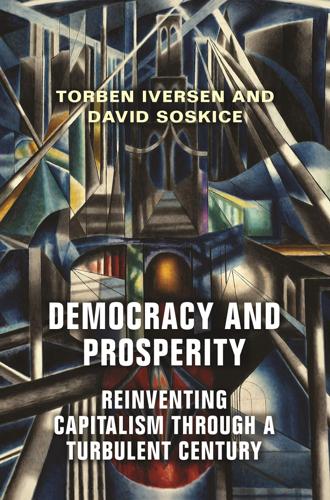
Democracy and Prosperity: Reinventing Capitalism Through a Turbulent Century
by
Torben Iversen
and
David Soskice
Published 5 Feb 2019
Starting with the first commercial computers in the late 1940s and propelled by the discovery of the microprocessor in 1971 and the development of the internet in the early- to mid-1990s, we will argue that it precipitated the painful and at times conflictual transformation of the advanced world from Fordism into contemporary knowledge economies.1 It has brought with it a whole range of further technological breakthroughs in the life sciences and biotechnology, in robotization and artificial intelligence, virtual and augmented reality, as well as in materials and nanotechnology, in sensor technology and mobile and cloud computing, and these have all fed on each other. Even so, short of major social or political dislocations we are likely only in the early stages of greater technological change (Rosenberg 2006; Brynjolfsson and McAfee 2013), which we discuss further in chapter 6.

Androids: The Team That Built the Android Operating System
by
Chet Haase
Published 12 Aug 2021
Graphics When people on the Android team say “graphics,” they may mean vastly different things, because there are many layers of graphics functionality that are implemented by very distinct teams for very different reasons. For example, there are 3D graphics systems using OpenGL ES,140 and more recently, Vulkan, for supporting anything from games to mapping applications to Virtual Reality to Augmented Reality. There are graphics capabilities in the UI toolkit, which is responsible for drawing things like text, shapes, lines, and images, so that application developers can populate their user interfaces with, well, graphics. And then there is the lowest level of graphics on the system which provides the fundamental capability for pixels and windows to appear on the screen.
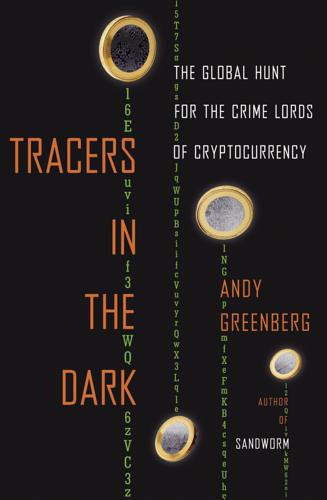
Tracers in the Dark: The Global Hunt for the Crime Lords of Cryptocurrency
by
Andy Greenberg
Published 15 Nov 2022
A subpoena to BitPay revealed the spender’s identity: an Akron, Ohio, man named Larry Harmon. Searching Harmon’s Google account revealed an incredible slipup. In 2014, not long after launching Helix, Harmon had taken a picture—perhaps accidentally—of the view of his work space with his Google Glass augmented reality headset, and then uploaded it to his Google Photos account. The photo showed his computer screen. He was logged in to Helix’s administrator control panel. In February 2020, IRS-CI raided Harmon’s properties and seized 4,400 bitcoins—worth more than $130 million at today’s exchange rates—as well as his mansion in Akron, a second home in Belize, and his Tesla.
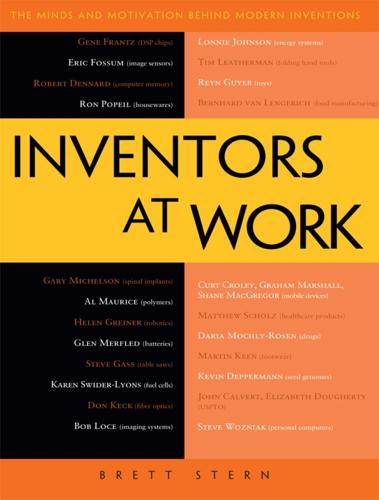
Inventors at Work: The Minds and Motivation Behind Modern Inventions
by
Brett Stern
Published 14 Oct 2012
Fossum: I’ll probably not live to see it, but I think that the whole area of implantable electronics into people is really at its earliest stage. Being able to see things that are happening remotely in your brain by accessing, let’s call it some sort of video stream, from afar, is going to have pretty important consequences for human evolution and society, so this kind of augmented reality is going to be quite interesting. I think that having these low-power, lifelike, image-capture capabilities and the ability to share that imagery between people or large numbers of people is going to be very, very important. I don’t know exactly how it’s going to turn out, but hopefully it will turn out for the better—as opposed to some sort of Big Brother thing.

City: A Guidebook for the Urban Age
by
P. D. Smith
Published 19 Jun 2012
In this ‘huge, participatory, high-tech athletics tournament’ (to quote the game’s designers, KMA), participants in Gateshead, Sunderland and Middlesbrough competed against each other in interactive ‘courts’ on to which lights were projected. Thermal-imaging technology was used to track players as they moved around the court during the ten-minute games and leagues were created showing the performance of each city with results posted on a website and on Twitter. As Augmented Reality apps become increasingly common for mobile phones, real-time MMORPGs – massively multiplayer online role-playing games – that mash up the virtual world with actual urban geography will be the city sports craze of the coming years.49 In the real rather than the virtual world, the most extreme and spectacular urban sport is one which does not just use the street but the walls and roofs of the buildings.
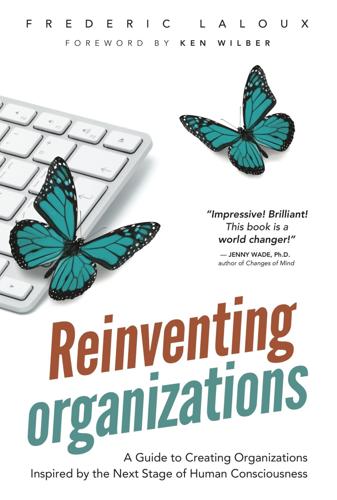
Reinventing Organizations: A Guide to Creating Organizations Inspired by the Next Stage of Human Consciousness
by
Frederic Laloux
and
Ken Wilber
Published 9 Feb 2014
Communal life, which gradually eroded with the advent of the (Achievement-Orange) industrial society, might be reinvented anew, both to respond to energy imperatives and in response to Teal’s yearning for deep and meaningful relationships. In parallel, through existing technology (the Internet and social networks) and perhaps through technology yet to be developed (universal and instant translation? Augmented reality videoconferencing? Telepathy?), we might interact with people far away without the need for traveling; friendships and interest networks might become truly global. In a strange paradox, society in the future could turn out to be at the same time much more local and much more global. The end of work as we know it Since the beginning of the Industrial Revolution, machines gradually replaced the muscle power of human laborers and horses.

Lonely Planet Barcelona
by
Isabella Noble
and
Regis St Louis
Published 15 Nov 2022
G ExperiènciaMUSEUM map Google map (%93 285 44 40; www.gaudiexperiencia.com; Carrer de Larrard 41; adult/child €9/7.50; h9.30am-7pm Apr-Sep, 11.30am-5pm Oct-Mar; mLesseps) A fun-filled Disney-style look at the life and work of Barcelona’s favourite son Gaudí, just a stone’s throw from Park Güell. There are models of Gaudí’s buildings and whizz-bang interactive exhibits and touchscreens (in multiple languages), but the highlight is the stomach-churning 4D augmented reality experience in a tiny screening room with moving chairs (not recommended for children under six or anyone with back or heart issues). TOP EXPERIENCE Admire the tilework at Casa Vicens A Unesco-listed masterpiece, this angular, turreted 1885-completed private house was Gaudí’s inaugural commission, when the architect was aged just 30, created for stock and currency broker Manuel Vicens i Montaner.
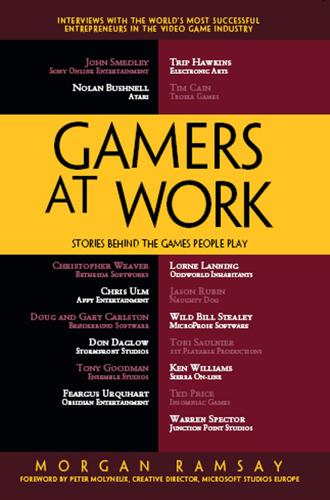
Gamers at Work: Stories Behind the Games People Play
by
Morgan Ramsay
and
Peter Molyneux
Published 28 Jul 2011
Games that are sold at retail need household name recognition because mass-market consumers are going to need to find them on crowded shelves, and these games rarely have large marketing budgets themselves. As a counterpoint, we’ve been working on games for the Nintendo 3DS. The household name recognition of an established brand isn’t so critical for a new platform, since there is less product. We can do more original titles and take a chance on cool emerging genres like augmented reality. I don’t expect that window of opportunity to stay open for long, but we try to take advantage of these openings because we know that consumers will take a chance on unknowns when there isn’t much competition from known brands. Ramsay: You mentioned games for education. Are serious games part of your offering?

Data and Goliath: The Hidden Battles to Collect Your Data and Control Your World
by
Bruce Schneier
Published 2 Mar 2015
the value of correlating different streams: Greg Weston, Glenn Greenwald, and Ryan Gallagher (30 Jan 2014), “CSEC used airport Wi-Fi to track Canadian travellers: Edward Snowden documents,” CBC News, http://www.cbc.ca/news/politics/csec-used-airport-wi-fi-to-track-canadian-travellers-edward-snowden-documents-1.2517881. display personal information: Alessandro Acquisti, Ralph Gross, and Fred Stutzman (4 Aug 2011), “Faces of Facebook: Privacy in the age of augmented reality,” Black Hat 2011, Las Vegas, Nevada, http://www.heinz.cmu.edu/~acquisti/face-recognition-study-FAQ/acquisti-faces-BLACKHAT-draft.pdf. software that correlates data: Scott Ellart (7 Dec 1999), “System and method for converting data between data sets (US 5999937 A),” US Patent and Trademark Office, http://www.google.com/patents/US5999937.

Ghost Fleet: A Novel of the Next World War
by
P. W. Singer
and
August Cole
Published 28 Jun 2015
Louis Magazine, February 22, 2012, accessed August 20, 2014, http://www.stlmag.com/What-its-Like-to-Sip-a-Century-Old-Champagne-From-a-Shipwreck/. 143 “article one, section eight”: “The Constitution of the United States: A Transcription,” National Archives, accessed August 20, 2014, http://www.archives.gov/exhibits/charters/constitution_transcript.html. 144 the graffiti: “Patent: Method and Apparatus for Creating Virtual Graffiti in a Mobile Virtual and Augmented Reality System, US 8350871 B2,” Google, January 8, 2013, accessed August 20, 2014, http://www.google.com/patents/US8350871. Also see http://grafiti.mobi/dig-graffiti-applications-and-tools-for-smes-and-users/. 146 first-generation Google Glass: “Google Glass: What It Does,” Google, accessed August 20, 2014, http://www.google.com/glass/start/what-it-does/. 148 passed the SIG Sauer P226 pistol: “Pistols — P226,” SIG Sauer, accessed August 20, 2014, http://www.sigsauer.com/catalogproductlist/pistols-p226.aspx. 151 The Versatrax 300: “Versatrax 300,” Inuktun, accessed July 24, 2014, http://www.inuktun.com/crawler-vehicles/versatrax-300.html. 156 old Defense Production Act: “The Defense Production Act of 1950, As Amended,” Department of Defense, accessed August 20, 2014, http://www.acq.osd.mil/mibp/dpac/final__defense_production_act_091030.pdf. 157 representing a sovereign wealth fund: “Sovereign Wealth Funds — Frequently Asked Questions,” February 27, 2008, European Commission, accessed August 20, 2014, http://europa.eu/rapid/press-release_MEMO-08-126_en.htm?
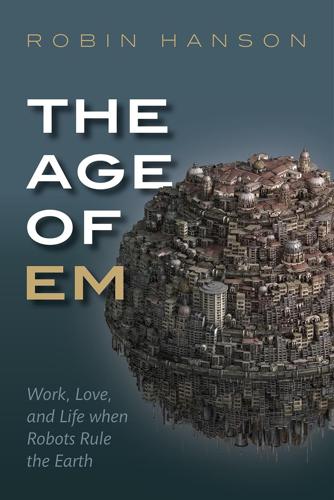
The Age of Em: Work, Love and Life When Robots Rule the Earth
by
Robin Hanson
Published 31 Mar 2016
Root-Bernstein, Robert, Lindsay Allen, Leighanna Beach, Ragini Bhadula, Justin Fast, Chelsea Hosey, Benjamin Kremkow, Jacqueline Lapp, Kaitlin Lonc, Kendell Pawelec, Abigail Podufaly, and Caitlin Russ. 2008. “Arts Foster Scientific Success: Avocations of Nobel, National Academy, Royal Society, and Sigma Xi Members.” Journal of Psychological Science and Technology 1(2): 51–63. Sabelman, Eric, and Roger Lam. 2015. “The Real-Life Dangers of Augmented Reality.” IEEE Spectrum (July): 51–53. Sahal, Devendra. 1981. Patterns of Technological Innovation. Addison-Wesley. Sailer, Steve. 2003. “Cousin Marriage Conundrum: The ancient practice discourages Democratic Nation-building.” The American Conservative, January 13, 20–22. Salvador, Fabrizio, Martin de Holan, and Frank Piller. 2009.

Army of None: Autonomous Weapons and the Future of War
by
Paul Scharre
Published 23 Apr 2018
As deputy secretary from 2014–17, Work was the driving force behind the Pentagon’s Third Offset Strategy and its focus on human-machine teaming. In his vision of future conflicts, AI will work in concert with humans in human-machine teams. This blended human-plus-machine approach could take many forms. Humans could be enhanced through exoskeleton suits and augmented reality, enabled by machine intelligence. AI systems could help humans make decisions, much like in “centaur chess,” where humans are assisted by chess programs that analyze possible moves. In some cases, AI systems may perform tasks on their own with human oversight, particularly when speed is an advantage, similar to automated stock trading.

Mastering Blockchain, Second Edition
by
Imran Bashir
Published 28 Mar 2018
Moreover, the possibility of combining intelligent Oracles, intelligent, smart contracts, and AAs will give rise to Artificially Intelligent Decentralized Autonomous Organizations (AIDAOs) that can act on behalf of humans to run entire organizations on their own. This is another side of AI that can become norm in the future. However, more research is required to realize this vision. Also, convergence of blockchain technology with other fields such as 3D printing, virtual reality, augmented reality, and the gaming industry is also envisaged. For example, in a multiplayer online game, blockchain's decentralized approach allows for more transparency and can ensure that no central authority is gaining unfair advantage by manipulating the game rules. All these topics are active areas of research currently and more interest and development are expected in these areas soon.

MacroWikinomics: Rebooting Business and the World
by
Don Tapscott
and
Anthony D. Williams
Published 28 Sep 2010
But collaborative networks, in contrast, encourage individuals themselves to directly and voluntarily publish granular data about themselves (tagged photos, preferences/settings/likes, friends’ lists, groups joined, etc.), short-circuiting the obligations of organizations to seek informed consent and to manage this data responsibly according to defined criteria. The integration of personal profiles on networks such as Facebook with myriad other sites, communities, and applications on the Web further undermines privacy. Toss in the emerging “augmented reality” tools where you point your mobile device at the street and it gives you real-time information about the world around you—everything from recognizing the faces of people nearby to letting you know about all the people on Twitter in your vicinity—and we can be sure that a ton of personal information about most of us is deeply and irrevocably embedded into the fabric of the Internet and instantly available to the world.
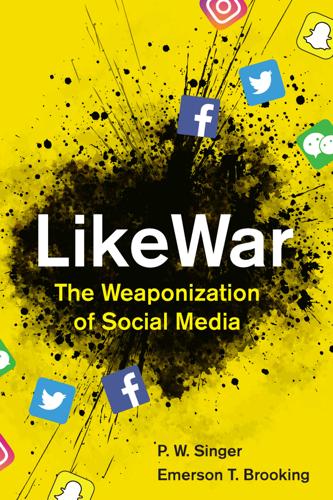
Likewar: The Weaponization of Social Media
by
Peter Warren Singer
and
Emerson T. Brooking
Published 15 Mar 2018
This all arguably started back in 2006, when Facebook rolled out a design update that included a small text box that asked a simple question: “What’s on your mind?” Since then, the “status update” has allowed people to use social media to share anything and everything about their lives they want to, from musings and geotagged photos to live video feeds and augmented-reality stickers. The result is that we are now our own worst mythological monsters—not just watchers but chronic over-sharers. We post on everything, from events small (your grocery list) to momentous (the birth of a child, which one of us actually live-tweeted). The exemplar of this is the “selfie,” a picture taken of yourself and shared as widely as possible online.

Nexus: A Brief History of Information Networks From the Stone Age to AI
by
Yuval Noah Harari
Published 9 Sep 2024
If they see a rock, that rock is made of bits in several computers.45 Just as intersubjective realities like money and gods can influence the physical reality outside people’s minds, so inter-computer realities can influence reality outside the computers. In 2016 the game Pokémon Go took the world by storm and was downloaded hundreds of millions of times by the end of the year.46 Pokémon Go is an augmented reality mobile game. Players can use their smartphones to locate, fight, and capture virtual creatures called Pokémon, which seem to exist in the physical world. I once went with my nephew Matan on such a Pokémon hunt. Walking around his neighborhood, I saw only houses, trees, rocks, cars, people, cats, dogs, and pigeons.

Against All Enemies
by
Tom Clancy
and
Peter Telep
Published 13 Jun 2011
Below lay the ruins of San Sebastián Church, whose steeples were long gone and whose yellowed and crumbling walls were spanned by deep cracks like veins. The upper edges near the rooftops were draped in moss and mold. Once they reached the summit of the tallest hill, Moore led them to a cluster of pines, where they crouched down. He activated his smartphone’s camera and thumbed on the ARS (augmented reality system) app that would turn the phone into a computer-enhanced imaging device by superimposing wire frames over the images and displaying data boxes that indicated the size and range of various structures and targets within his field of view. Additionally, the system tapped into real-time streaming data on the house where they’d taken Sonia and Miguel.

Valley of Genius: The Uncensored History of Silicon Valley (As Told by the Hackers, Founders, and Freaks Who Made It Boom)
by
Adam Fisher
Published 9 Jul 2018
It can actually include all your vision, if that’s what’s required. So MR is, I believe, the next step in how we interface with computers and information and people. It’s all going to be through mixed reality. And VR is a special case of mixed reality. Nolan Bushnell: All of this is on a continuum, and right now augmented reality is a little bit harder than virtual reality, technically. Steve Wozniak: Because of Moore’s law, we always have more bits and more speed to handle those more bits on the screen. Well, we now have finally gotten to the point where we have enough computer power that you can put the screen on your head, and it’s like you’re living in a different world, and it fools you.

Power and Progress: Our Thousand-Year Struggle Over Technology and Prosperity
by
Daron Acemoglu
and
Simon Johnson
Published 15 May 2023
When successful, as was Engelbart’s mouse and graphic user interface, new digital technologies can be what Steve Jobs referred to as “a bicycle for our minds” and expand human skills. Because this approach puts machine capabilities at the service of people, it tends to complement human intelligence. Although this approach has already generated notable benefits, much more can be done. Virtual- and augmented-reality tools hold tremendous promise to increase human capabilities in tasks such as planning, design, inspection, and training. But applications can go beyond technical and engineering jobs. The current consensus in the technology and engineering community is summarized by Kai-Fu Lee: “Robots and AI will take over the manufacturing, delivery, design and marketing of most goods.”

The Innovators: How a Group of Inventors, Hackers, Geniuses and Geeks Created the Digital Revolution
by
Walter Isaacson
Published 6 Oct 2014
Much of the first round of innovation involved pouring old wine—books, newspapers, opinion pieces, journals, songs, television shows, movies—into new digital bottles. But new platforms, services, and social networks are increasingly enabling fresh opportunities for individual imagination and collaborative creativity. Roleplaying games and interactive plays are merging with collaborative forms of storytelling and augmented realities. This interplay between technology and the arts will eventually result in completely new forms of expression and formats of media. This innovation will come from people who are able to link beauty to engineering, humanity to technology, and poetry to processors. In other words, it will come from the spiritual heirs of Ada Lovelace, creators who can flourish where the arts intersect with the sciences and who have a rebellious sense of wonder that opens them to the beauty of both.
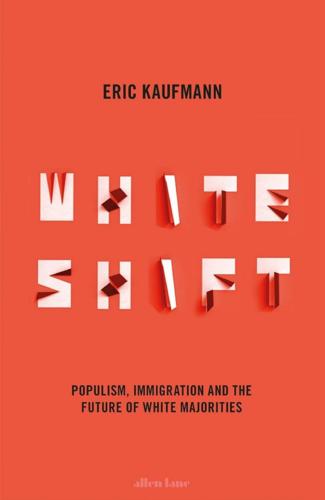
Whiteshift: Populism, Immigration and the Future of White Majorities
by
Eric Kaufmann
Published 24 Oct 2018
The tech magnate Elon Musk, a thought-leader in this area, claims that we may already be living in a simulation. ‘40 years ago we had Pong – two rectangles and a dot,’ Musk told an audience at a tech conference. ‘Now 40 years later we have photorealistic, 3D simulations with millions of people playing simultaneously and it’s getting better every year. And soon we’ll have virtual reality, we’ll have augmented reality … the games will become indistinguishable from reality.’26 As the West grows more diverse and white avoidance and hunkering down become impossible, might group-conscious whites ‘exit’ into a 1950s-style simulation of their countries? Could nationalists set their reality augmentation glasses to reveal an ethnically homogeneous world?

Four Battlegrounds
by
Paul Scharre
Published 18 Jan 2023
A GAO report found that 88 percent of DoD’s OTA contracts from 2016 to 2018 were with companies that did not traditionally work with DoD. OTAs also allow for the possibility of scaling up to large contracts with reduced potential for protests. When the Army contracted with Microsoft in 2021 to supply augmented reality headsets based on its HoloLens—a deal worth up to $22 billion—the Army used an OTA. These reform efforts are starting to pay off, and DoD has had some success in helping start-ups scale prototypes up to larger production contracts. In 2021, DIU helped AI start-up Anduril transition a prototype for an AI-based counter-drone system to a nearly $100 million OTA production agreement, which was later followed by a nearly $1 billion contract award from Special Operations Command.

Tools of Titans: The Tactics, Routines, and Habits of Billionaires, Icons, and World-Class Performers
by
Timothy Ferriss
Published 6 Dec 2016
So, as of right now, I’ve avoided VR investments. At some point (years out), the right mixture of power, size, price, and reality technology will combine into a device that will likely see mass adoption. But as of right now, I’m a pass. * * * [TF: Kevin did call the explosion of augmented reality (AR) months before Pokémon Go exploded, emphasizing that AR and VR are not the same thing. He was bullish on AR and very bearish on VR.] It’s important to note: I’m also a believer in objective data and using it to inform decisions, especially in later rounds of financing. But in the early stage, at the seed of an idea, the bet is largely based on the quality of the team and the emotional connection you feel with the product.

Homeland: The War on Terror in American Life
by
Richard Beck
Published 2 Sep 2024
When he is safely returned to the States, the first thing Stark requests is “an American cheeseburger.”[50] Then he builds the real suit. Made out of gold and titanium and painted with red highlights, the suit can shoot lasers out of its hands and precision-guided missiles out of its shoulders. Its visor includes an augmented-reality display that keeps Stark informed on enemy positions, damage sustained, power levels, and biometrics. It moves at blinding speed and lends Stark superhuman strength. Iron Man includes a thin plot about the dangers of weapons proliferation, but the movie’s focus, the reason people watch it, is Tony’s relationship with the suit.

The Transhumanist Reader
by
Max More
and
Natasha Vita-More
Published 4 Mar 2013
After answering that question, Goertzel concludes by laying out the risks and rewards of advanced AGI. Writing just a couple of years after the introduction of the World Wide Web in 1990, former MIT researcher Sasha Chislenko projected technological trends to see how we might use intelligent information filters and enhanced reality (now called “augmented reality”) to expand our perceptual and cognitive abilities and to personalize our view of reality. He makes some observations and predictions of the transformations in people’s perception of the world and themselves in the course of this technological change. Since Chislenko wrote this essay, we have begun to see the idea being introduced in reality, with early versions of the technology being built into smartphones and heads-up displays on some car windshields.

Moon Prague, Vienna & Budapest: Palaces & Castles, Art & Music, Coffeehouses & Beer Gardens
by
Jennifer D Walker
,
Auburn Scallon
and
Moon Travel Guides
Published 15 Oct 2024
Today you’ll find a pathological museum in the claustrophobic rooms and tight circular corridor of the infamous tower. The ground floor gives you an overview of the collection, with 19 exhibition rooms remodeled in 2020 to make the collection more sensitive to the topic at hand and to incorporate modern interactive stations, like an augmented reality station that lets visitors take a peek inside their own bodies. You’ll find a curious collection covering the history of disease and pathology, with waxworks of skin diseases, body parts plagued by tumors, a first-aid kit dating back to the 16th century, and 18th-century textbooks. The first five rooms cover the history of the collection and pathology up to the 21st century.
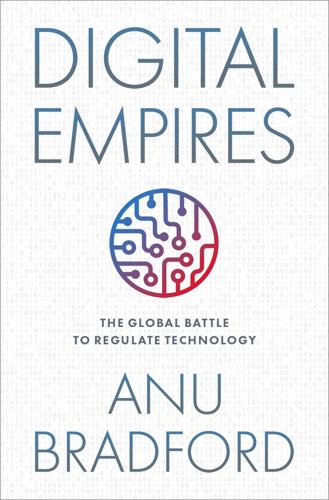
Digital Empires: The Global Battle to Regulate Technology
by
Anu Bradford
Published 25 Sep 2023
Chinese AI companies are able to harness an unparalleled amount of data generated by the country’s vast consumer market, which is both digitally connected and subject to extensive online surveillance.175 China also benefits from its fiercely effective culture of copying, which may not generate AI breakthroughs but gives China a leg up in refining new commercial applications from existing AI technologies.176 The Chinese private sector’s AI development also benefits from extensive government support.177 Riding on these enabling features of the Chinese AI environment, the big Chinese tech companies are already today leading in AI developments, with Baidu excelling in automated driving, Alibaba in AI cities, and Tencent in smart medicine and health. And more is expected: China’s 2017 AI Development Plan highlights several industries that China will “forcefully develop,” ranging from smart robots and vehicles to virtual and augmented reality.178 The AI race is consequential because of the economic stakes involved. But the stakes are also high for political and ideological reasons. China is known for developing AI applications to pursue authoritarian surveillance, thus compromising individual rights and freedoms. In 2021, White House National Security Advisor Jake Sullivan emphasized this tendency, stating that “the US and its allies must continue to lead in AI . . . and other emerging tech to ensure that these technologies are safe, secure, and beneficial to free societies.”179 Yet a third reason the US cares deeply about the AI race is the contributions that AI can make to military power.

The Rough Guide to Wales
by
Rough Guides
Published 14 Oct 2024
Alice in Llandudno Alice Liddell, the inspiration for Lewis Carroll’s Alice in Wonderland, apparently enjoyed her childhood holidays here, and the town has been exploiting the tenuous connection ever since David Lloyd George unveiled a White Rabbit statue in 1933. More recently, a walking trail has been created that takes in various town sights and Wonderland-related sculptures, with 39 stops in all; the tourist office (see page 317) sells maps, or you can download an augmented reality version at www.alicetowntrails.co.uk. The pier North Parade, LL30 2LP • Daily: summer 9am–10pm; winter 9am–6pm • Free • https://www.llandudnopier.com/ The embodiment of Llandudno’s ornate Victoriana, the pier remains a thing of joy. The longest in Wales at just under half a mile, it ticks all the requisite boxes: booths selling holiday essentials, from ice cream to buckets and spades, candy floss to shell ornaments; a splendid pavilion where brass bands once played, now home to coin-pusher games; excited kids; and a few old boys fishing for mackerel at the end.

The Year's Best Science Fiction: Twenty-Sixth Annual Collection
by
Gardner Dozois
Published 23 Jun 2009
I decide that it’s time to ask the Big Dog to bark. My helmet laser casts a one-nanosecond prayer of light at the indigo sky: just enough to deliver one quantum bit up there into the Wild. Then we wait. My tail wags and a low growl builds up in my belly. Right on schedule, it starts to rain red fractal code. My augmented reality vision goes down, unable to process the dense torrent of information falling upon the necropolis firewall like monsoon rain. The chained aurora borealis flicker and vanish. “Go!” I shout at the cat, wild joy exploding in me, the joy of running after the Small Animal of my dreams. “Go now!” The cat leaps into the void.